Închide
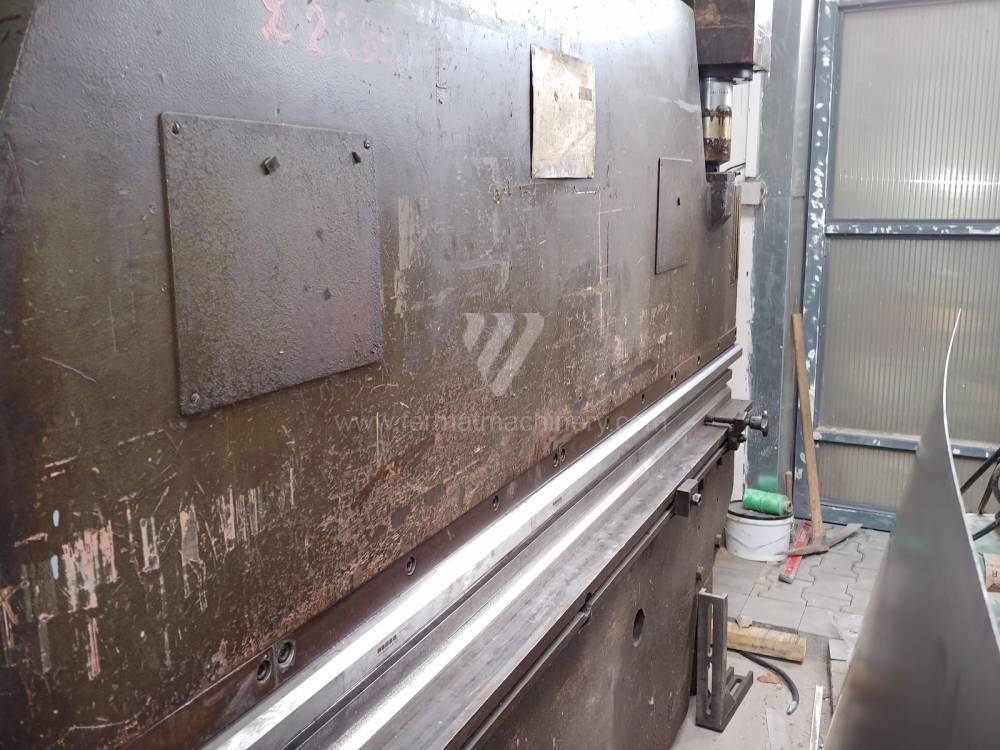
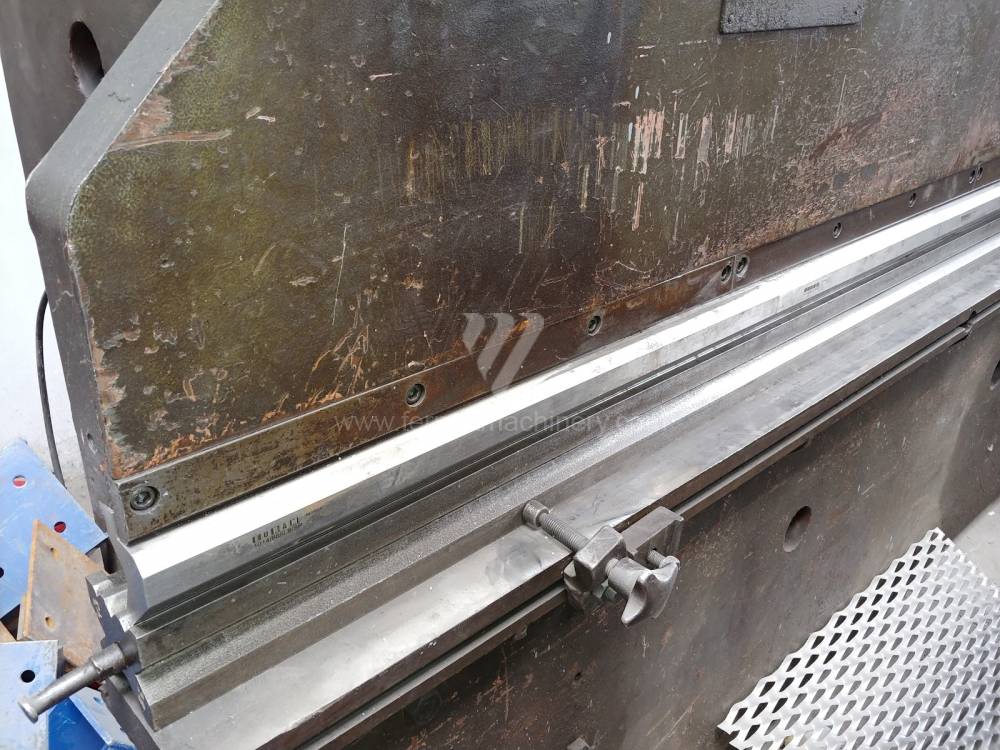
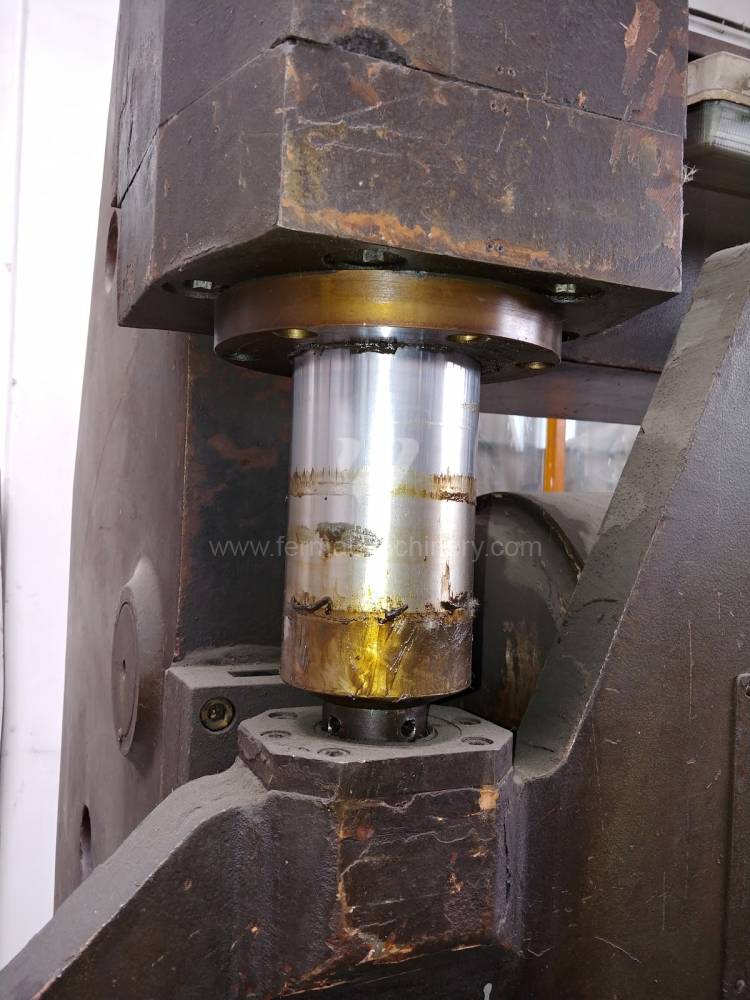
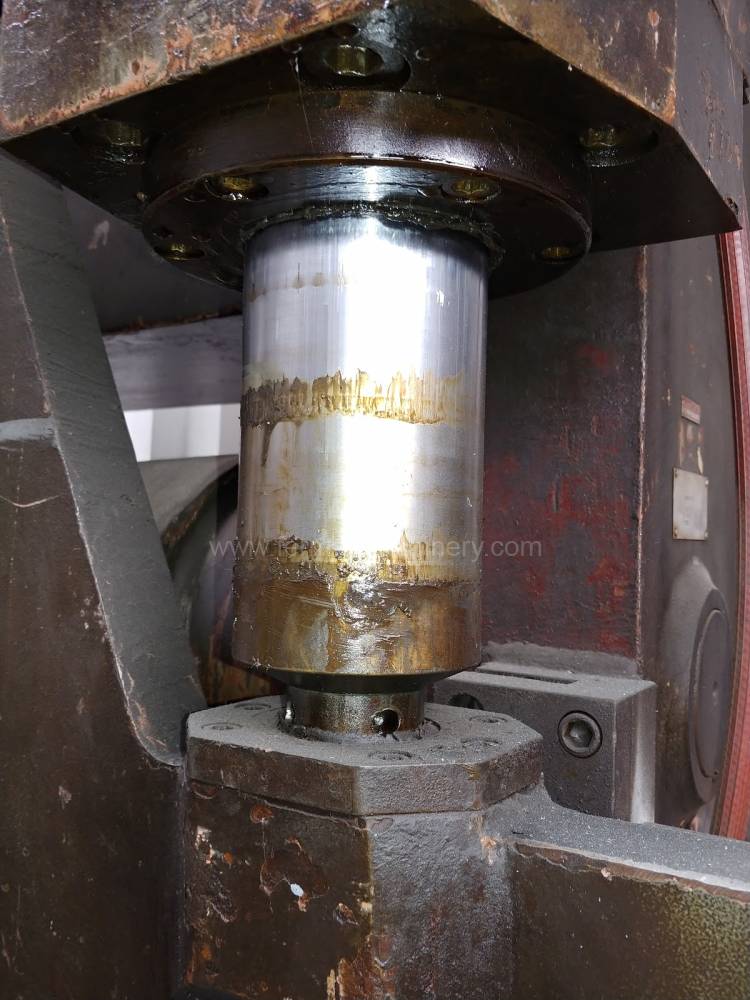
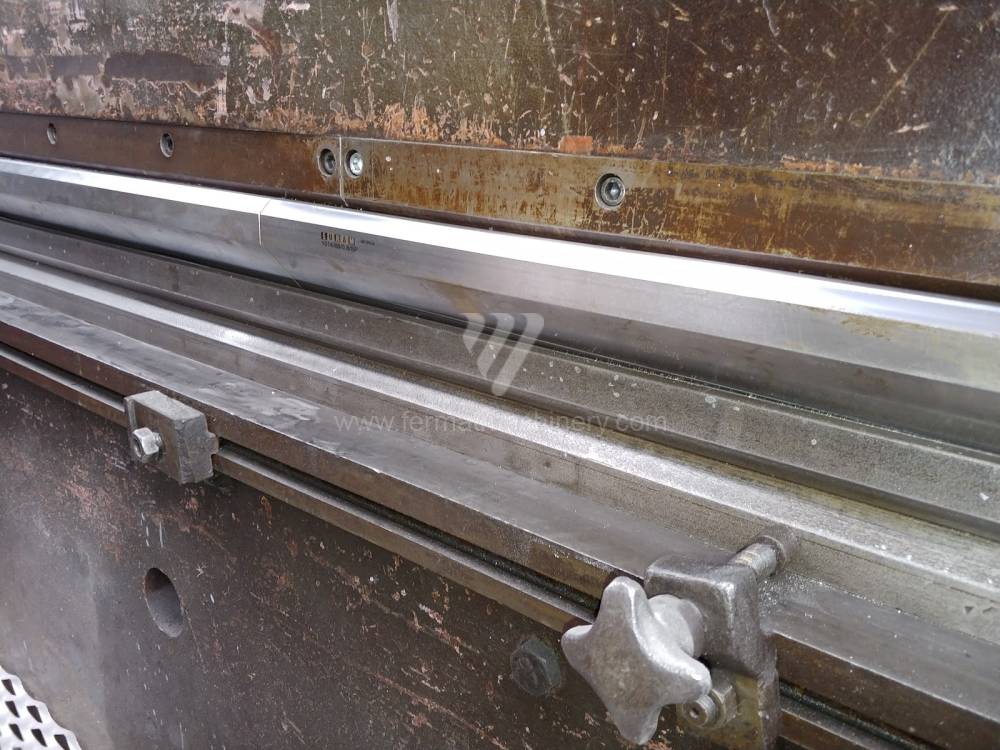
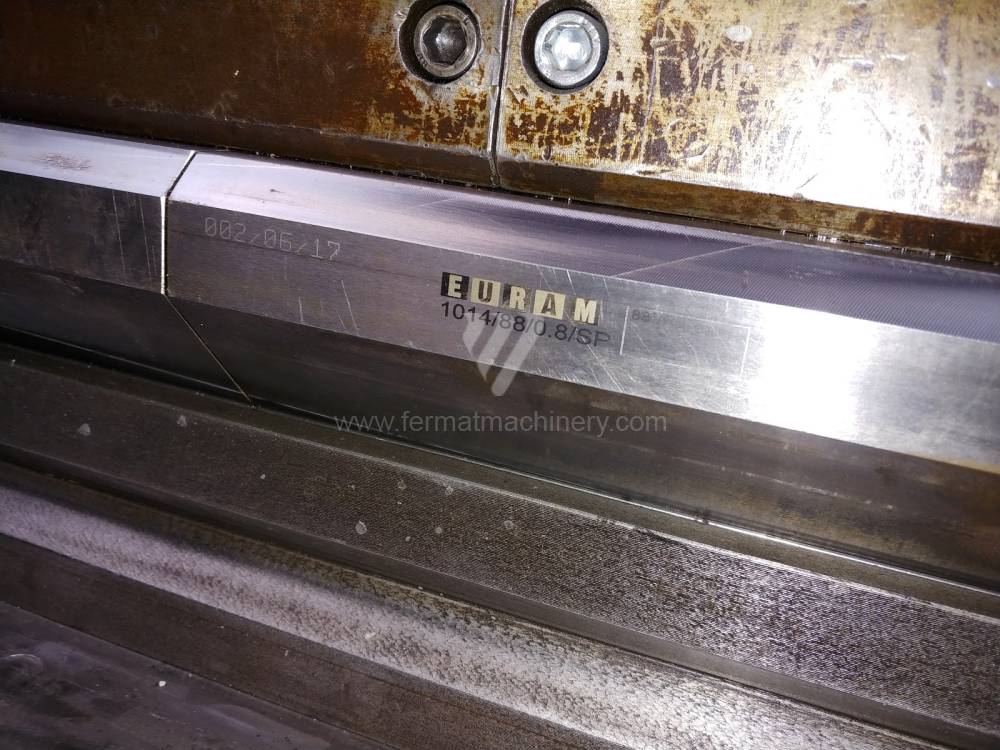
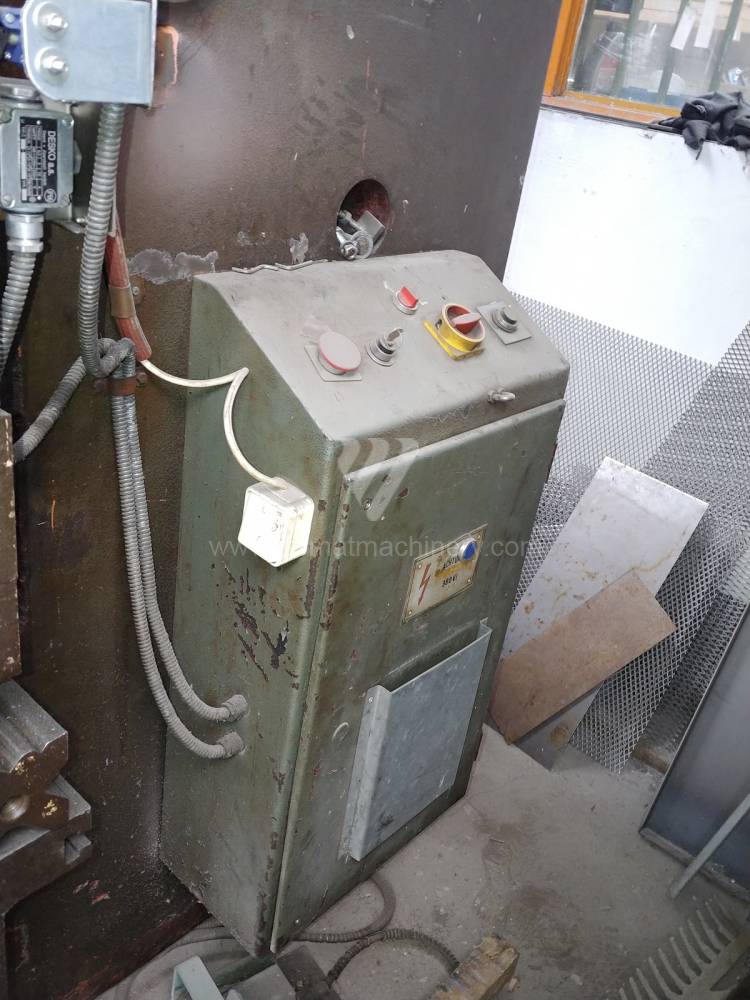
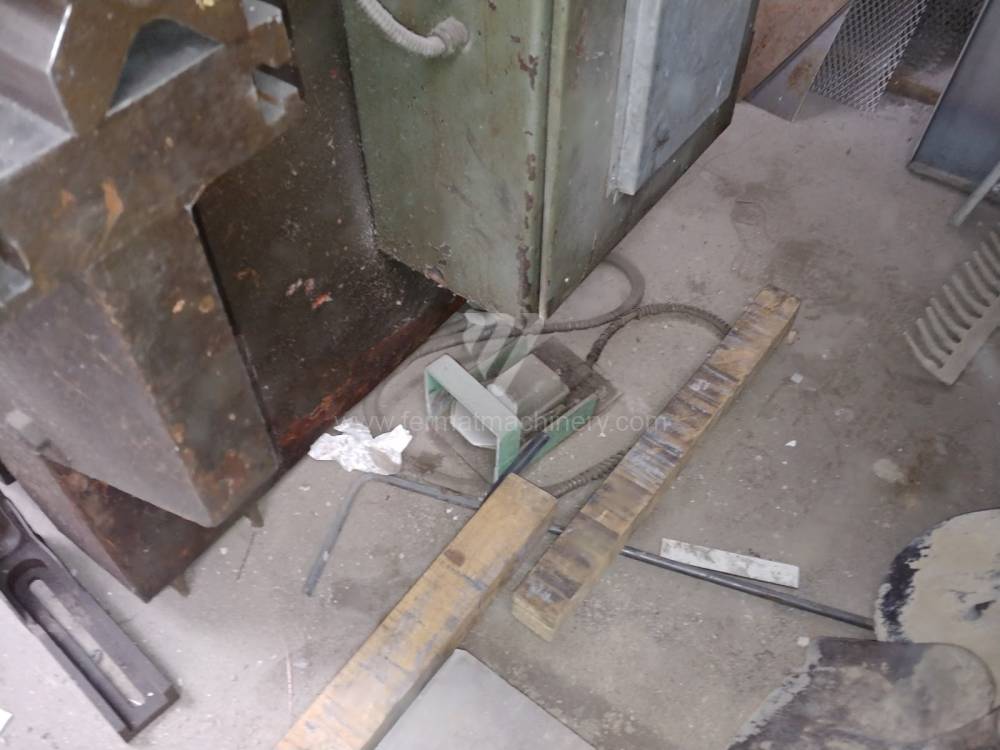
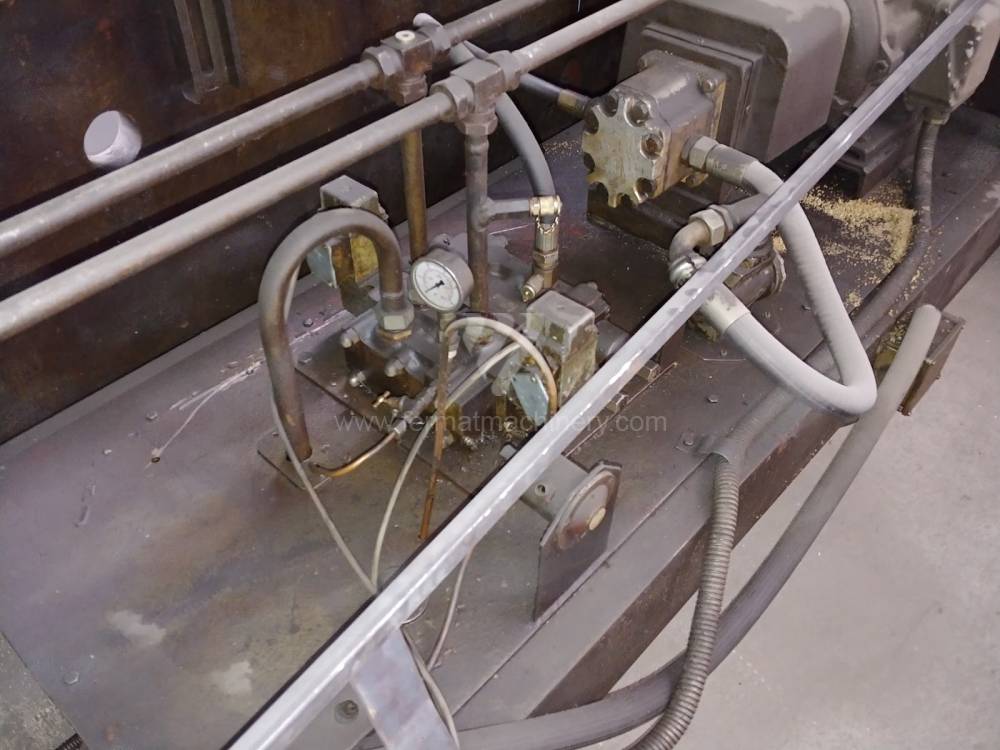
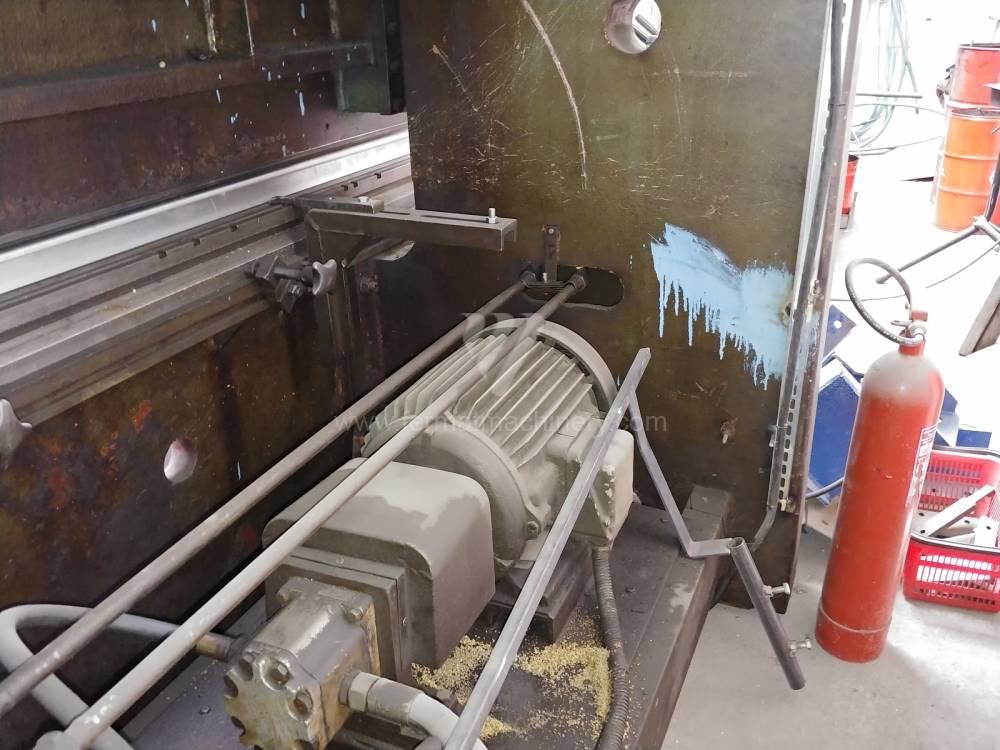
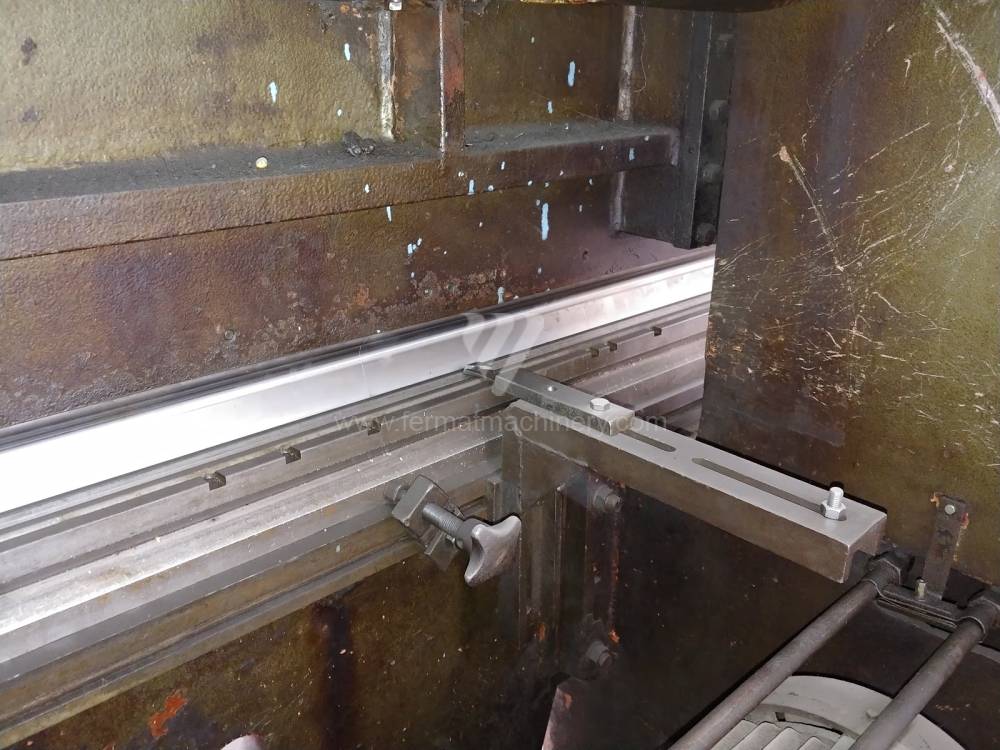
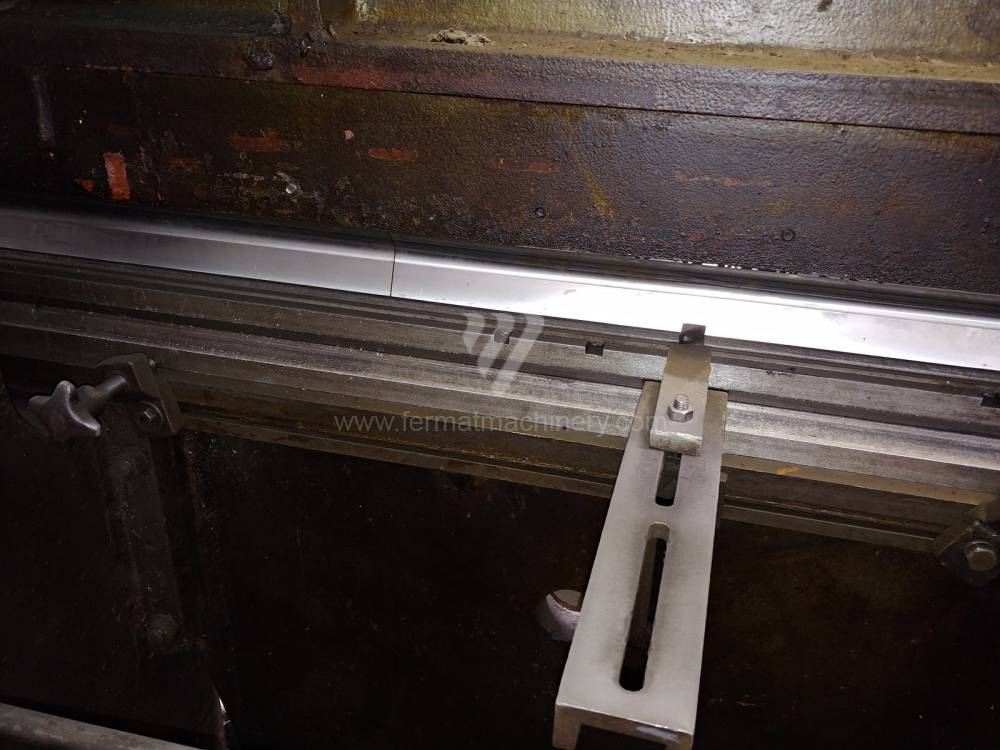
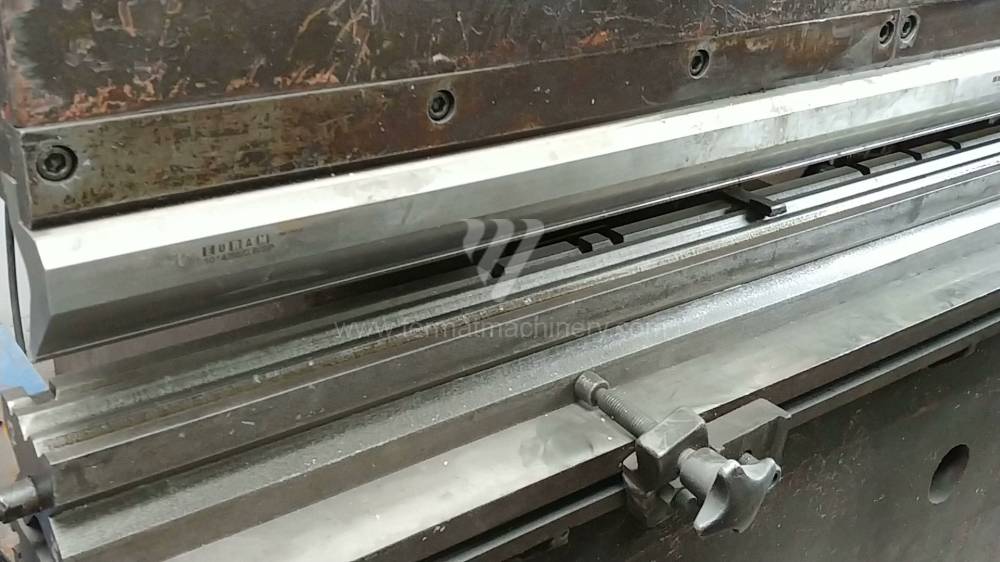
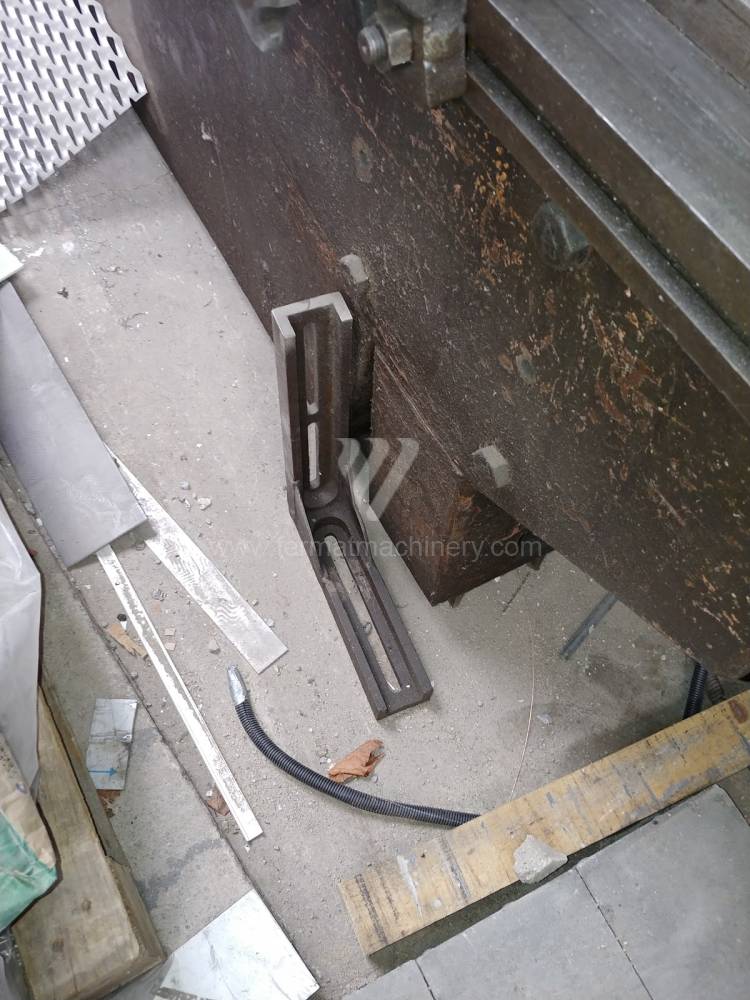
An fabricație:1976
Puterea de indoire: 100 t
Lungimea de indoire: 3000 mm
Tipul acționării presei: Hydraulický
Puterea motorului principal: 17 kW
Dimensiunile mașinii L x l x Î: 3000 x 1170 x 2410 mm
Geutatea mașinii: 7500 kg
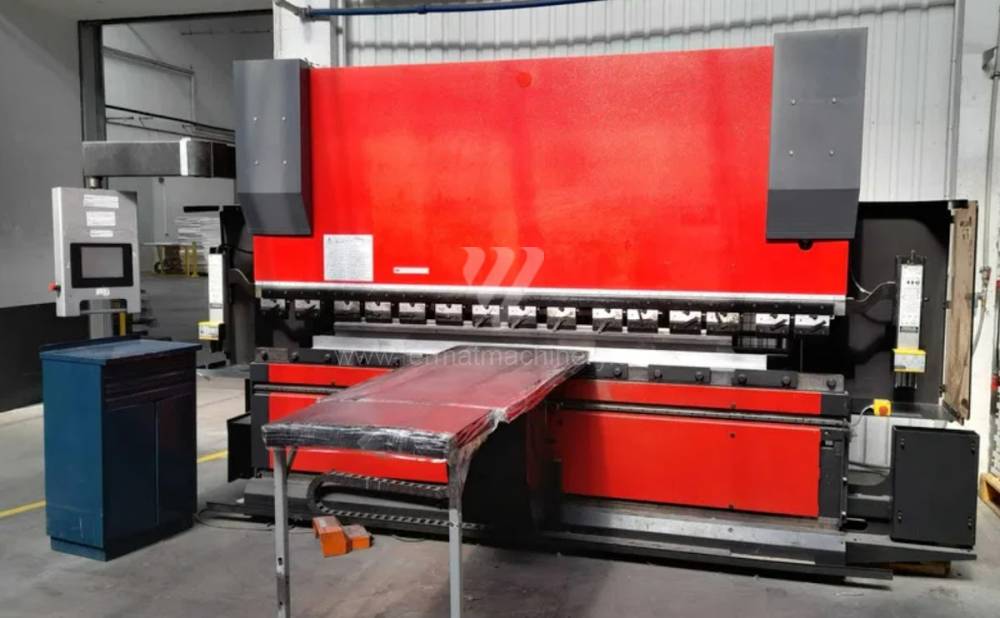
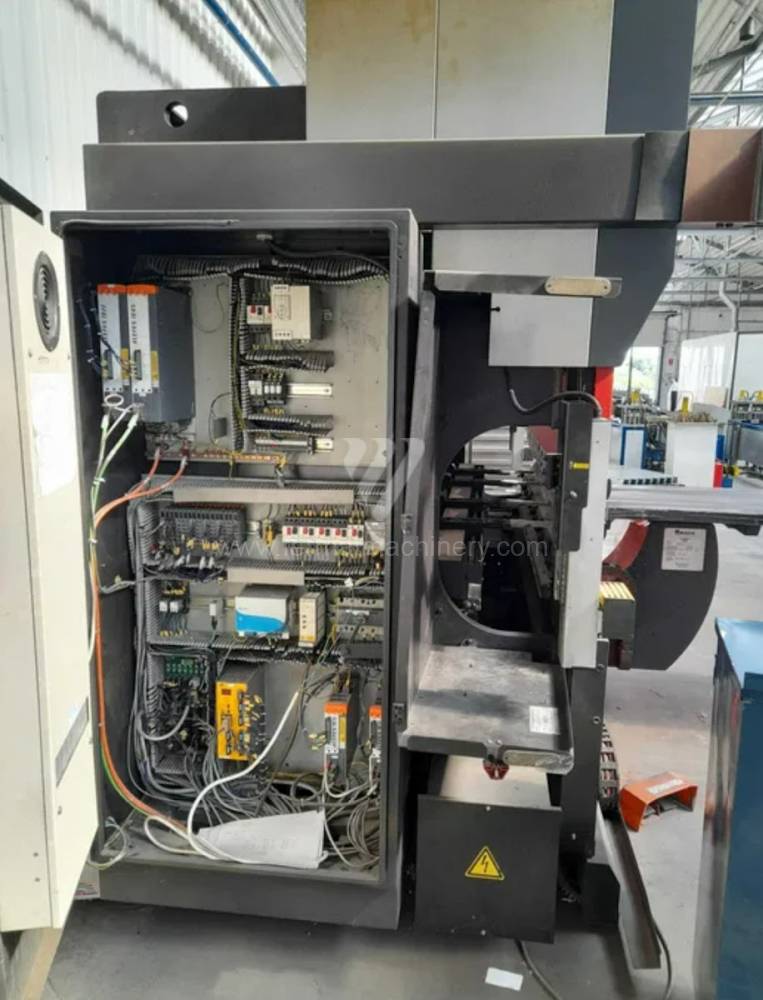
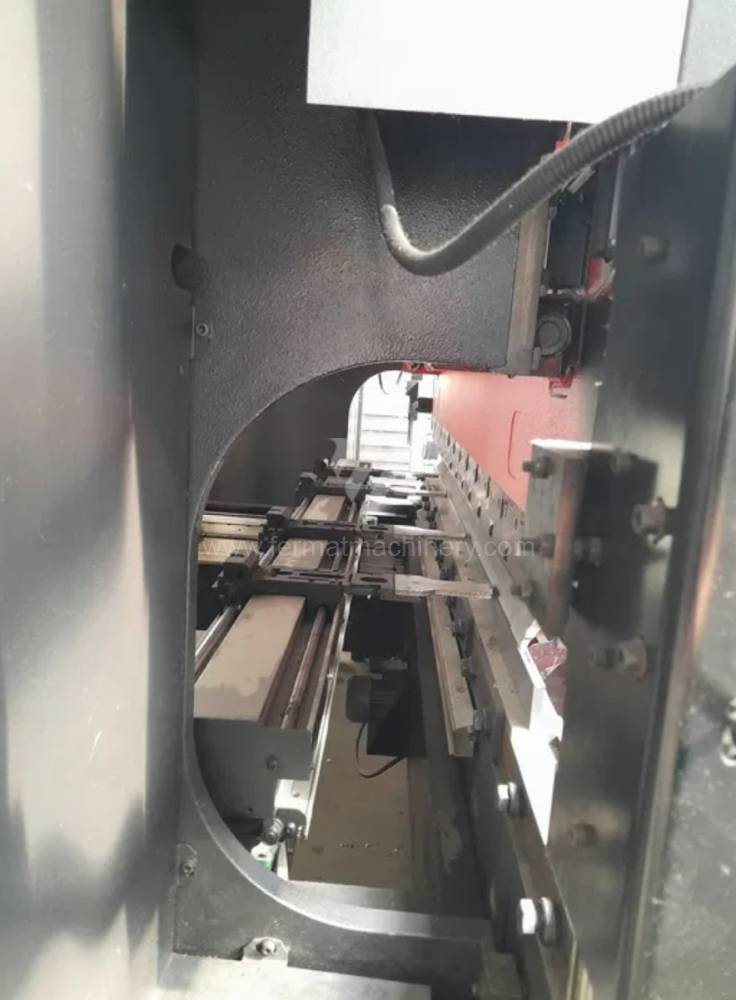
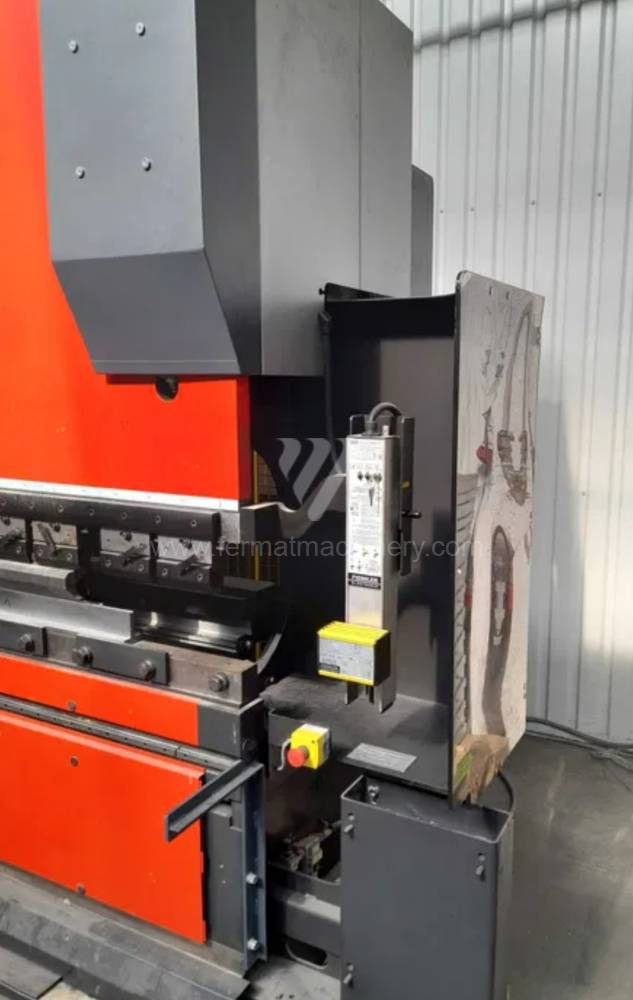
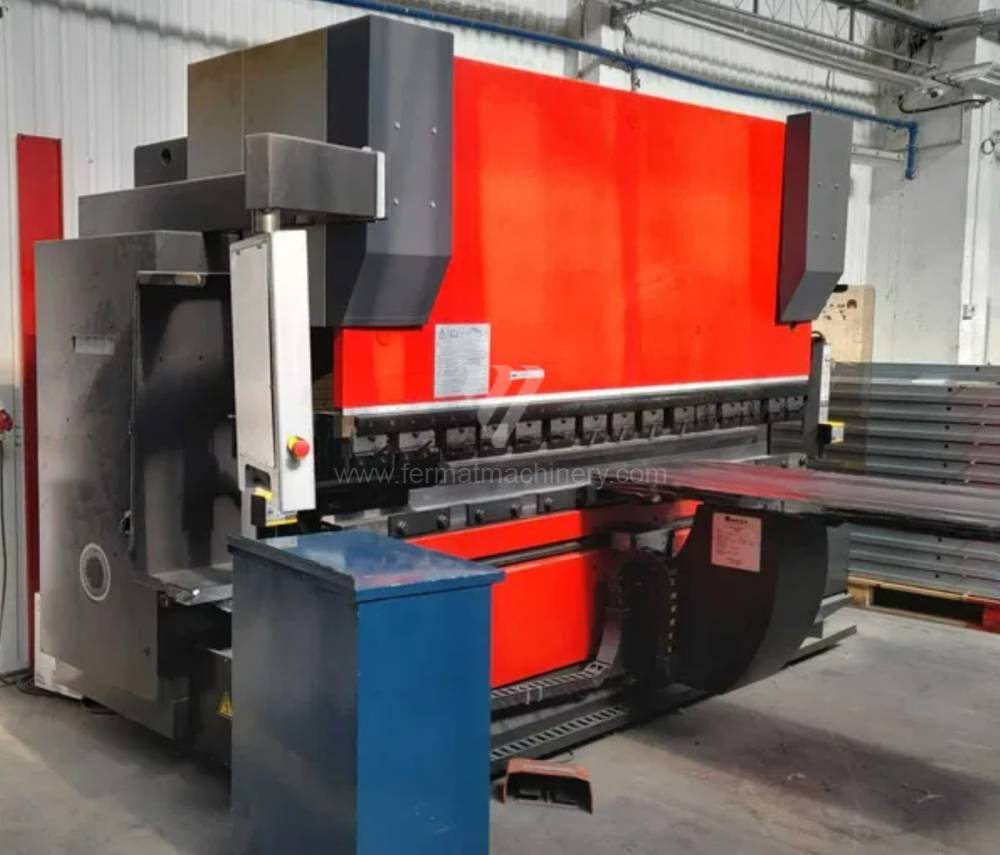
An fabricație:2012
Sistem de control Amada:
Puterea de indoire: 100 t
Lungimea de indoire: 3110 mm
Numărul axelor acționate: 7
Compensația deformării inferioare: da
Tipul acționării presei: Hydraulický
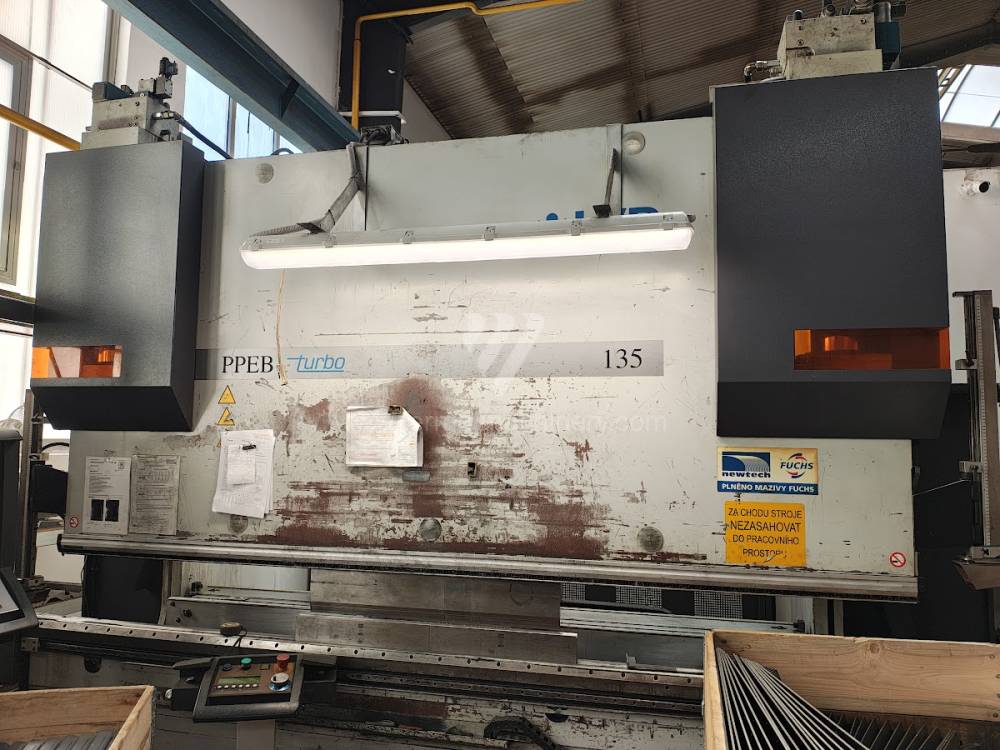
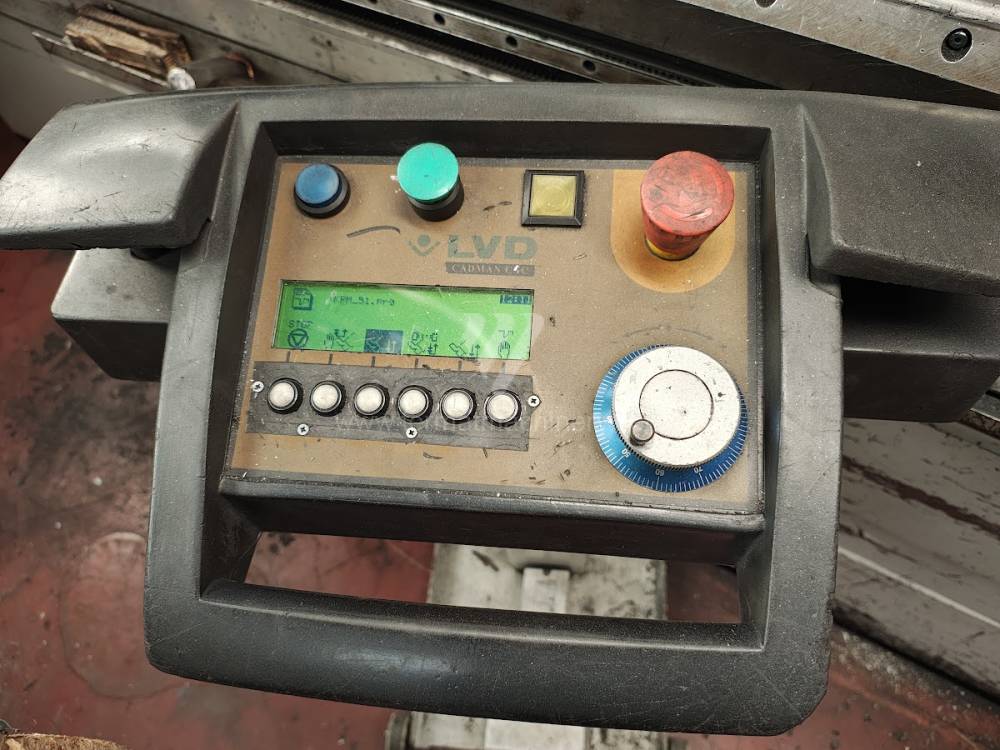
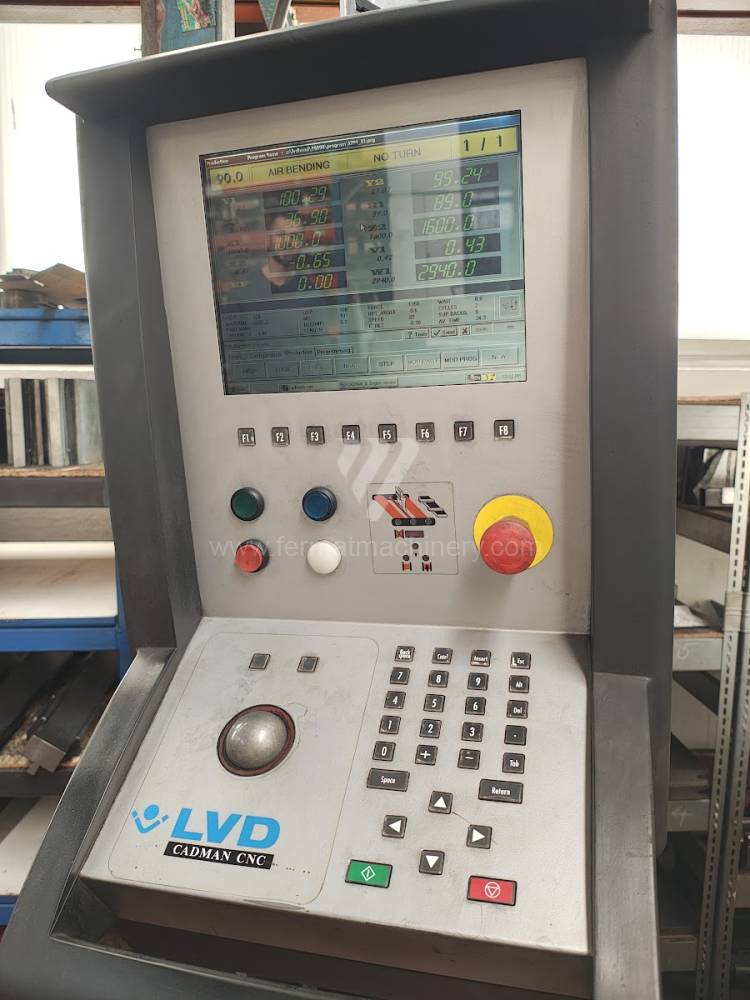
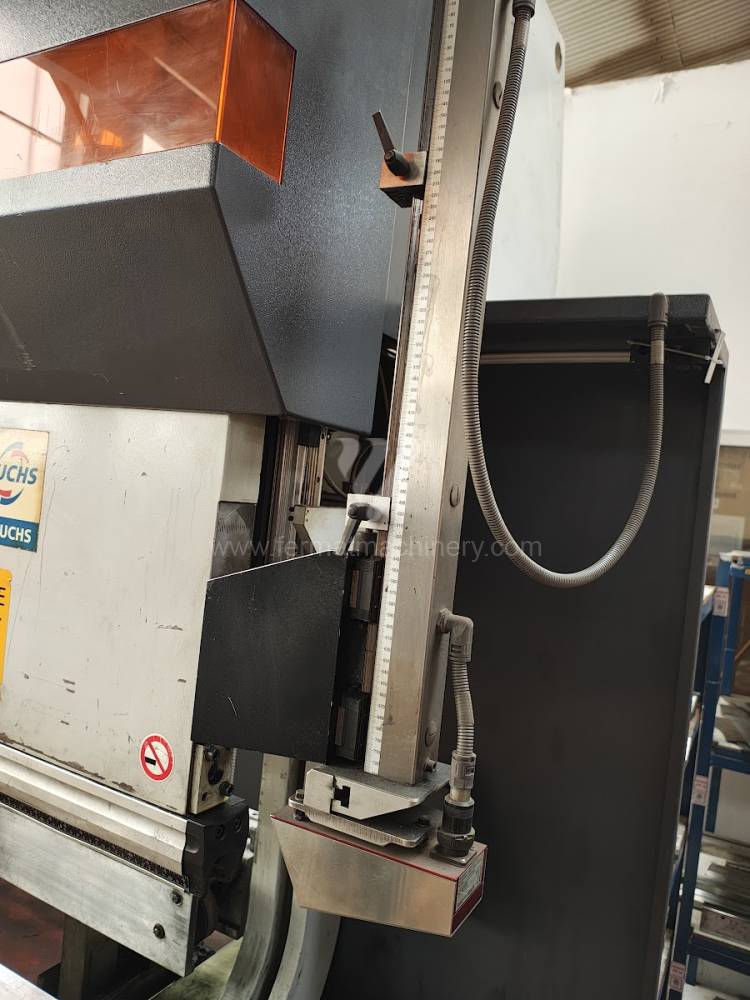
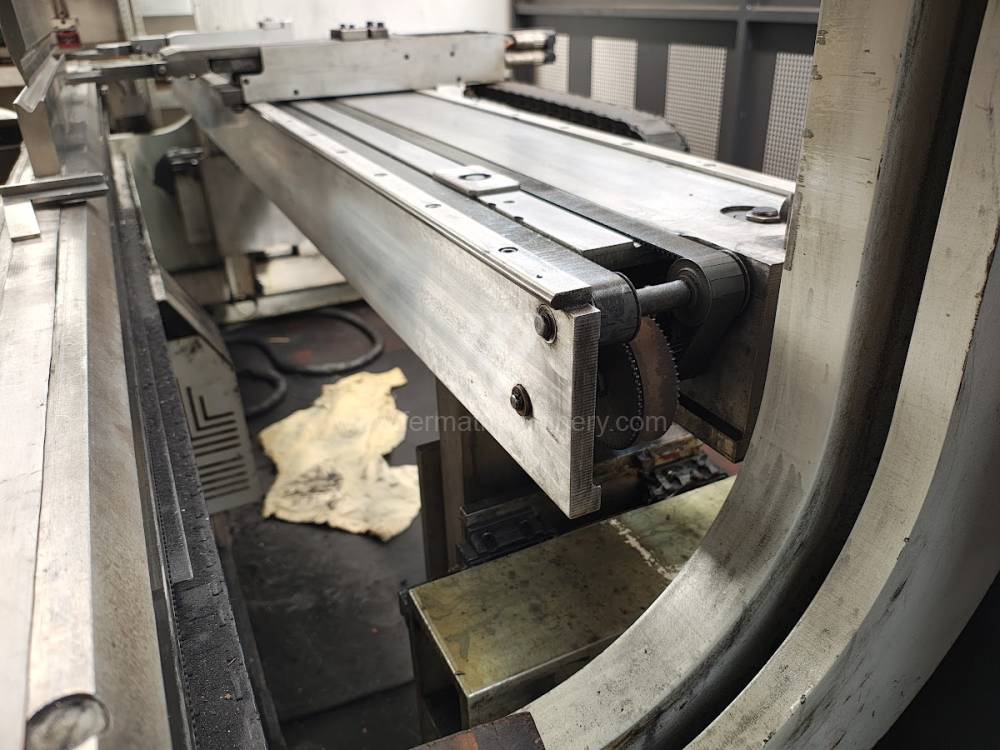
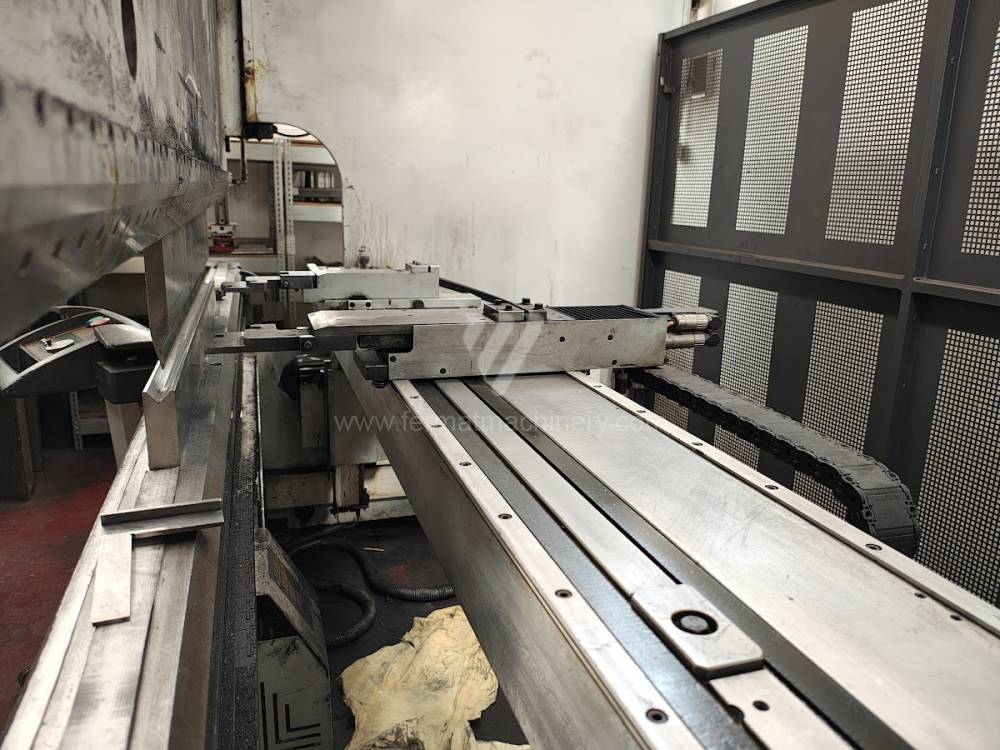
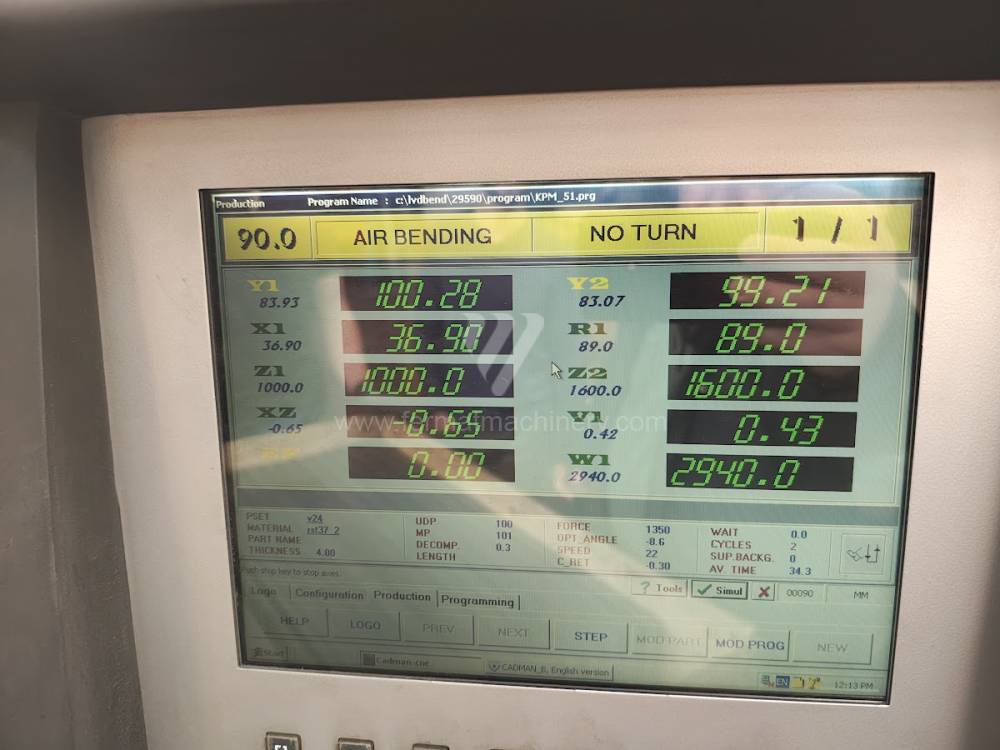
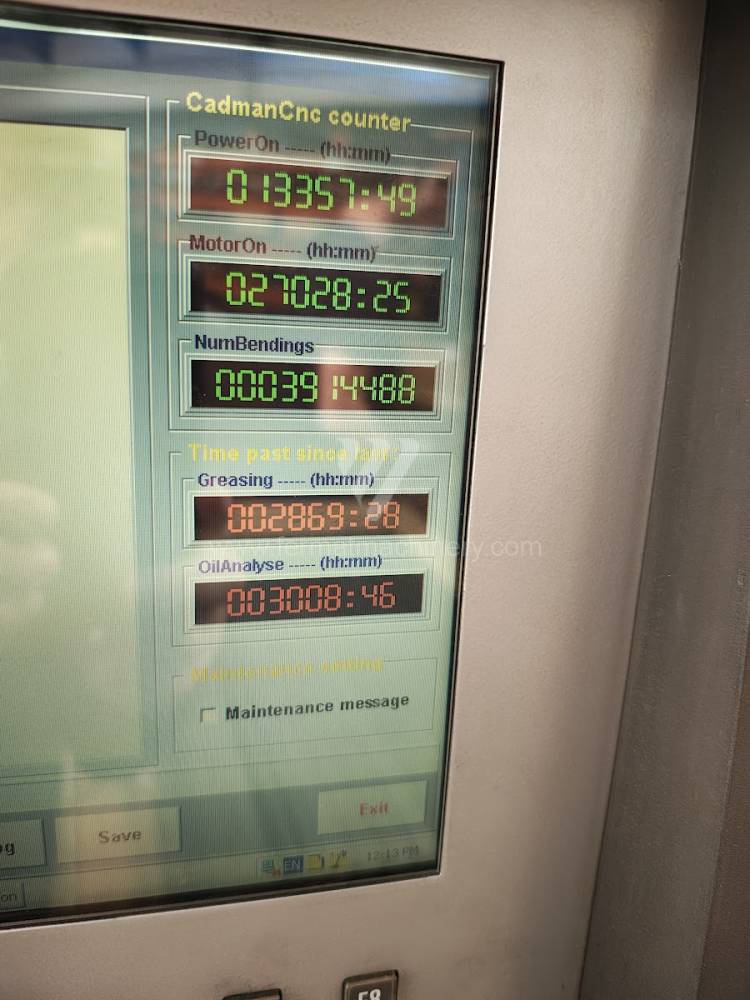
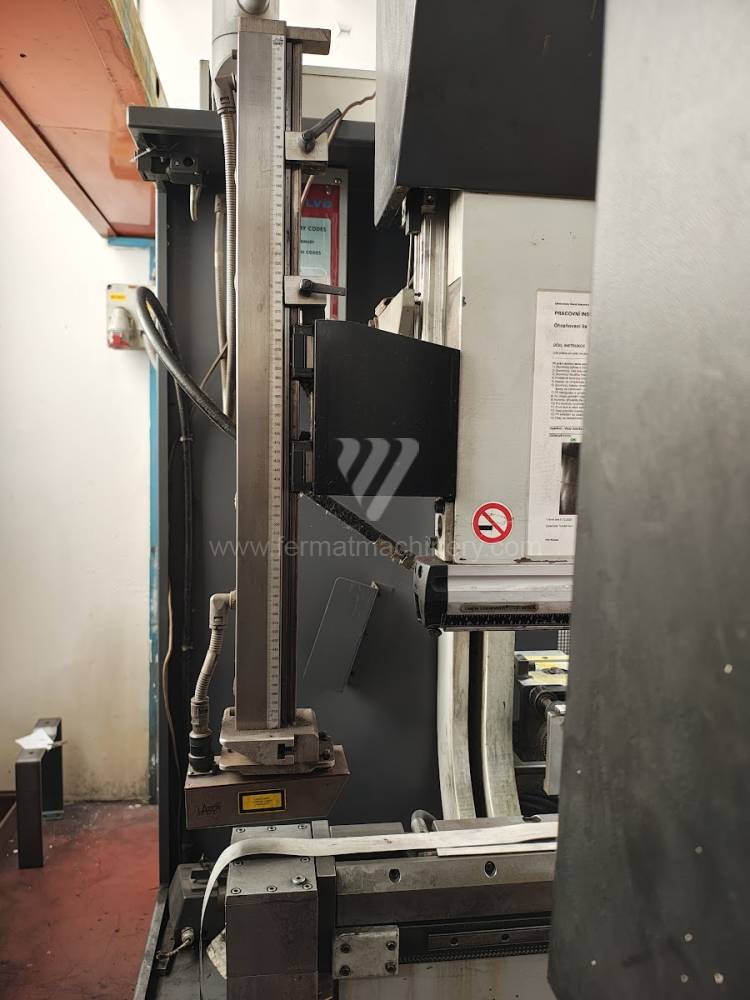
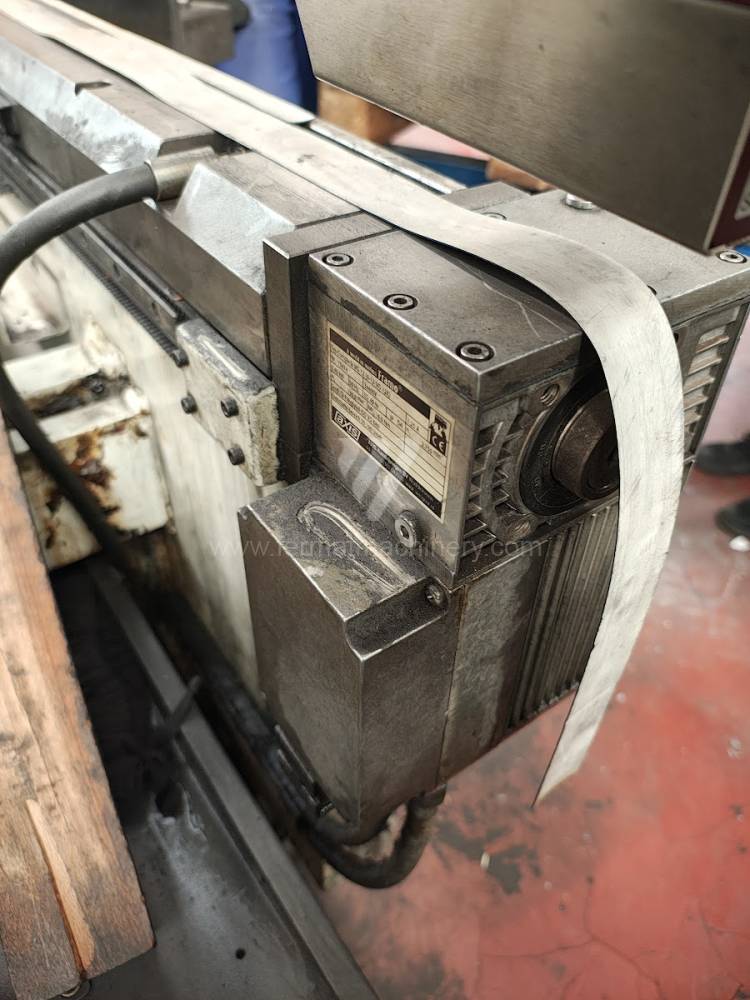
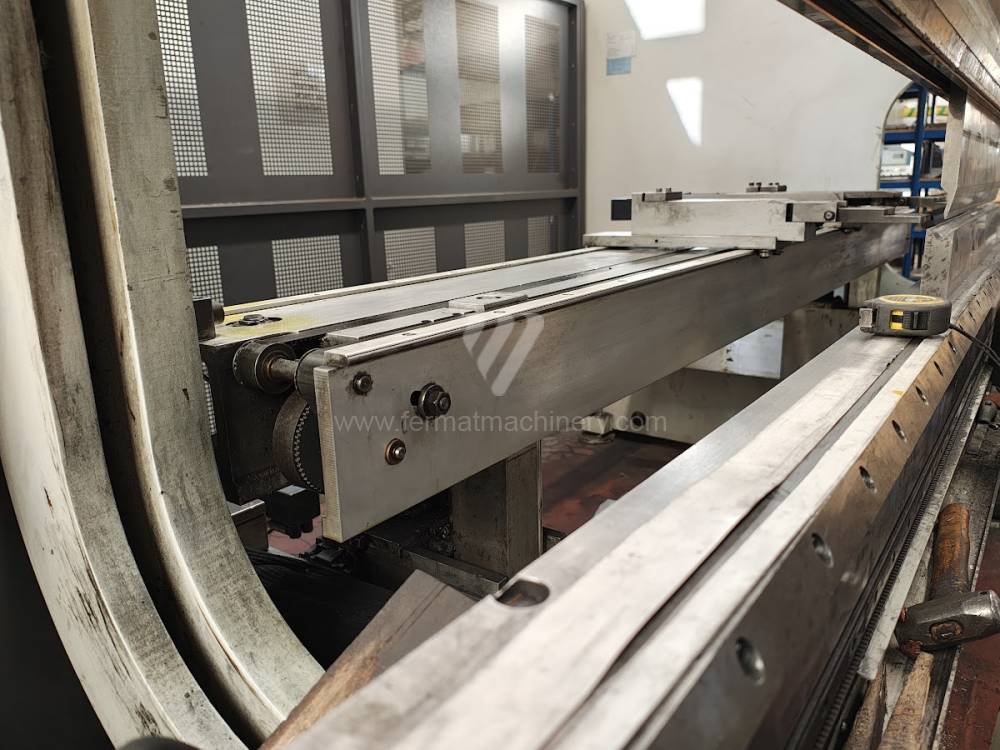


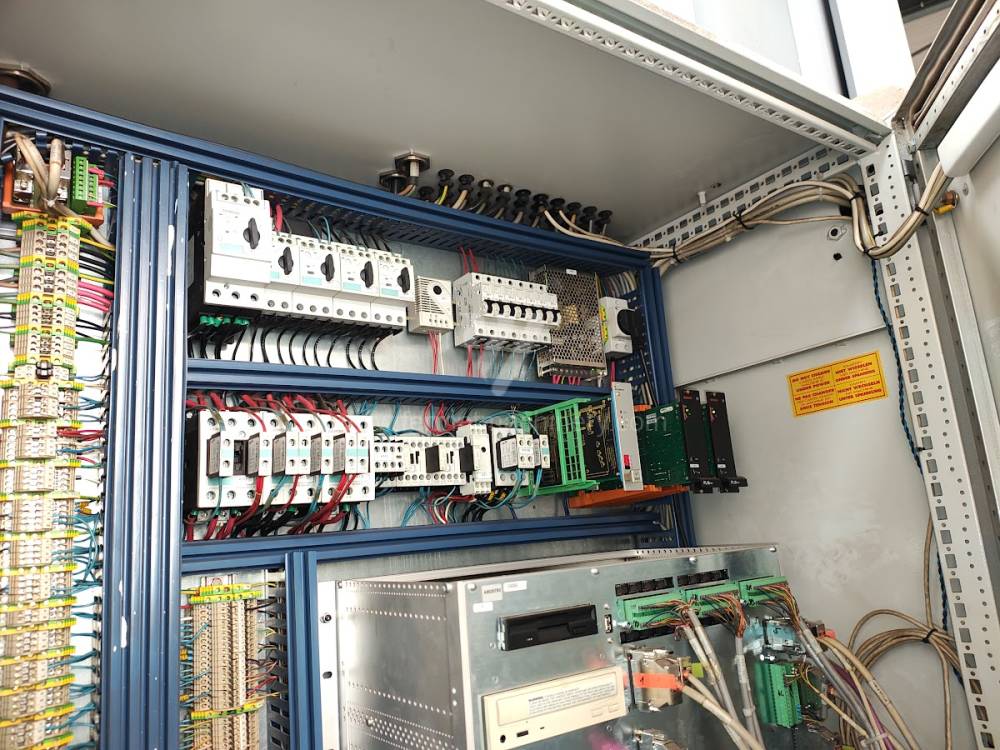

An fabricație:2004
Sistem de control LVD: CADMAN
Puterea de indoire: 135 t
Lungimea de indoire: 3000 mm
Numărul axelor acționate: 5
Compensația deformării inferioare: da
Tipul acționării presei: Hydraulický
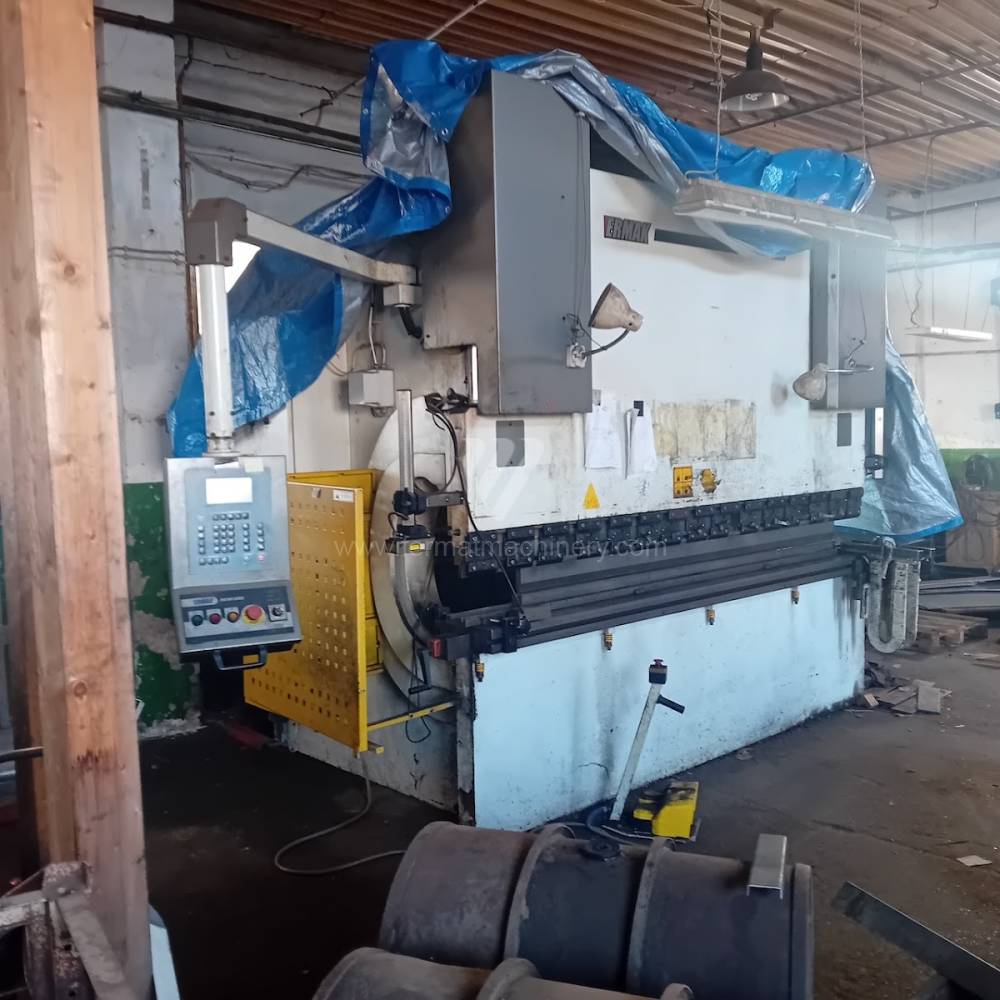
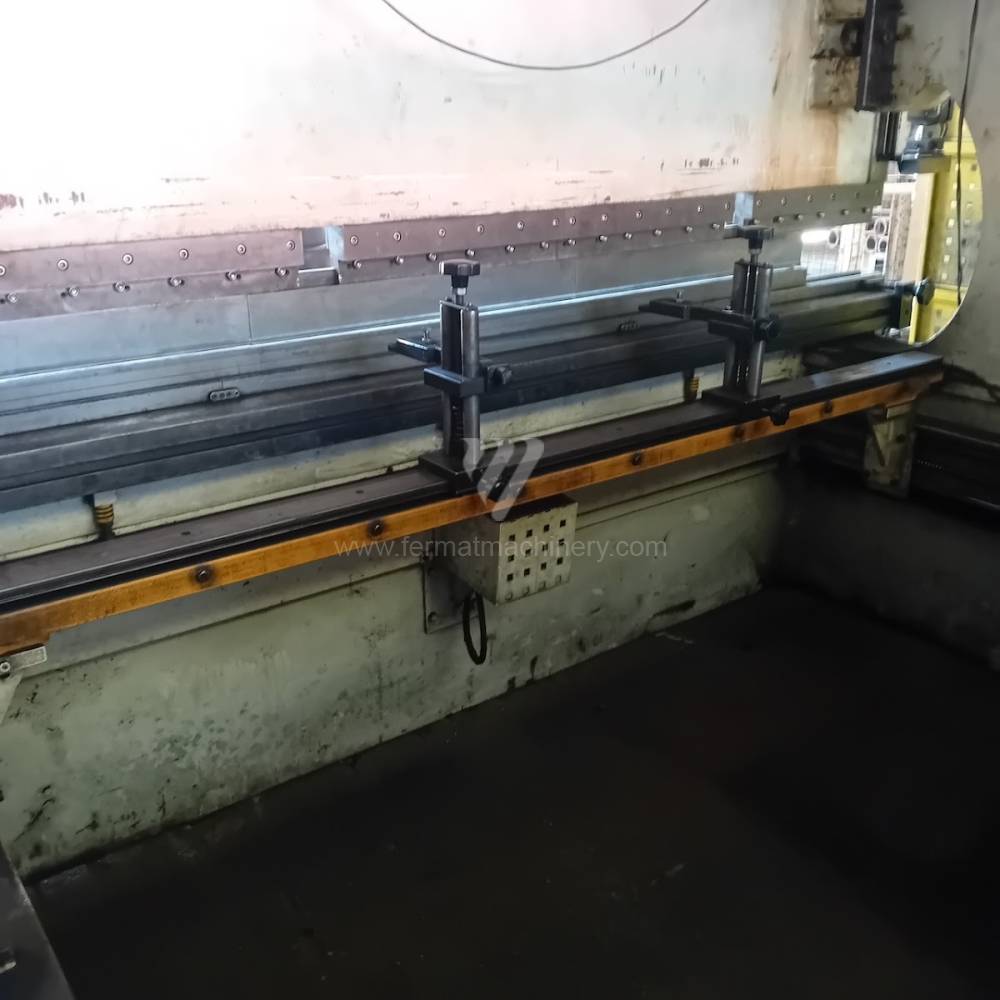
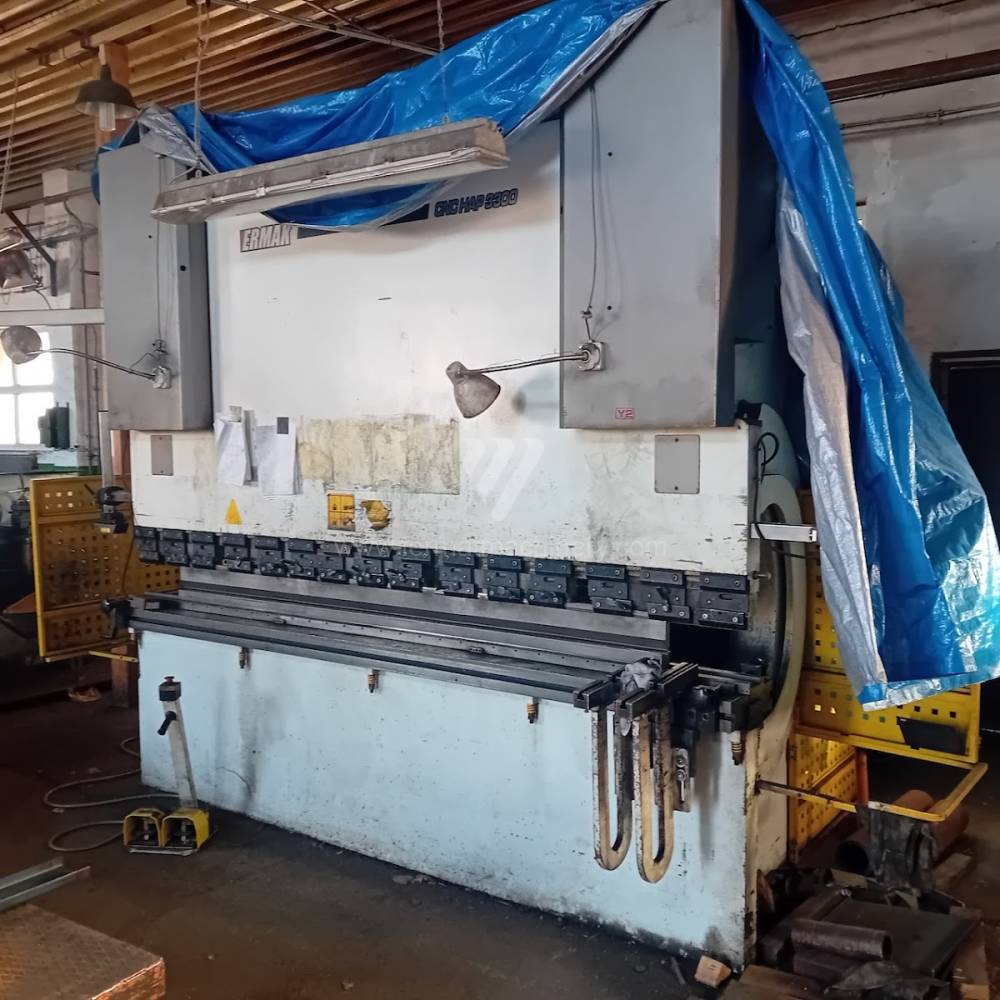
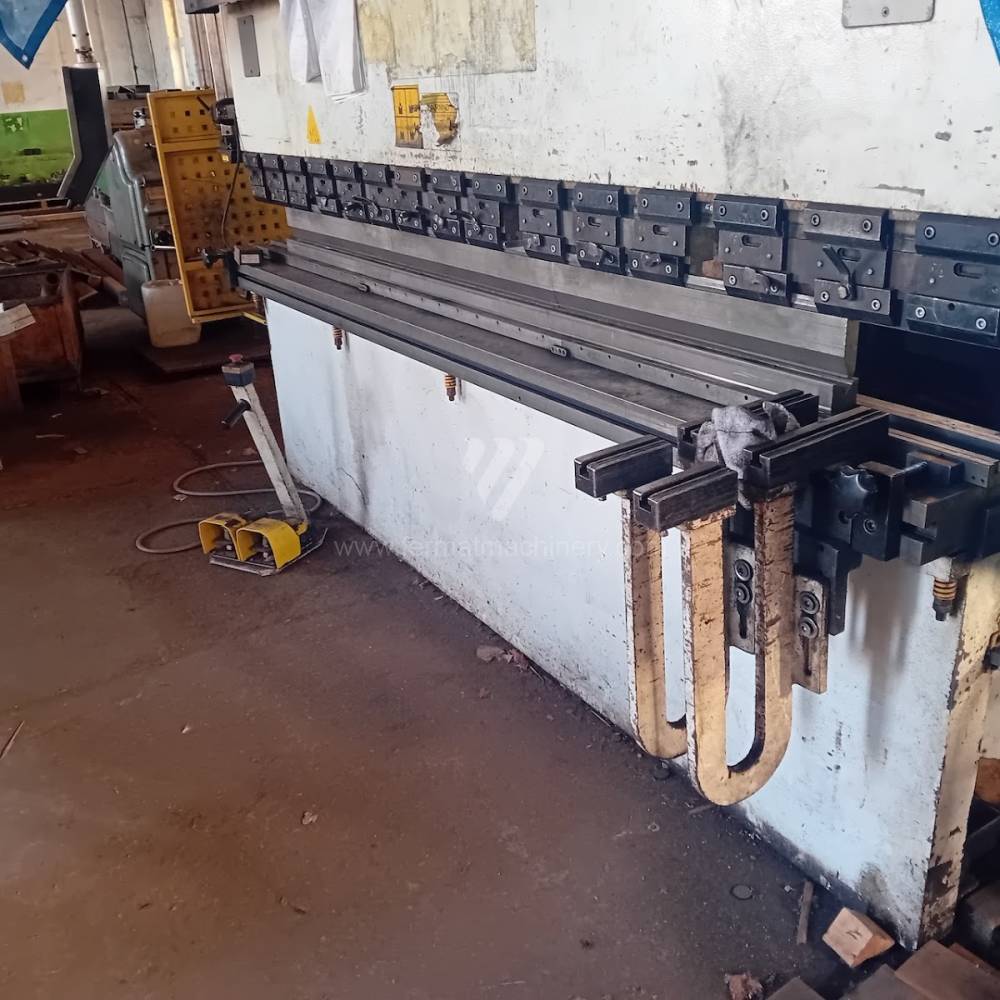
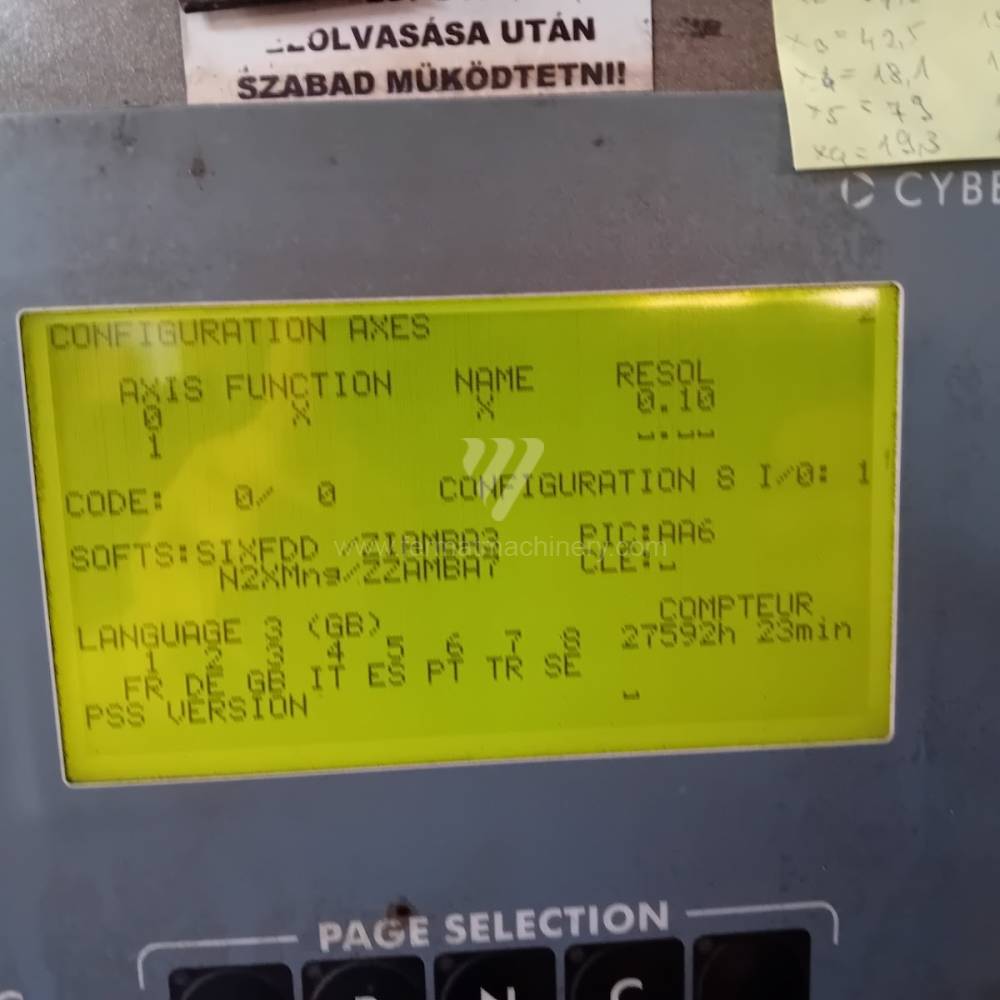
An fabricație:2006
Sistem de control Cybelec:
Puterea de indoire: 300 t
Lungimea de indoire: 3100 mm
Numărul axelor acționate: 3
Compensația deformării inferioare: da
Tipul acționării presei: Hydraulický
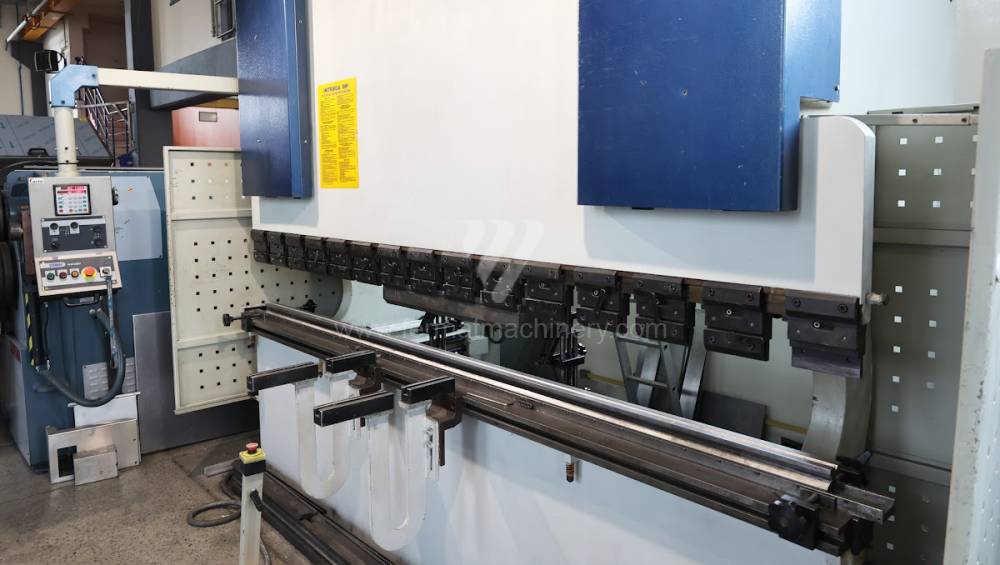
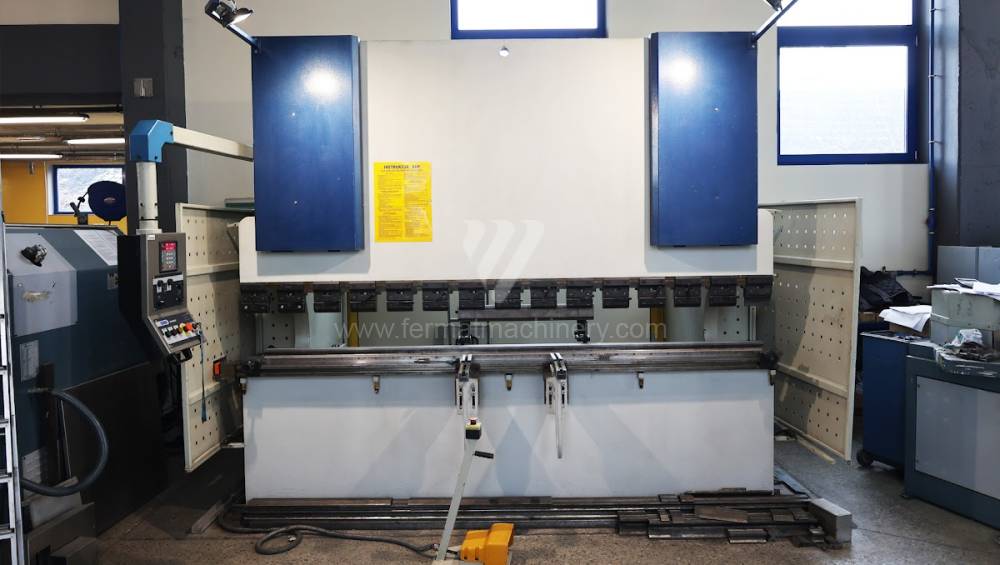
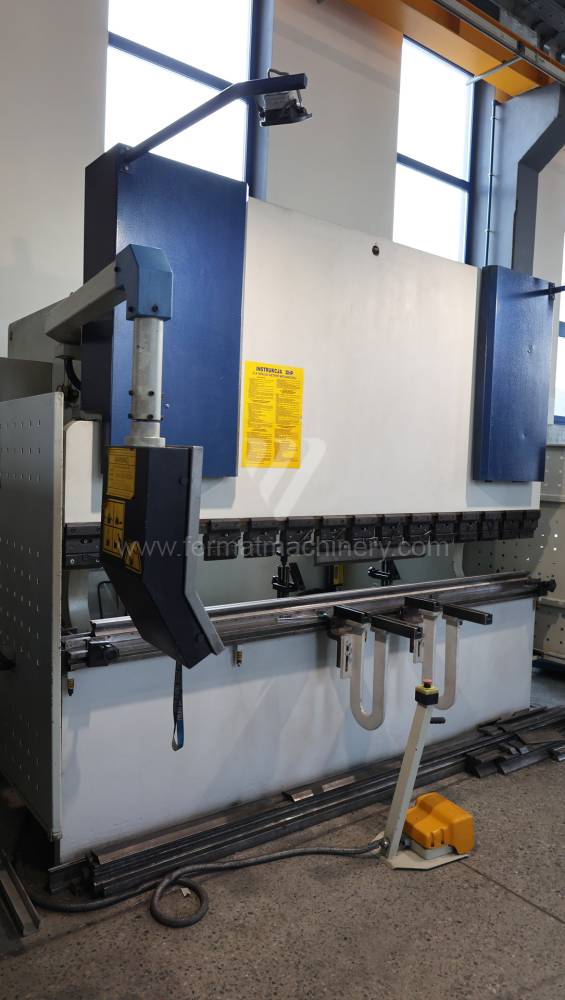
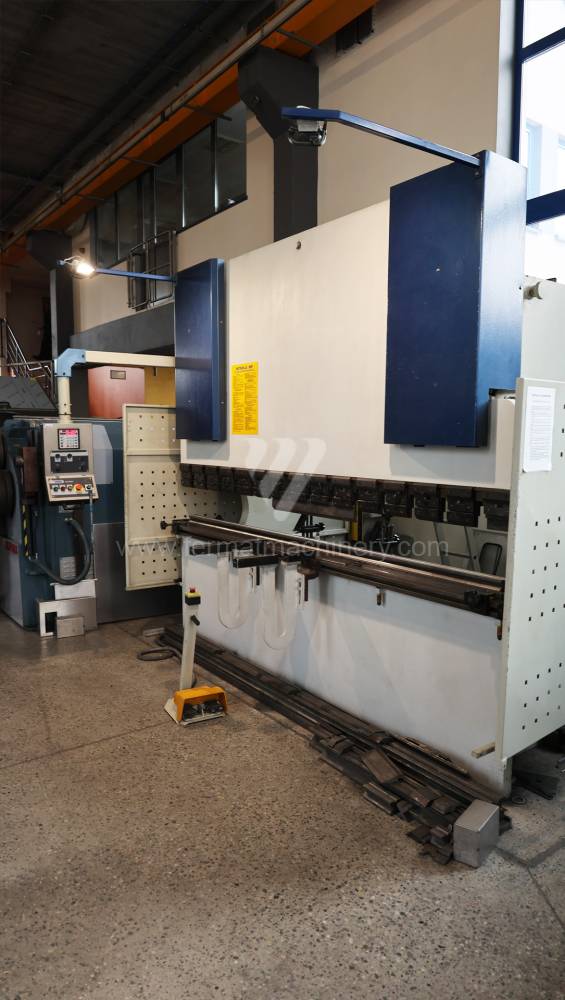
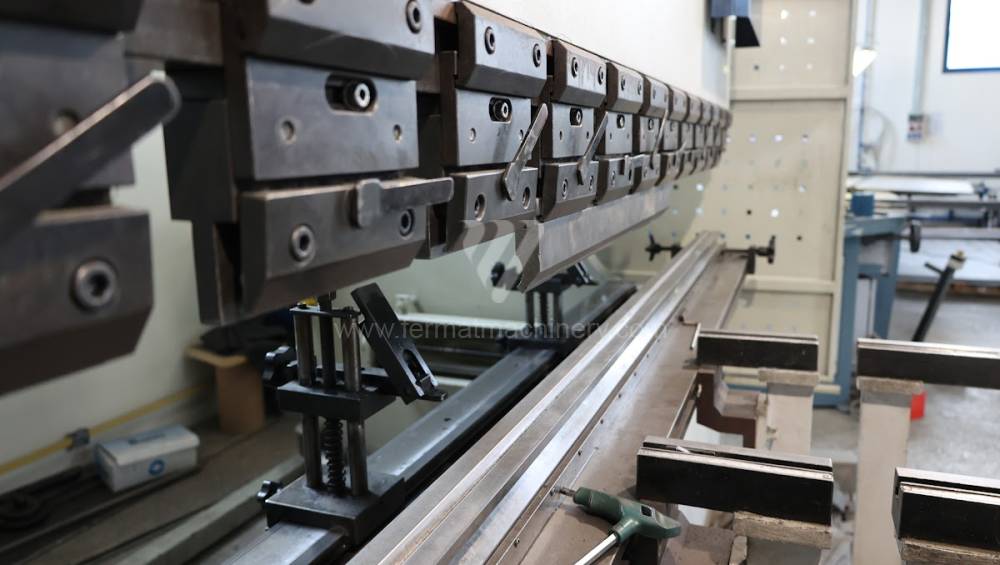
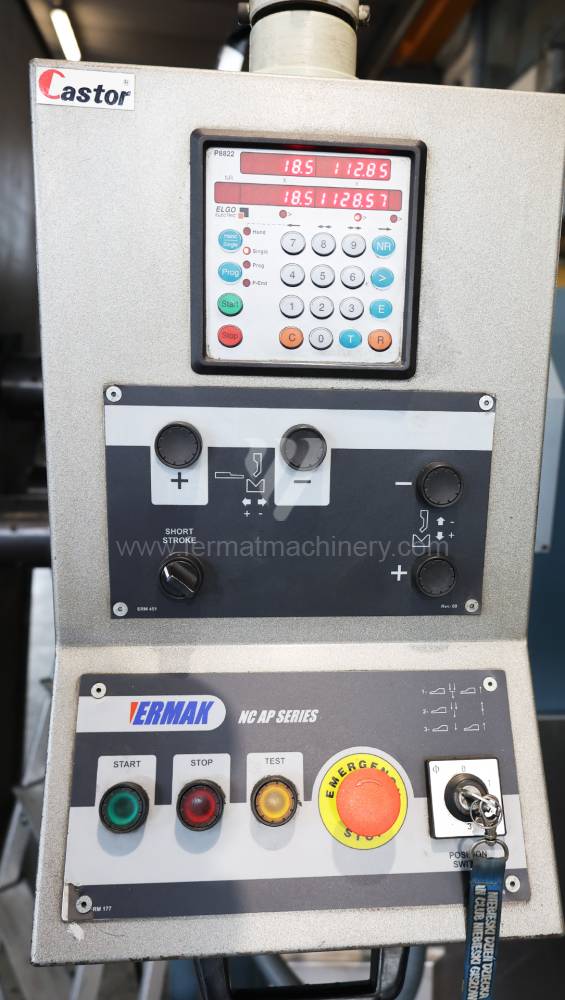
An fabricație:2005
Puterea de indoire: 120 t
Lungimea de indoire: 3100 mm
Numărul axelor acționate: 3
Compensația deformării inferioare: da
Tipul acționării presei: Hydraulický
Geutatea mașinii: 8200 kg
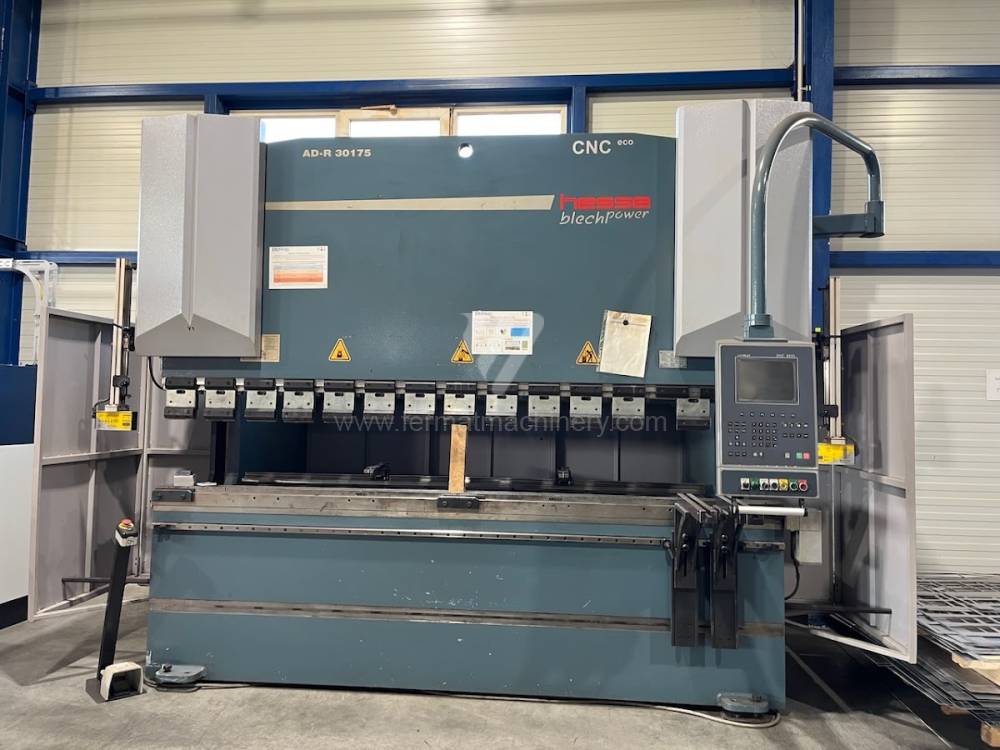
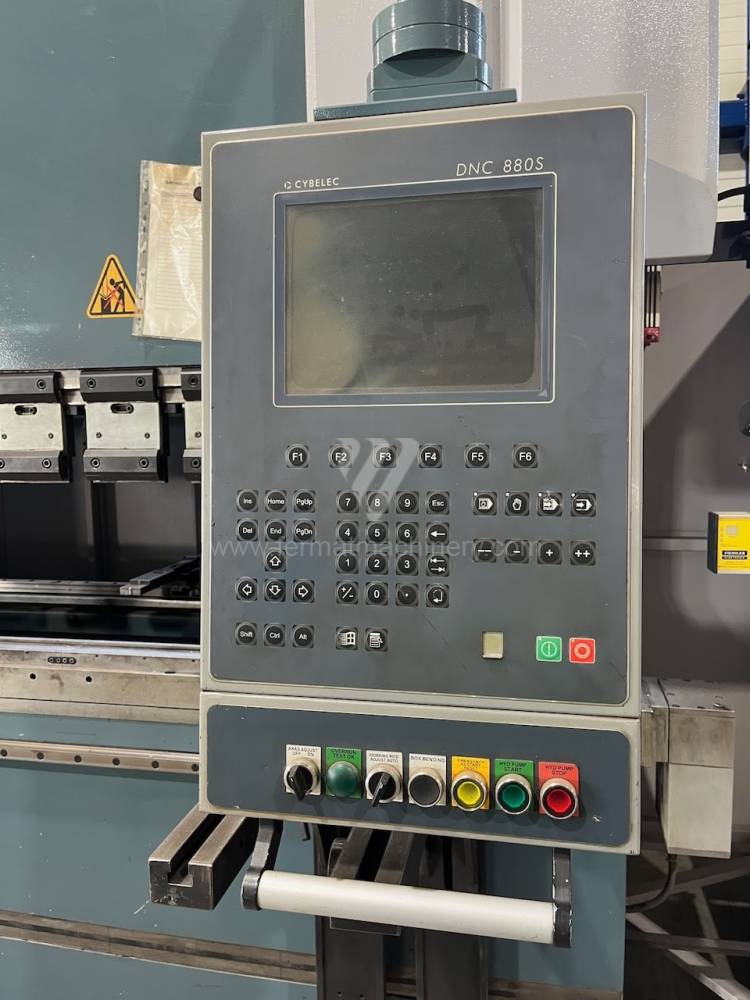
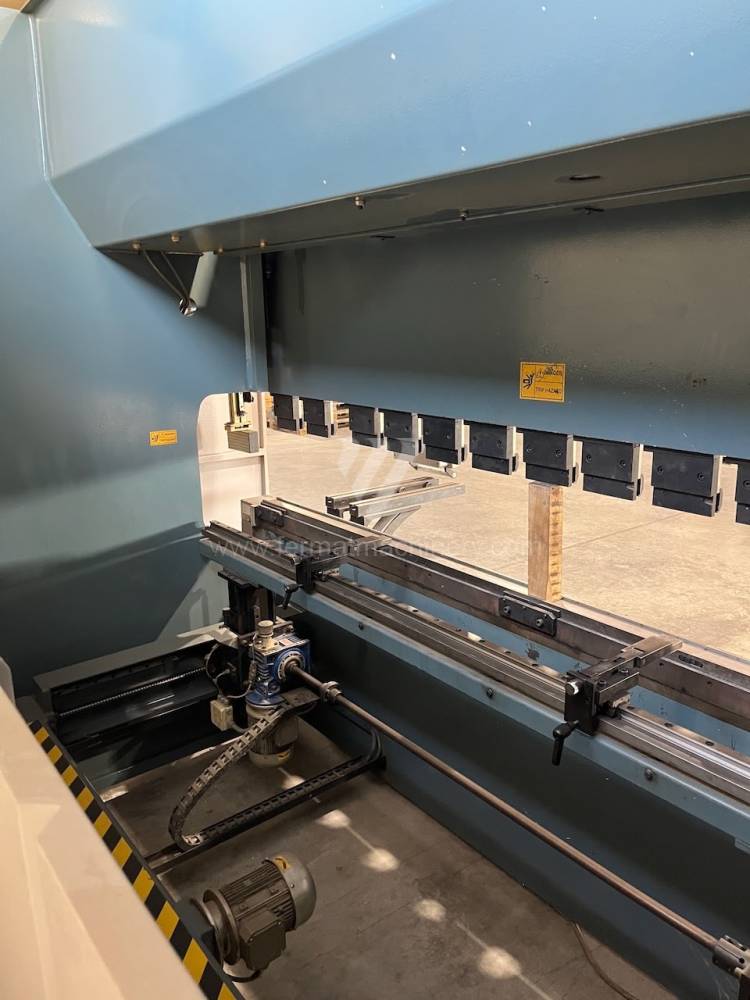
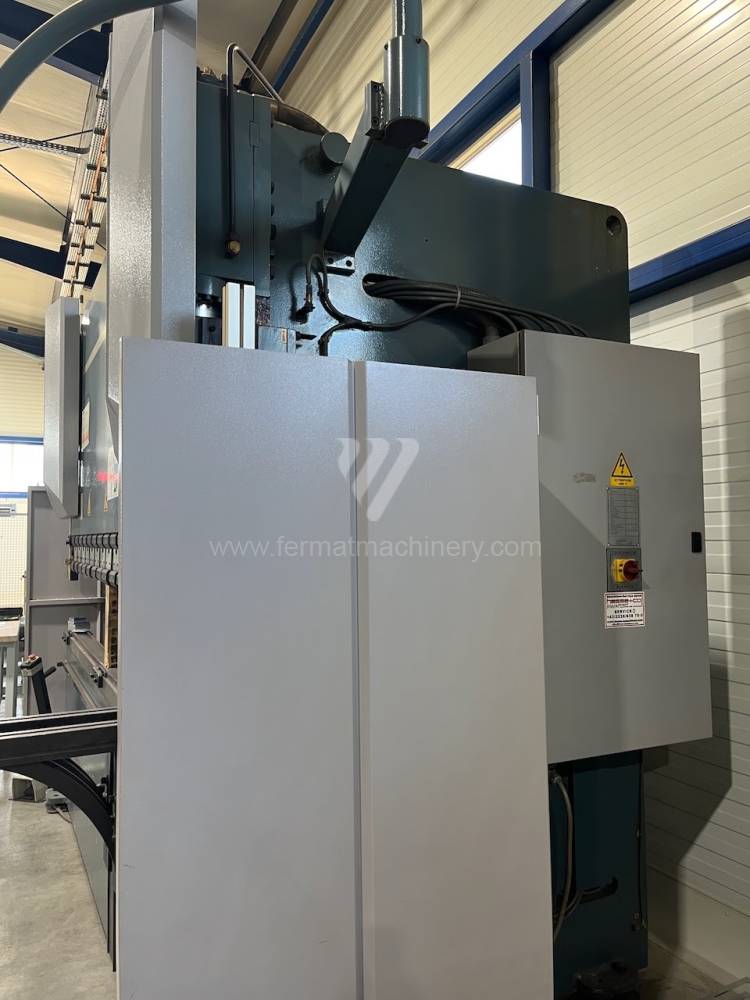
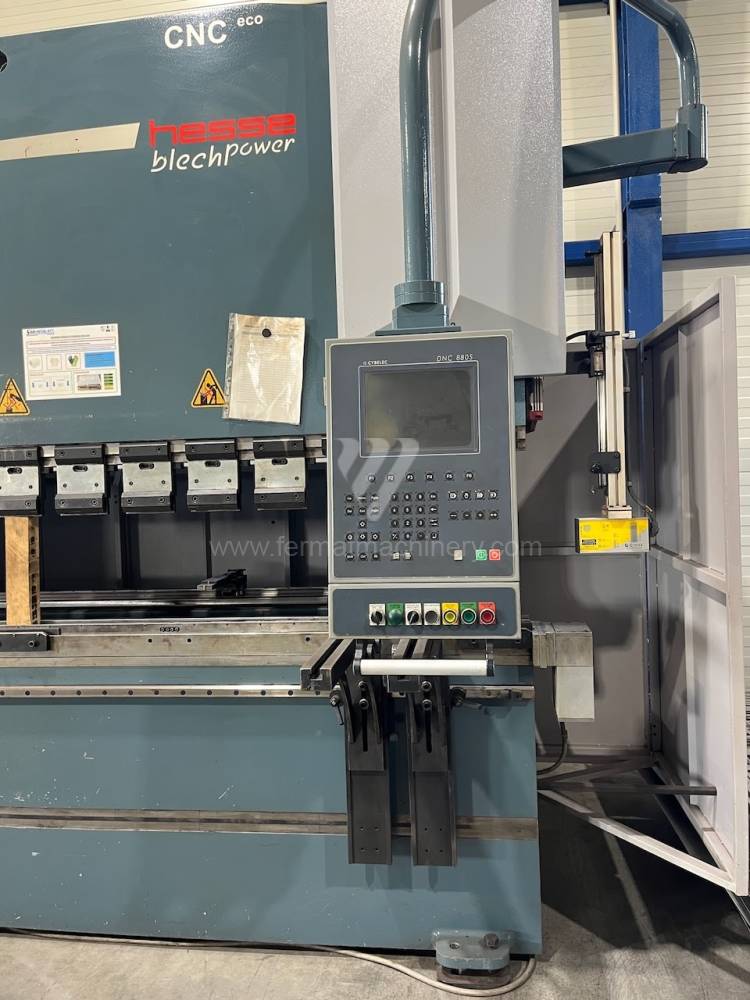
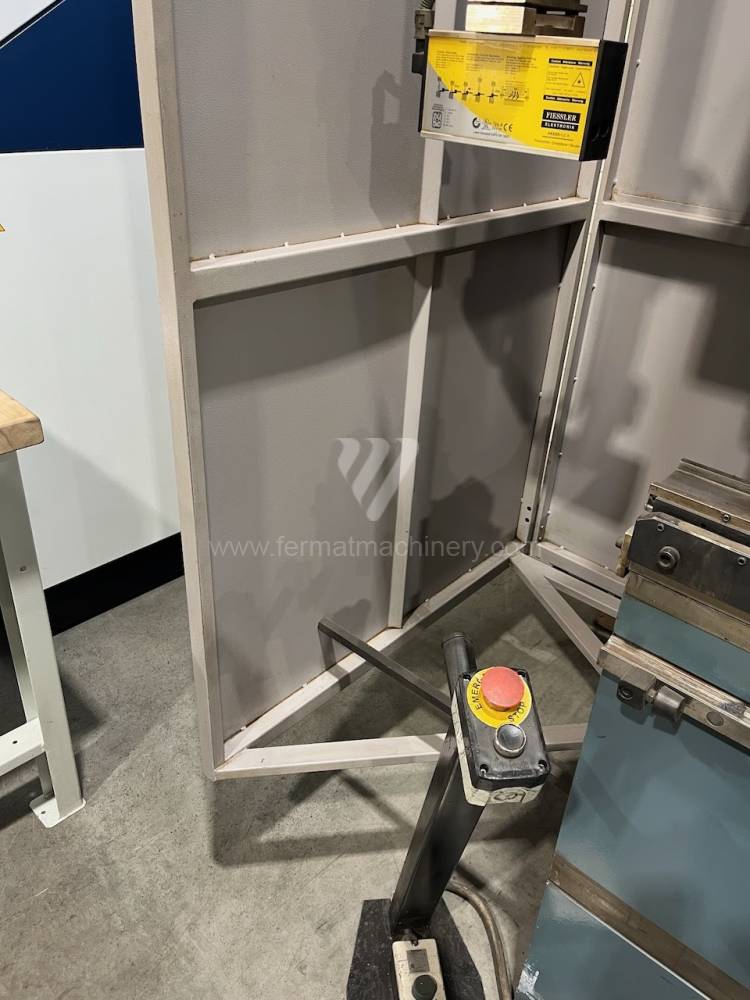
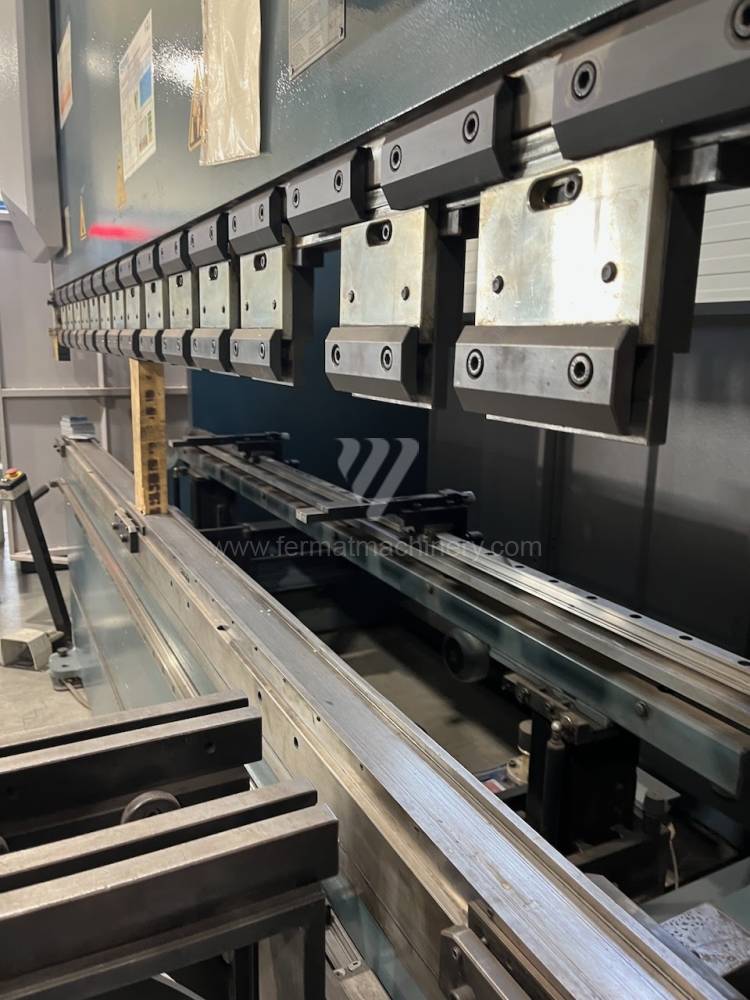
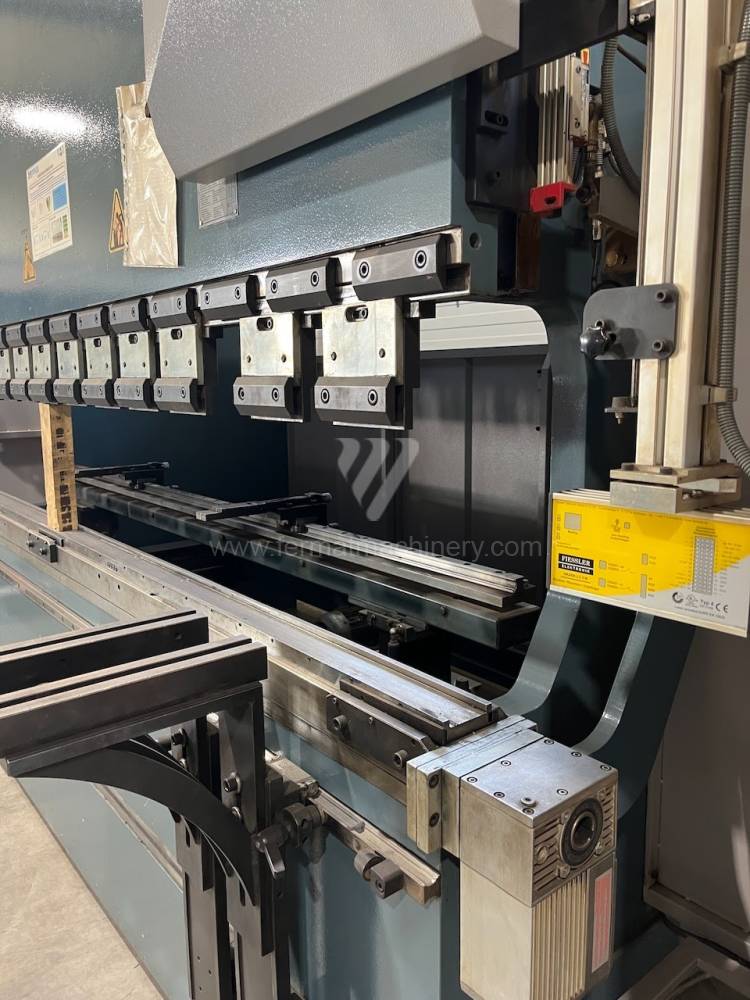
An fabricație:2013
Sistem de control Cybelec:
Puterea de indoire: 175 t
Lungimea de indoire: 3050 mm
Numărul axelor acționate: 4
Compensația deformării inferioare: da
Tipul acționării presei: Hydraulický
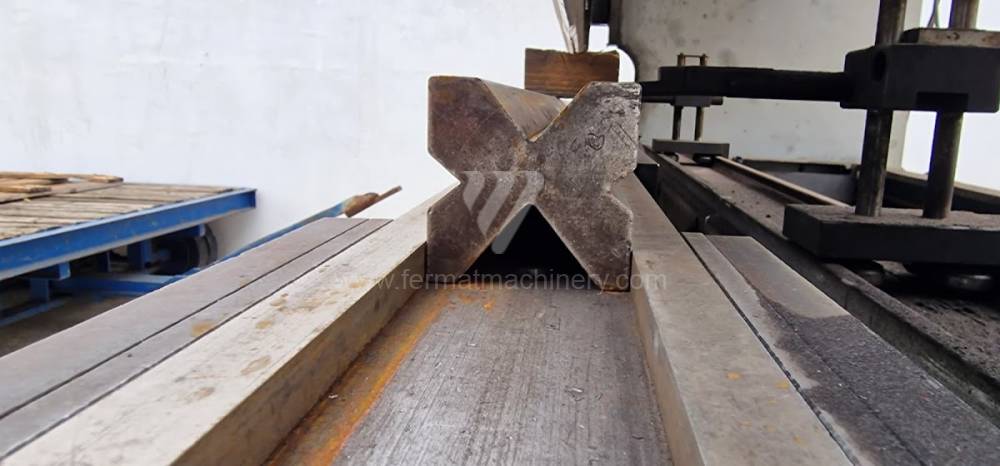
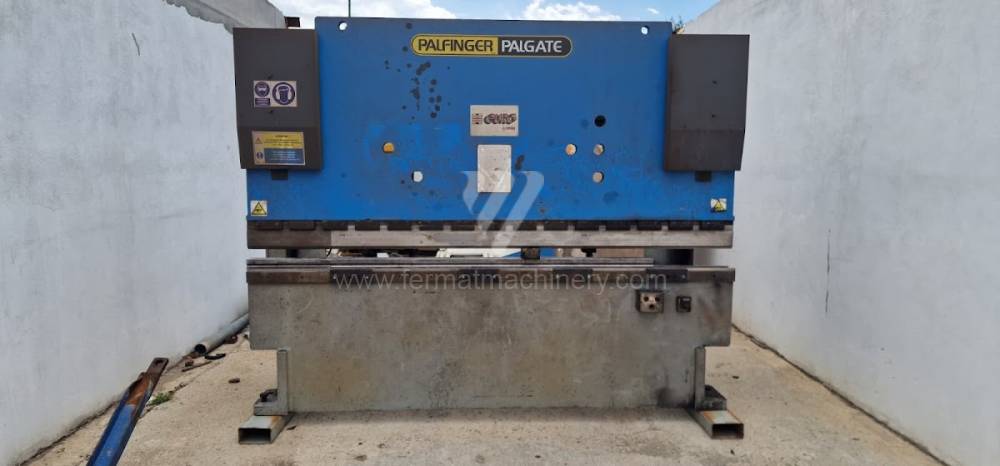
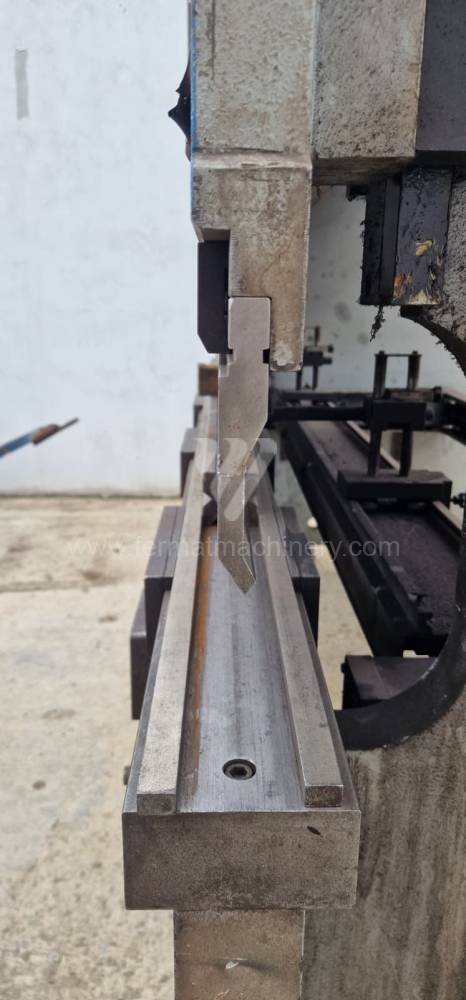
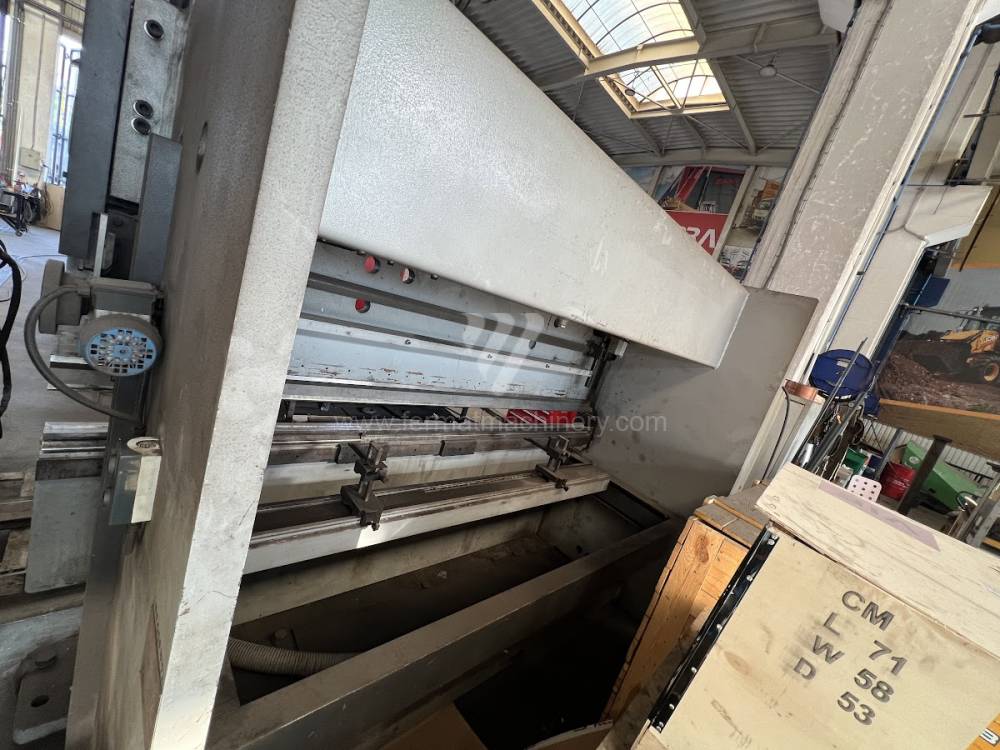
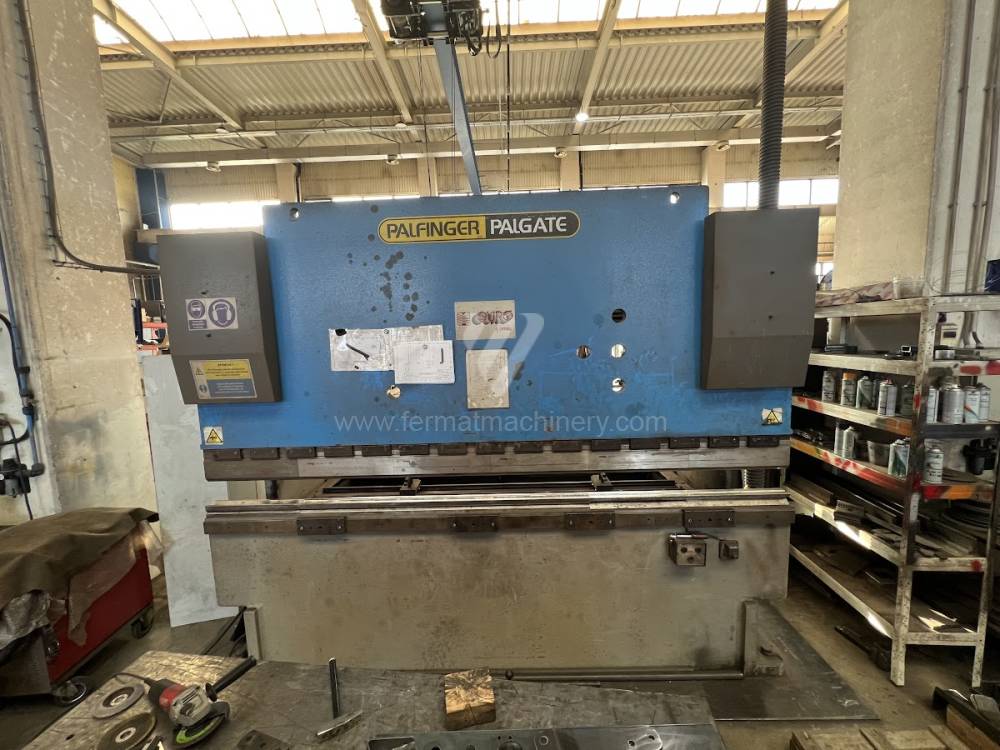
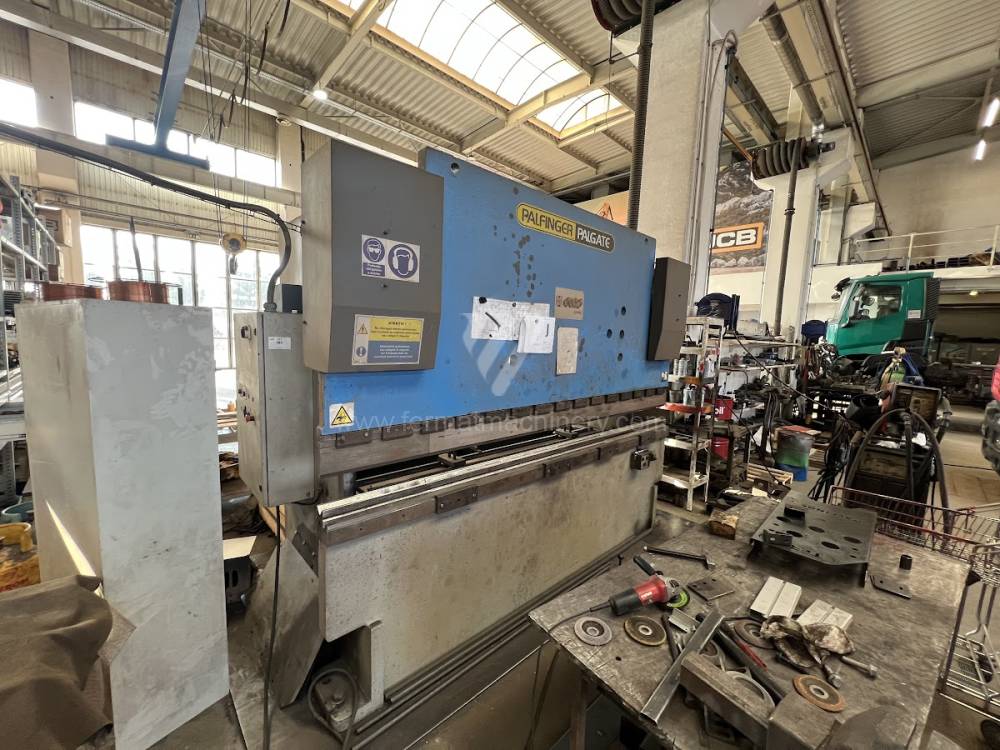
An fabricație:2006
Puterea de indoire: 150 t
Lungimea de indoire: 3075 mm
Descarcarea: 200 mm
Cursa culisei: 200 mm
Puterea motorului principal: 11 kW
Geutatea mașinii: 7 800 kg
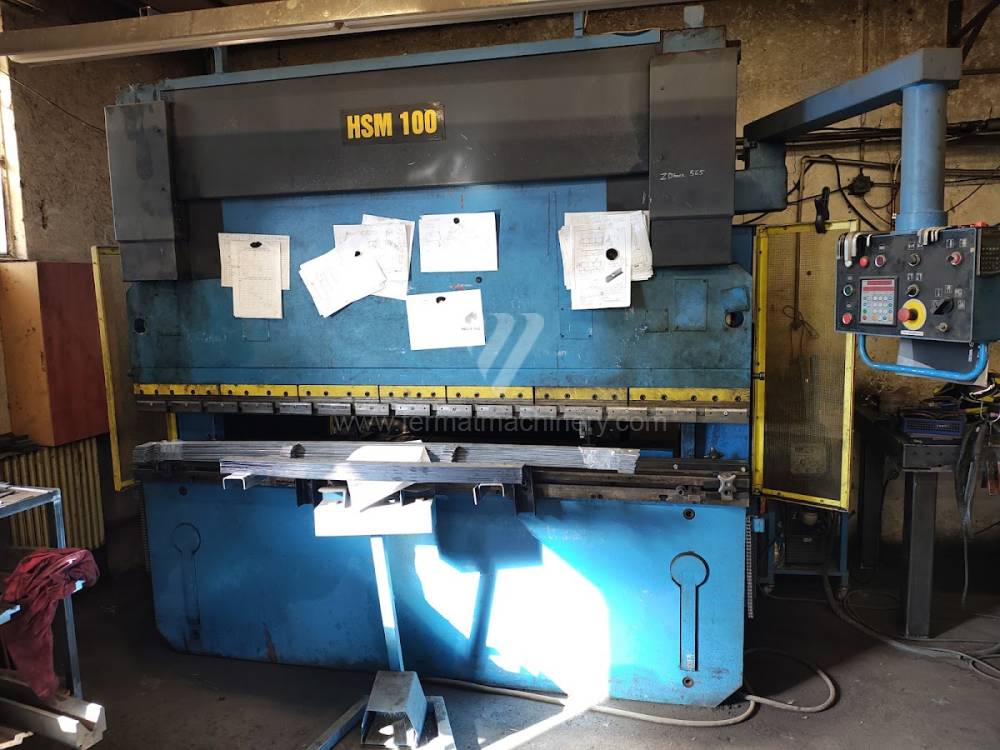
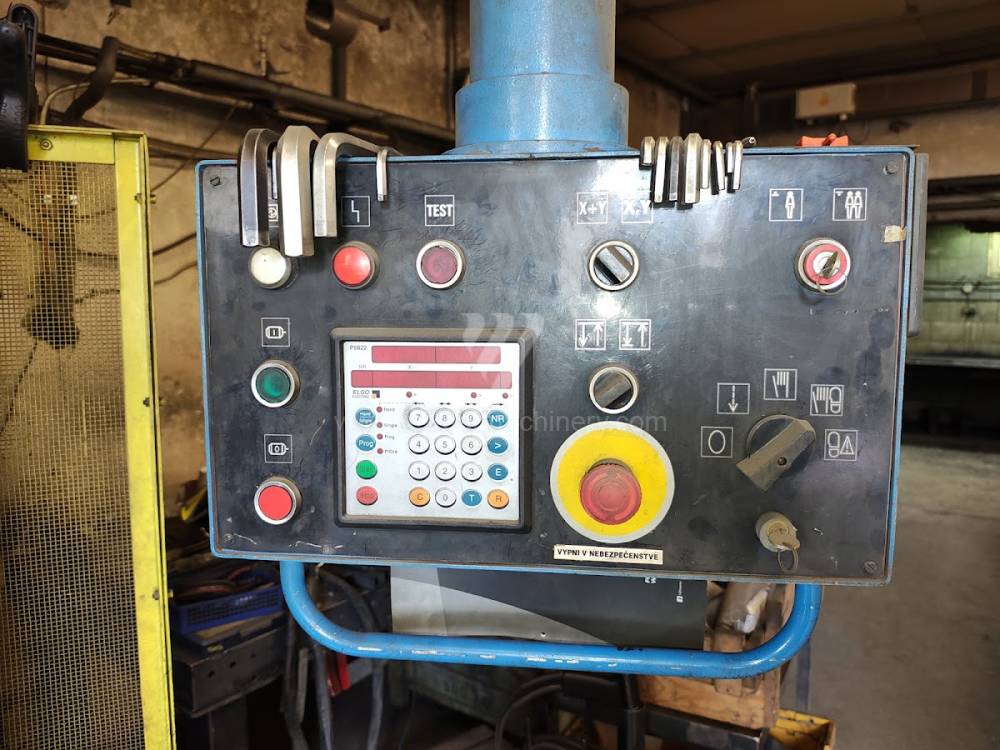
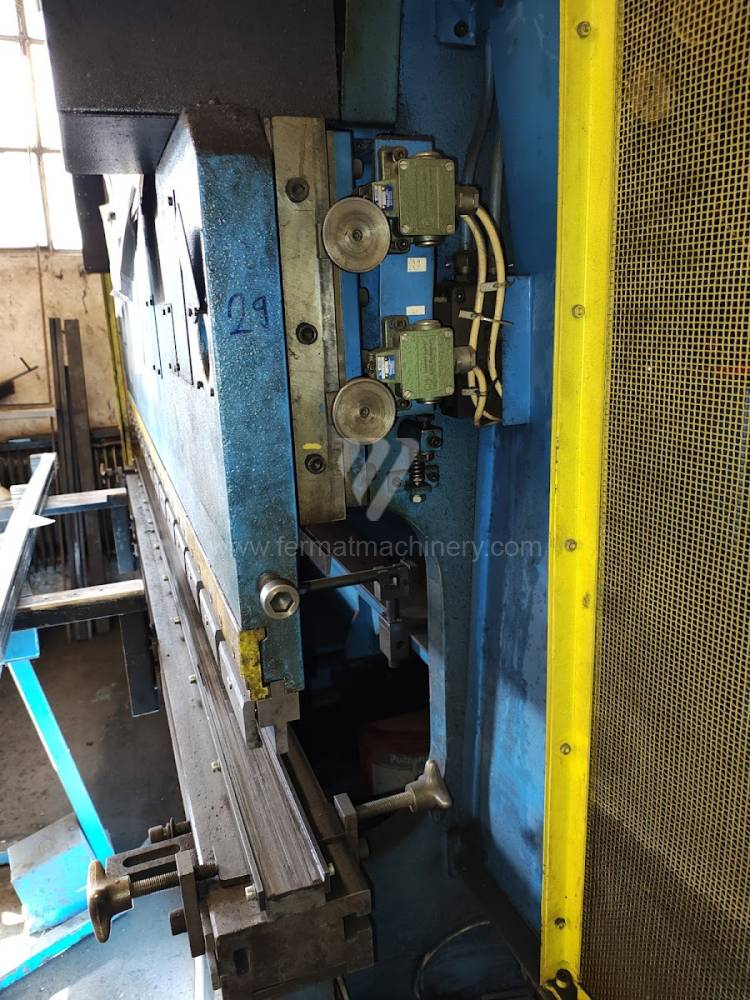
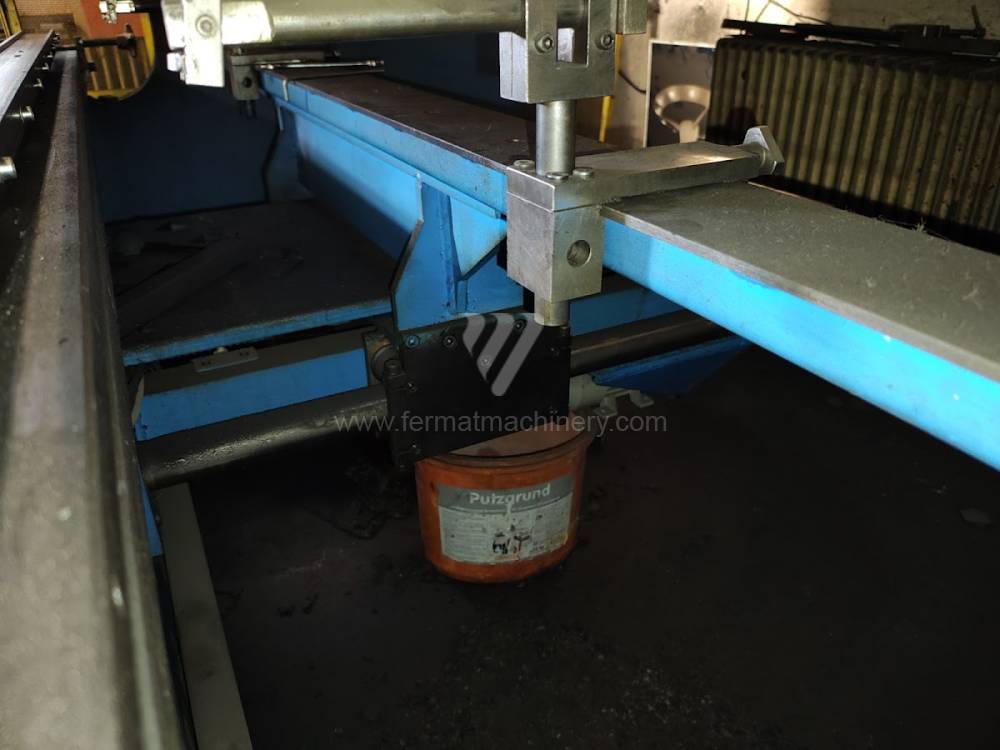
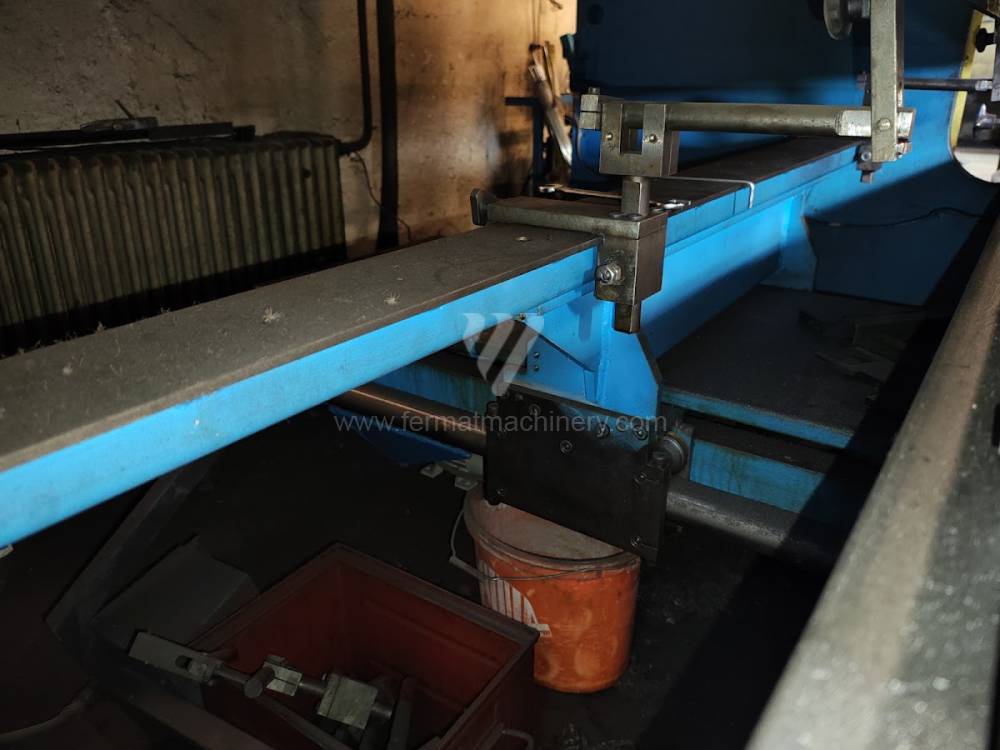
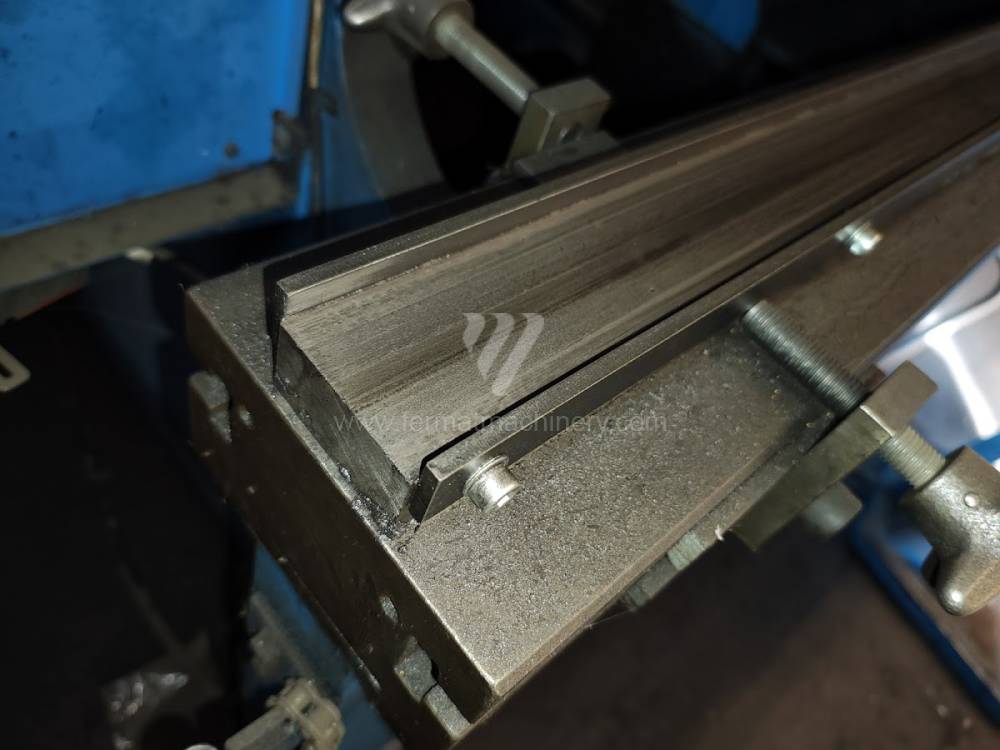
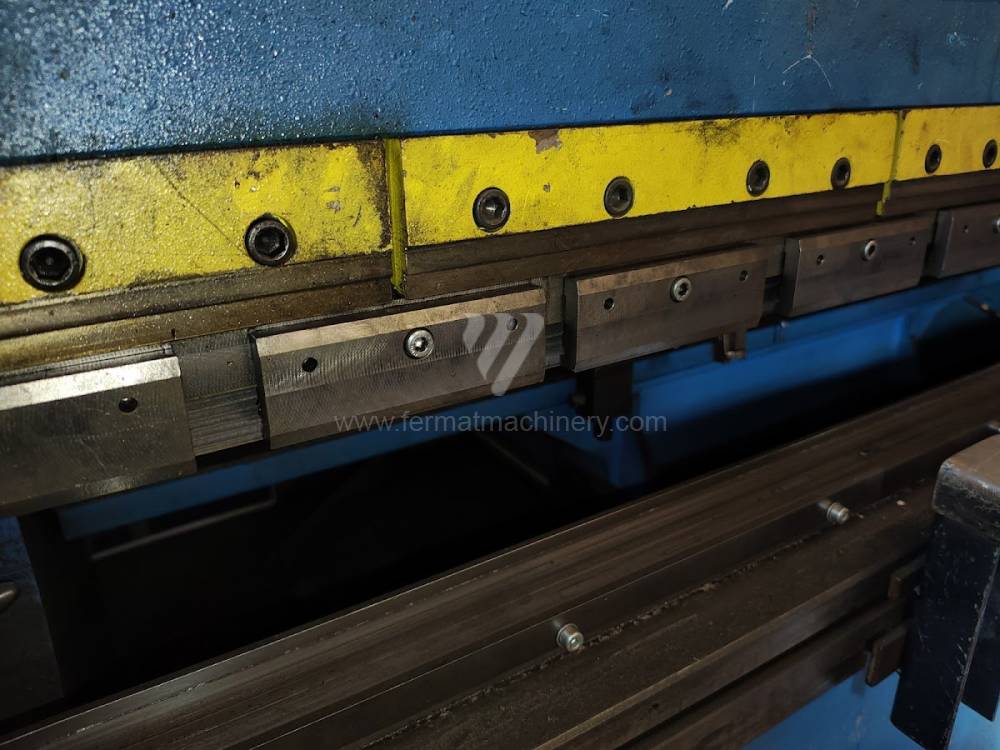
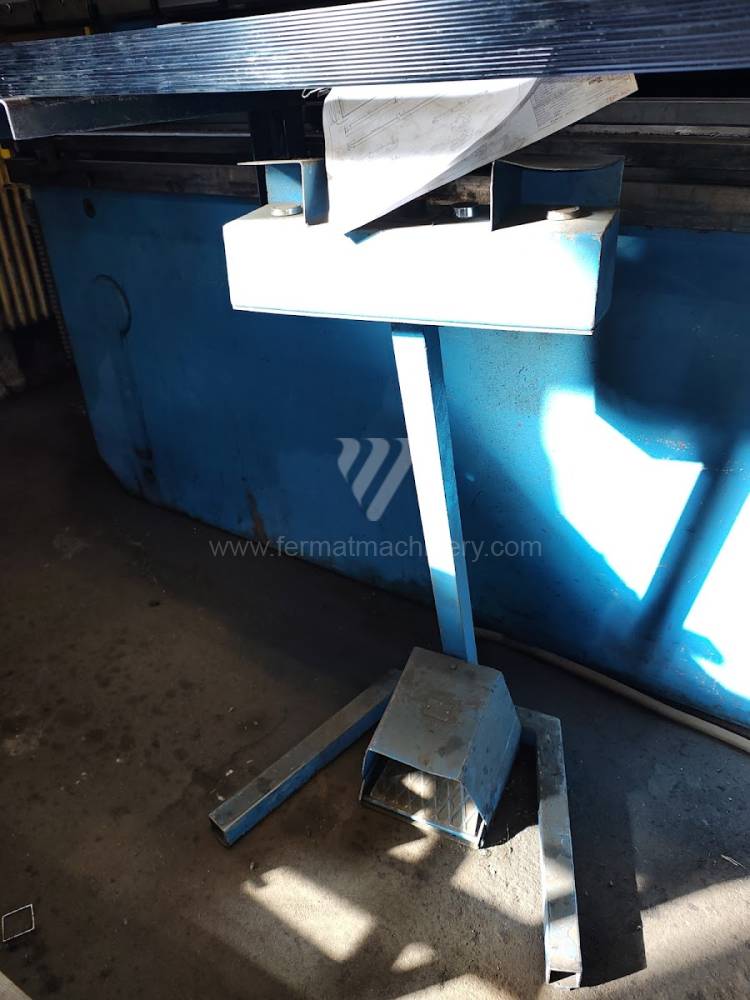
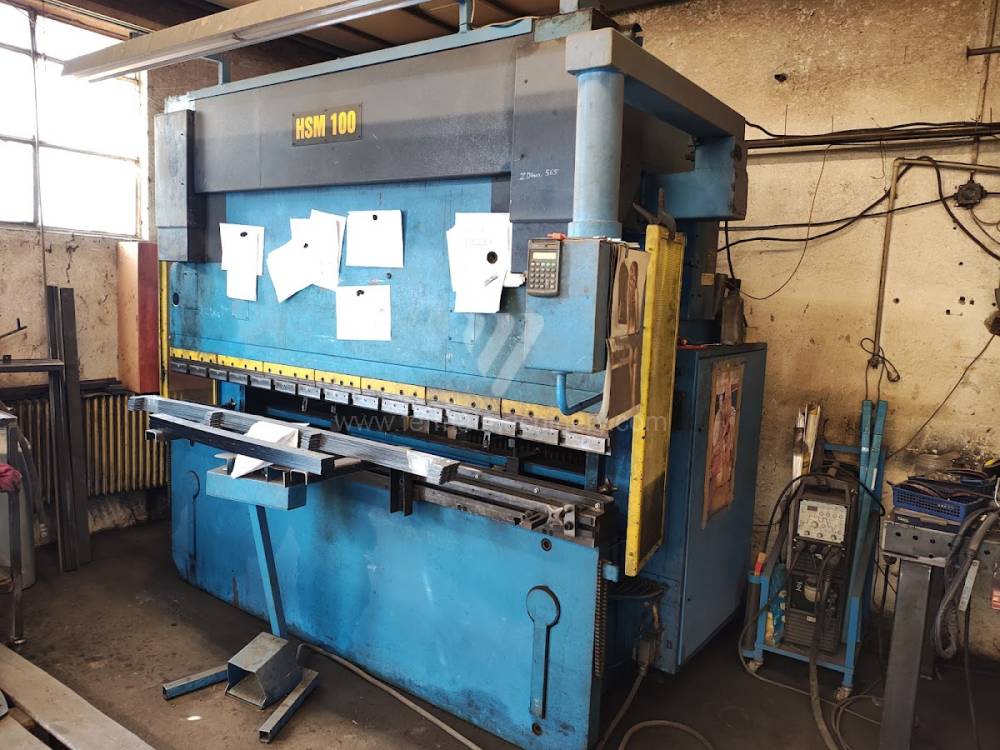
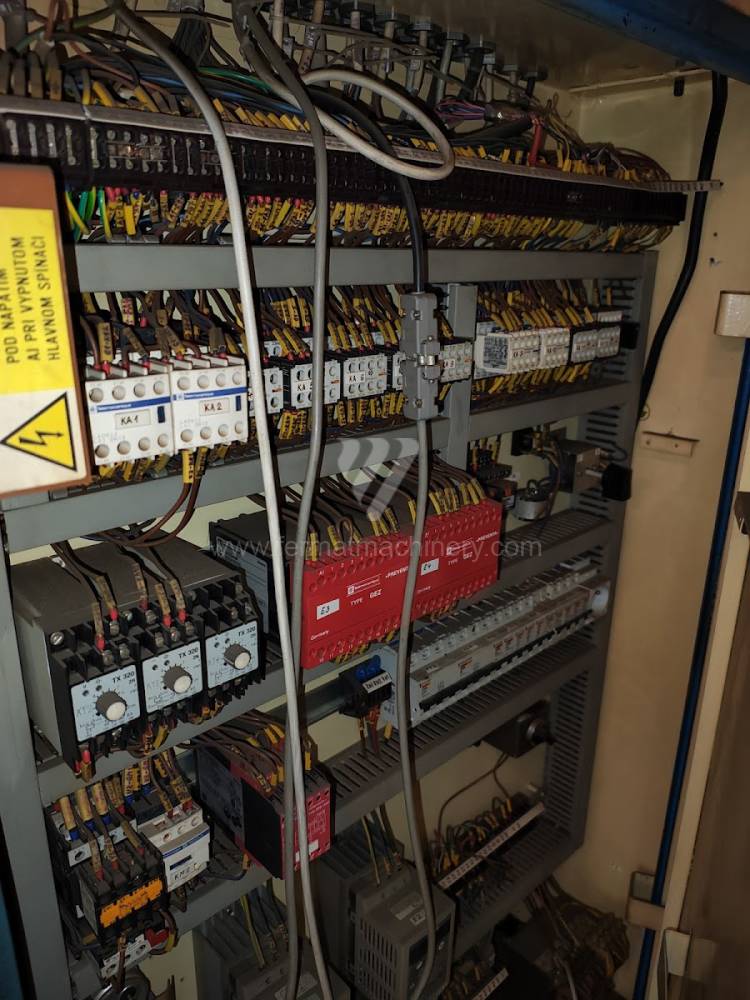
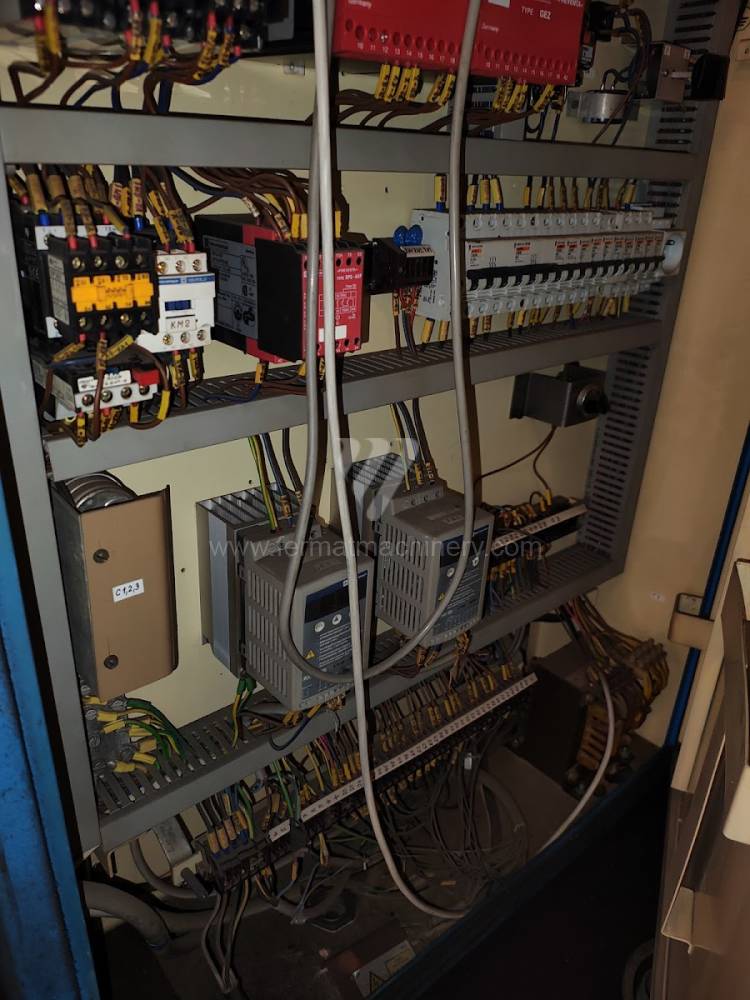
An fabricație:2004
Puterea de indoire: 100 t
Lungimea de indoire: 2500 mm
Tipul acționării presei: Hydraulický
Geutatea mașinii: 6600 kg
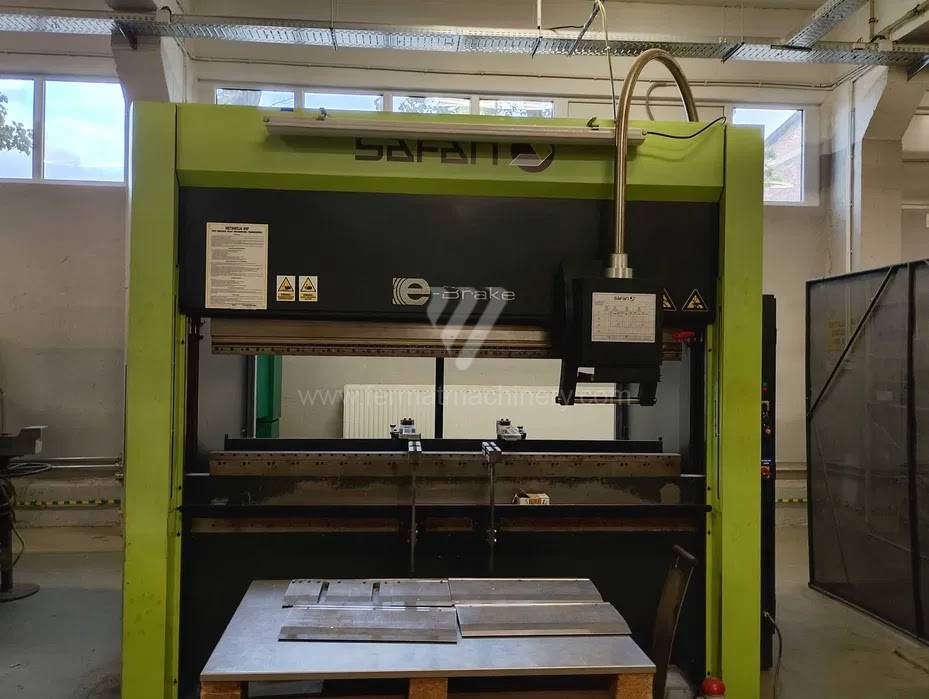
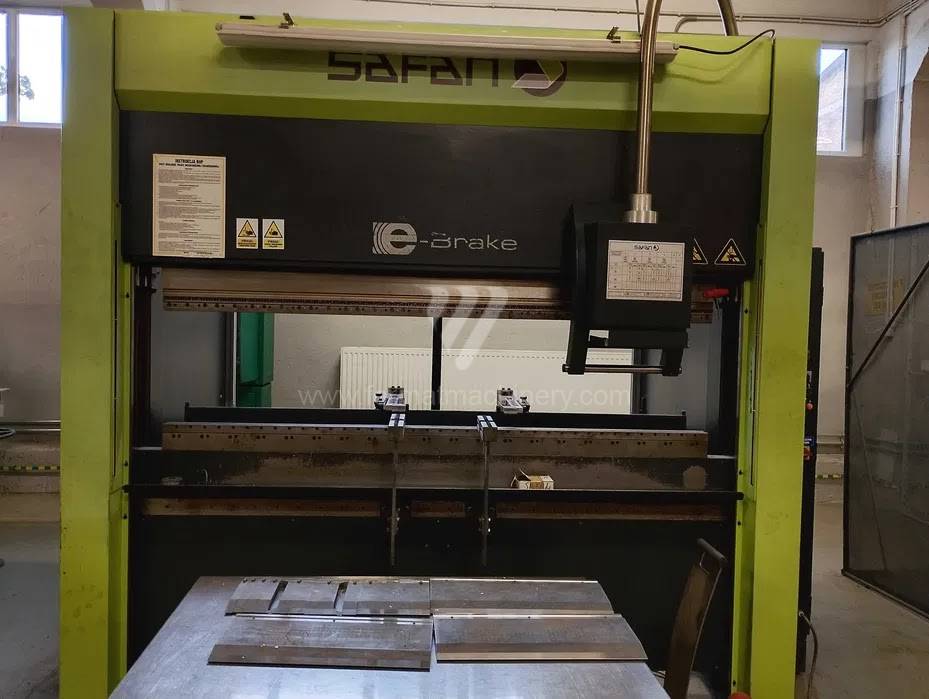
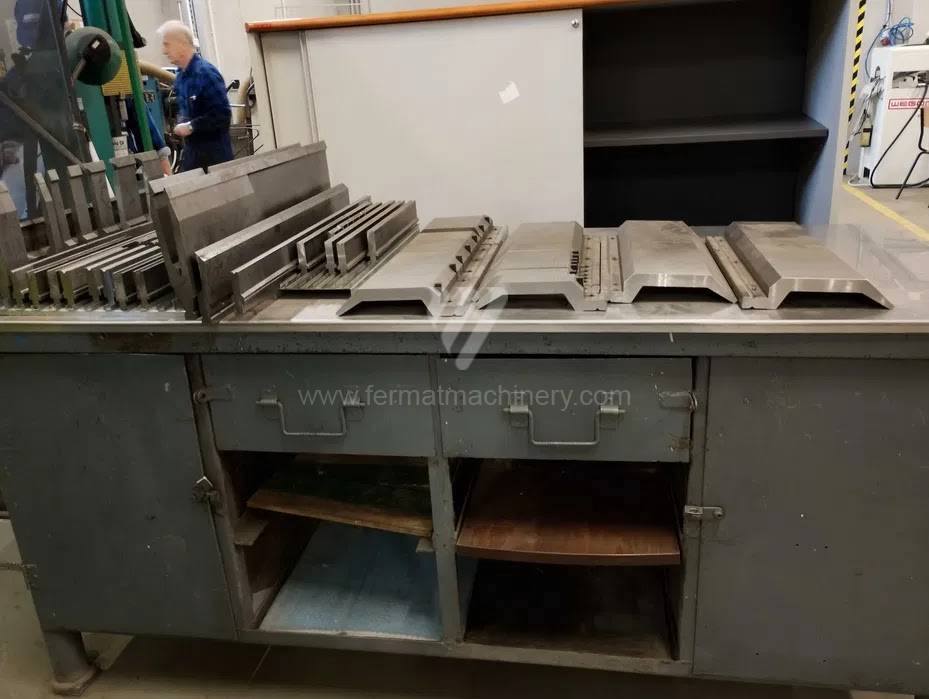
An fabricație:2008
Puterea de indoire: 50 t
Lungimea de indoire: 2050 mm
Numărul axelor acționate:
Compensația deformării inferioare:
Tipul acționării presei:
Puterea motorului principal: 7 kW
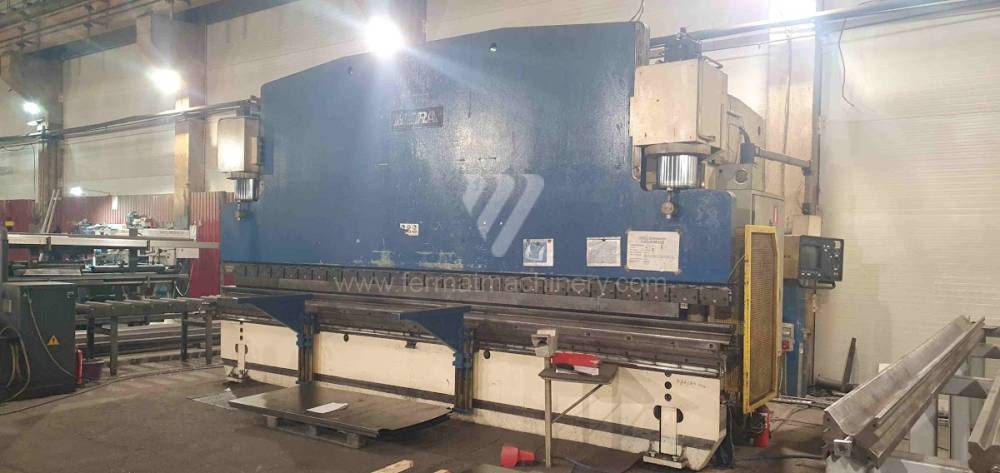
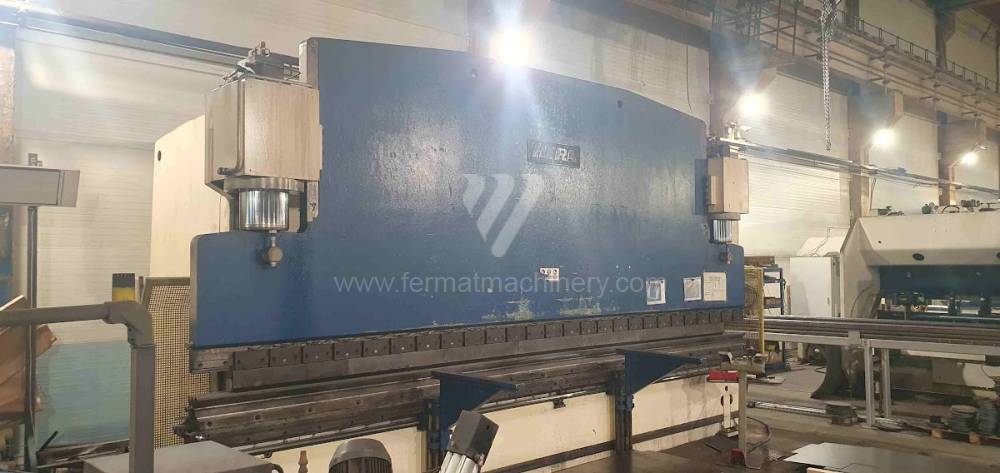
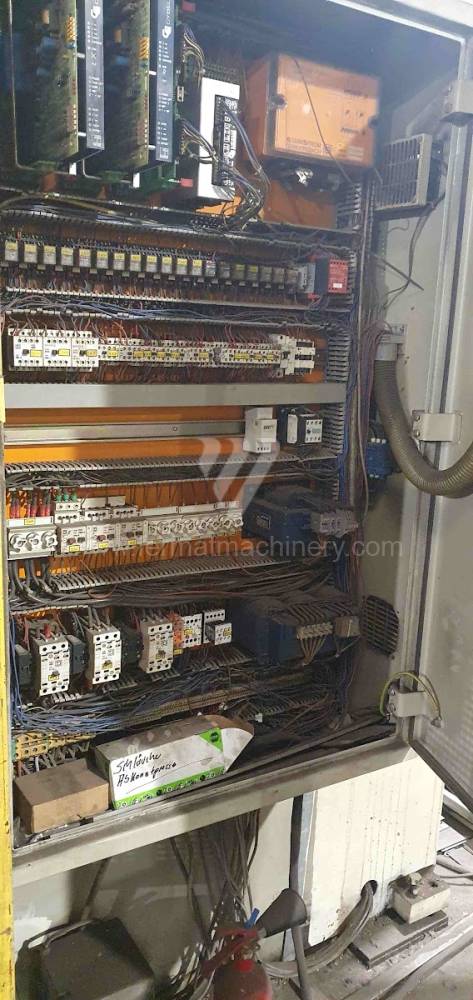
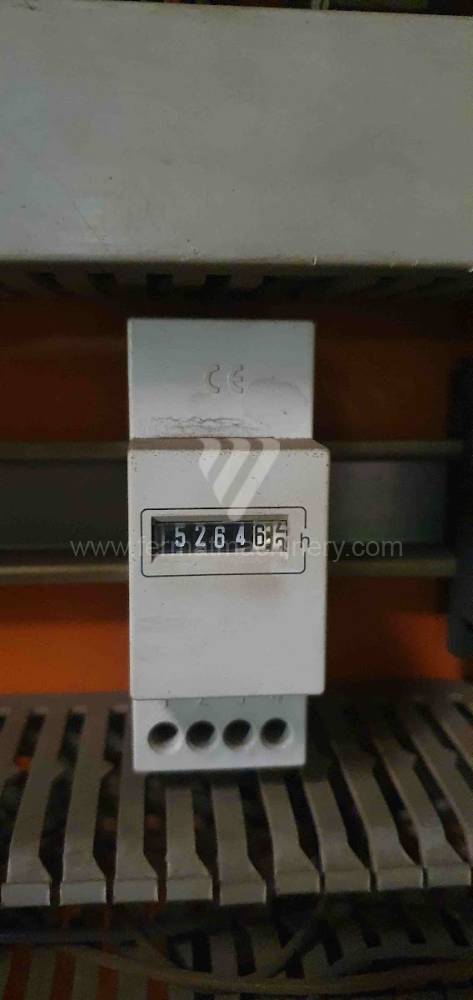
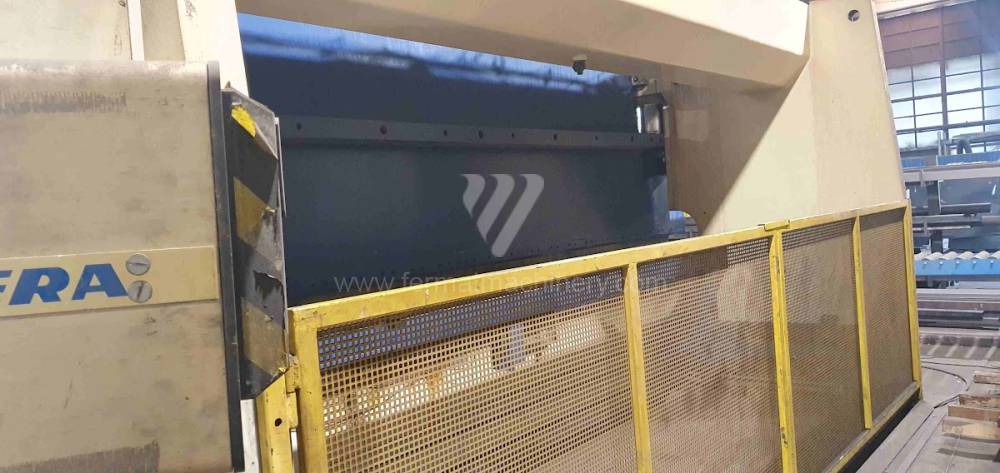
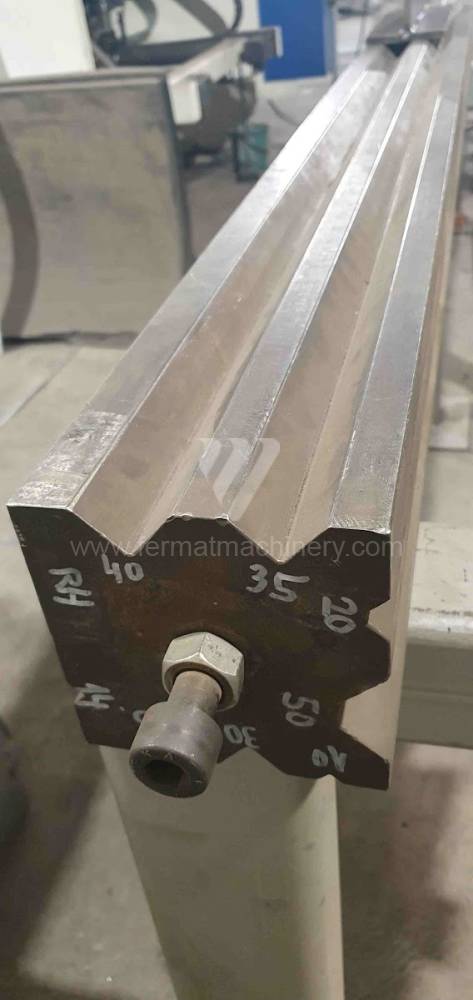
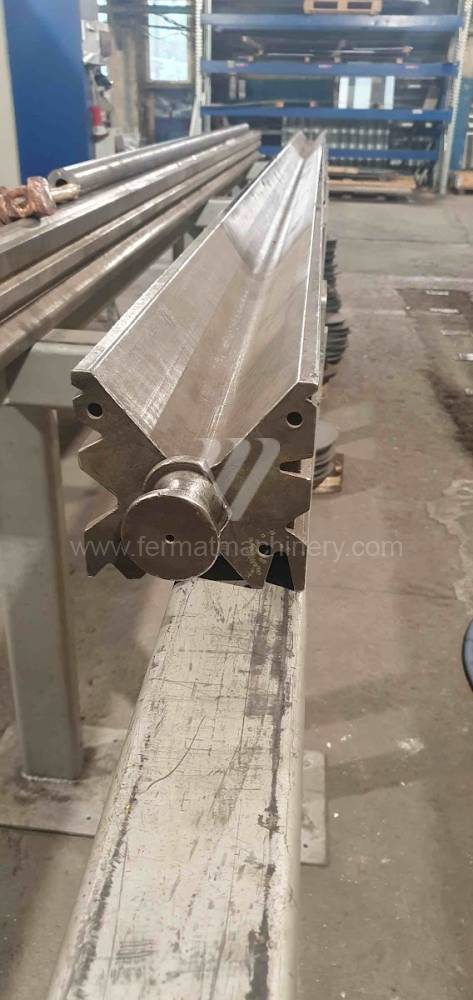
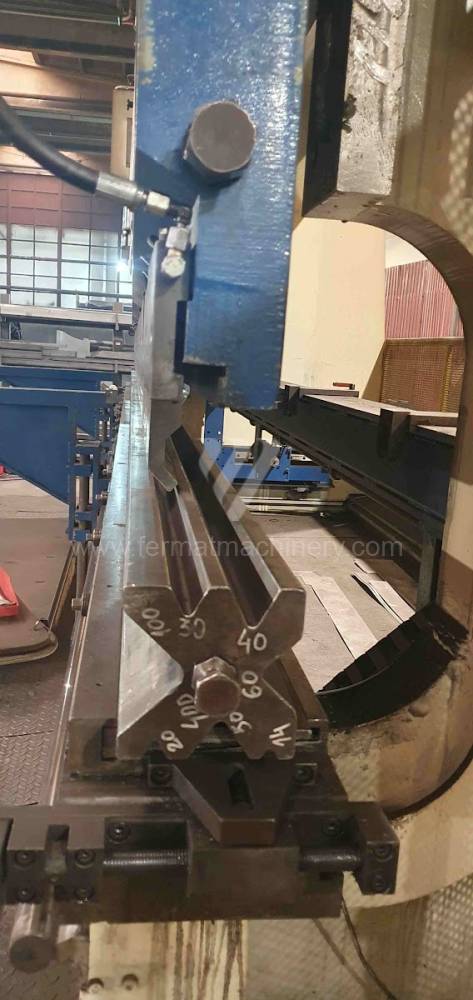
An fabricație:1992
Sistem de control Cybelec: DNC 94
Puterea de indoire: 400 t
Lungimea de indoire: 6100 mm
Numărul axelor acționate: 2
Compensația deformării inferioare:
Tipul acționării presei: Hydraulický
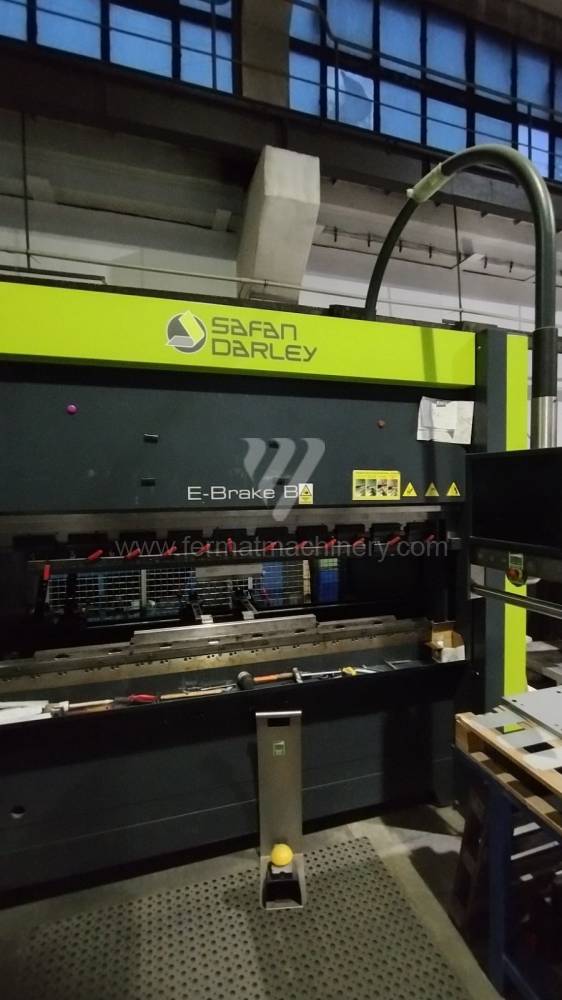
An fabricație:2017
Puterea de indoire: 50 t
Lungimea de indoire: 2050 mm
Numărul axelor acționate: 4
Compensația deformării inferioare: da
Tipul acționării presei: Elektrický
Puterea motorului principal: 11 kW
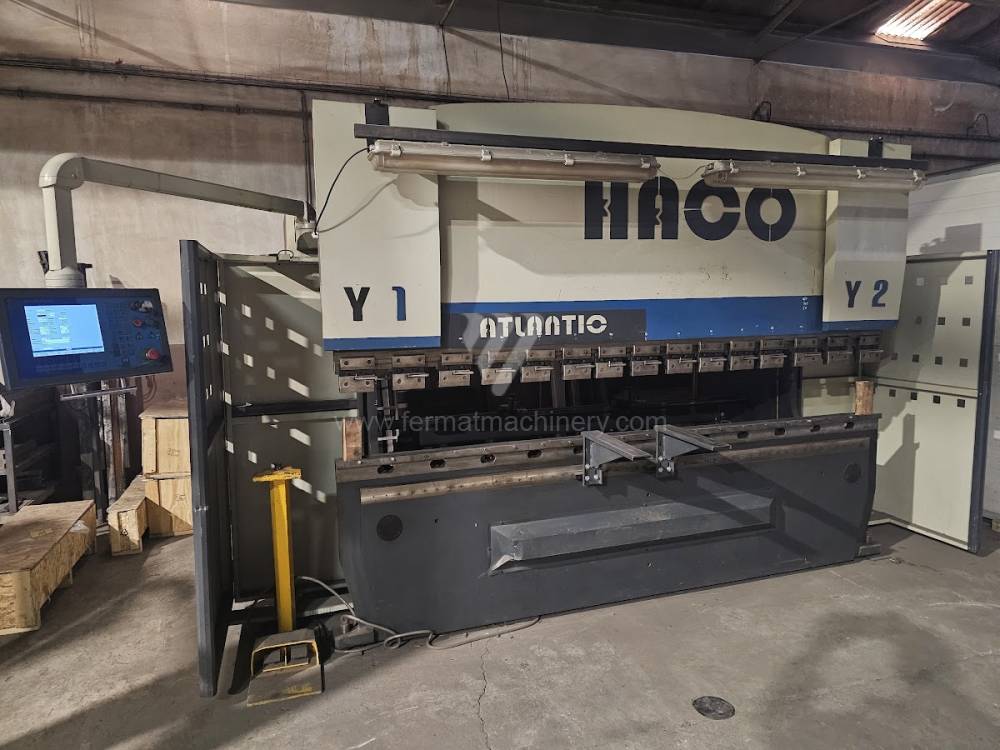
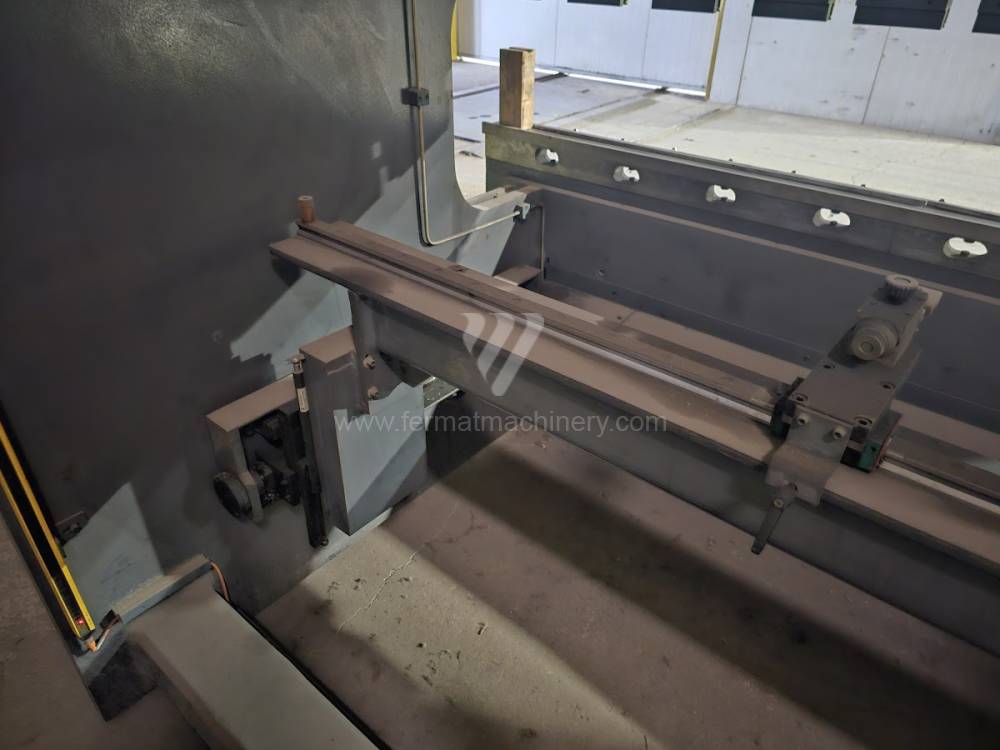
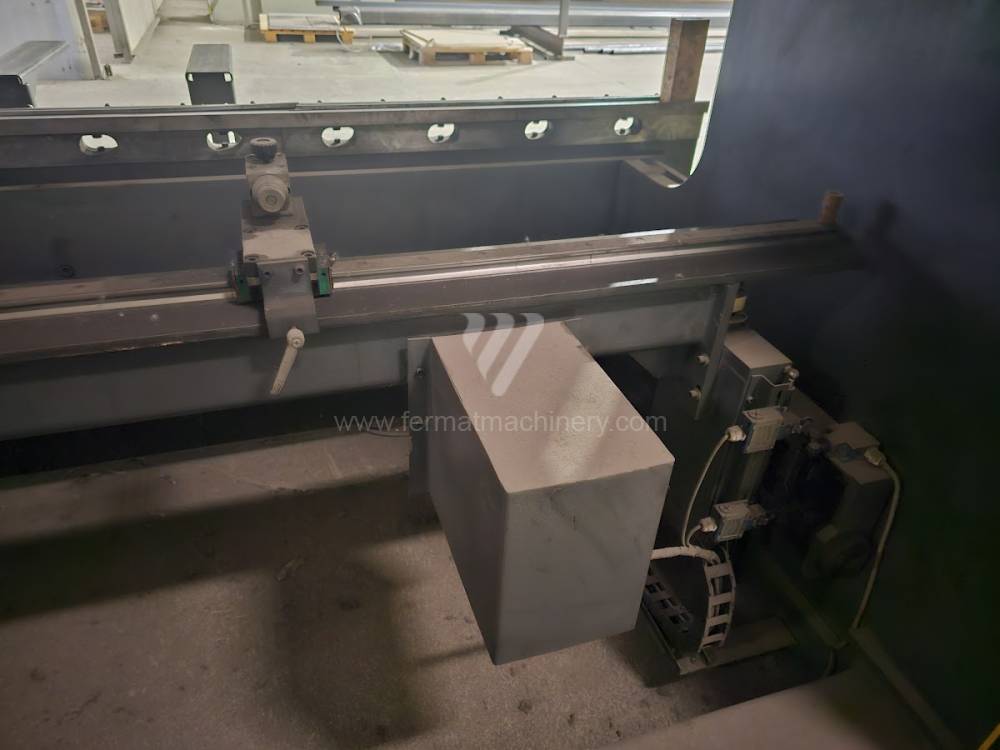
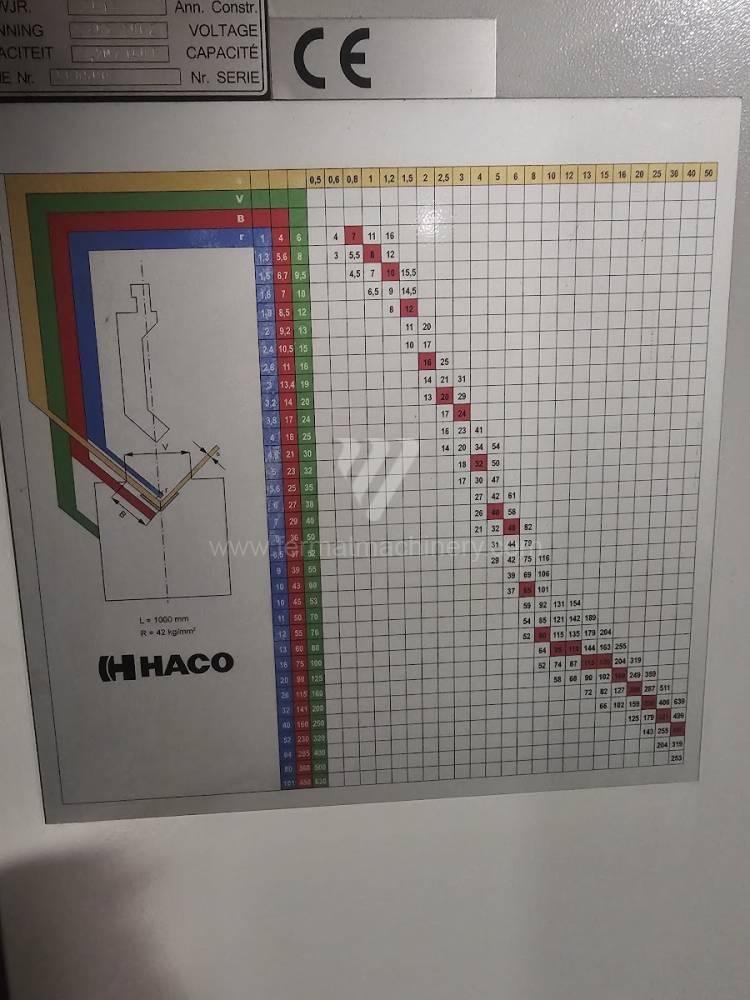
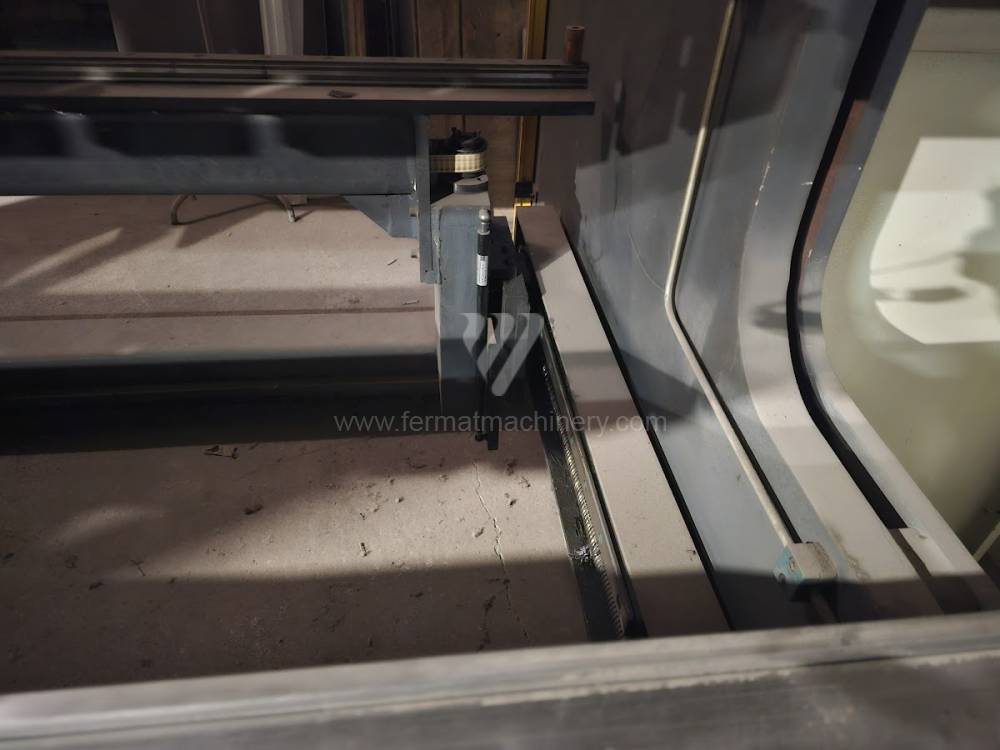
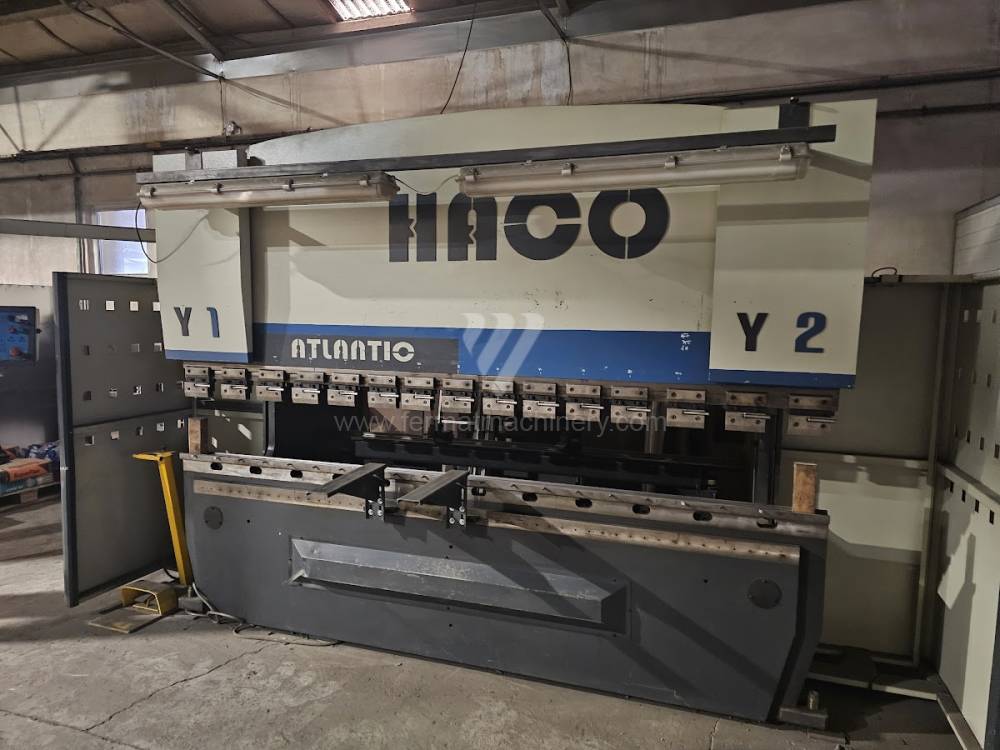
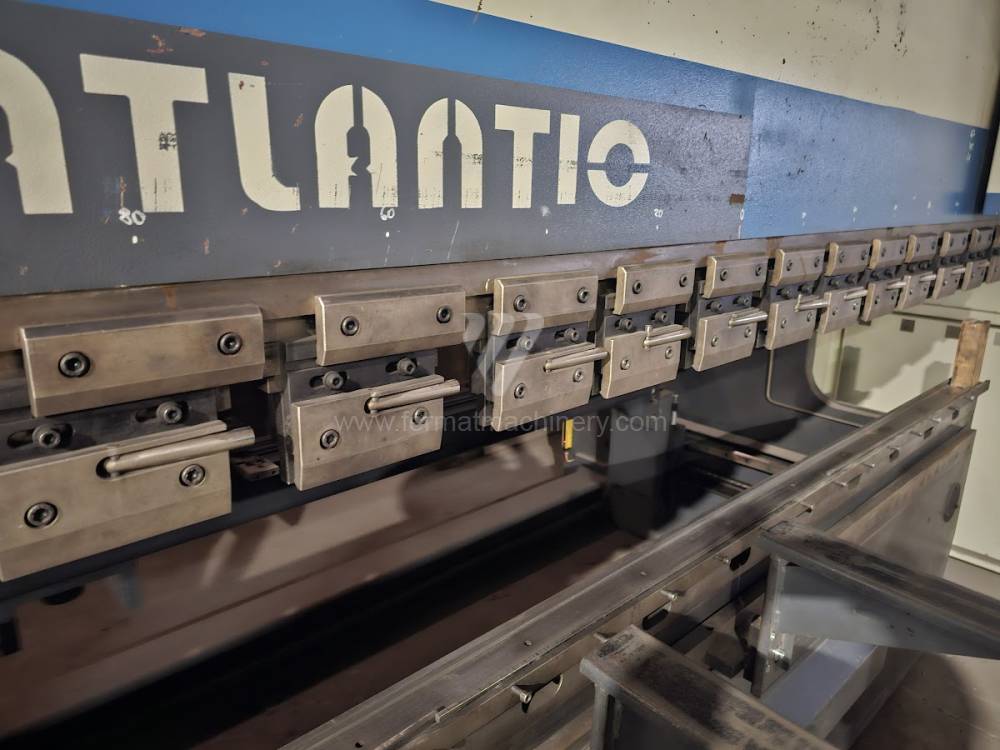
An fabricație:2015
Sistem de control Haco:
Puterea de indoire: 100 t
Lungimea de indoire: 3200 mm
Numărul axelor acționate: 4
Compensația deformării inferioare: da
Tipul acționării presei: Hydraulický
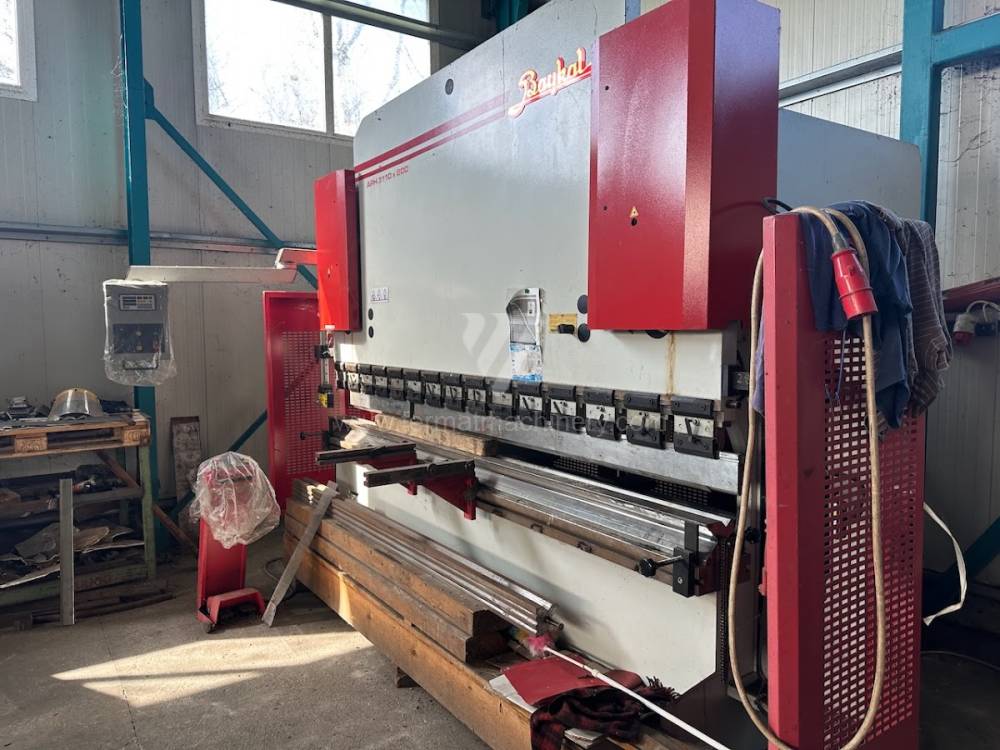
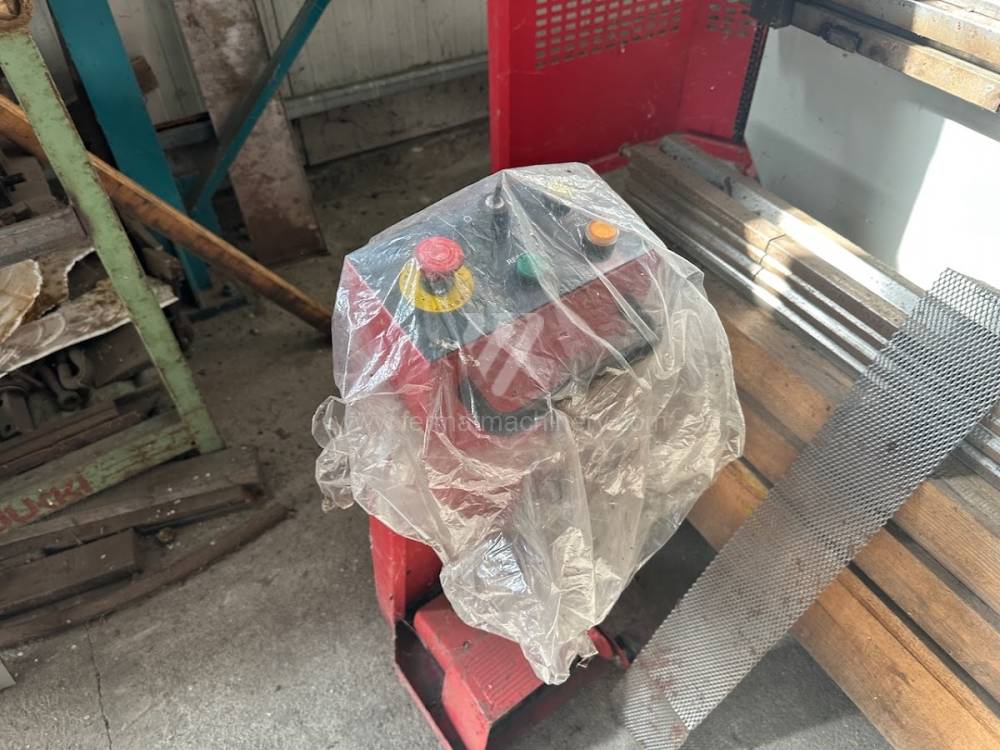
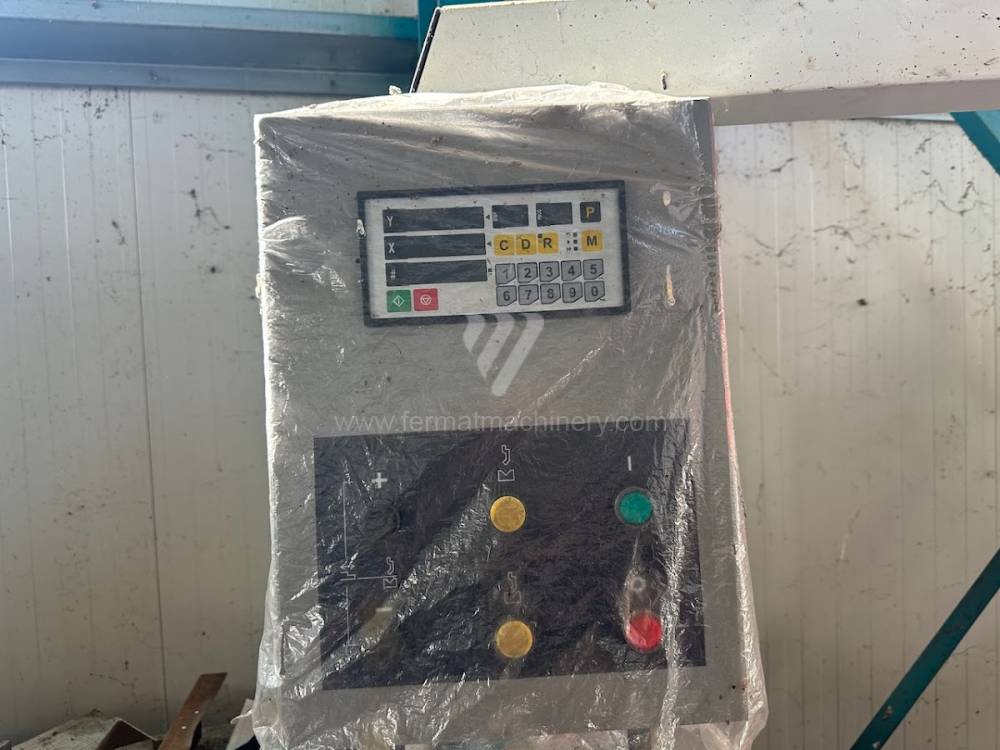
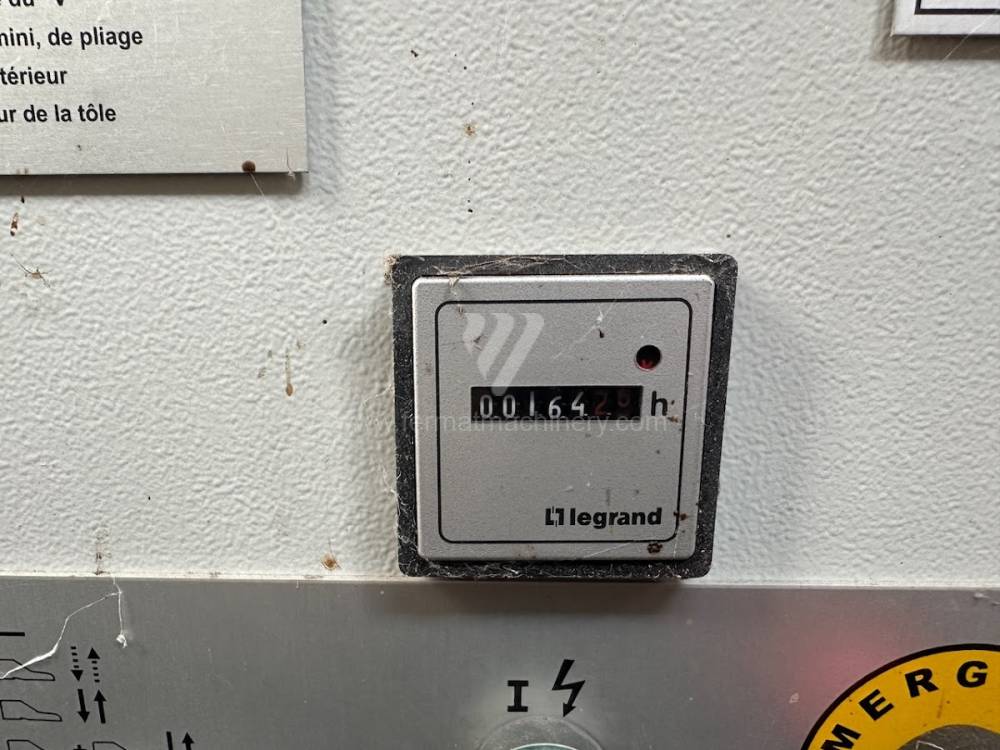
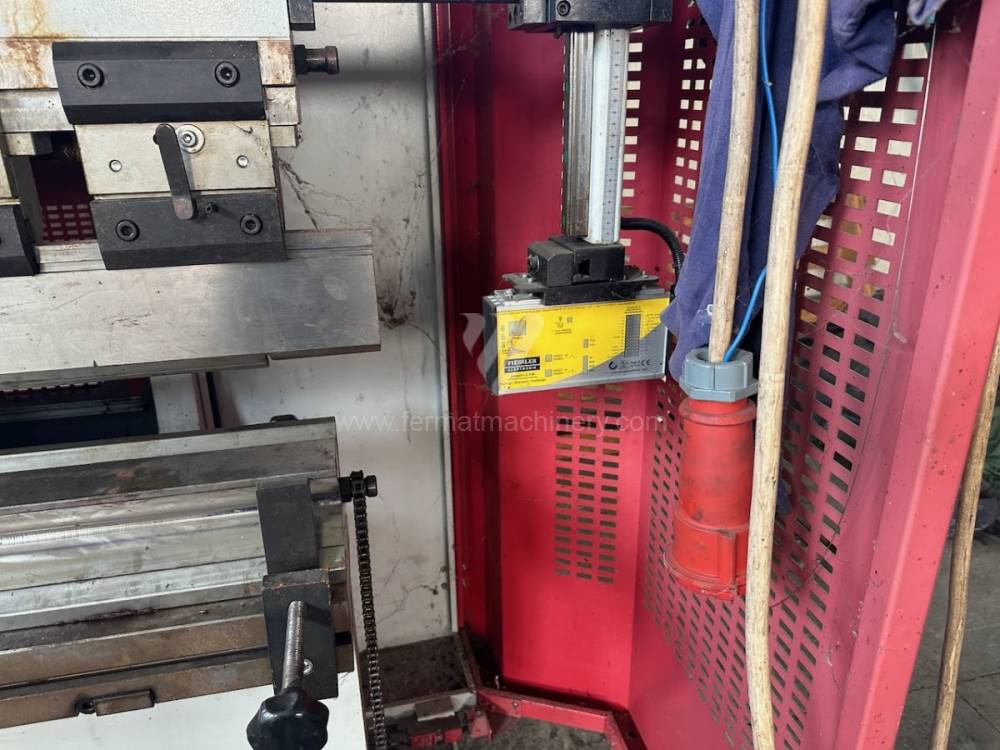
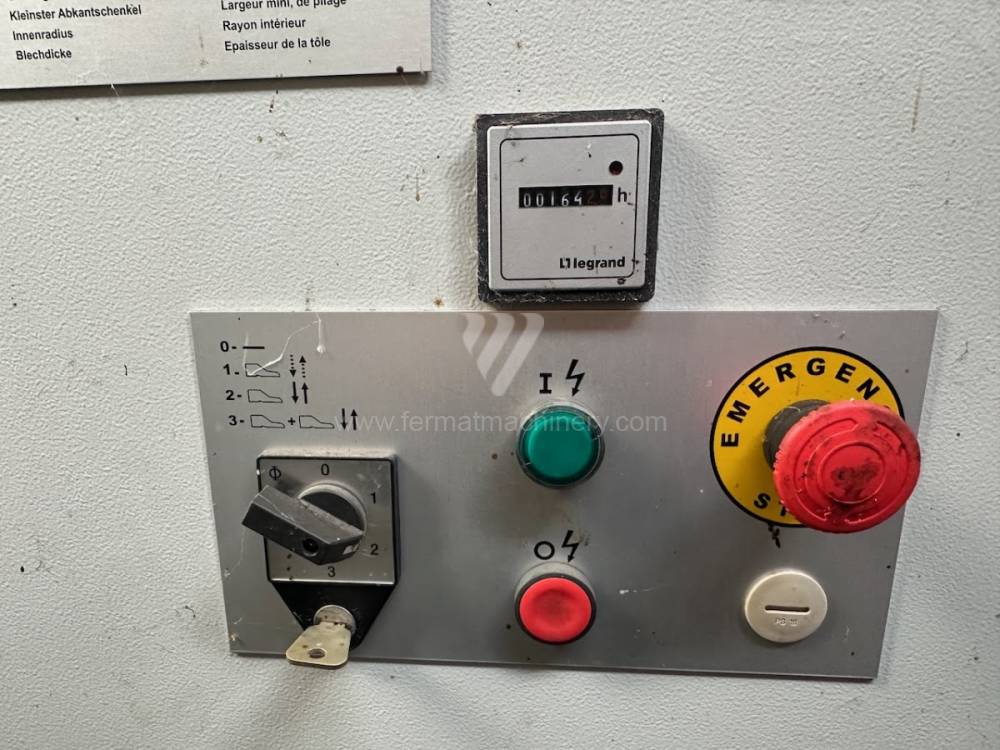
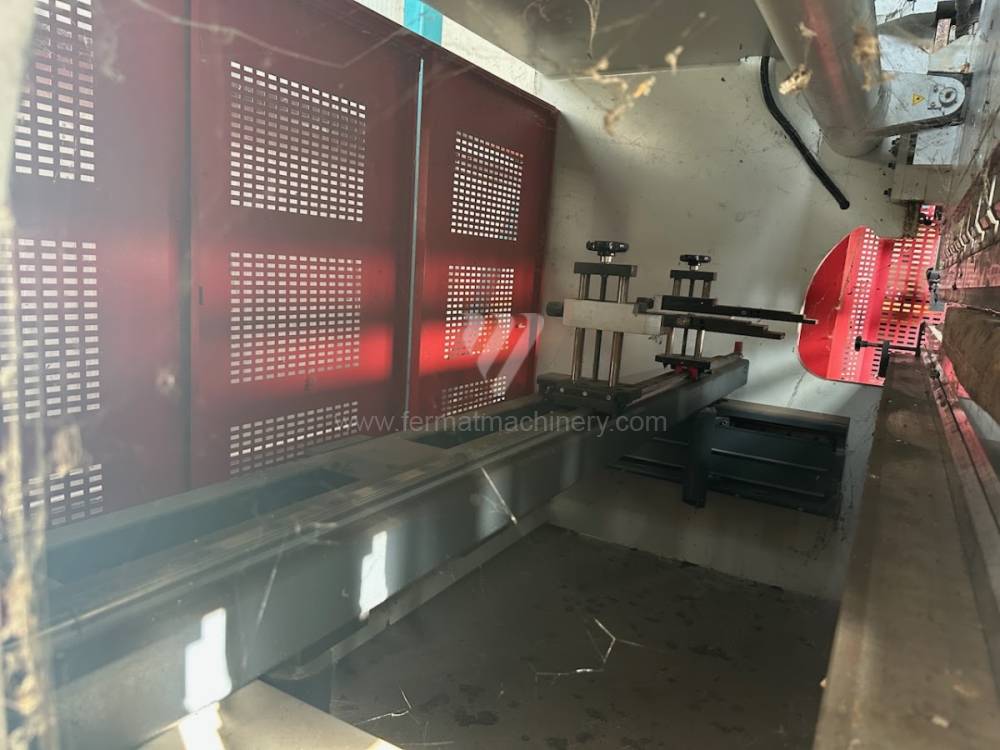
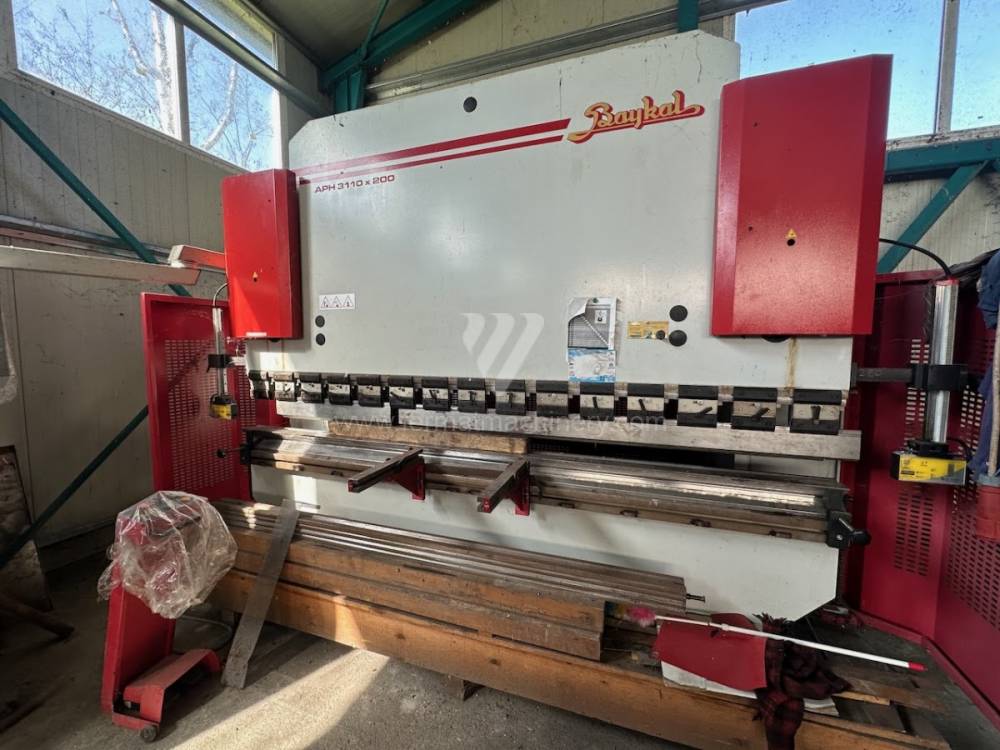
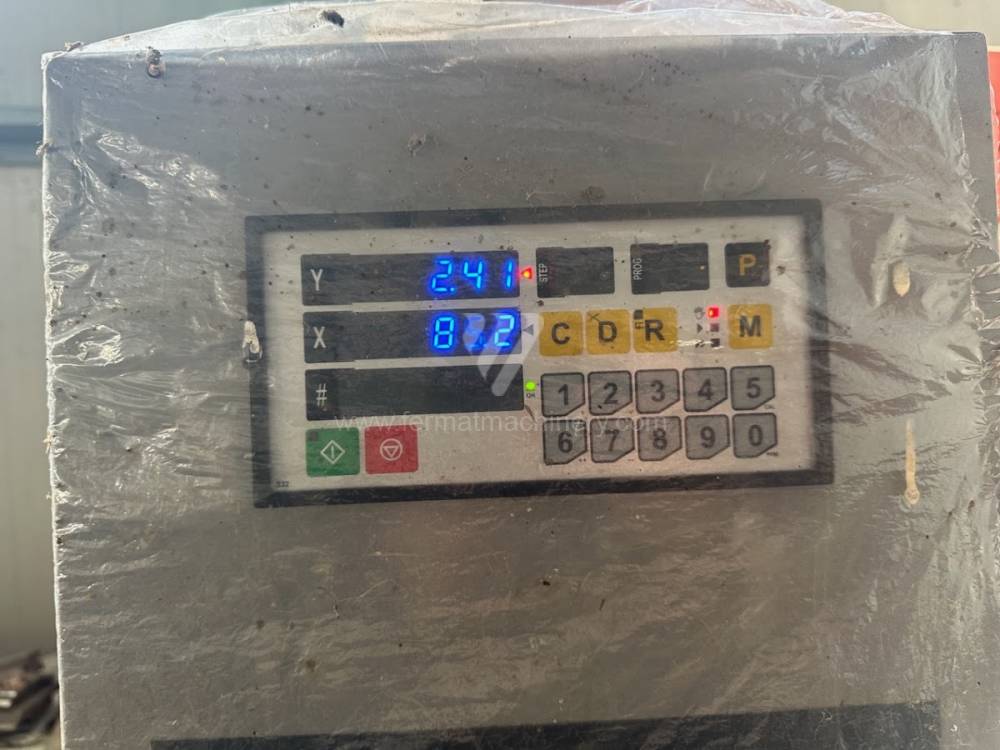
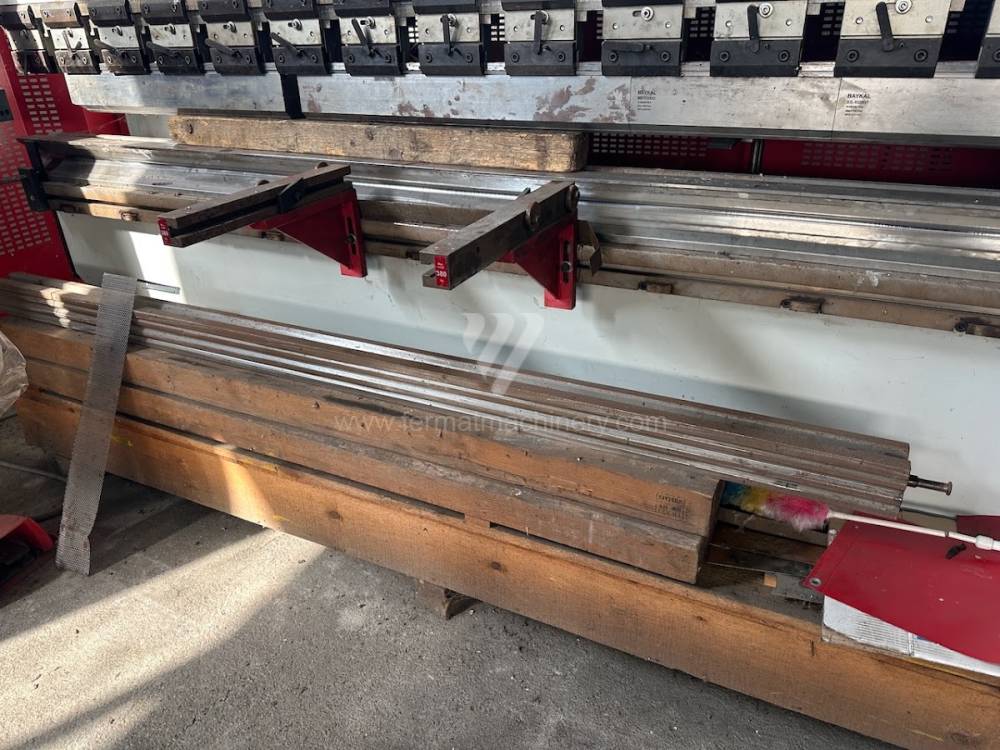
An fabricație:2012
Lungimea de indoire: 3100 mm
Puterea de indoire: 200 t
Numărul axelor acționate: 2
Tipul acționării presei: Hydraulický
Compensația deformării inferioare: da
Cursa culisei: 150÷250 mm
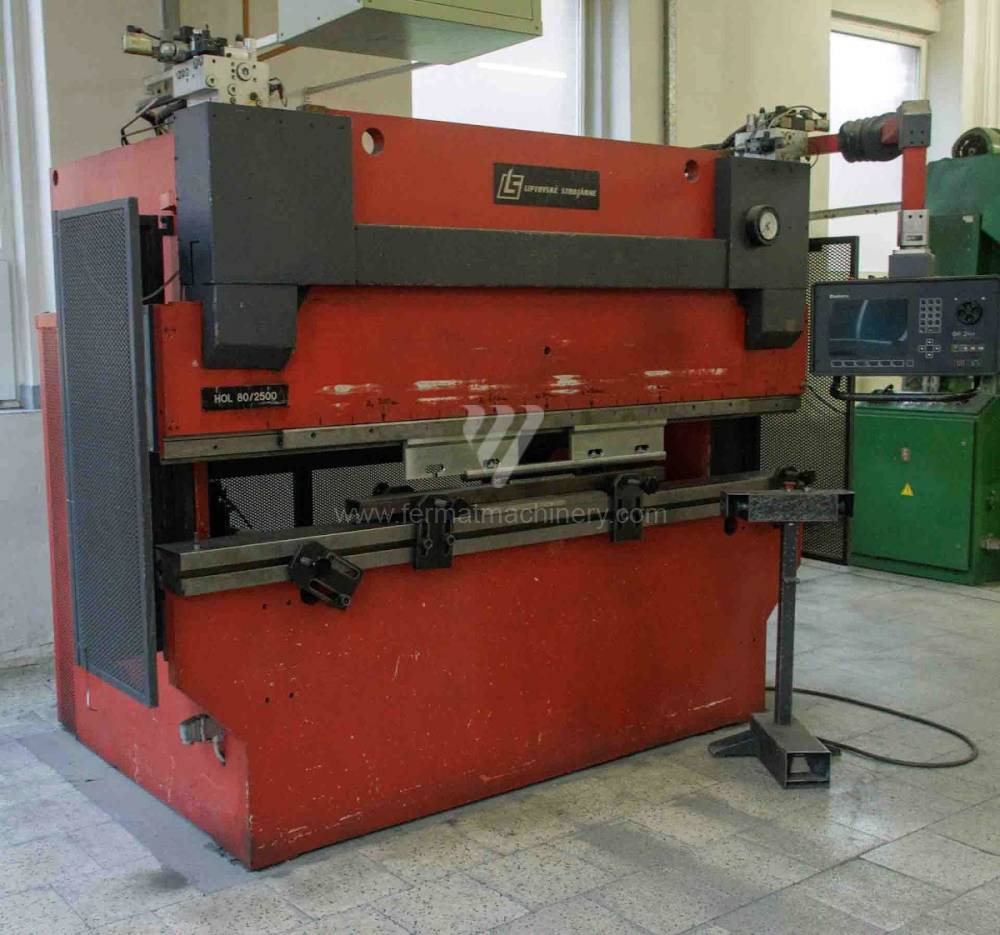
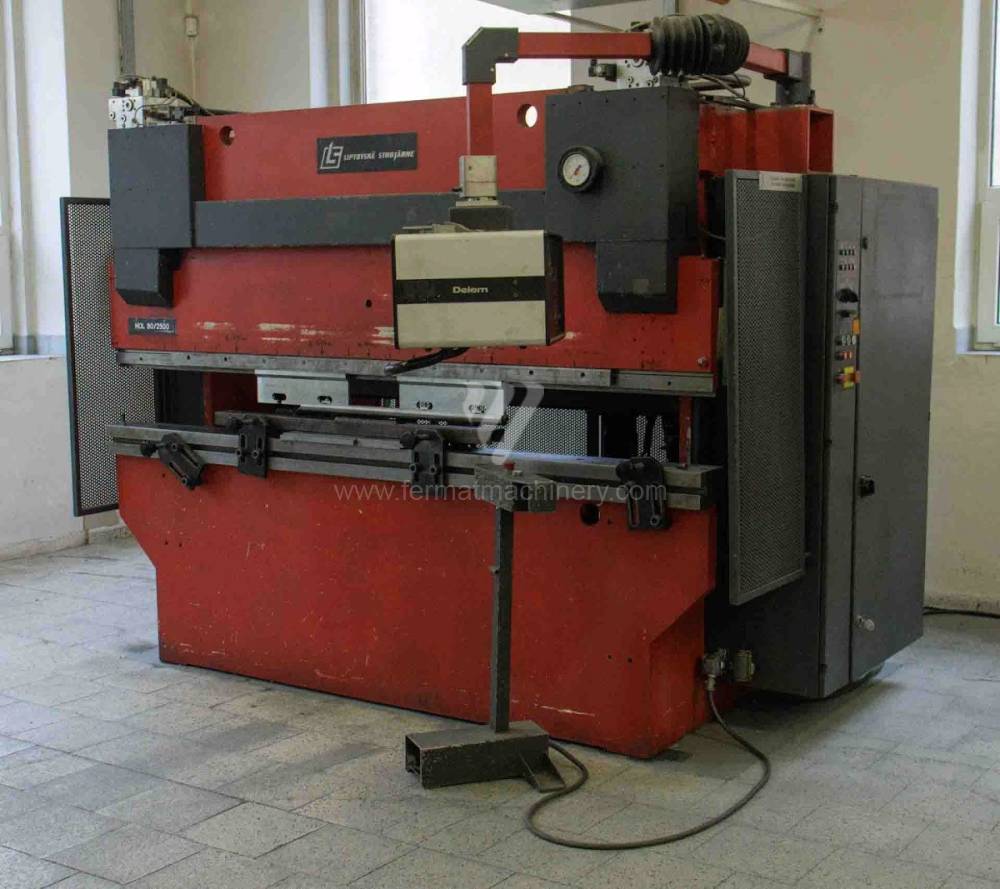
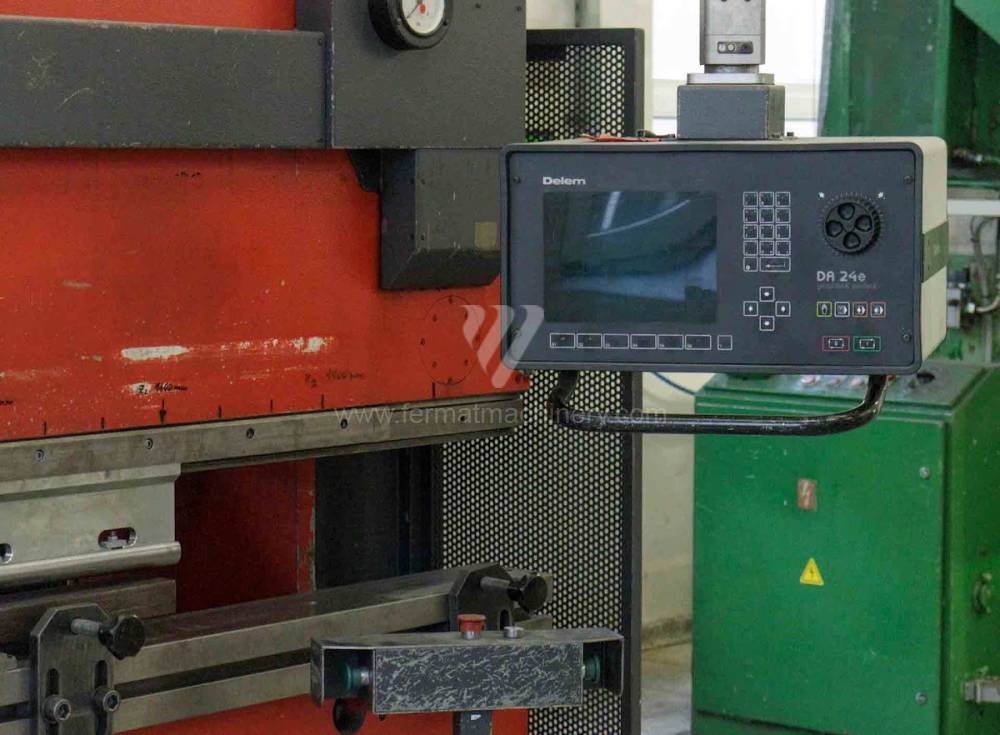
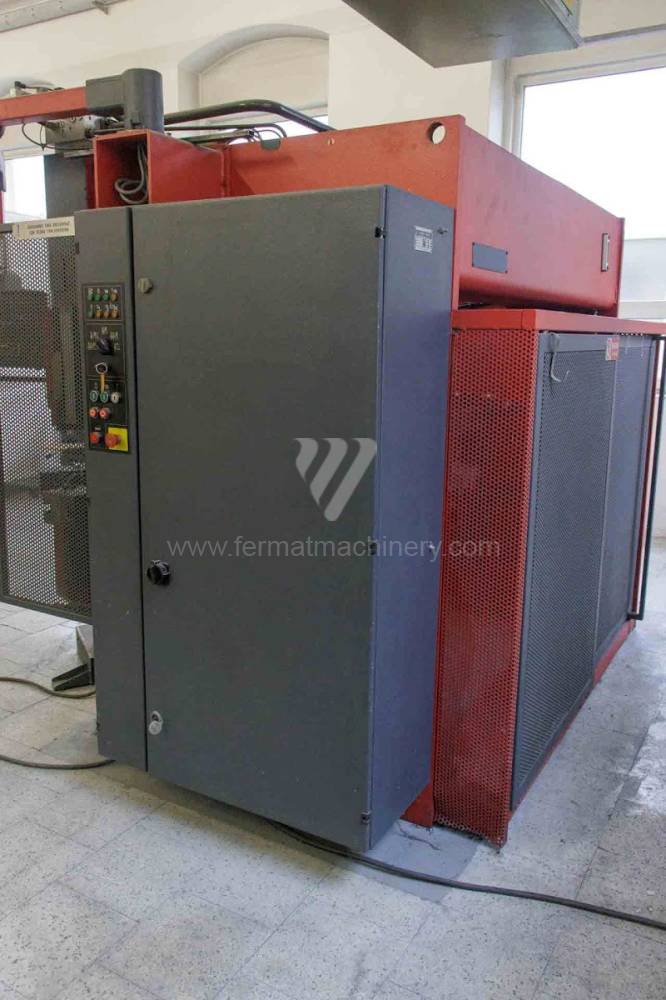
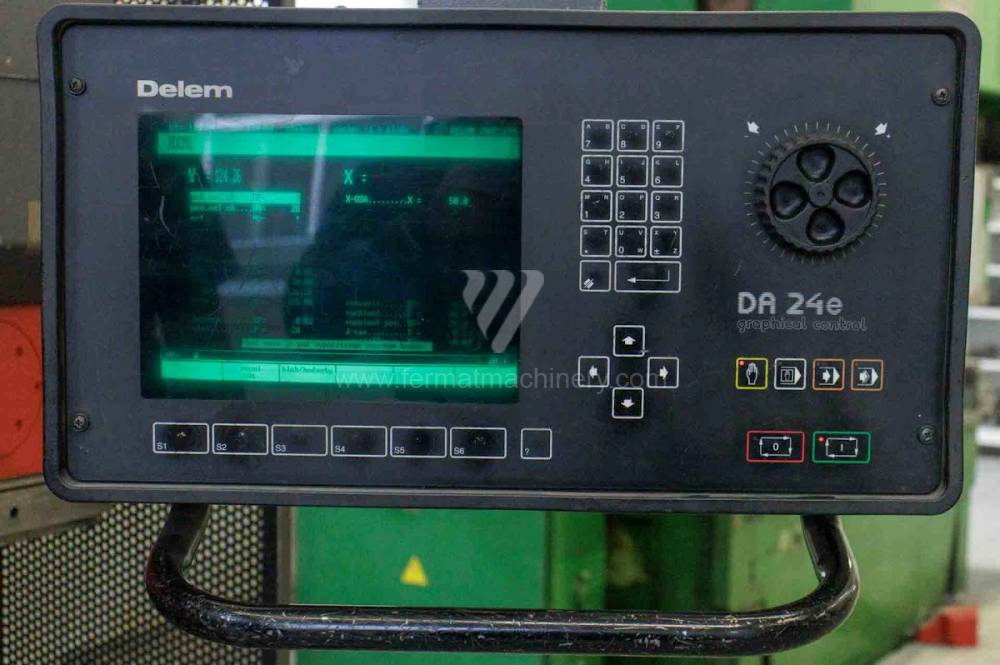
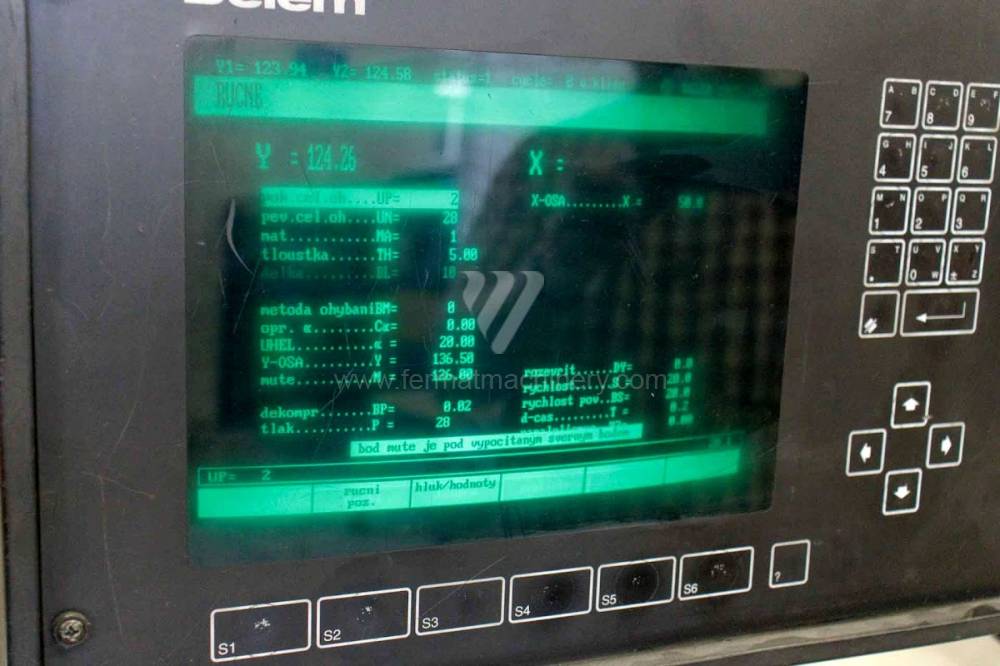
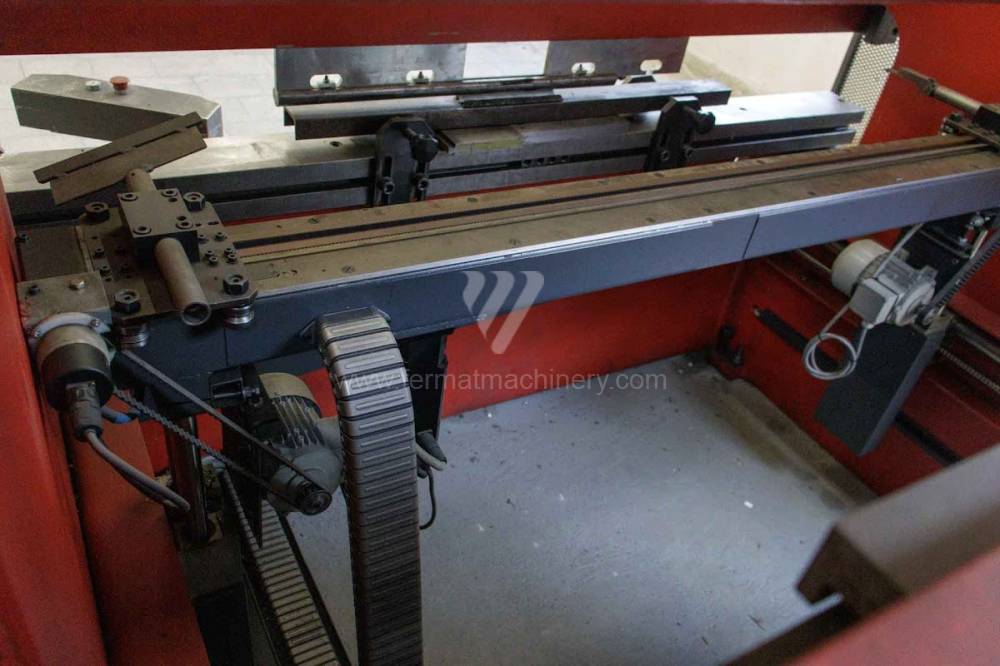
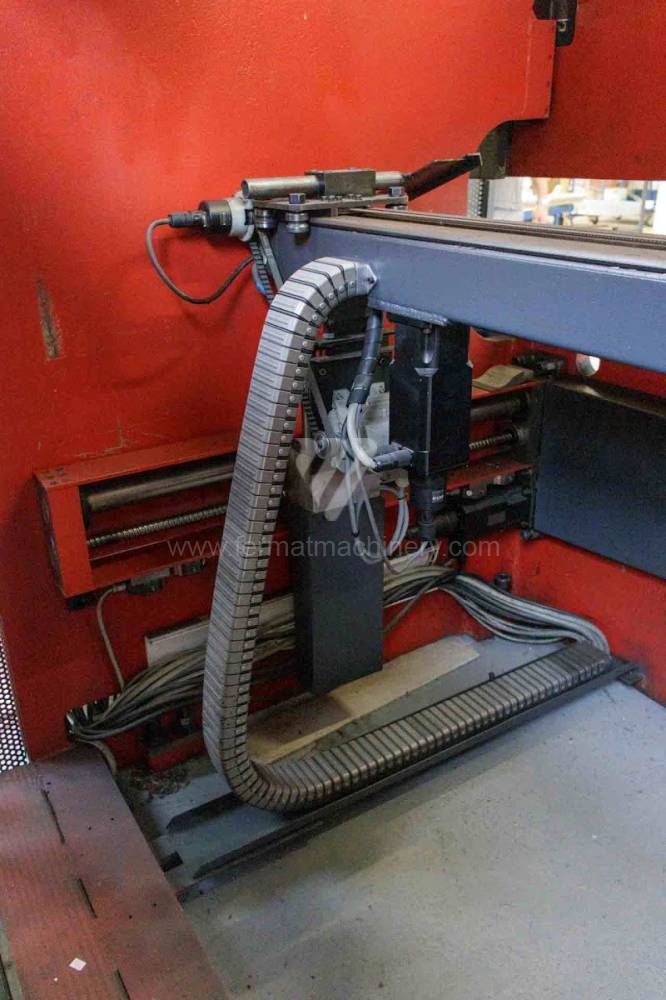
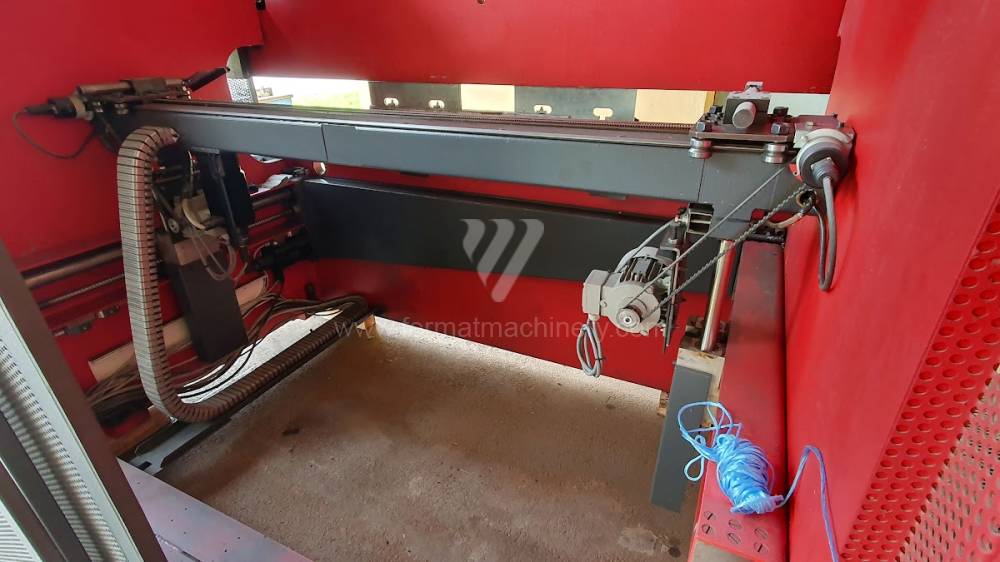
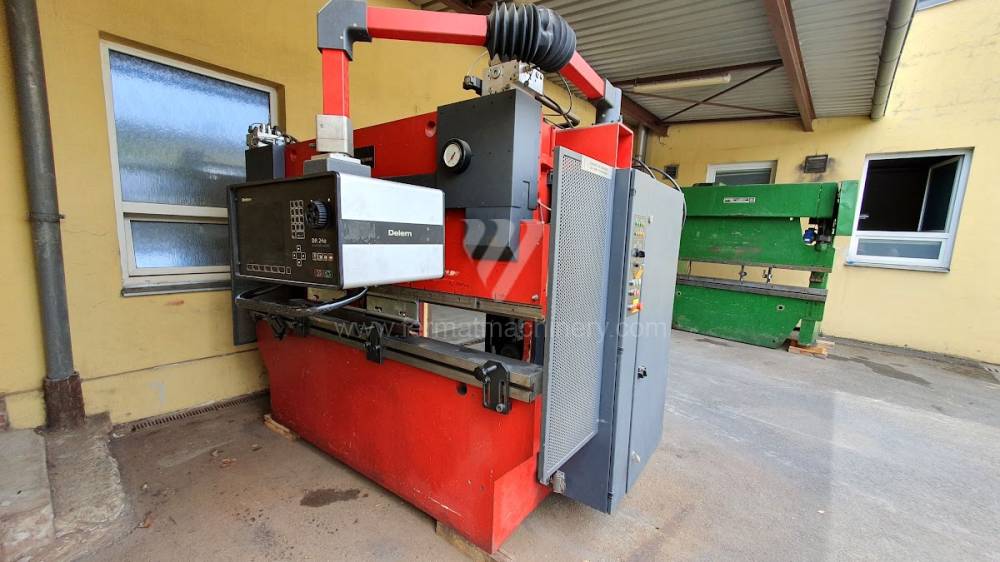
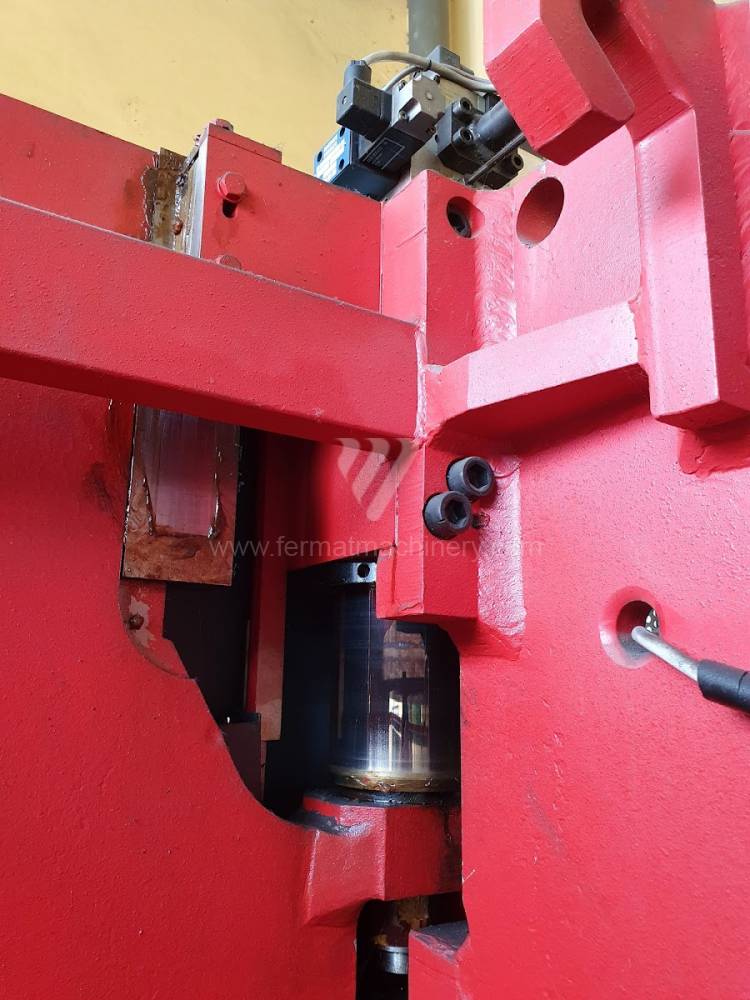
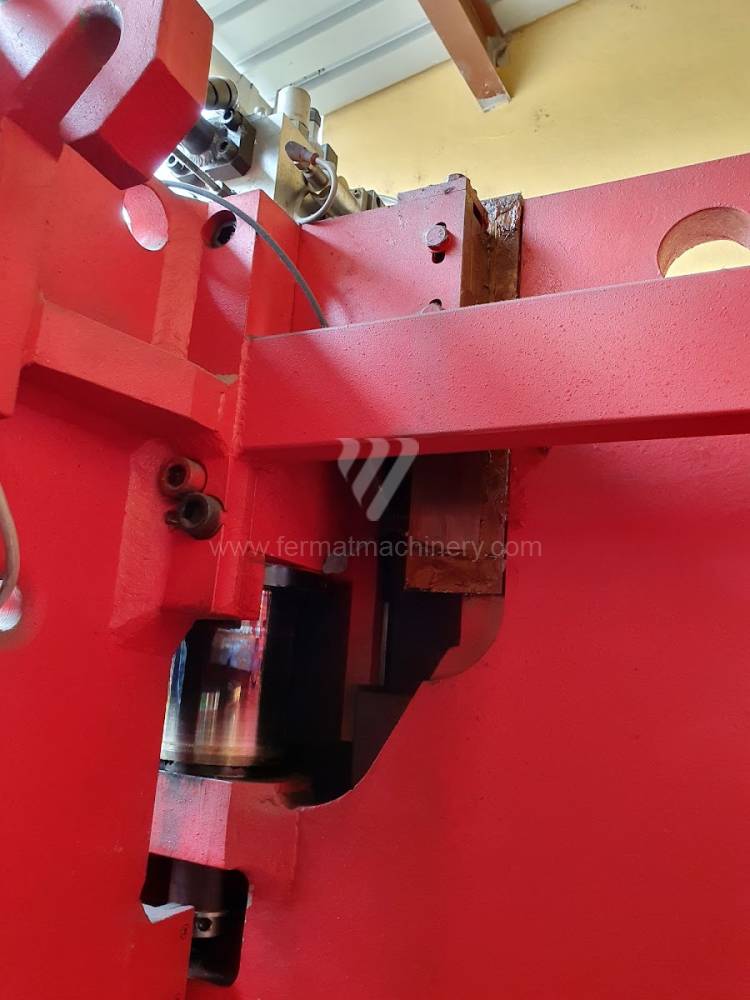
An fabricație:1997
Sistem de control Delem: DA 24e
Puterea de indoire: 80 t
Lungimea de indoire: 2500 mm
Numărul axelor acționate: 4
Compensația deformării inferioare: nu
Tipul acționării presei: Hydraulický
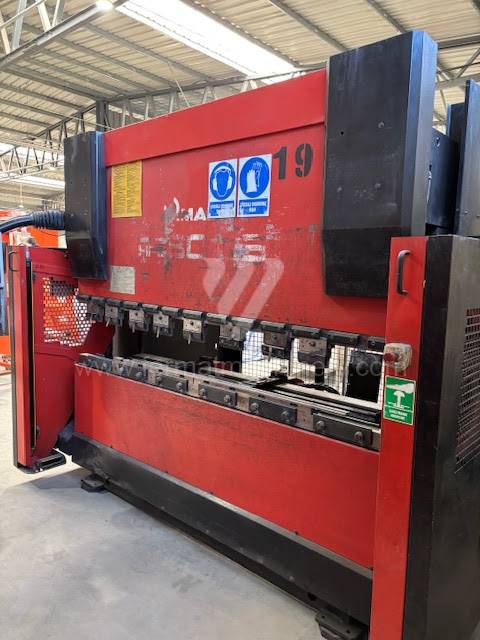
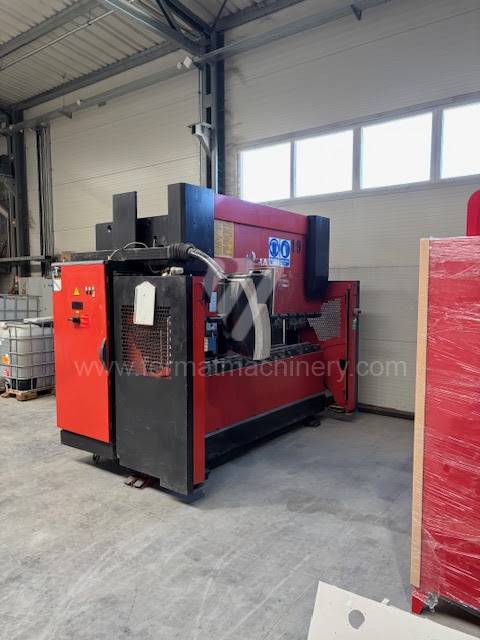
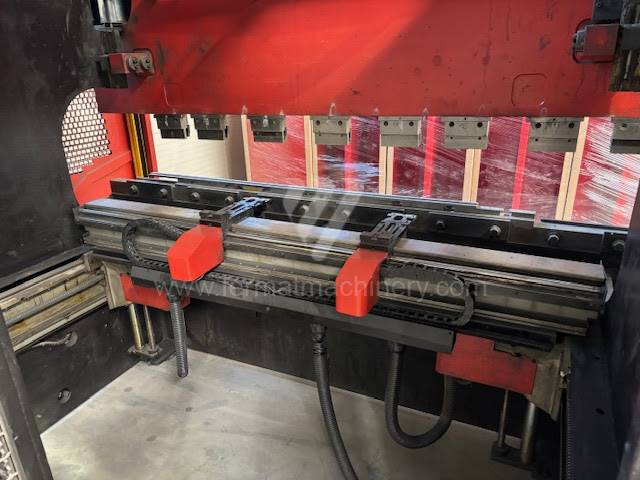
An fabricație:2001
Puterea de indoire: 80 t
Lungimea de indoire: 2500 mm
Numărul axelor acționate: 8
Compensația deformării inferioare: da
Tipul acționării presei: Hydraulický
Dimensiunile mașinii L x l x Î: 3500x1600x2500 mm
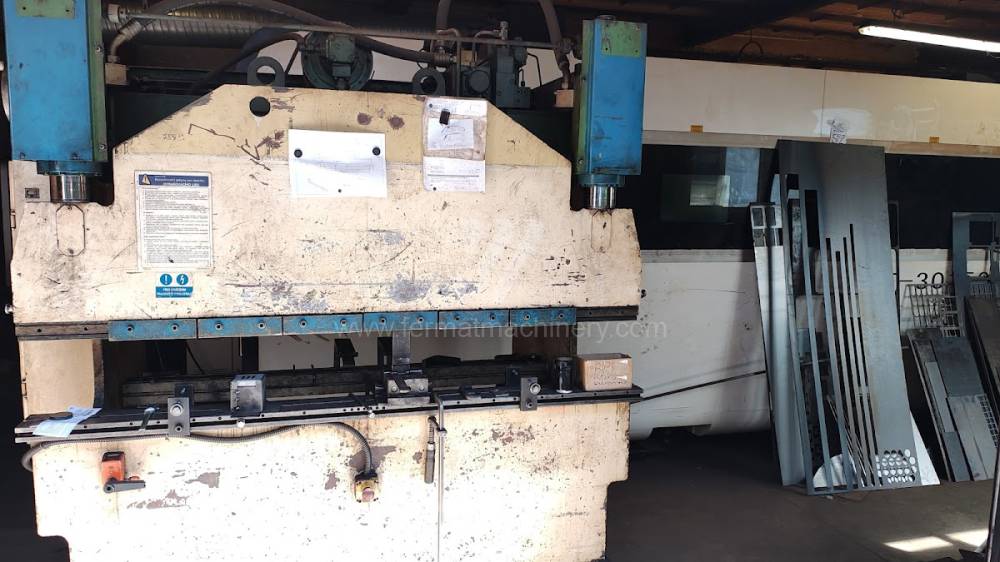
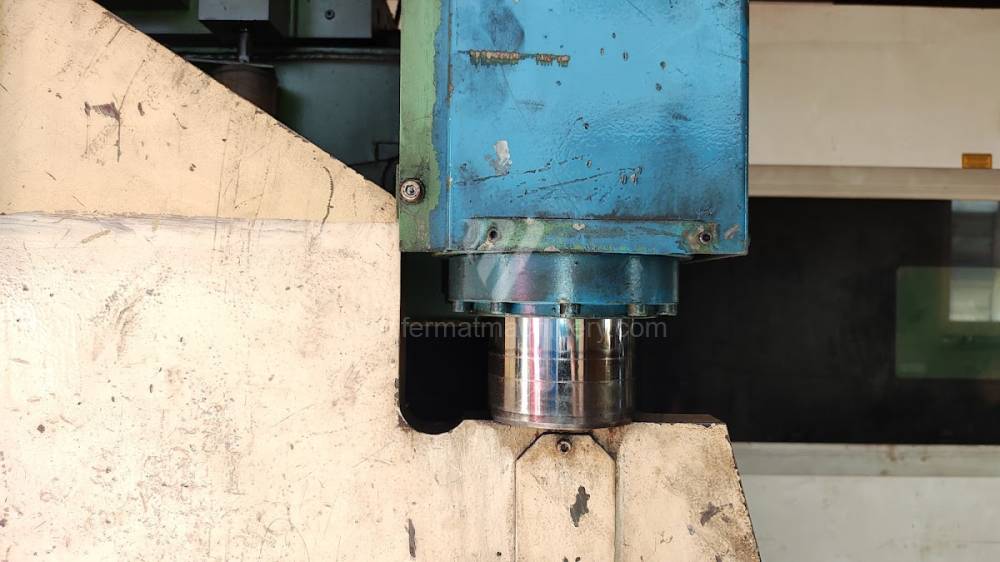
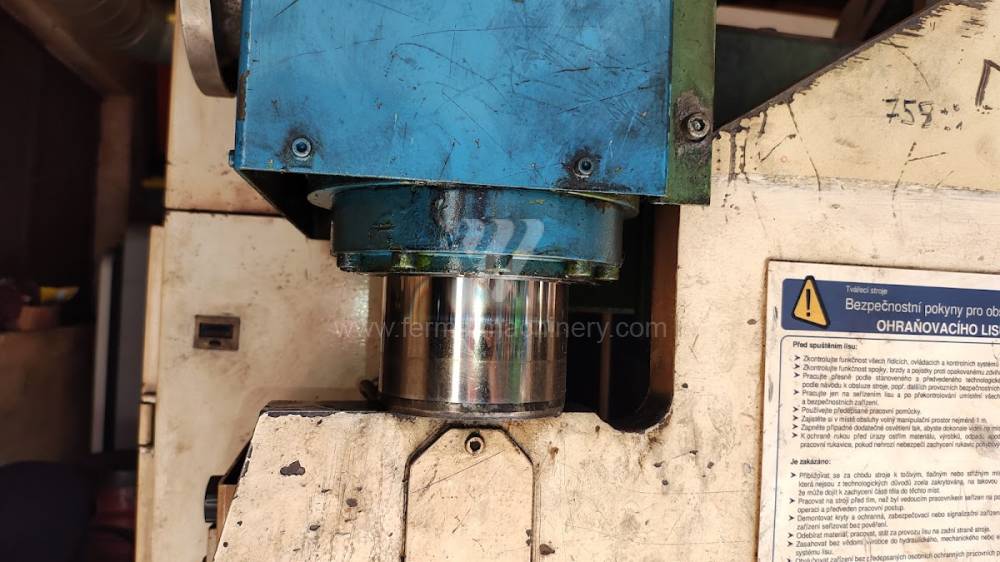
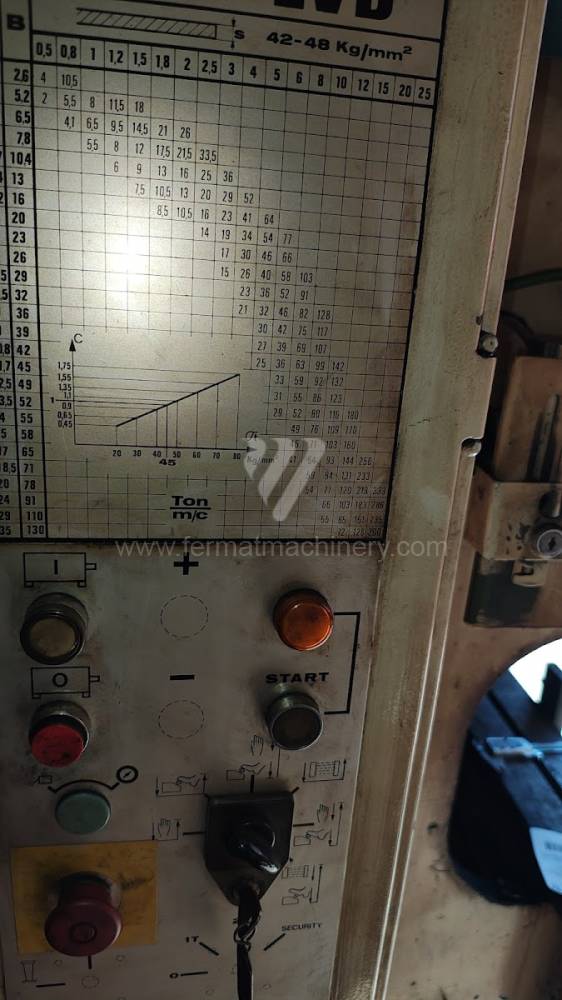
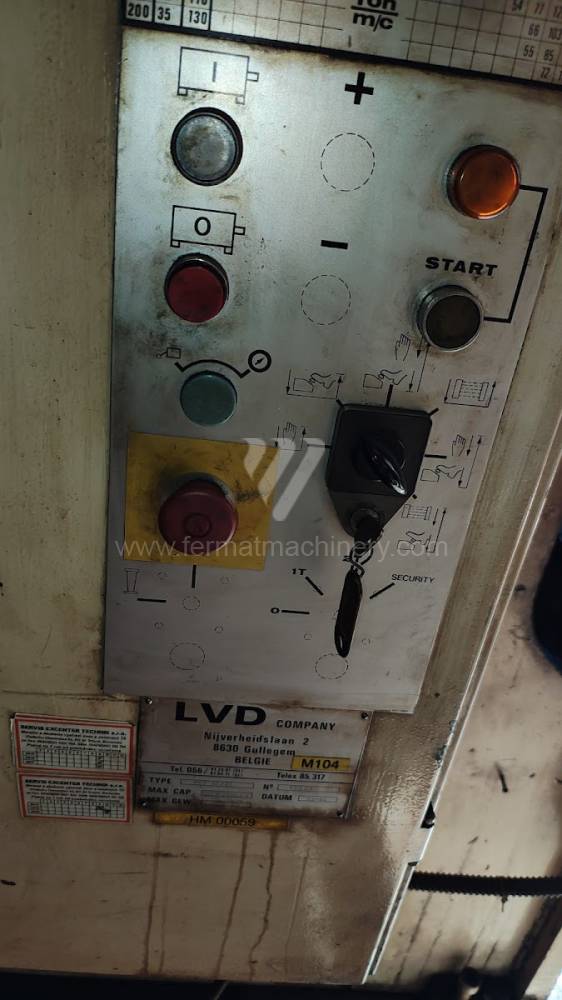
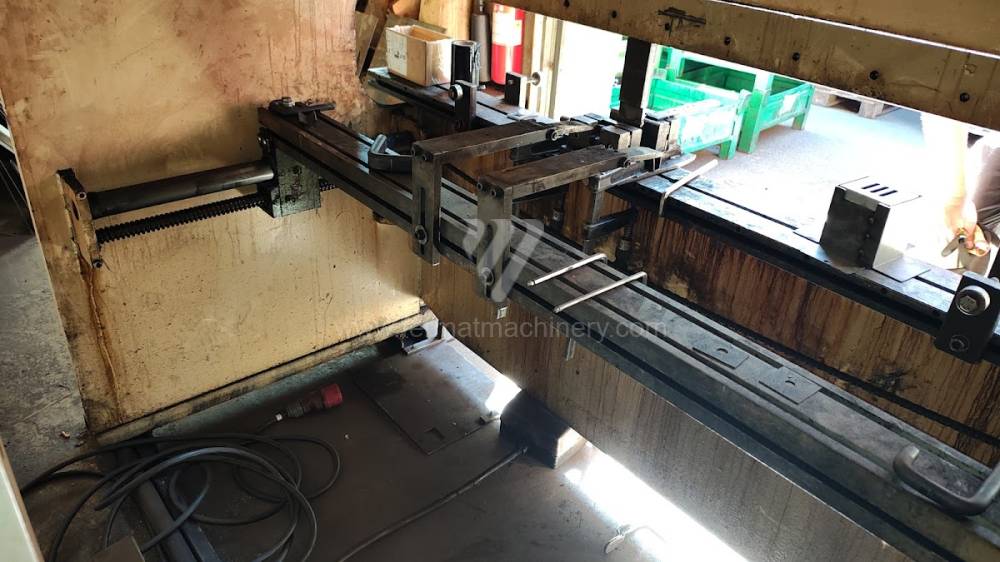
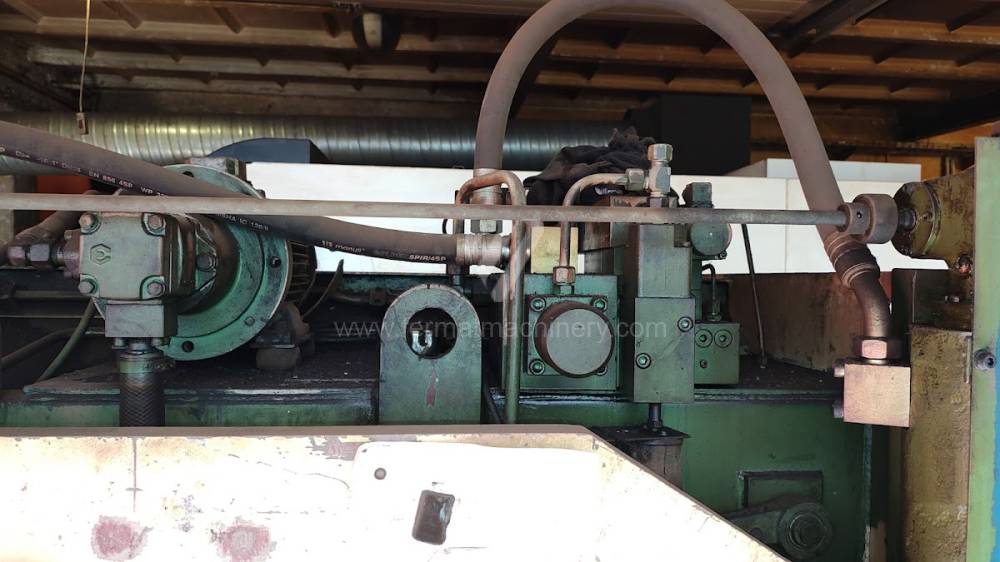
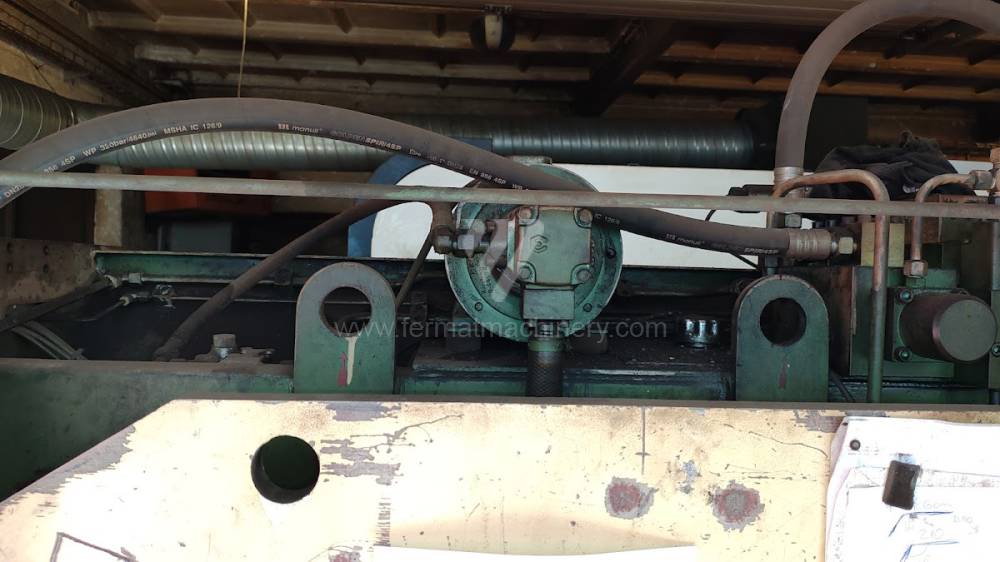
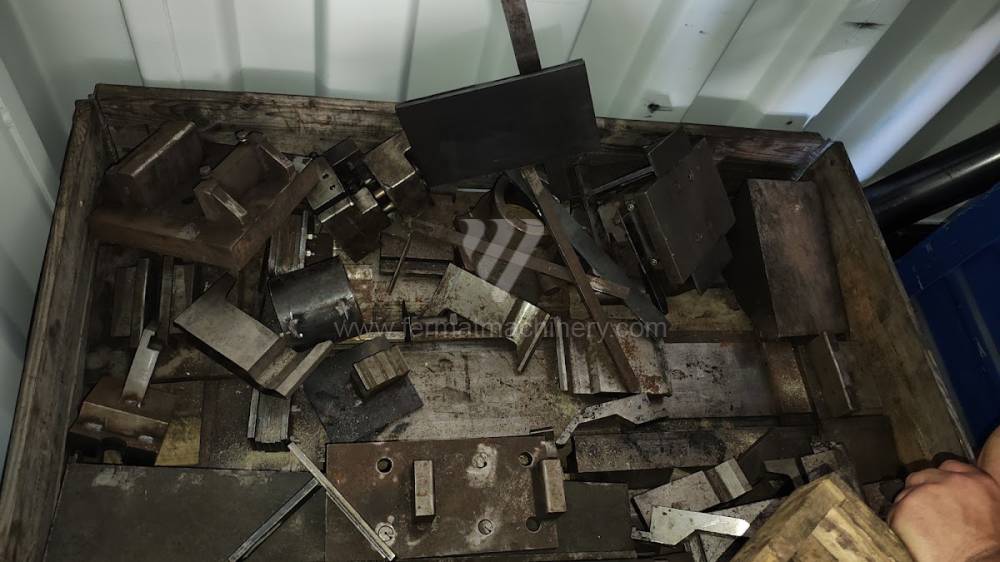
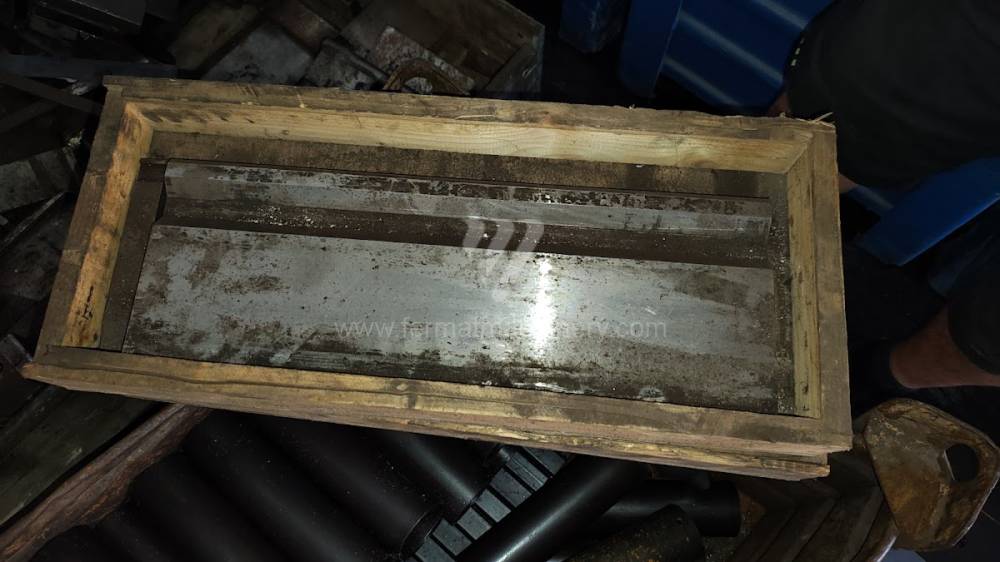
An fabricație:1984
Puterea de indoire: 50 t
Lungimea de indoire: 2000 mm
Tipul acționării presei: Hydraulický
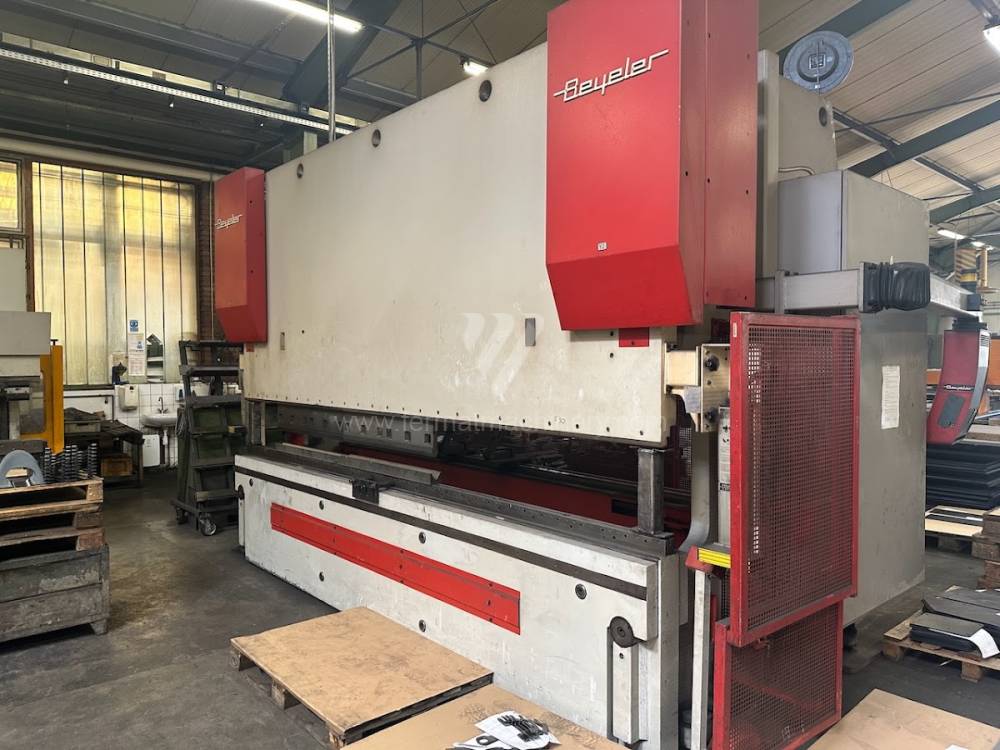
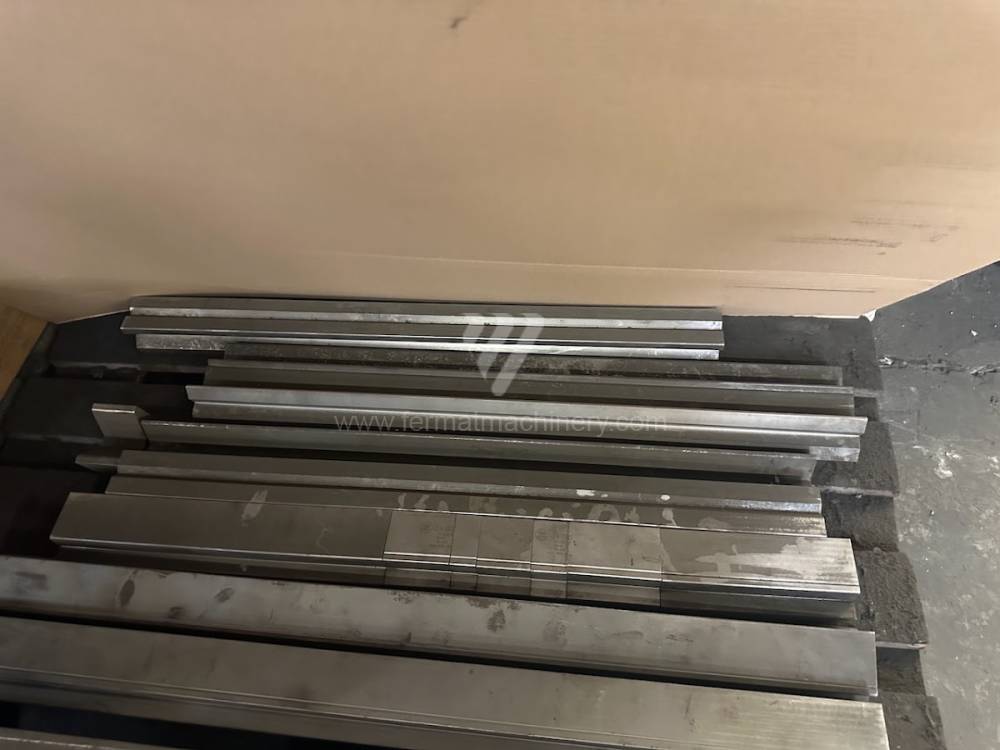
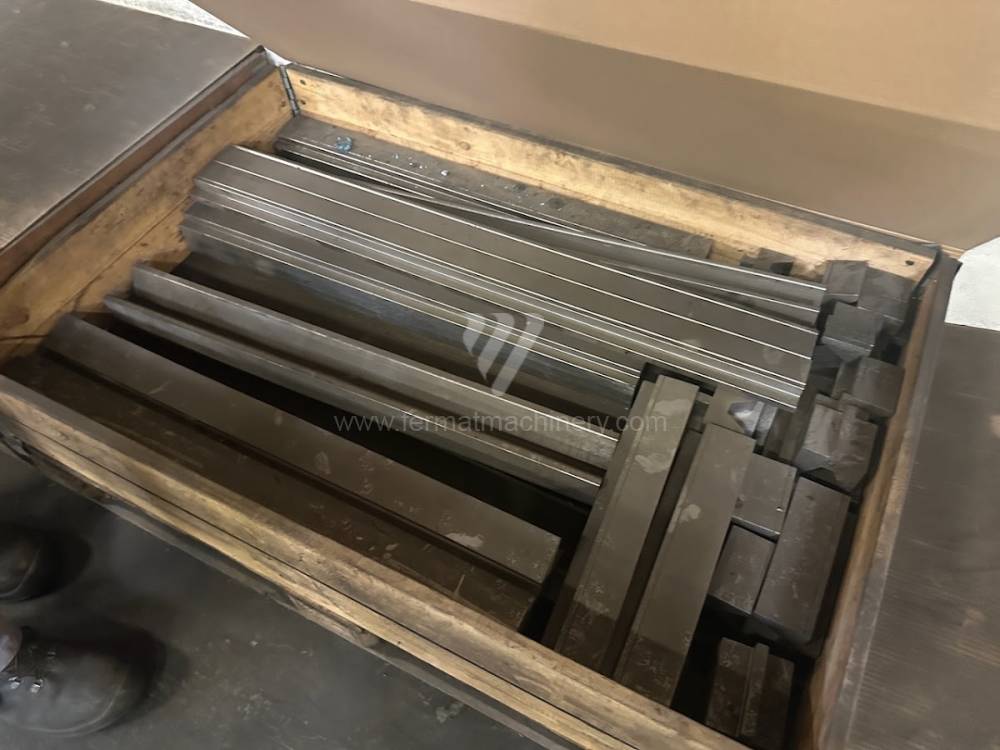
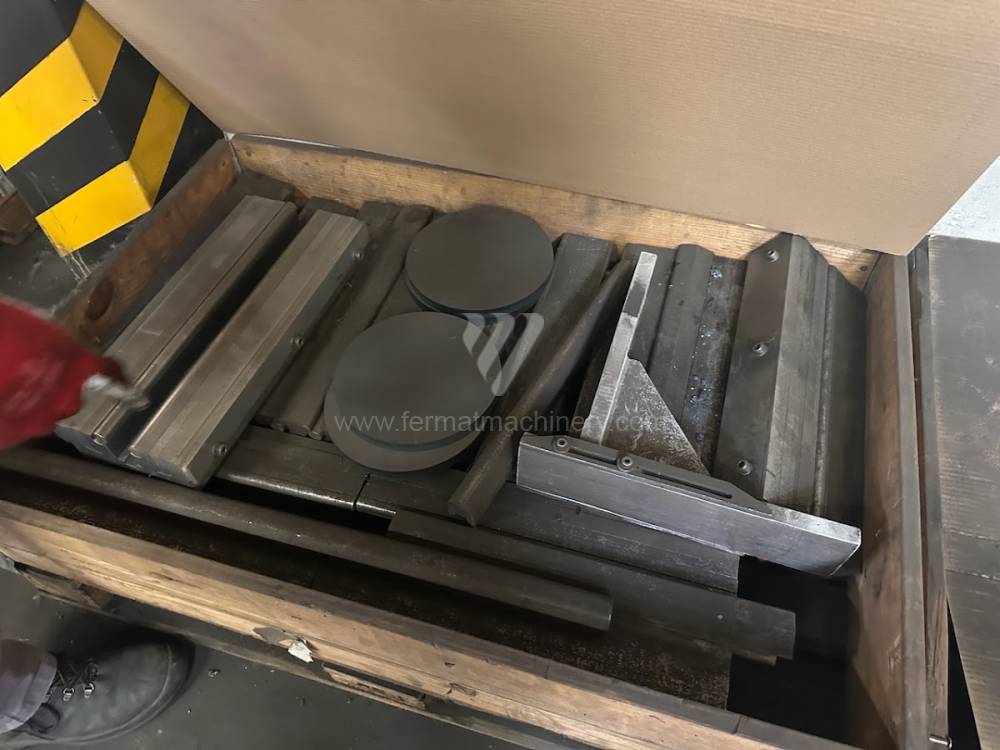
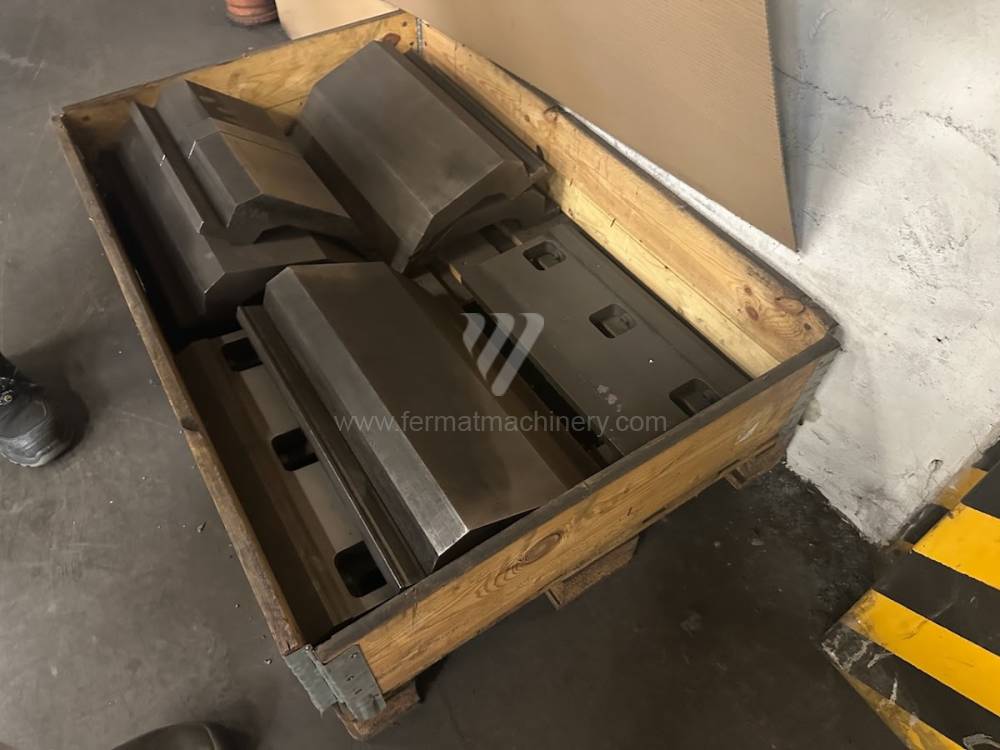
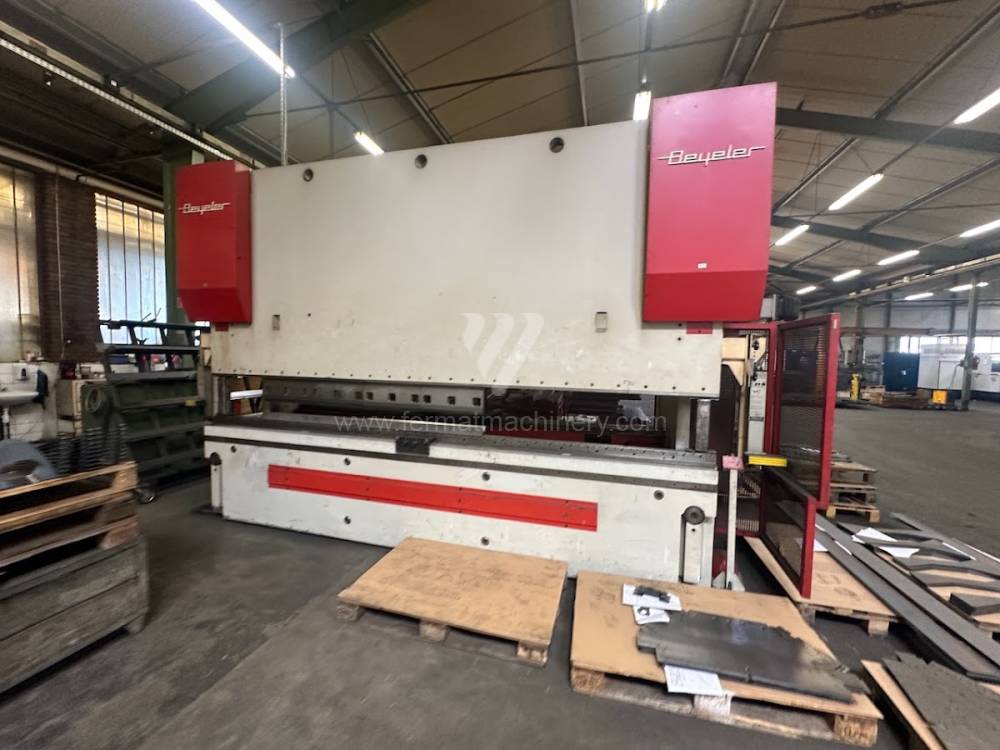
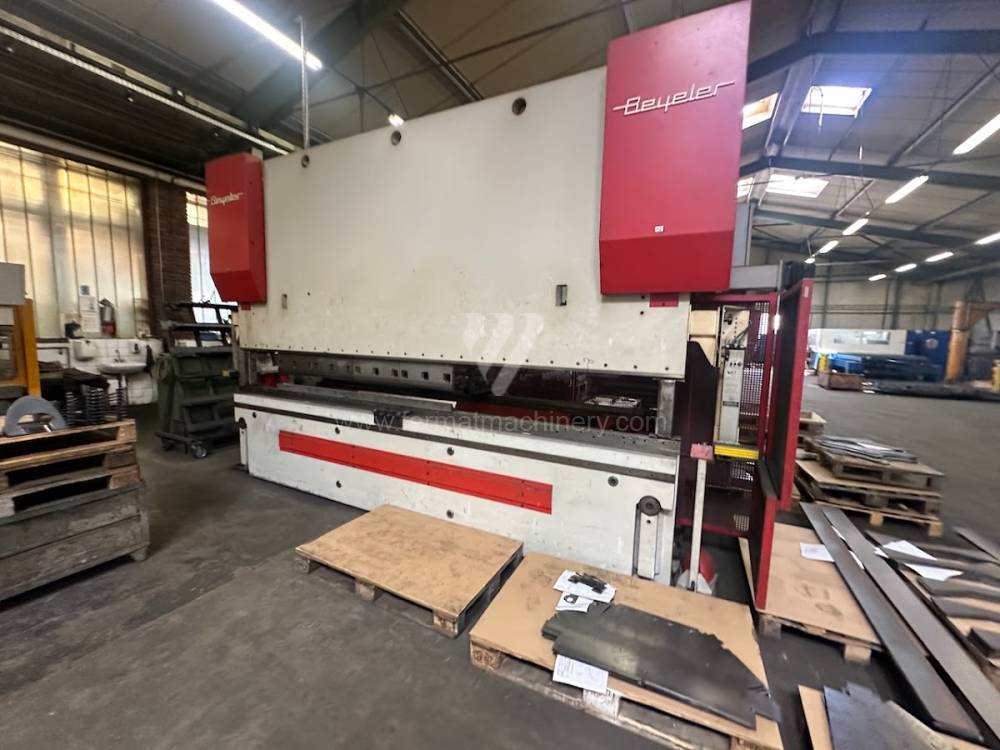
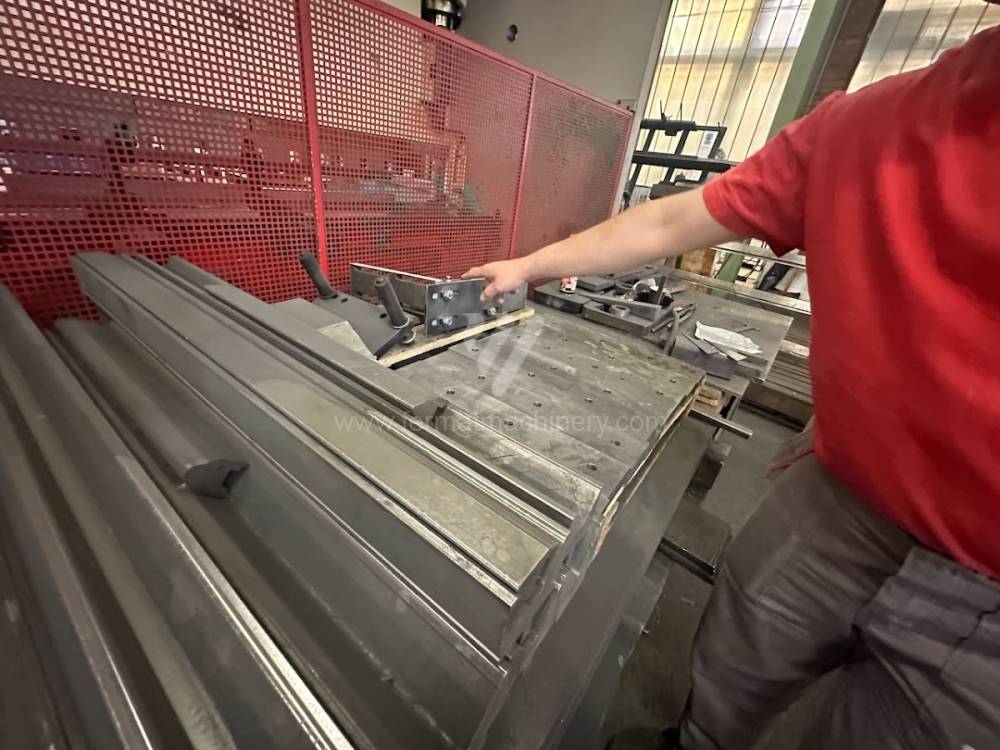
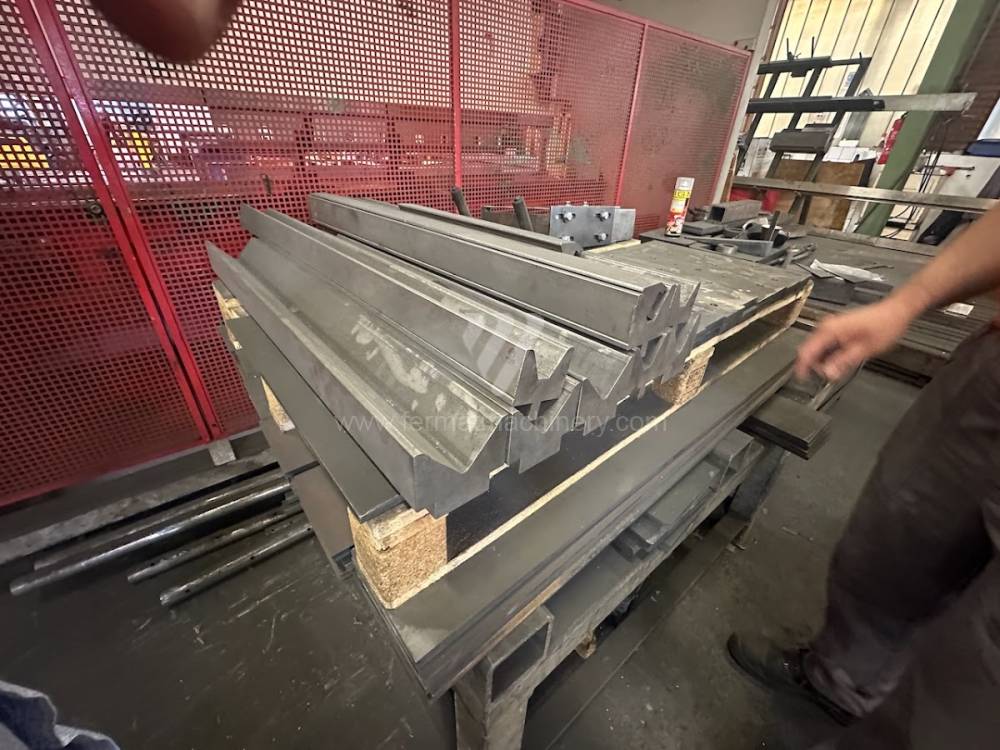
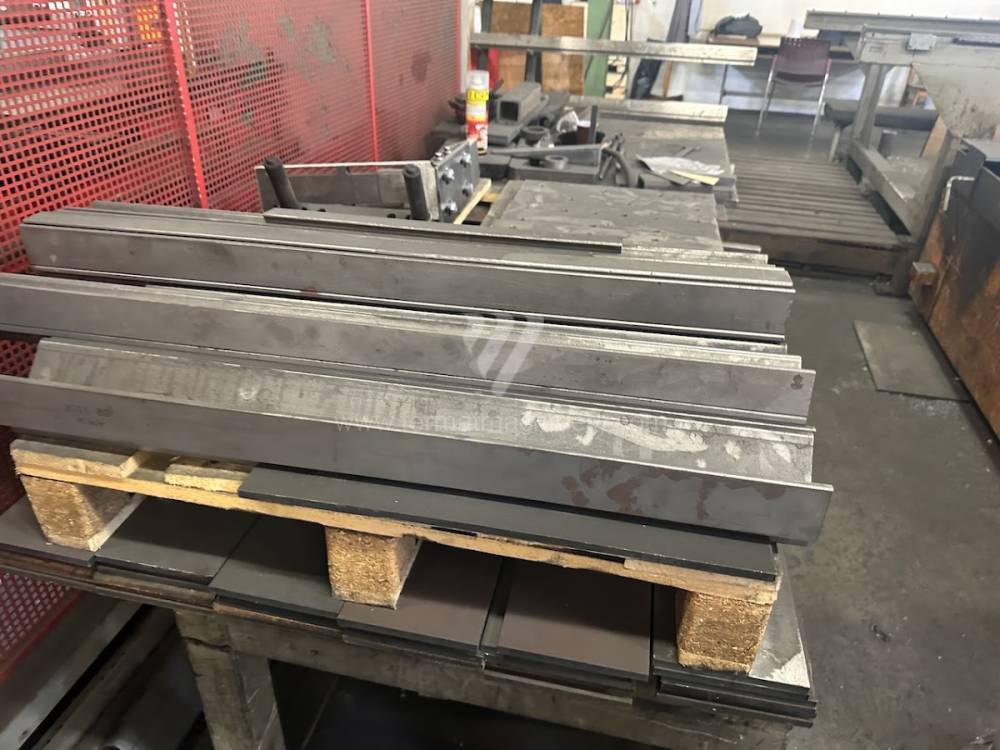
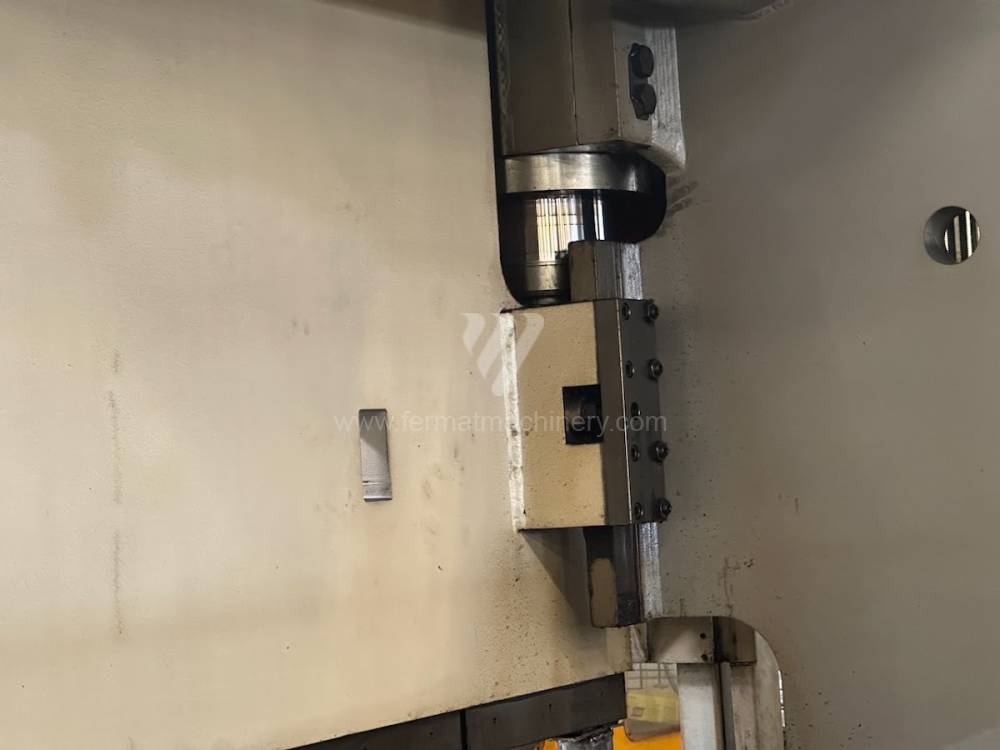
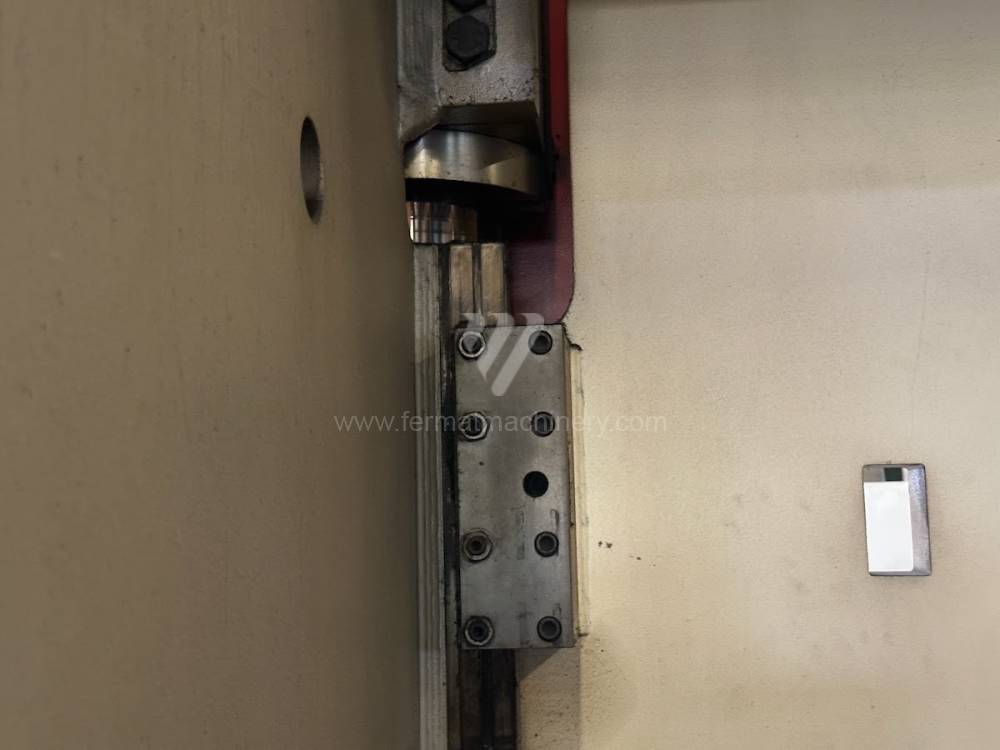
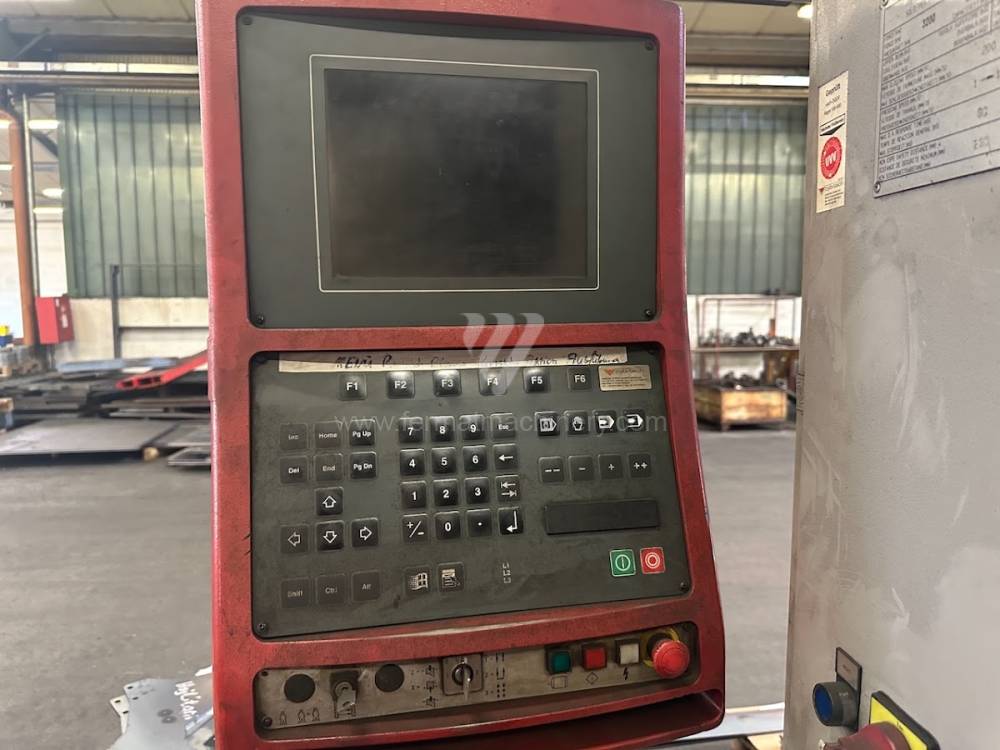
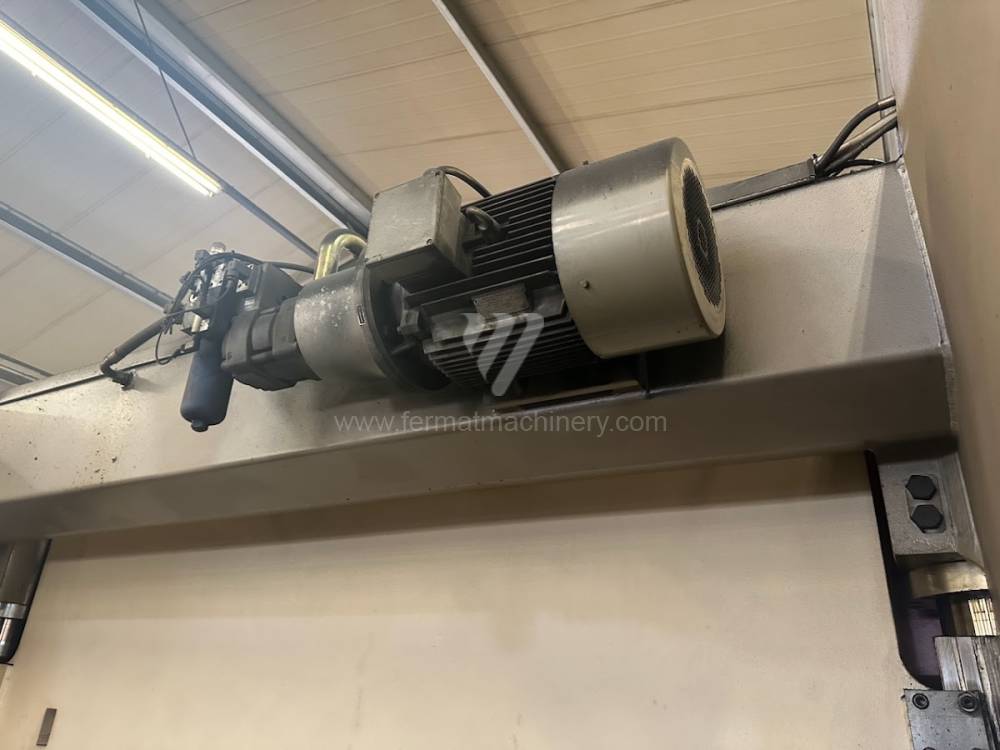
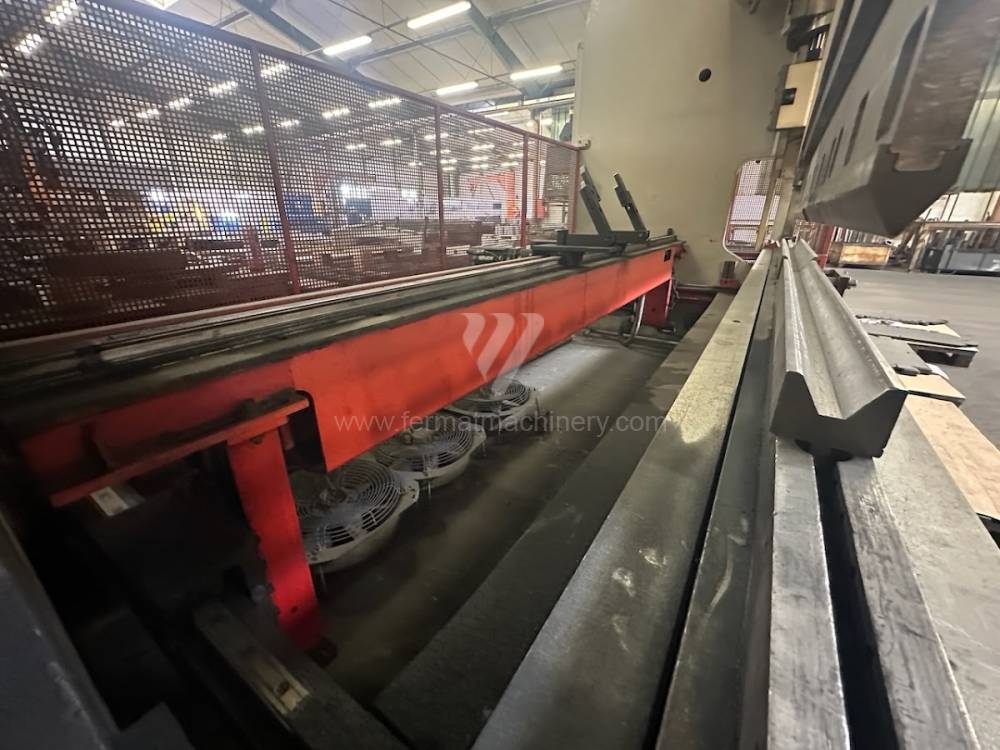
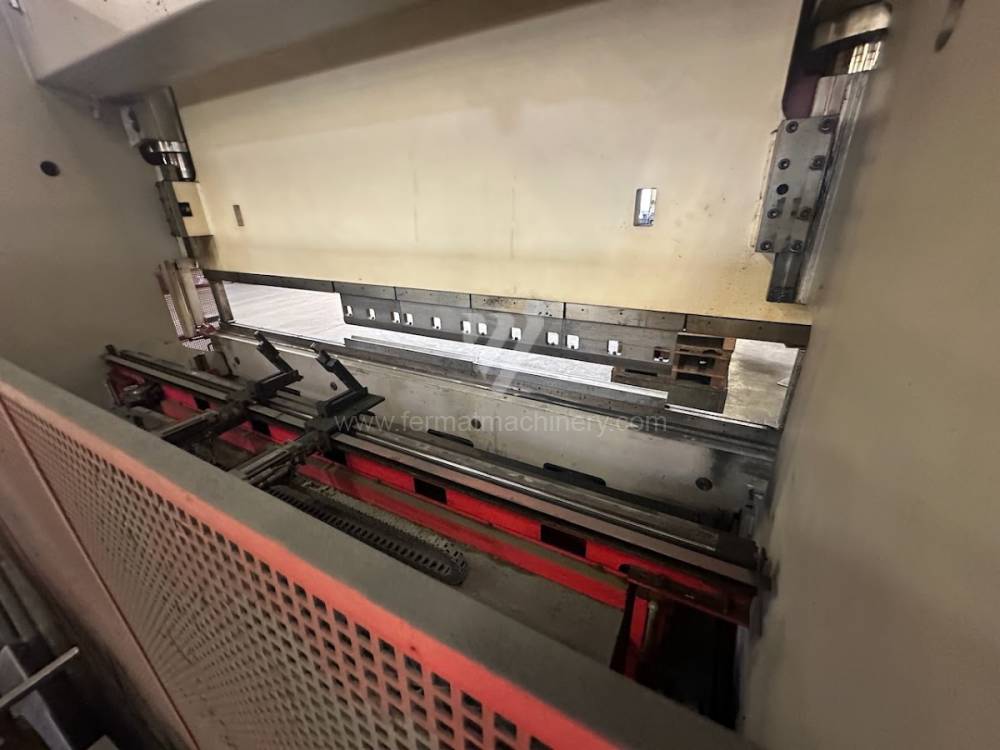
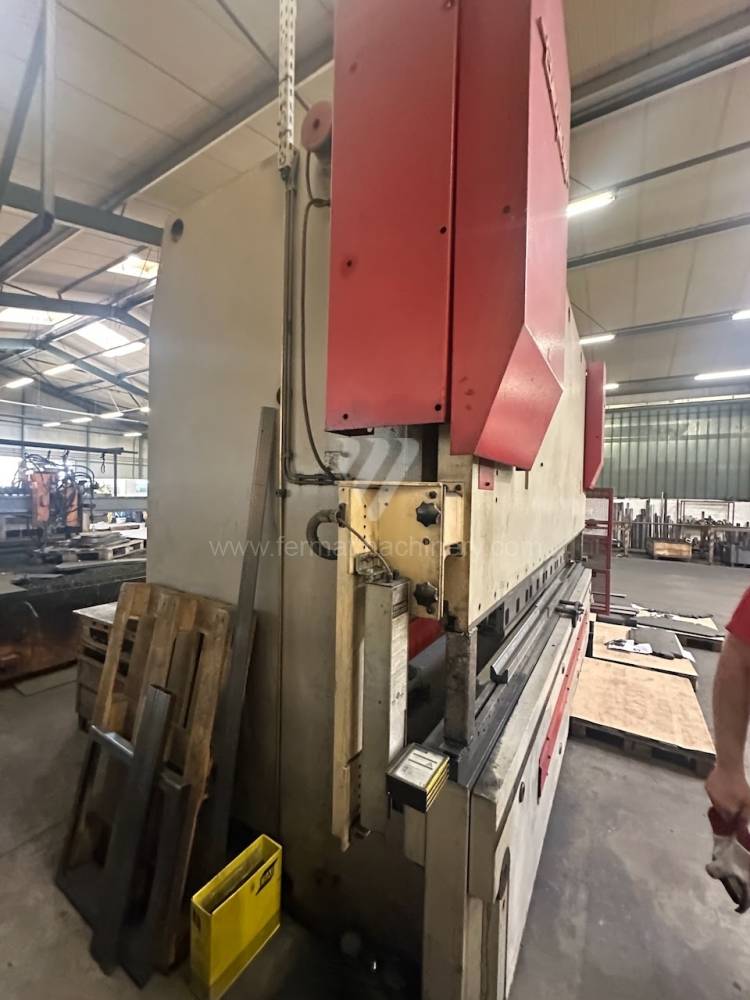
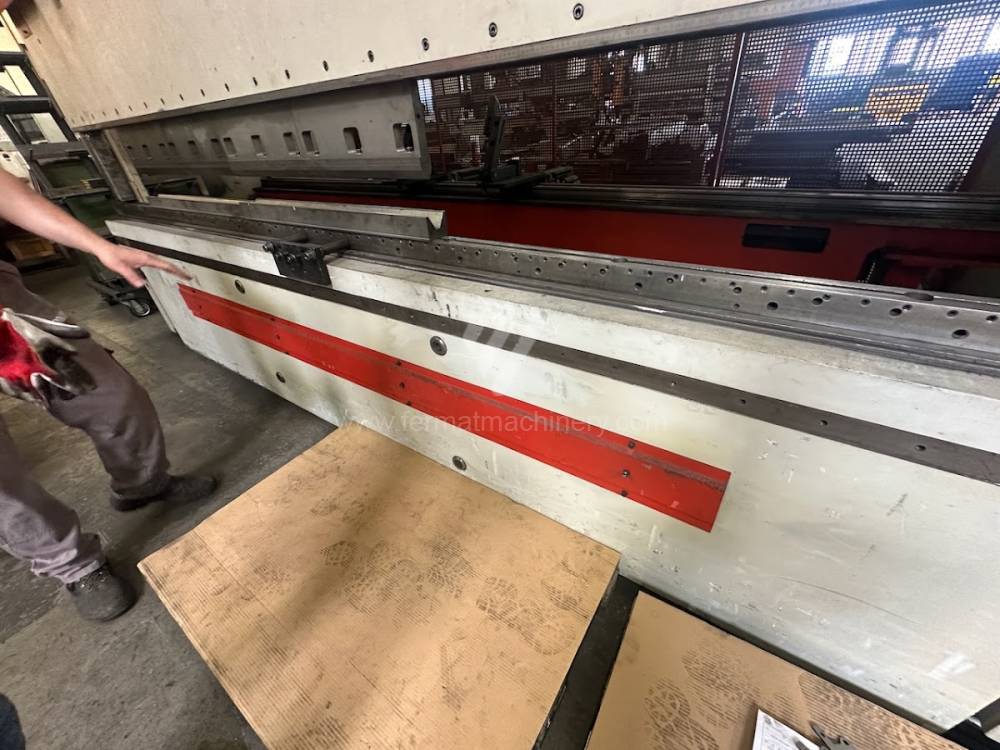
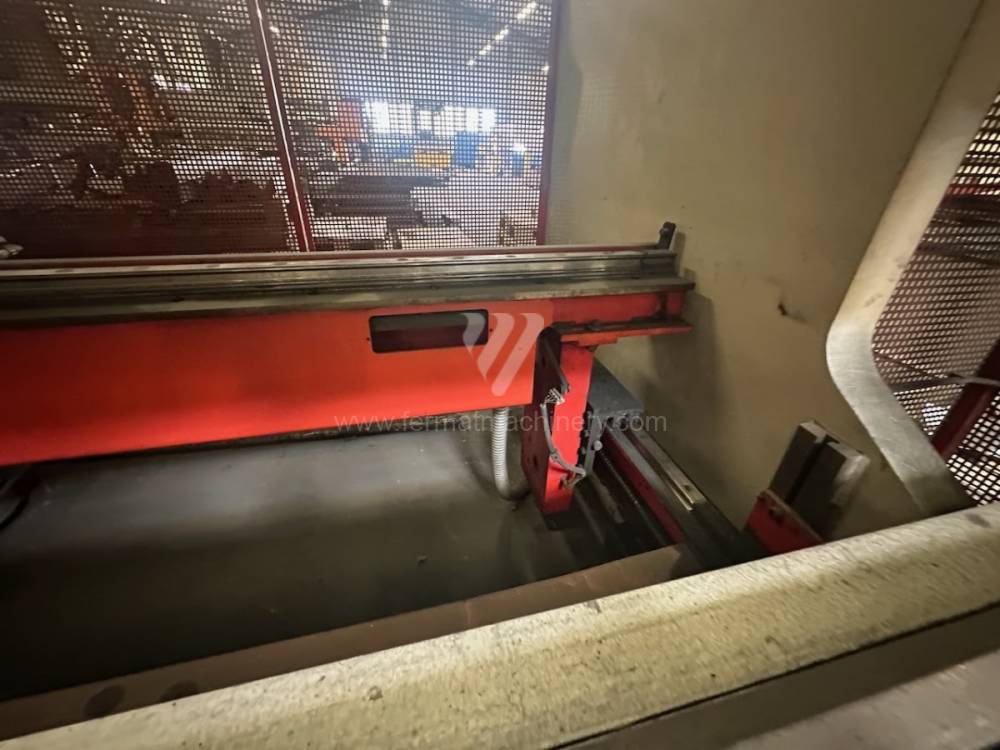
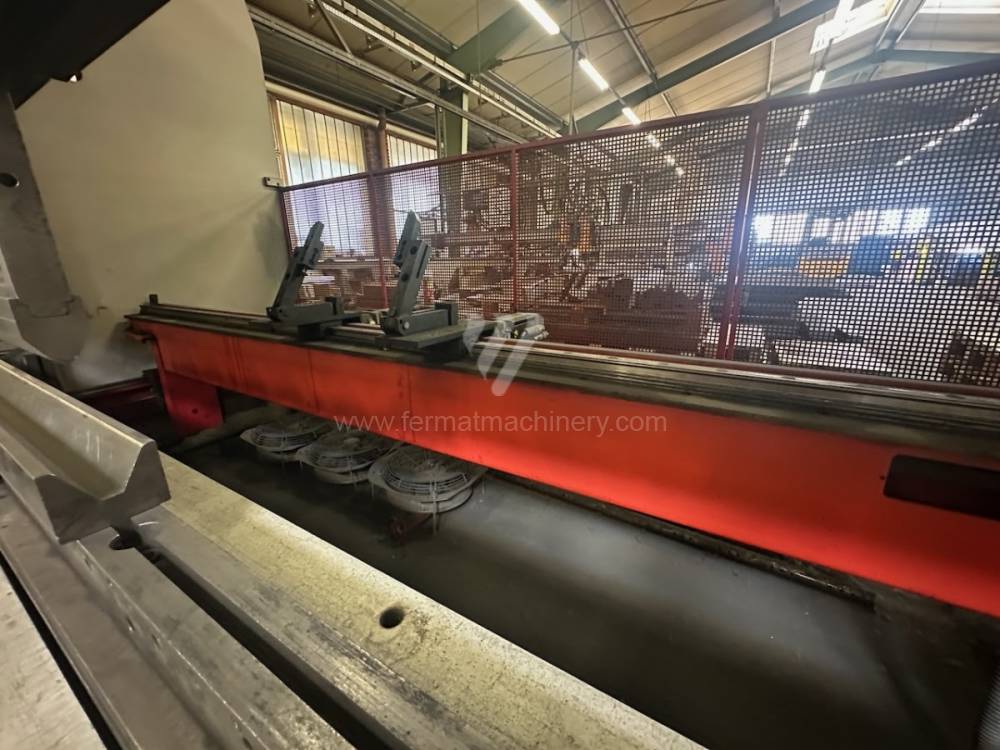
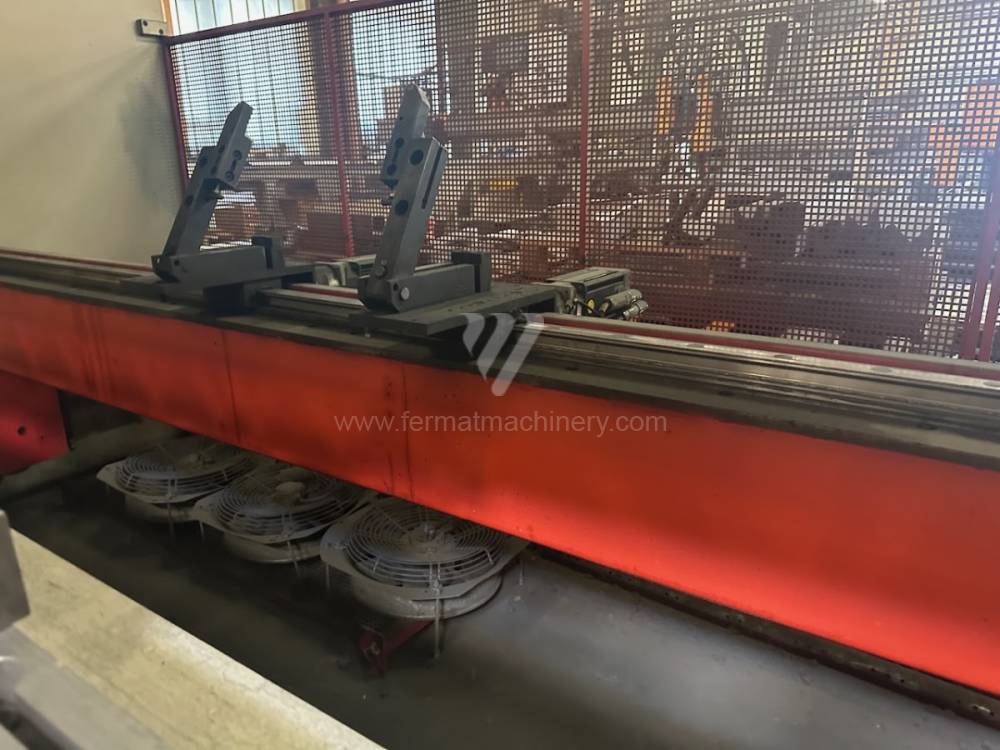
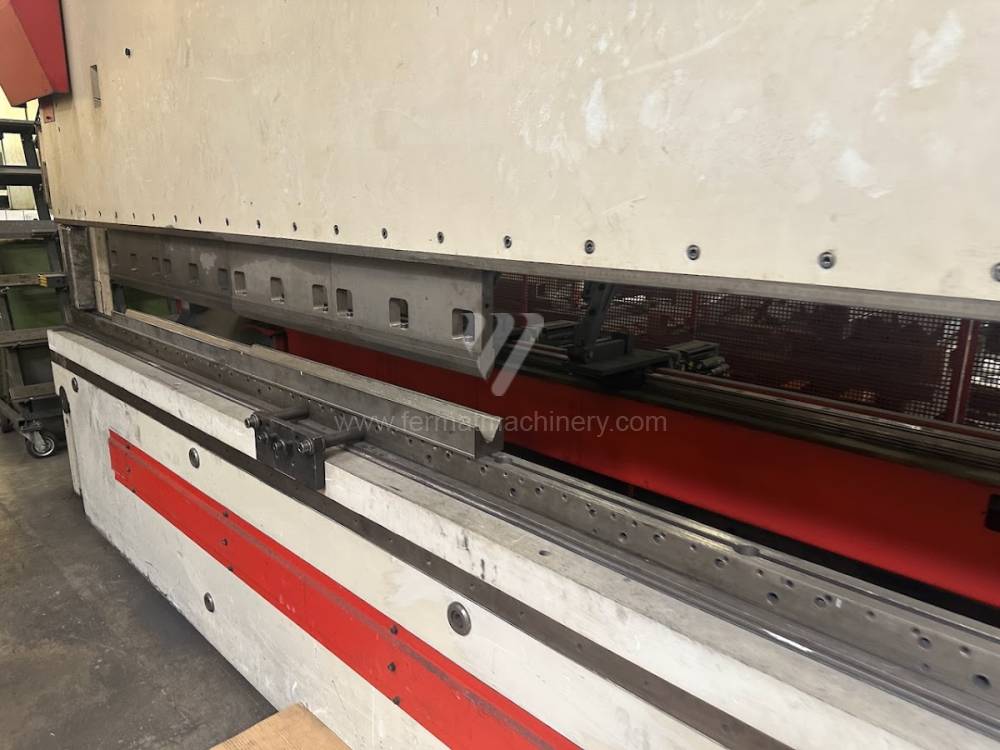
An fabricație:2002
Sistem de control Cybelec:
Puterea de indoire: 320 t
Lungimea de indoire: 4100 mm
Numărul axelor acționate: 6
Compensația deformării inferioare: da
Tipul acționării presei: Hydraulický
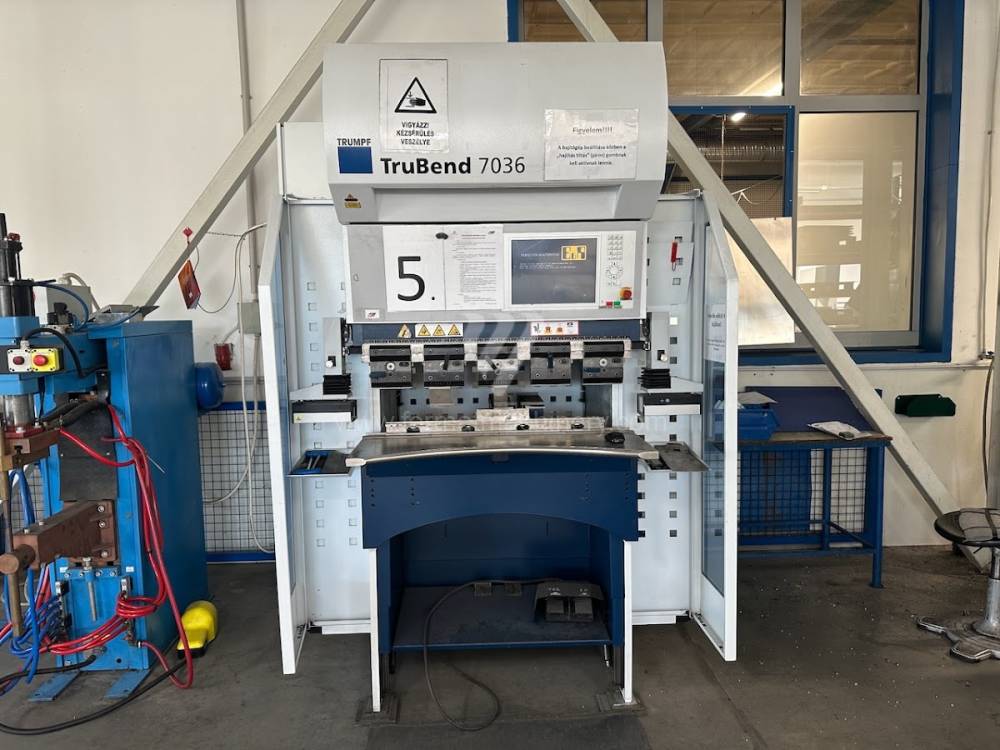
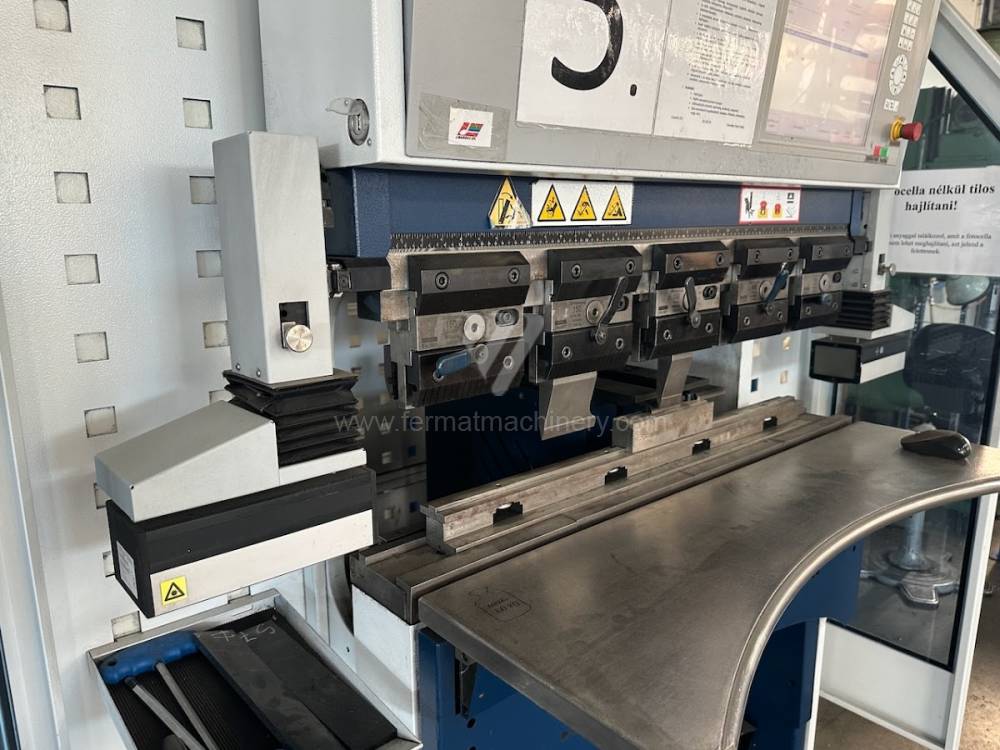
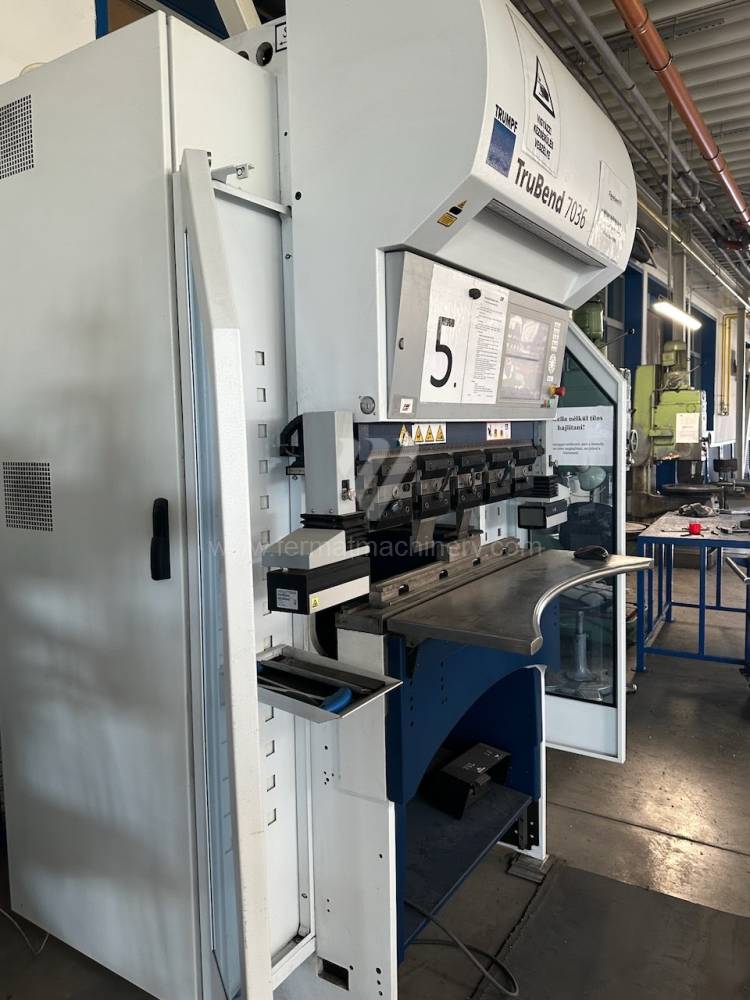
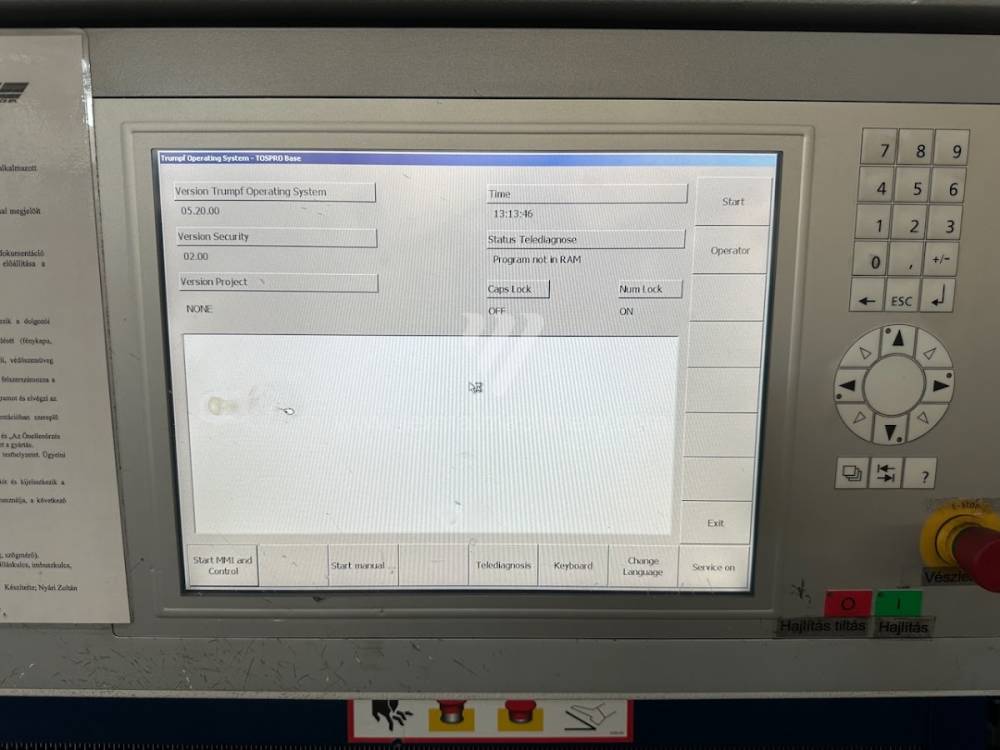
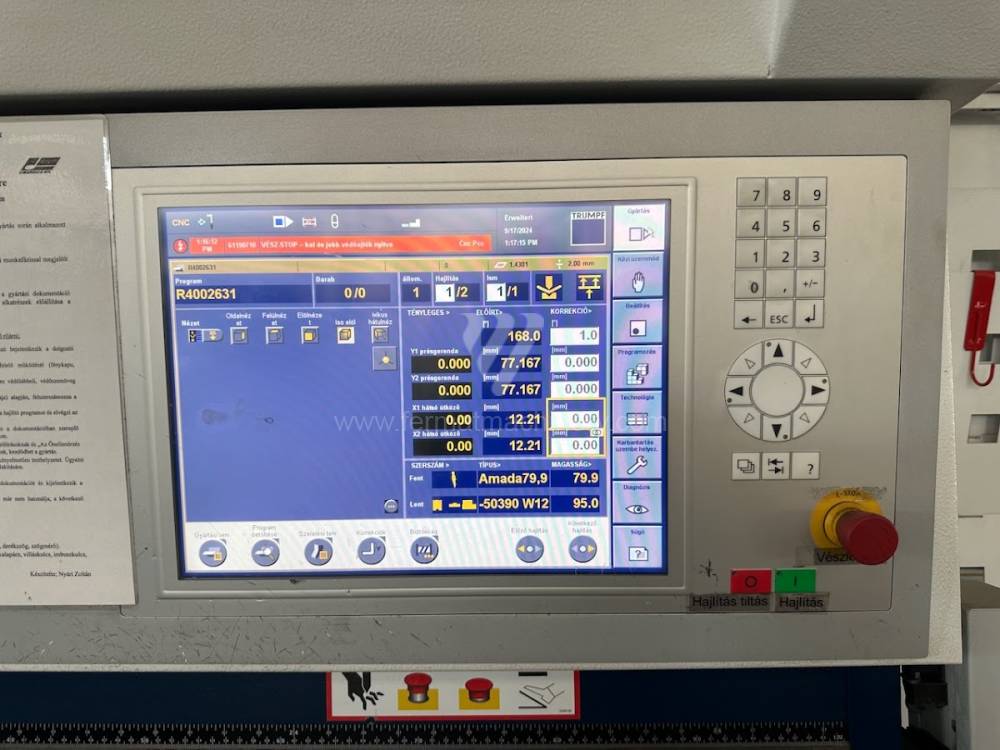
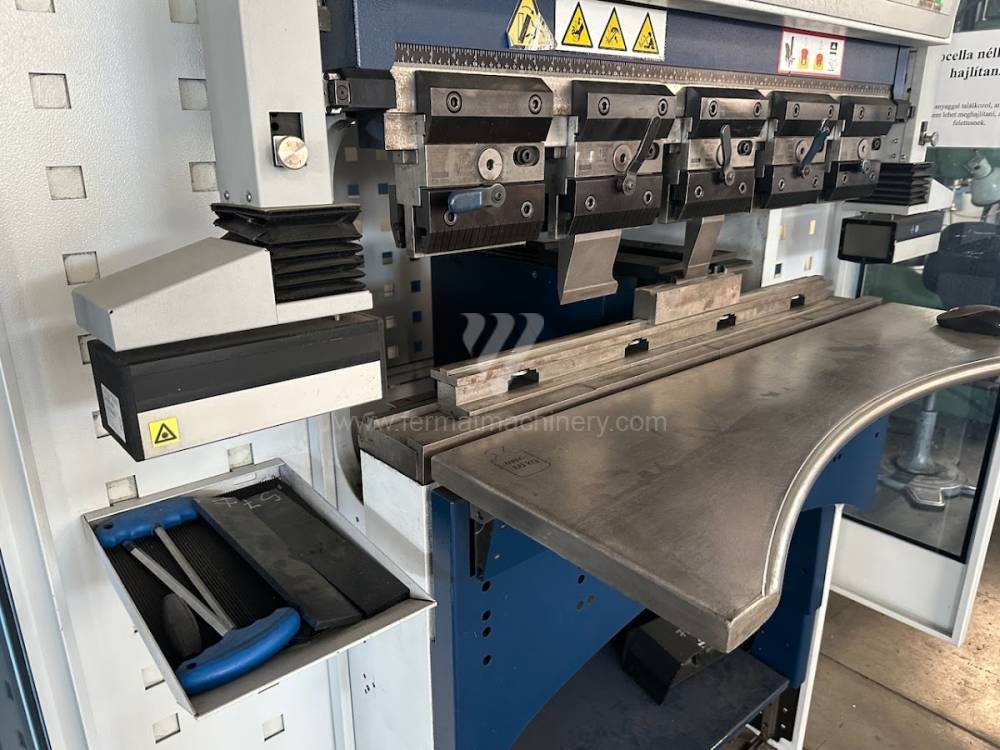
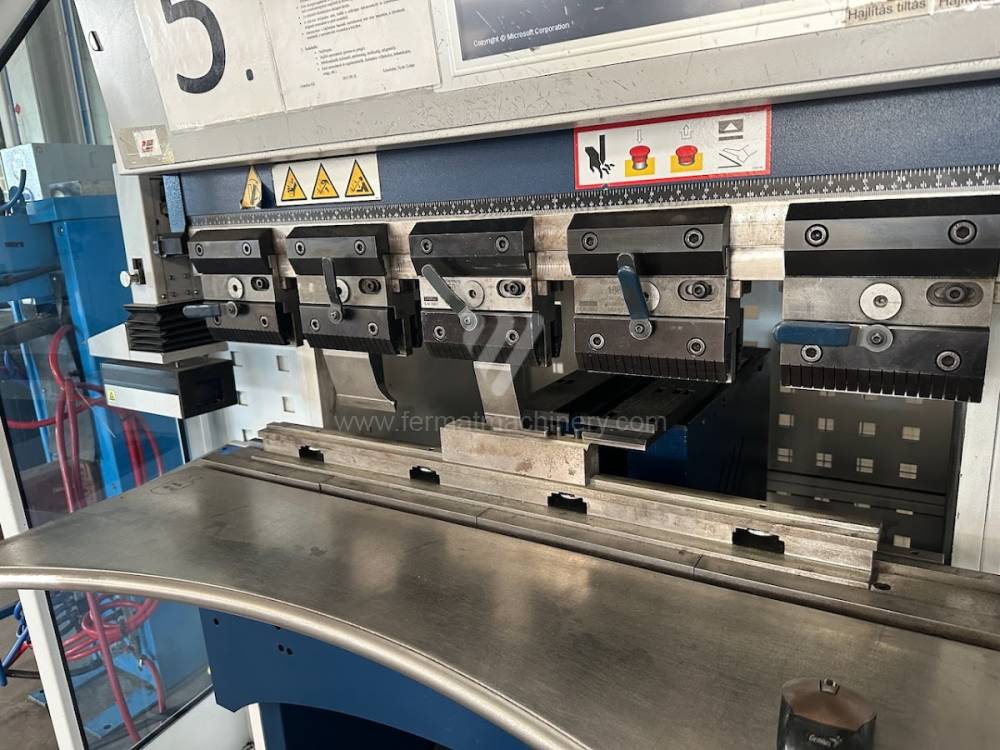
An fabricație:2018
Puterea de indoire: 36 t
Lungimea de indoire: 1020 mm
Numărul axelor acționate: 8
Compensația deformării inferioare: nu
Tipul acționării presei: electro-mechanical
Cursa culisei: 120 mm
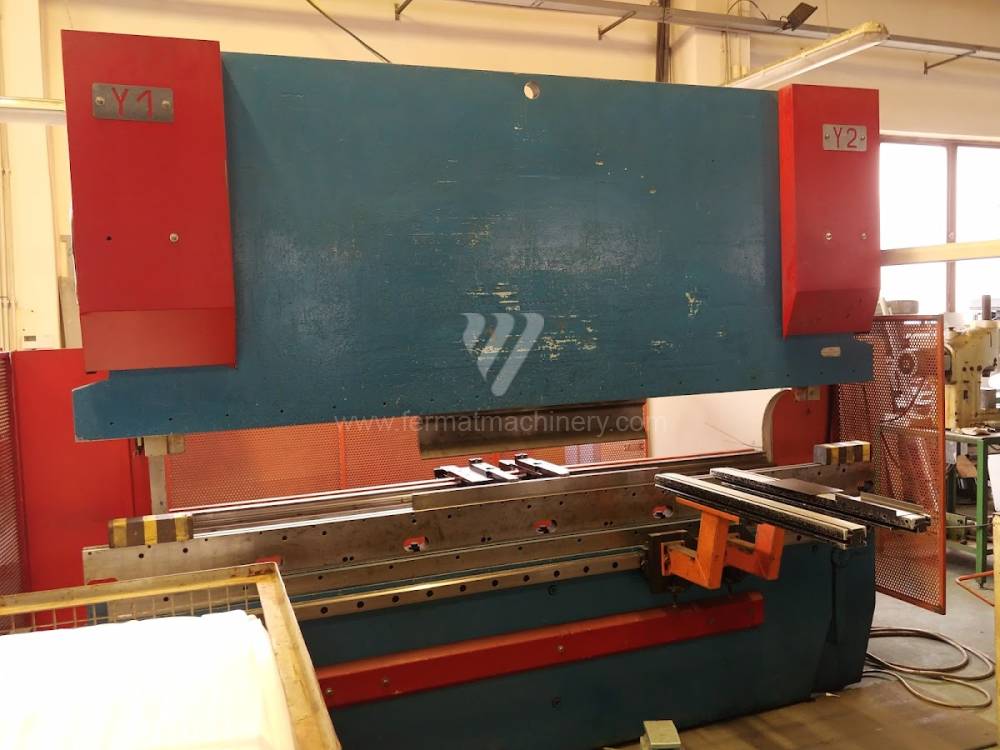
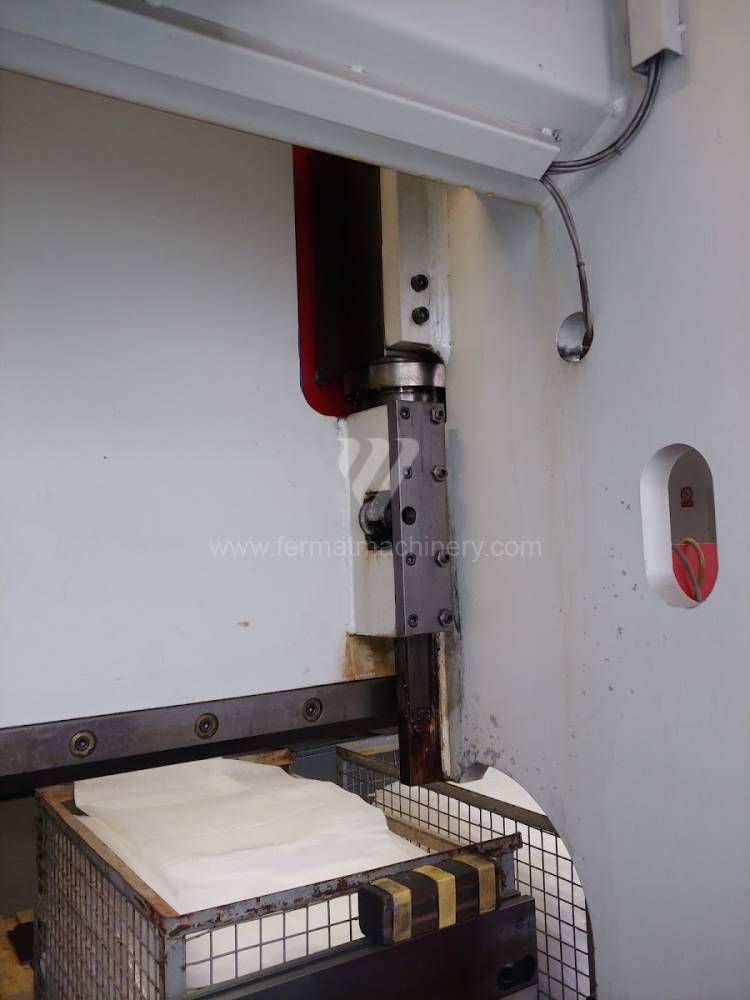
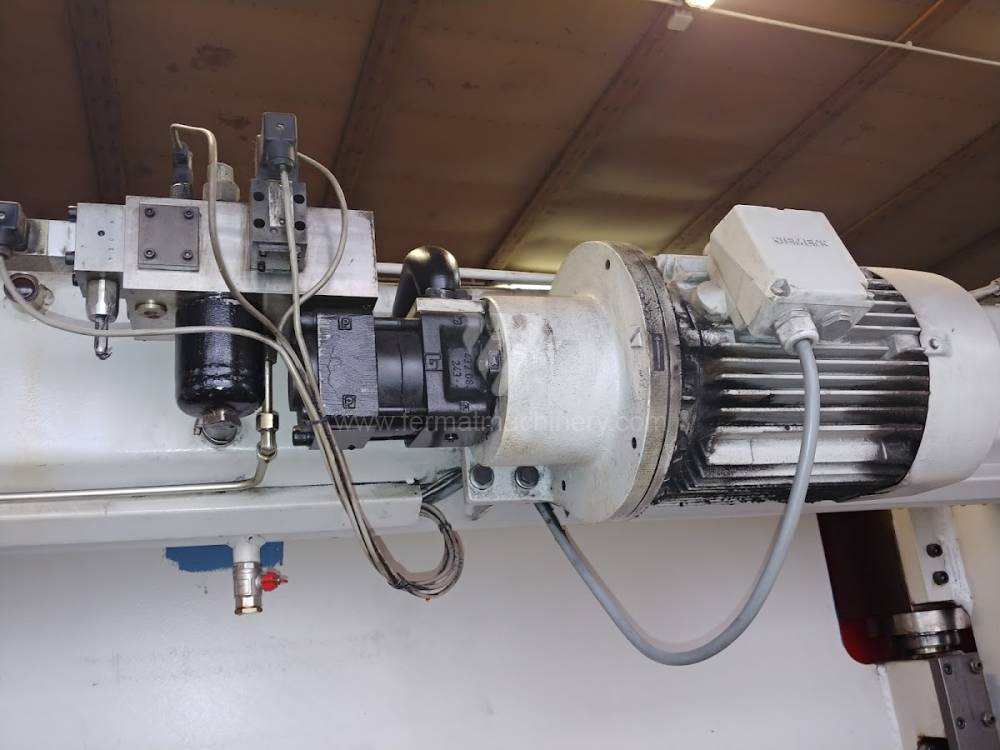
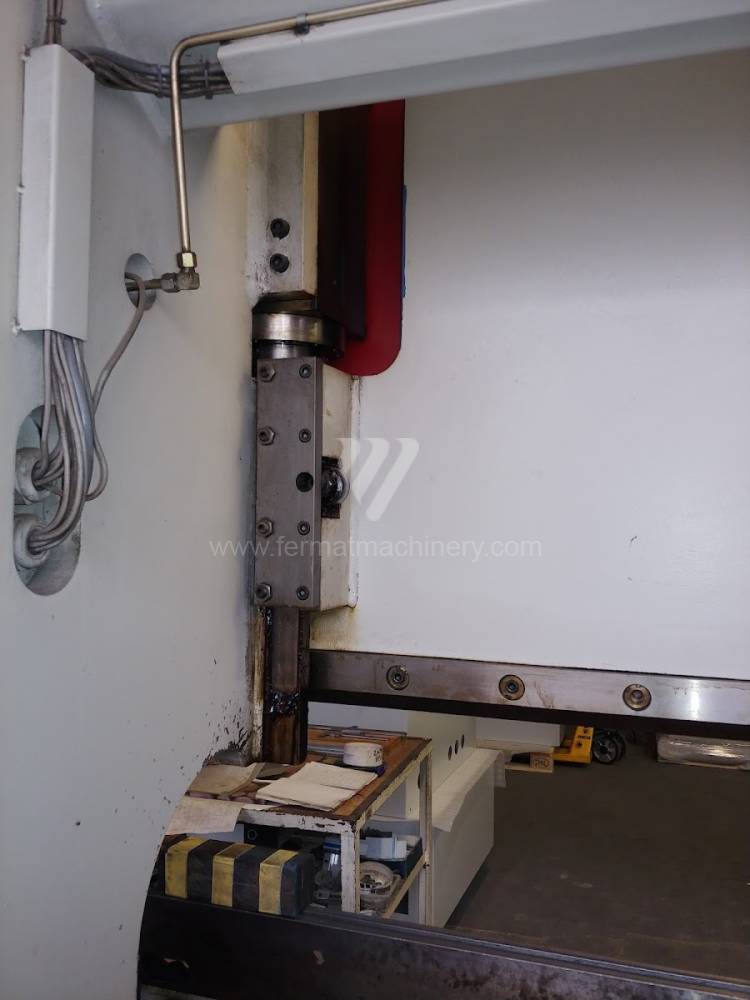
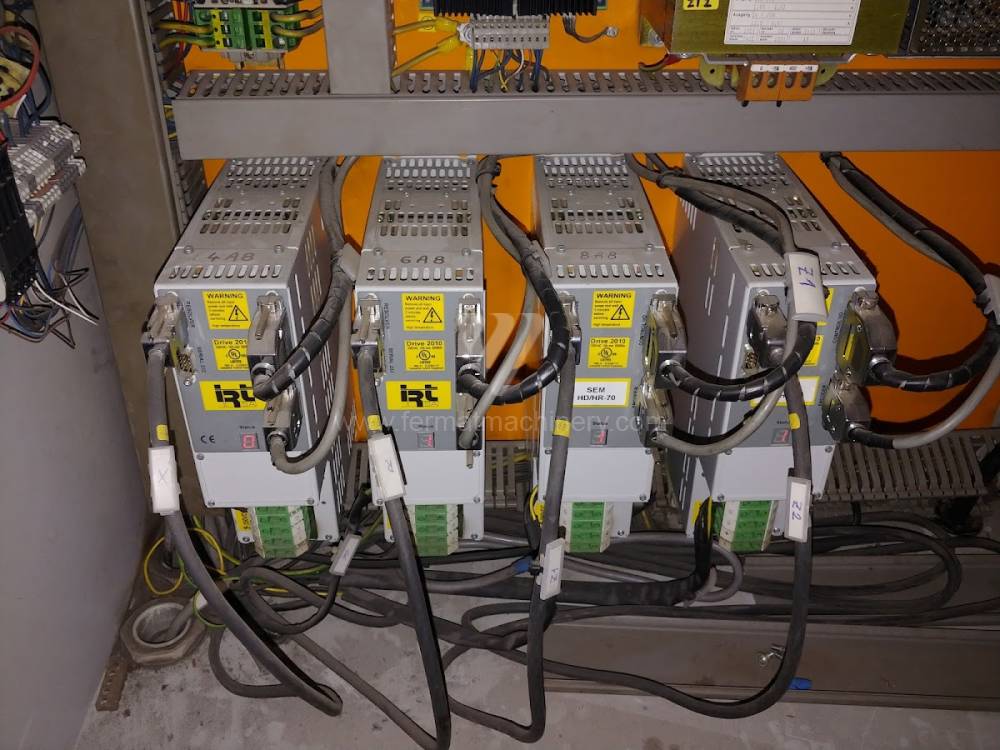
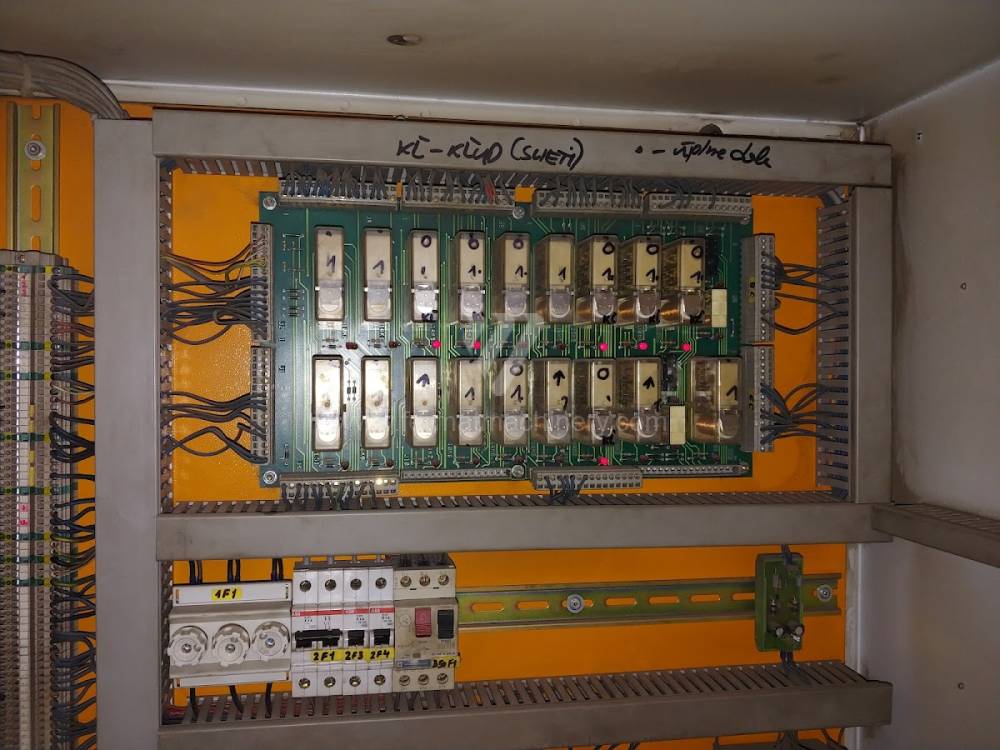
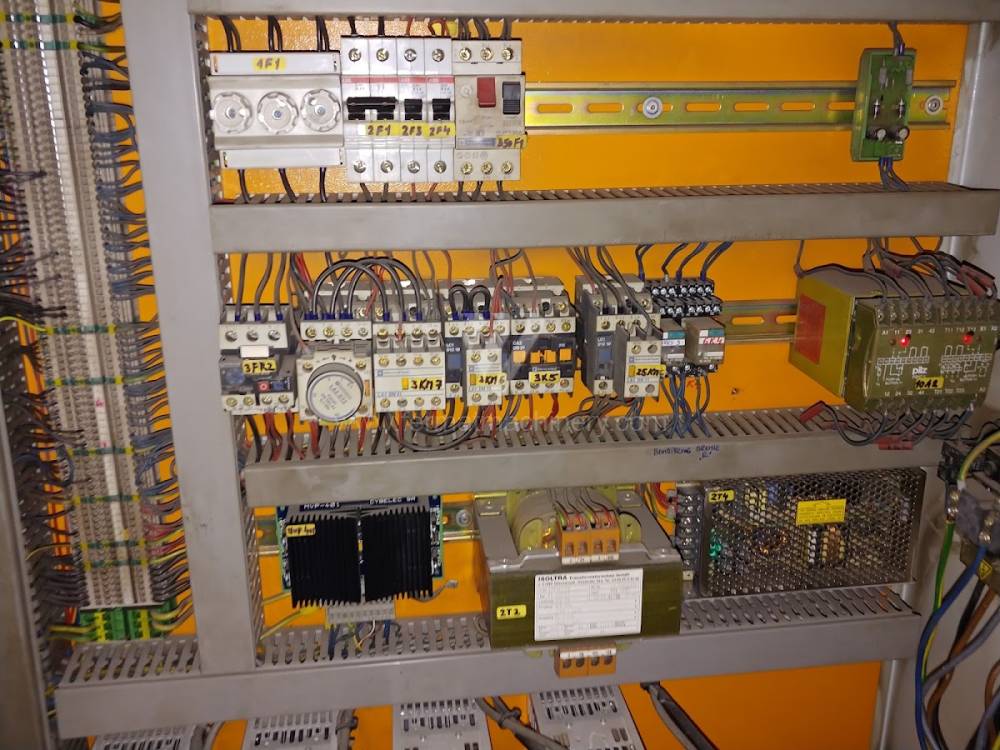
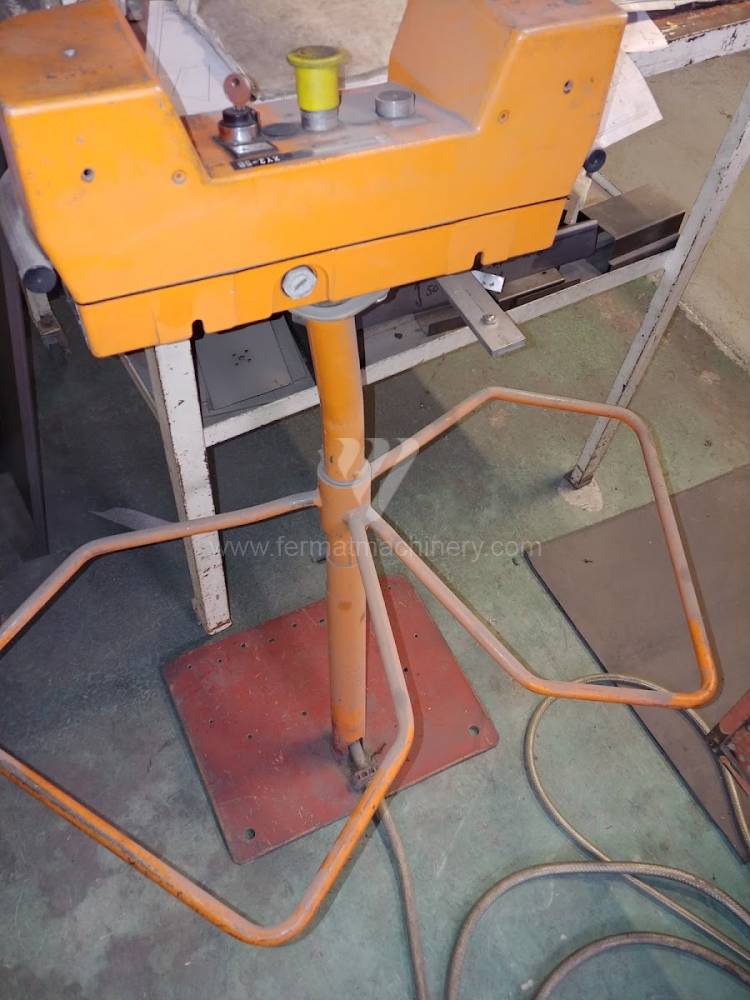
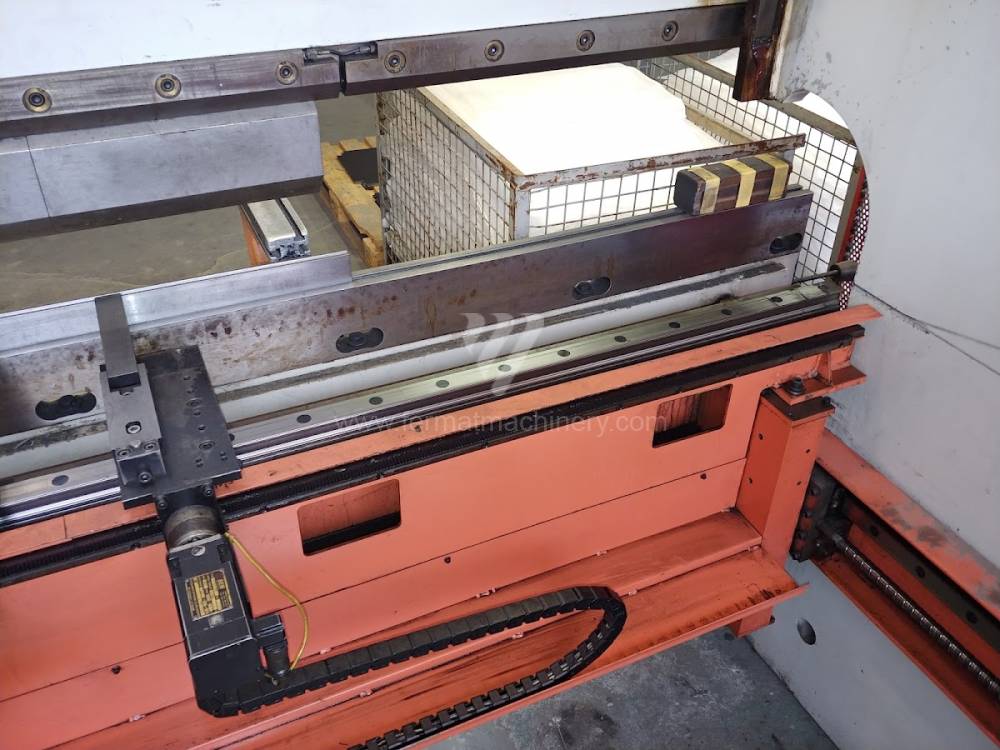
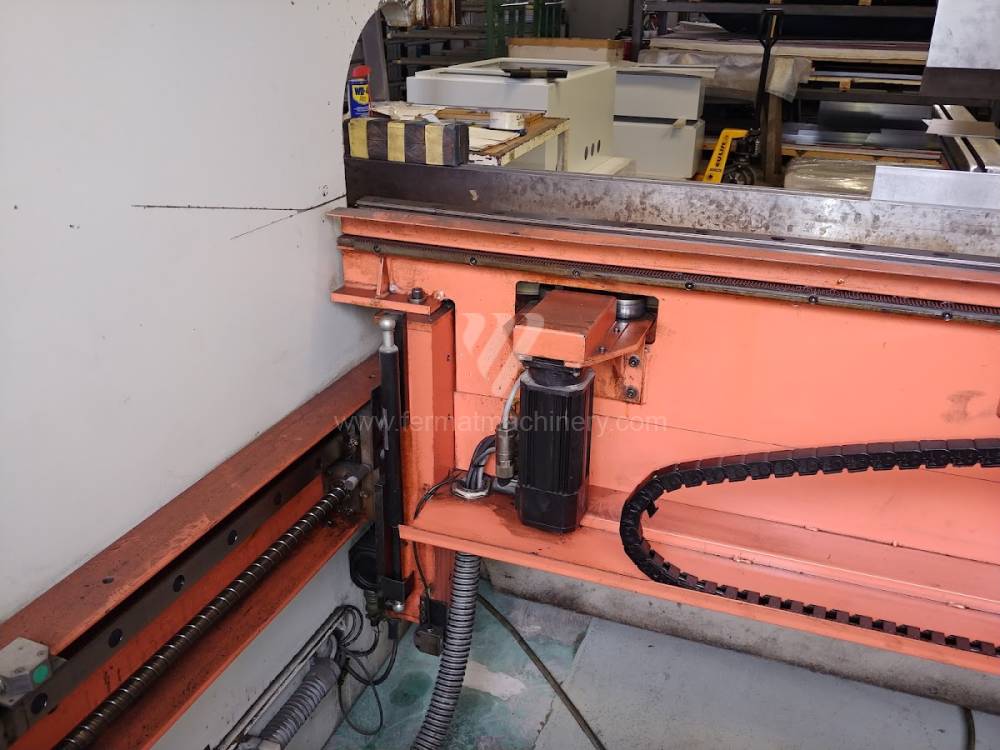
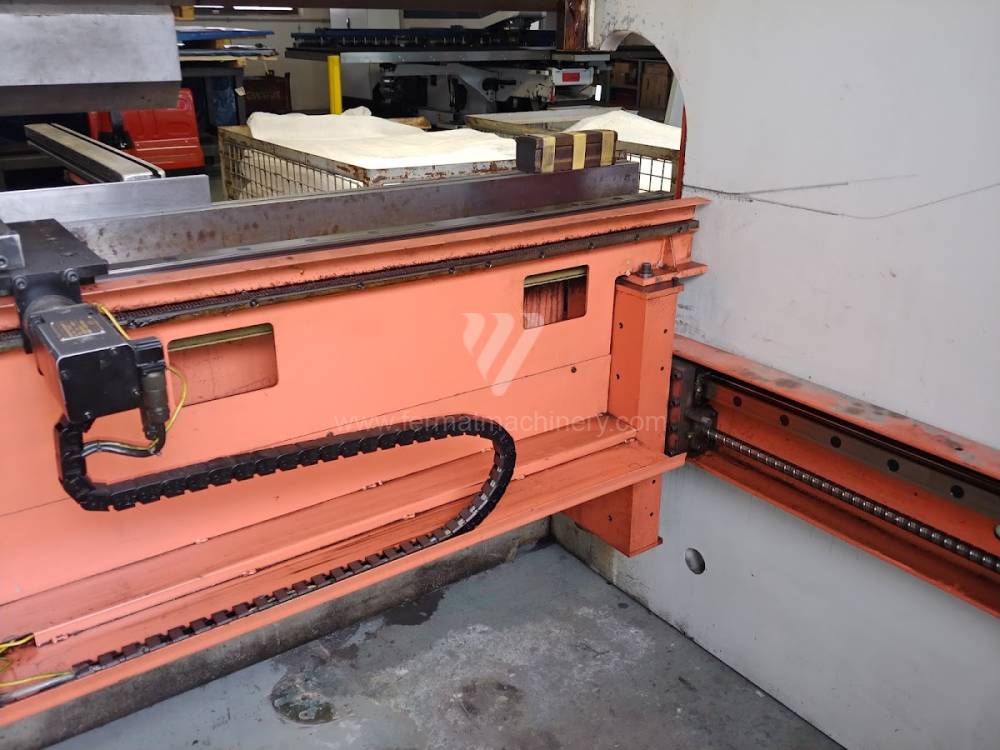
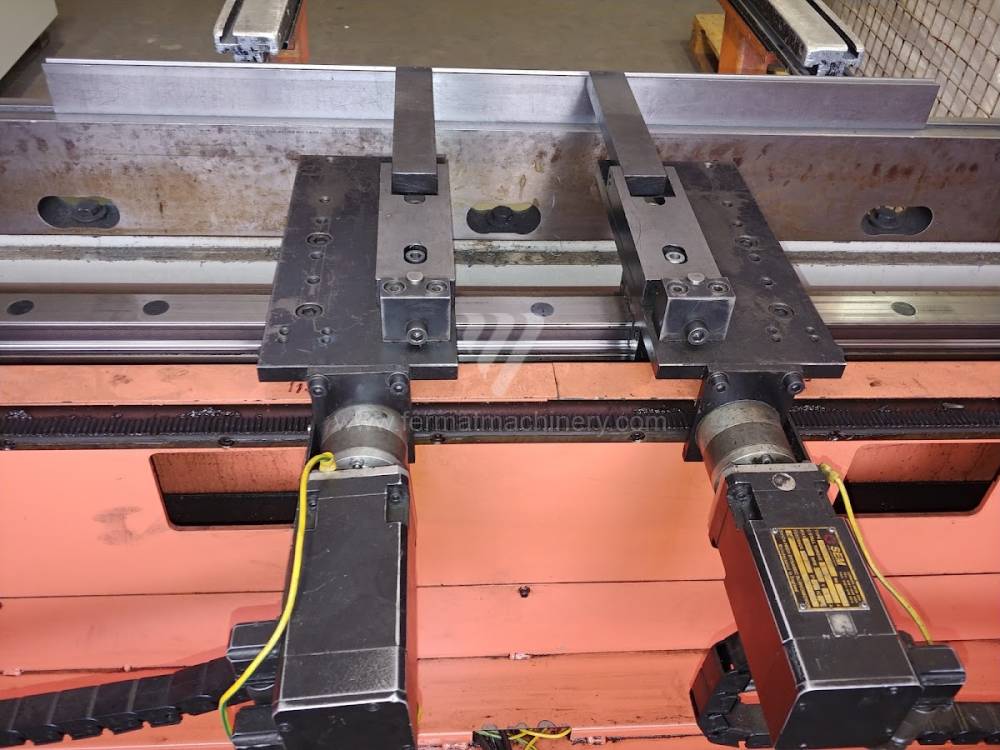
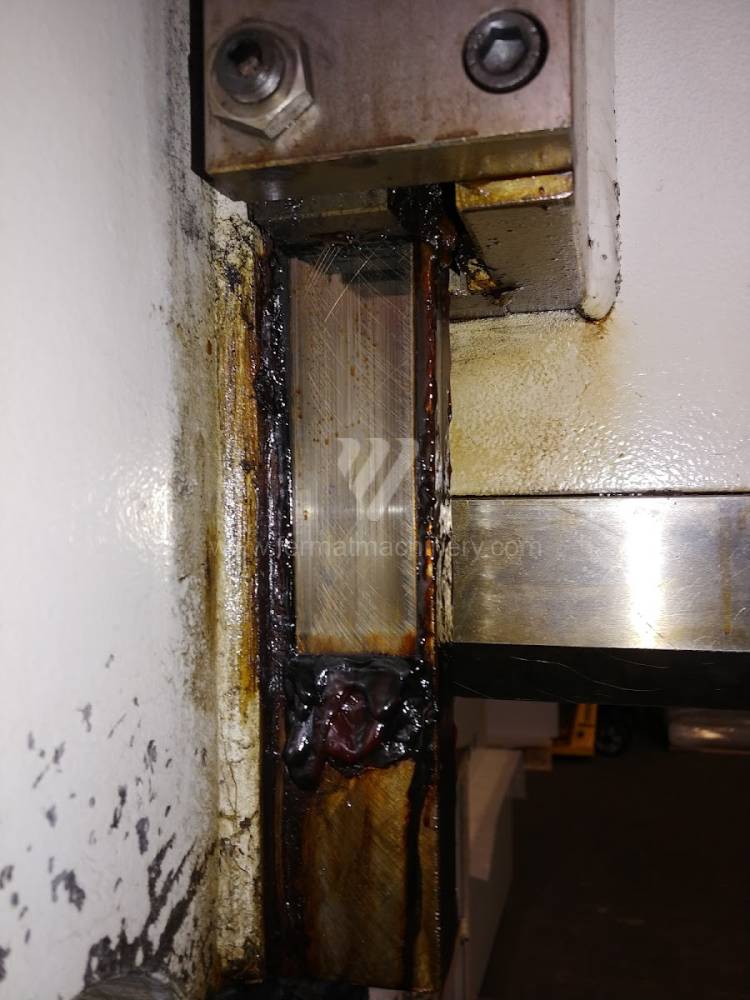
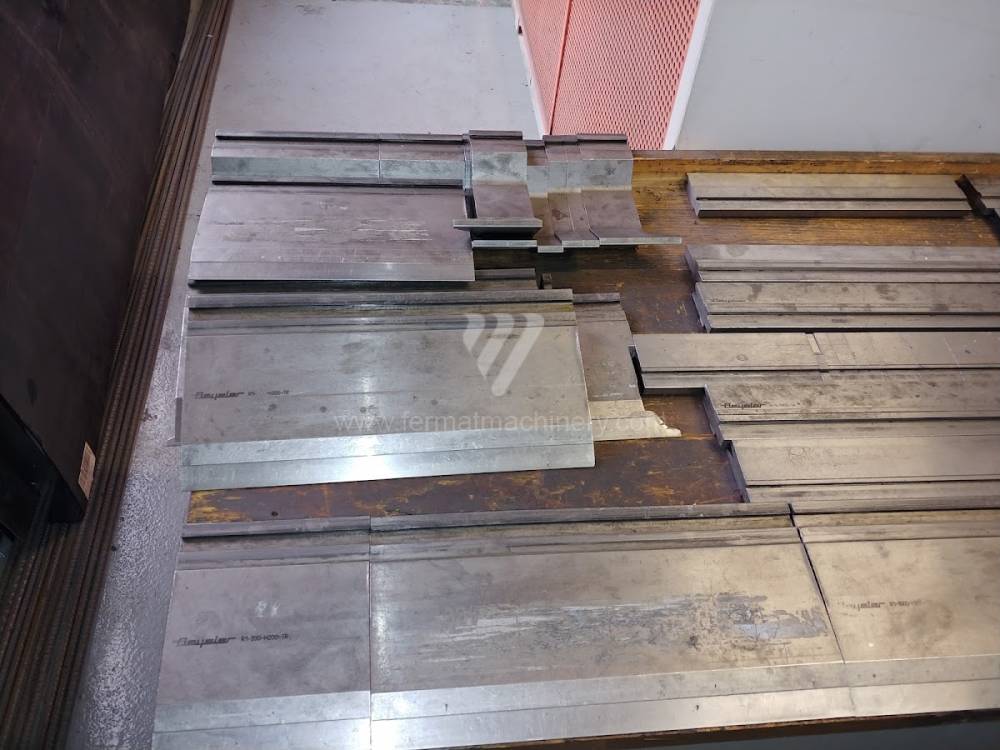
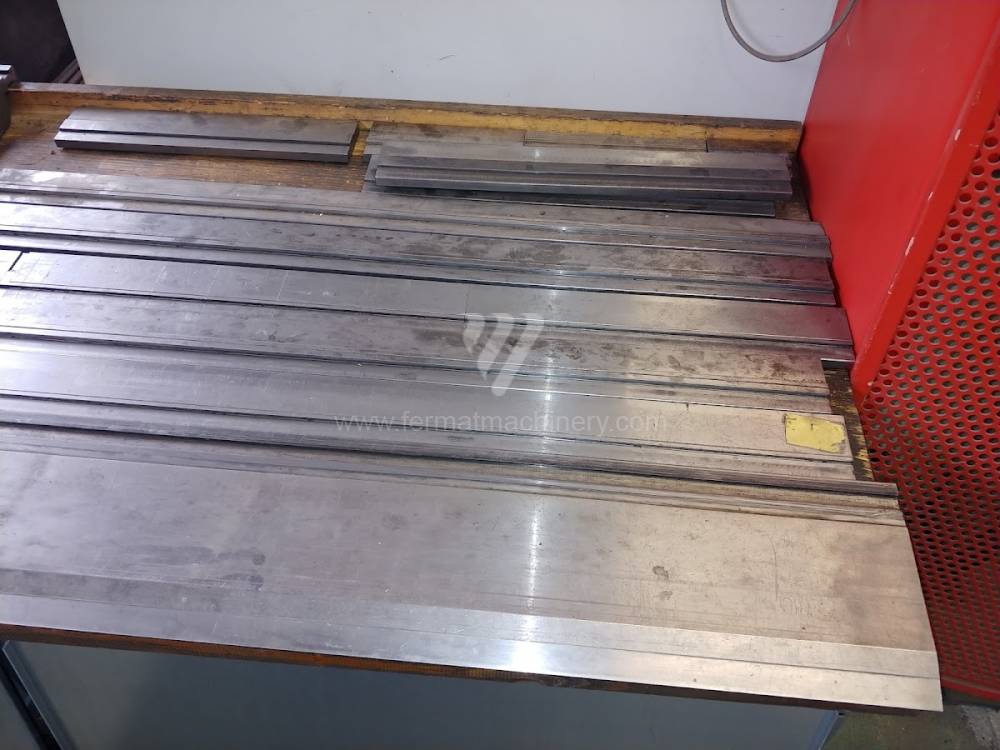
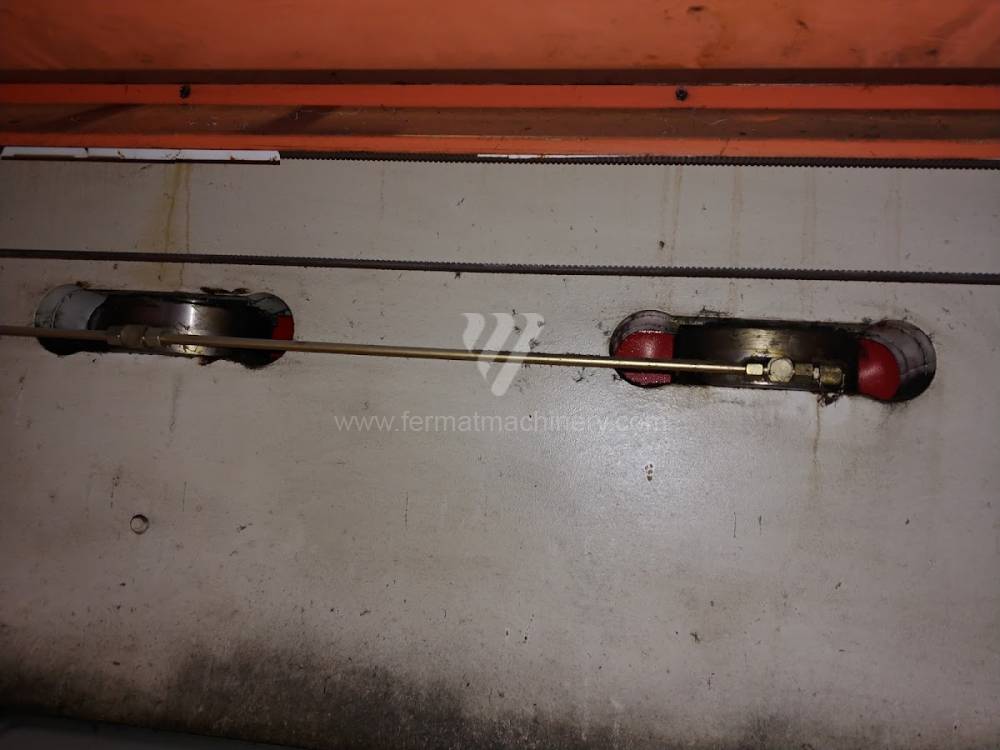
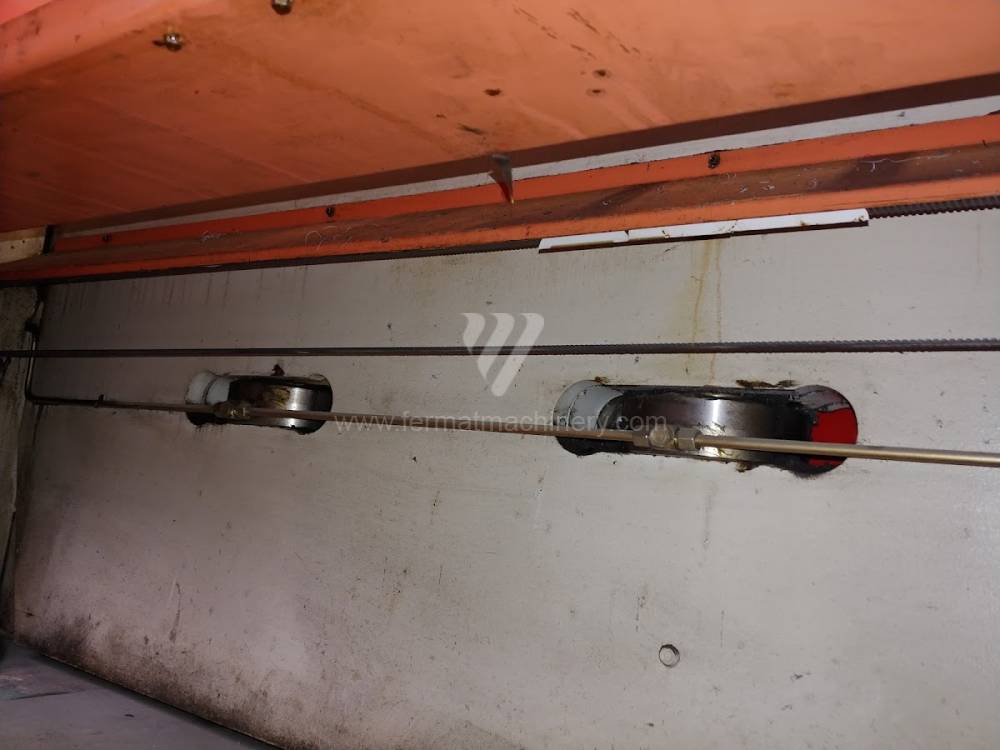
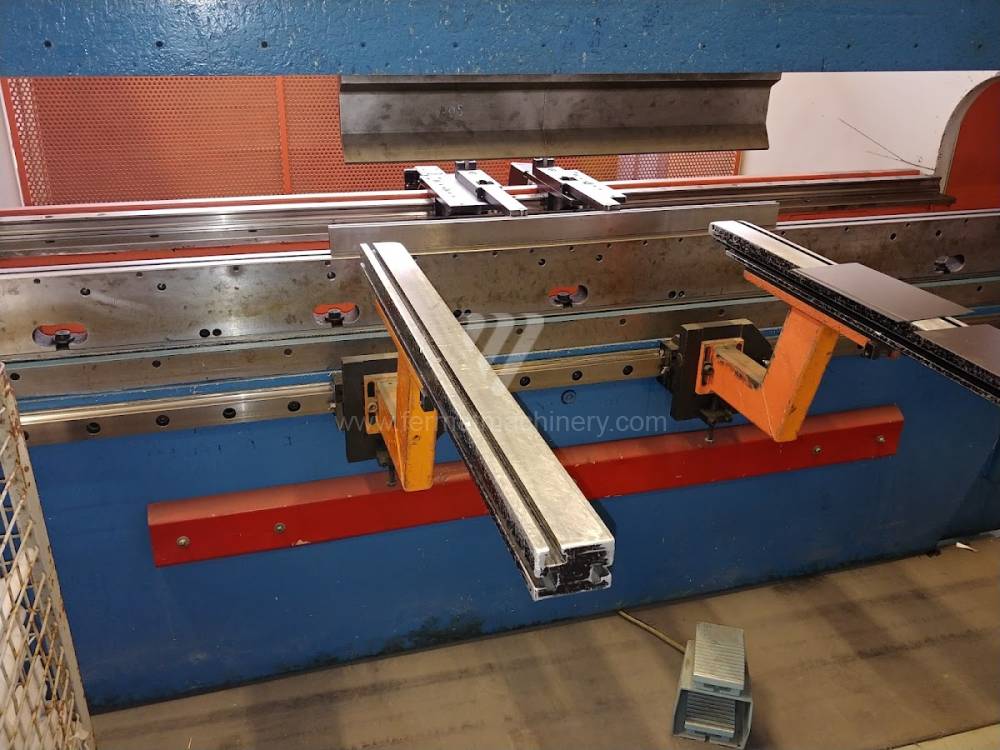
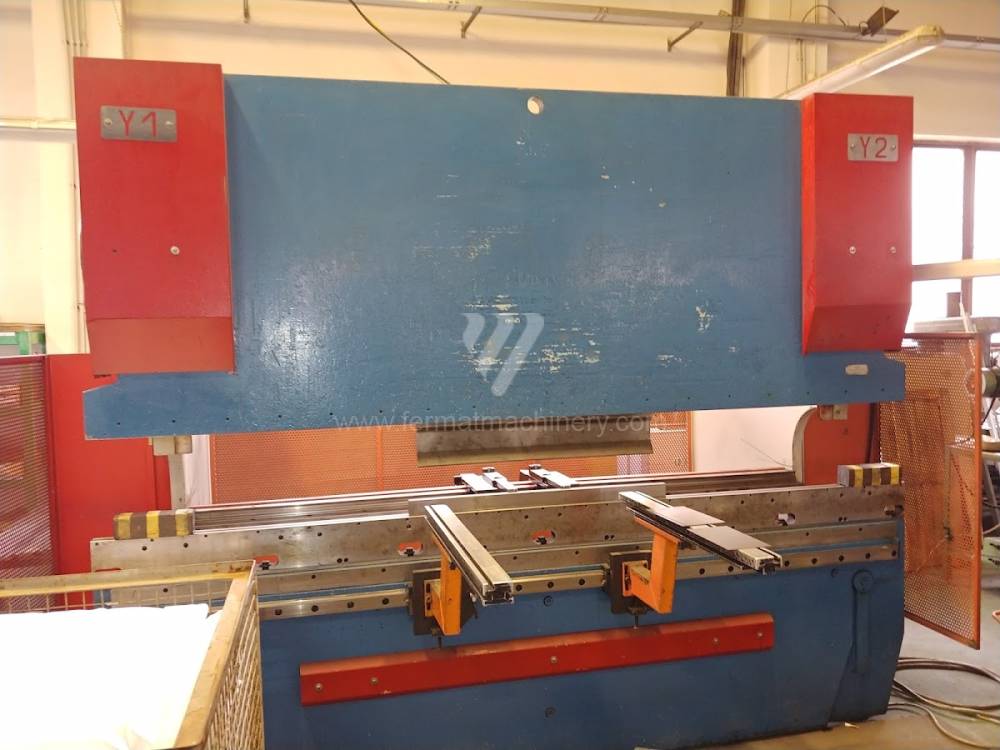
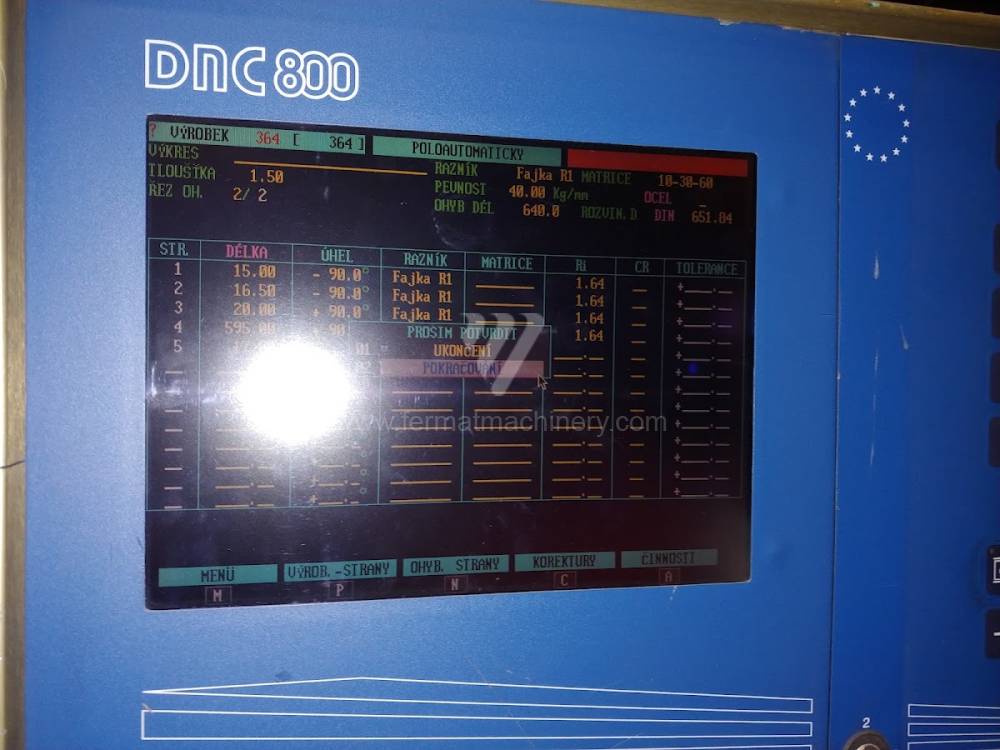
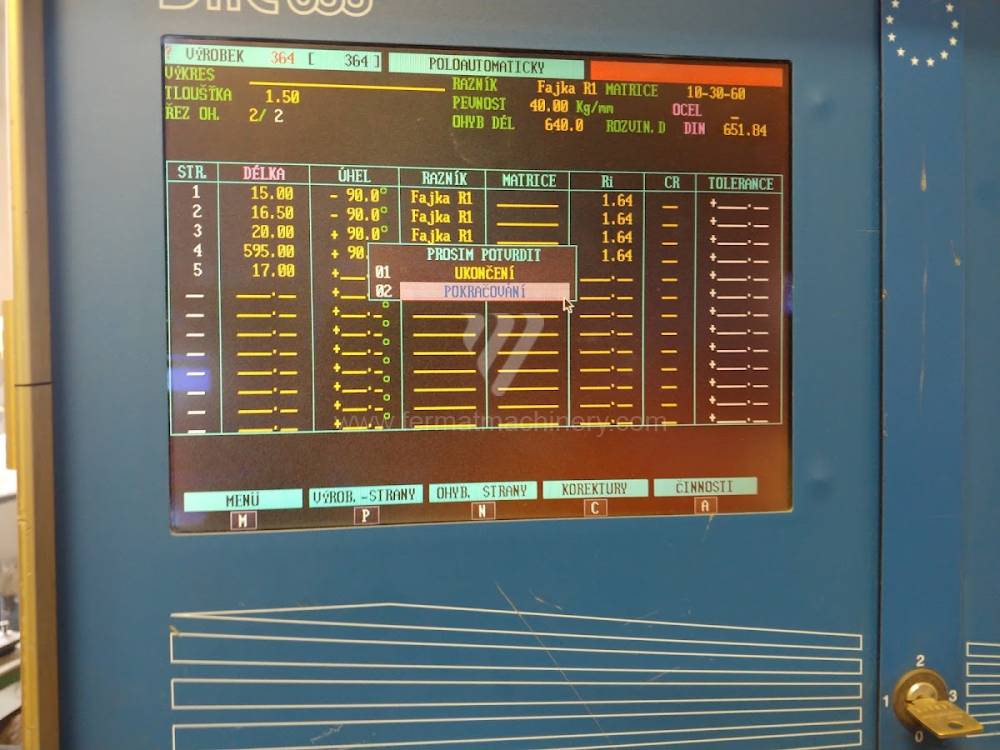
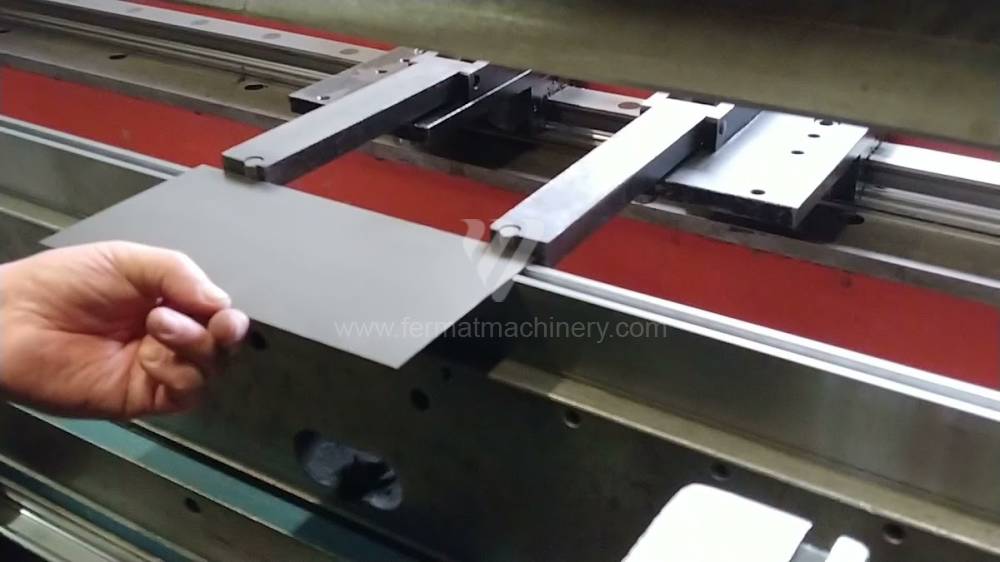
An fabricație:1997
Lungimea de indoire: 3100 mm
Puterea de indoire: 100 t
Sistem de control Cybelec: DNC 800
Numărul axelor acționate: 6
Tipul acționării presei: Hydraulický
Compensația deformării inferioare: da
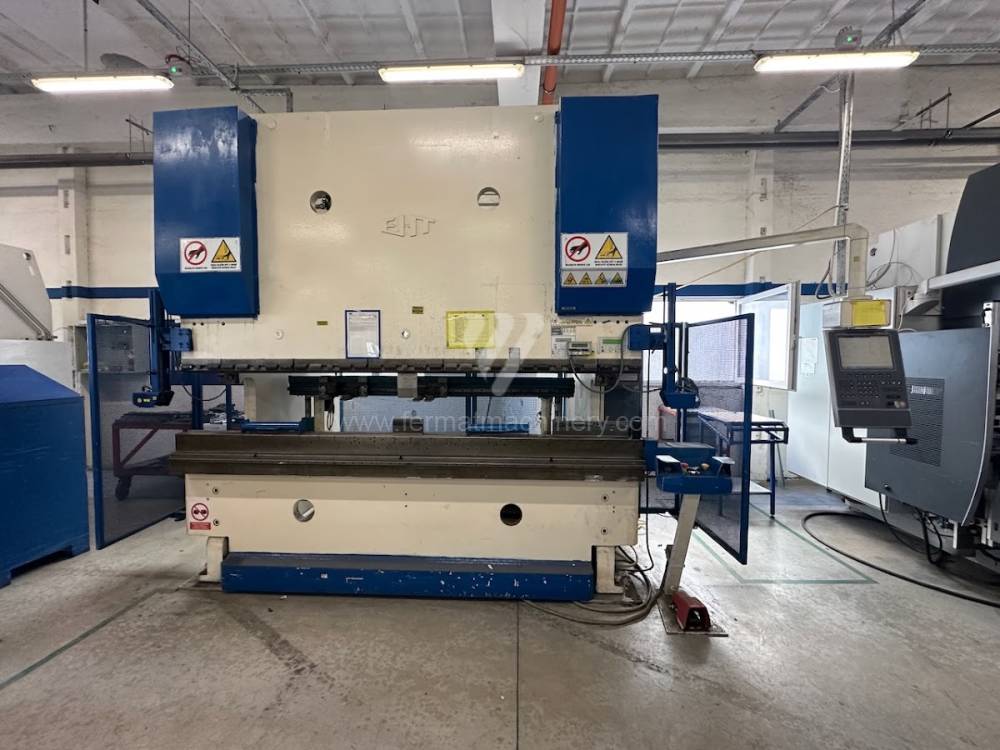
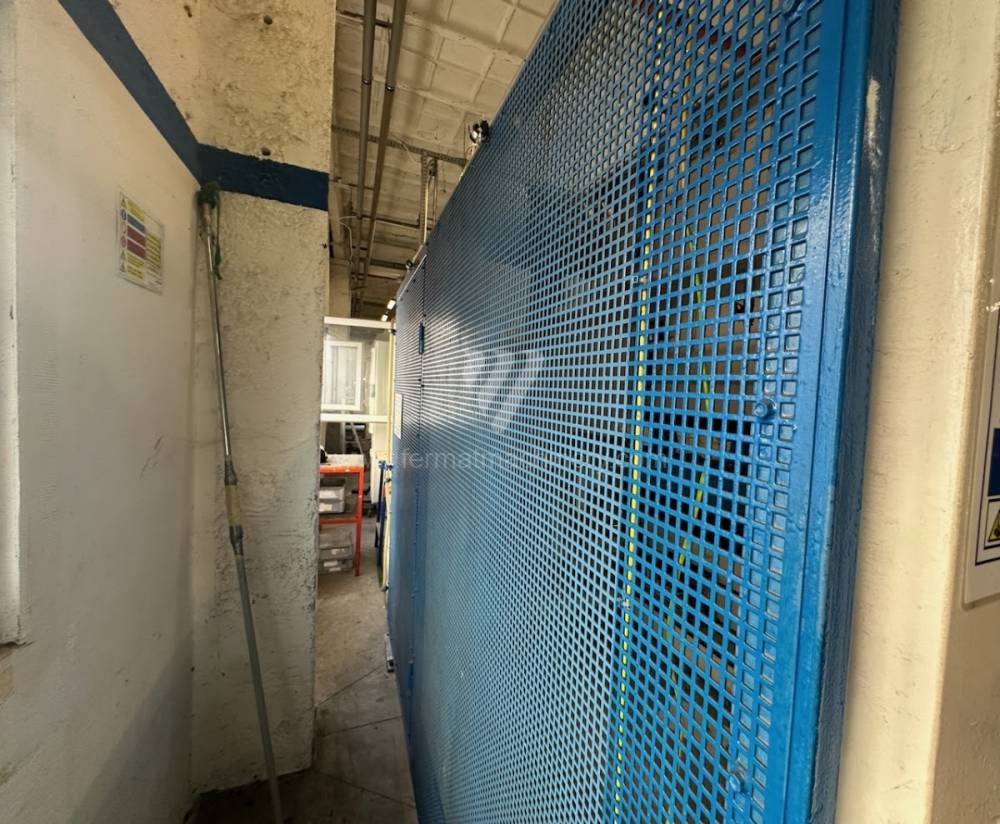
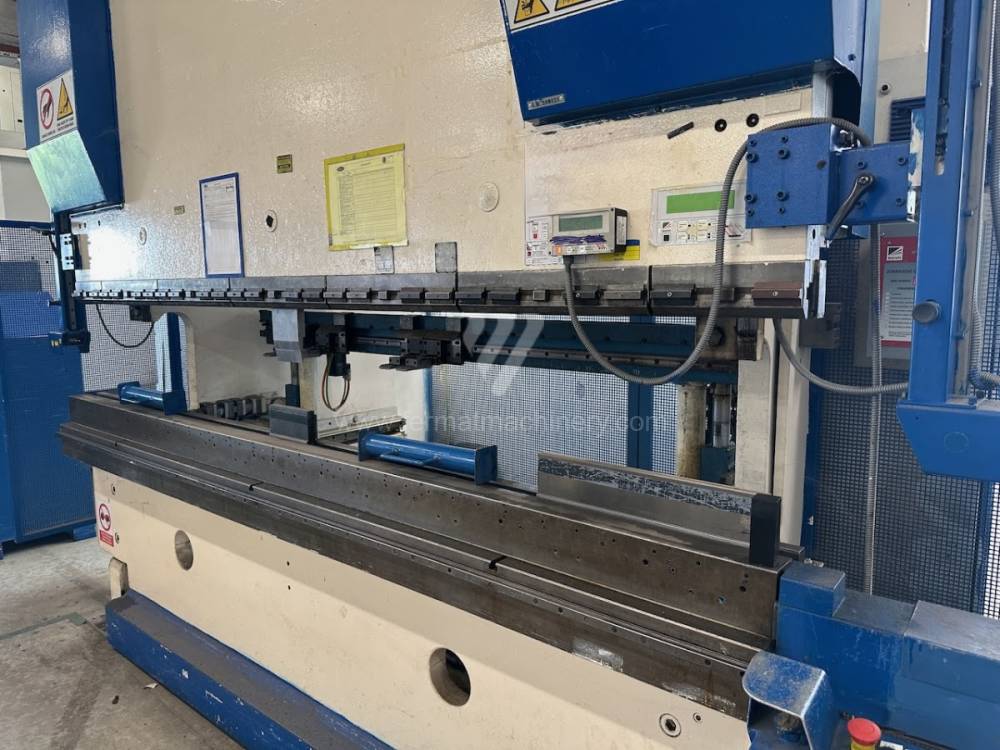
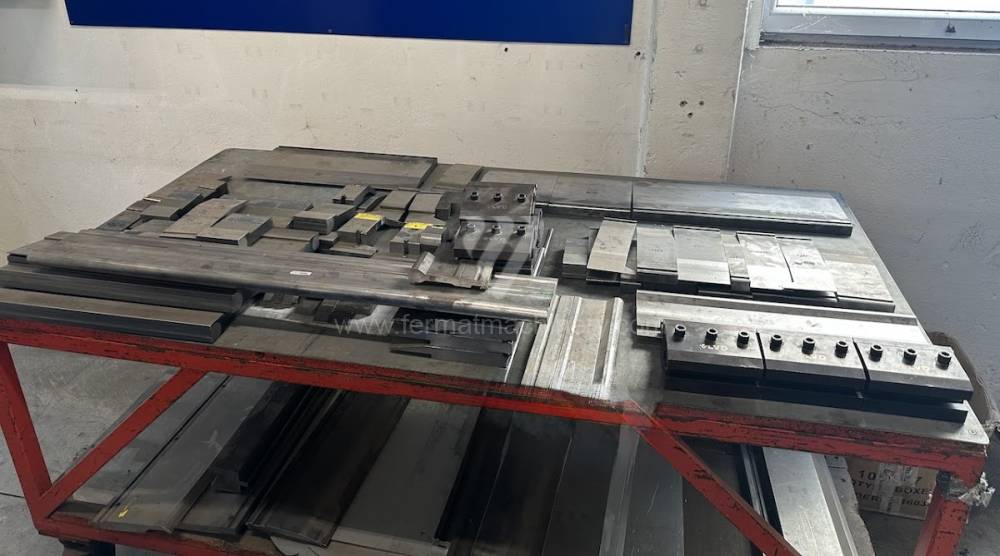
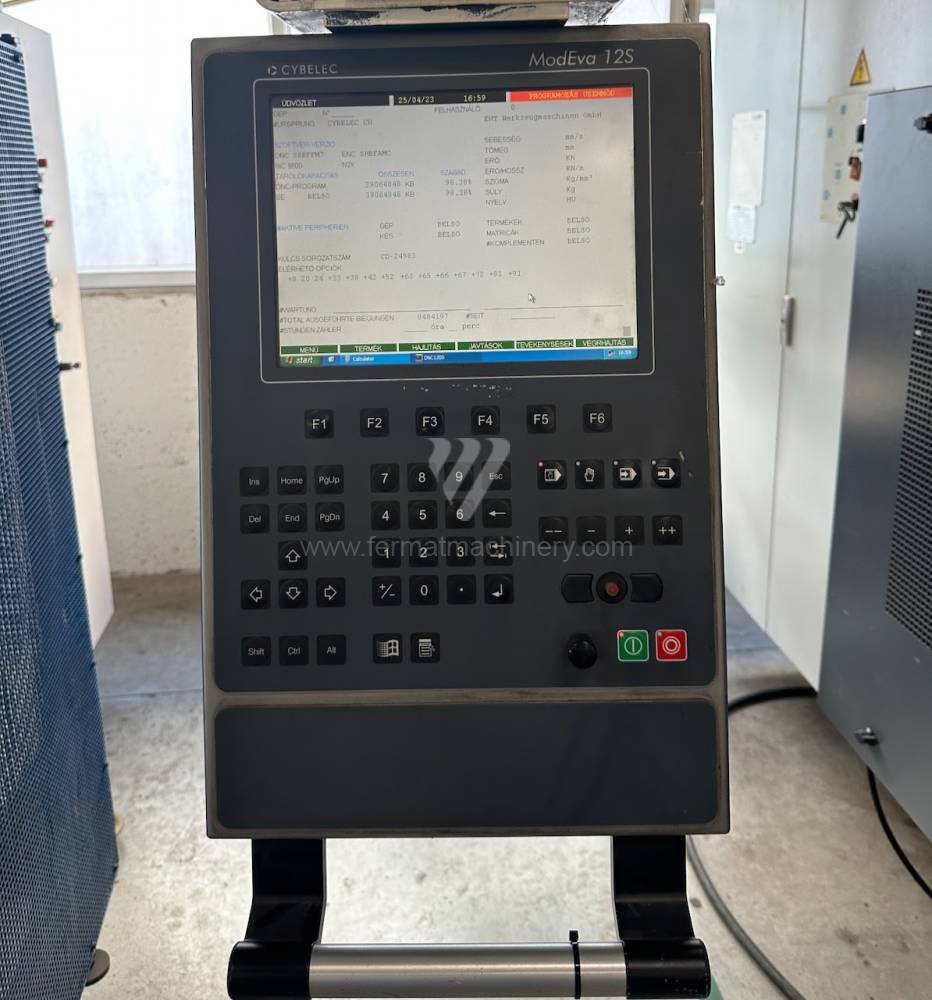
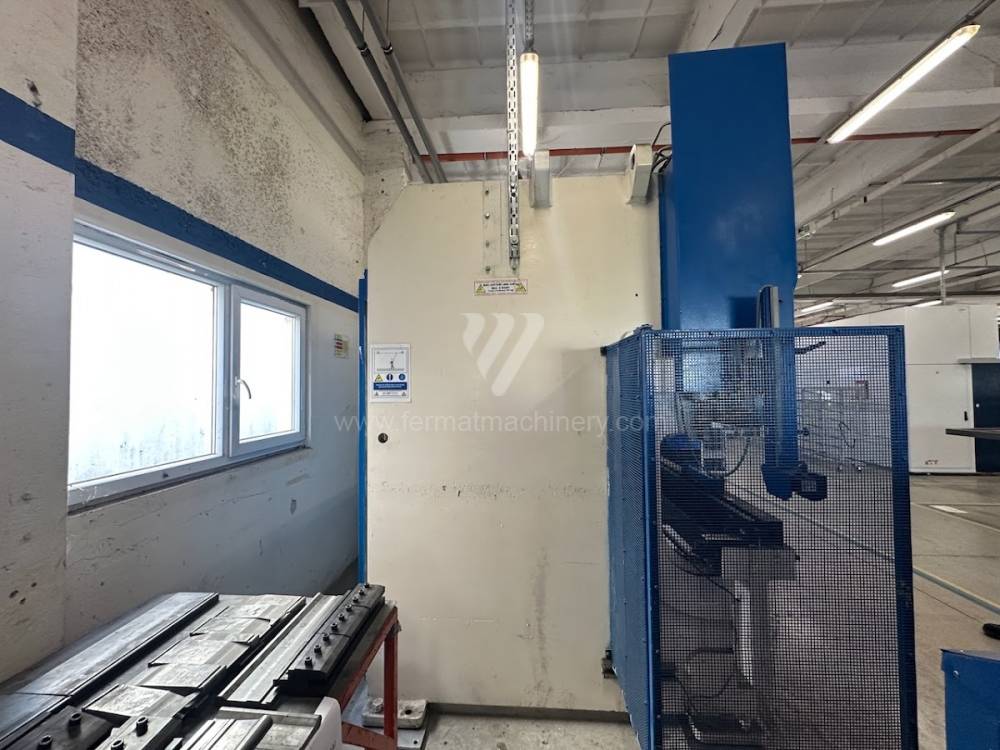
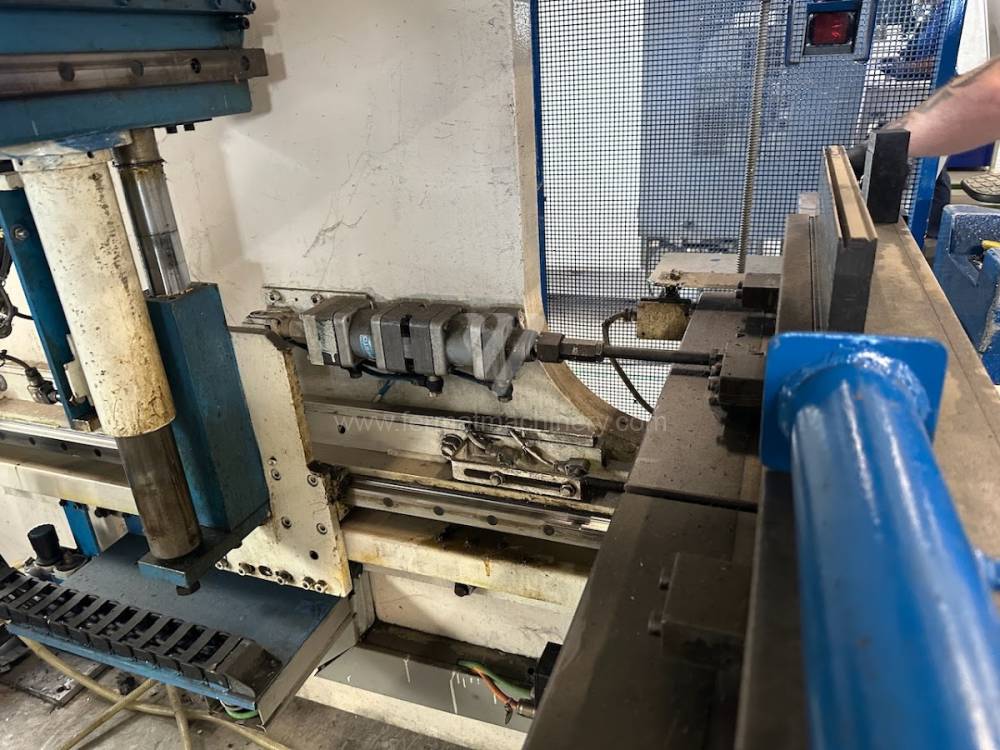
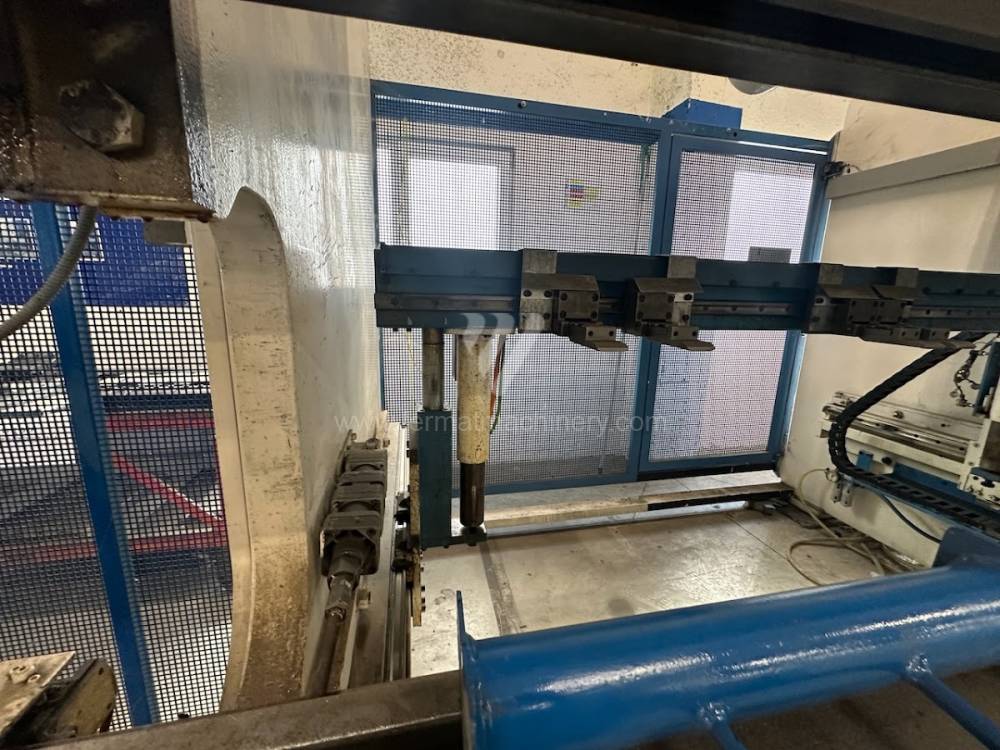
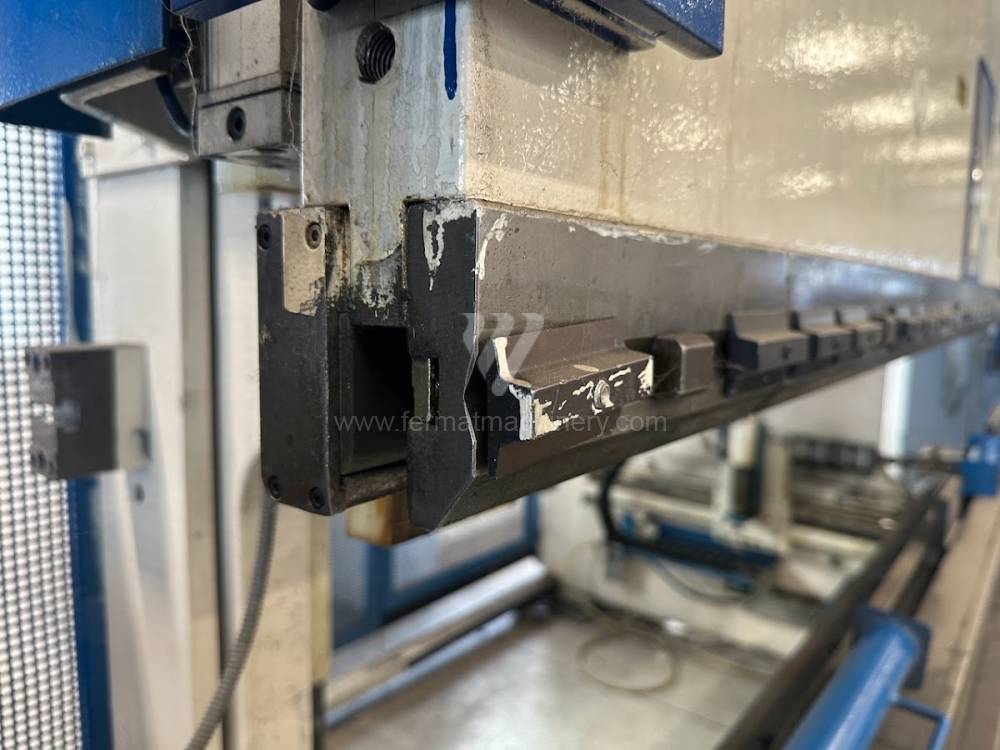
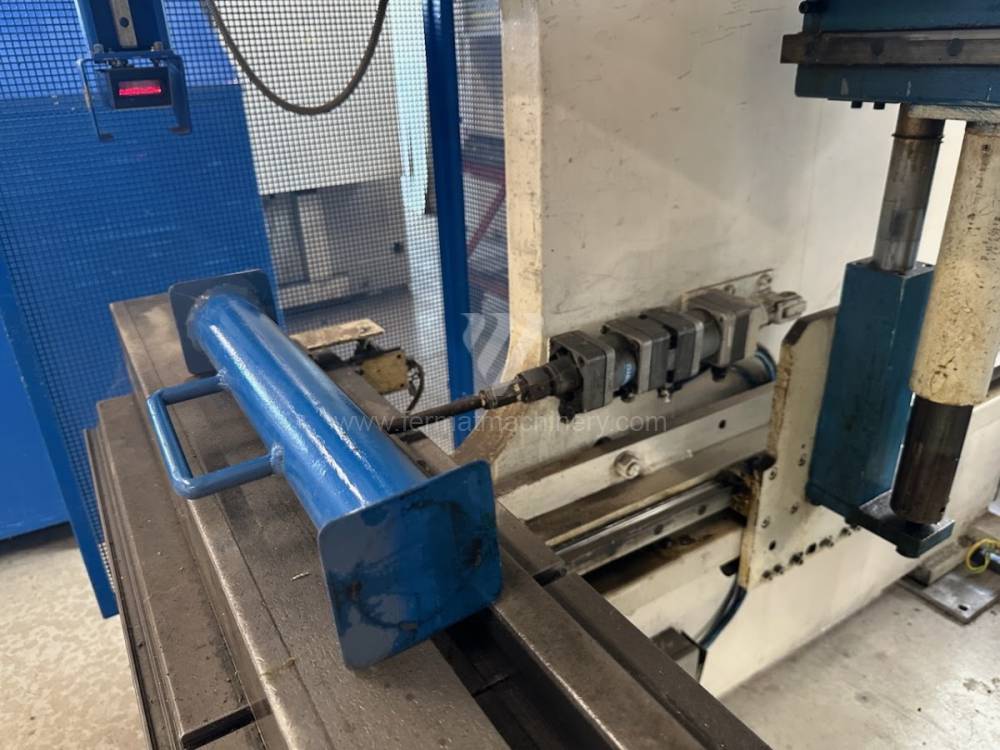
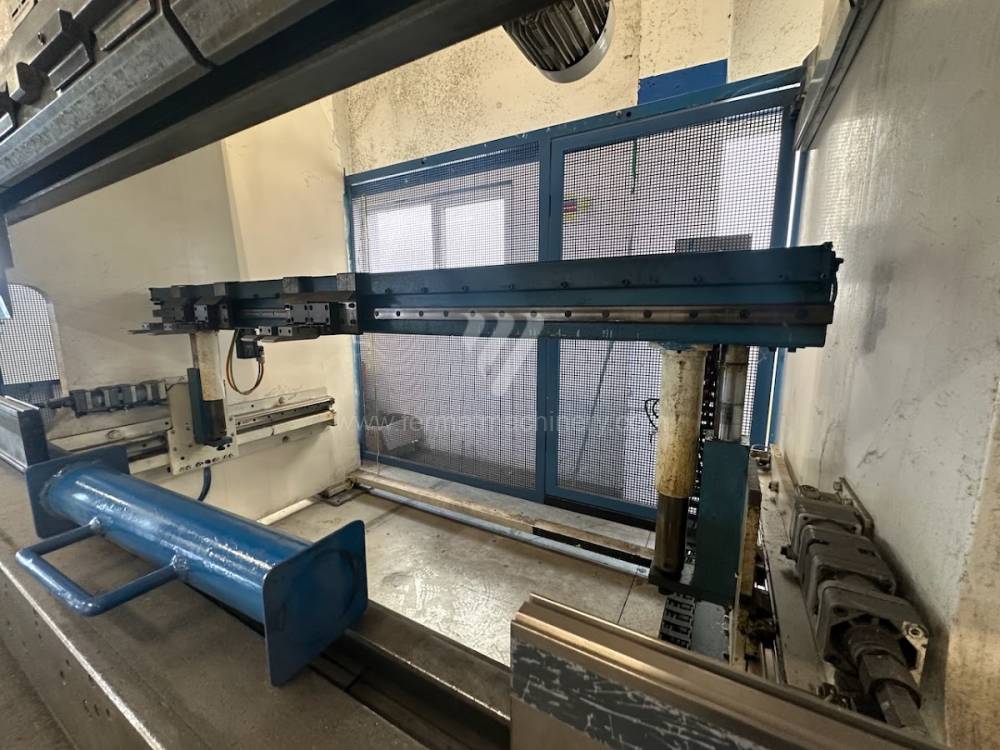
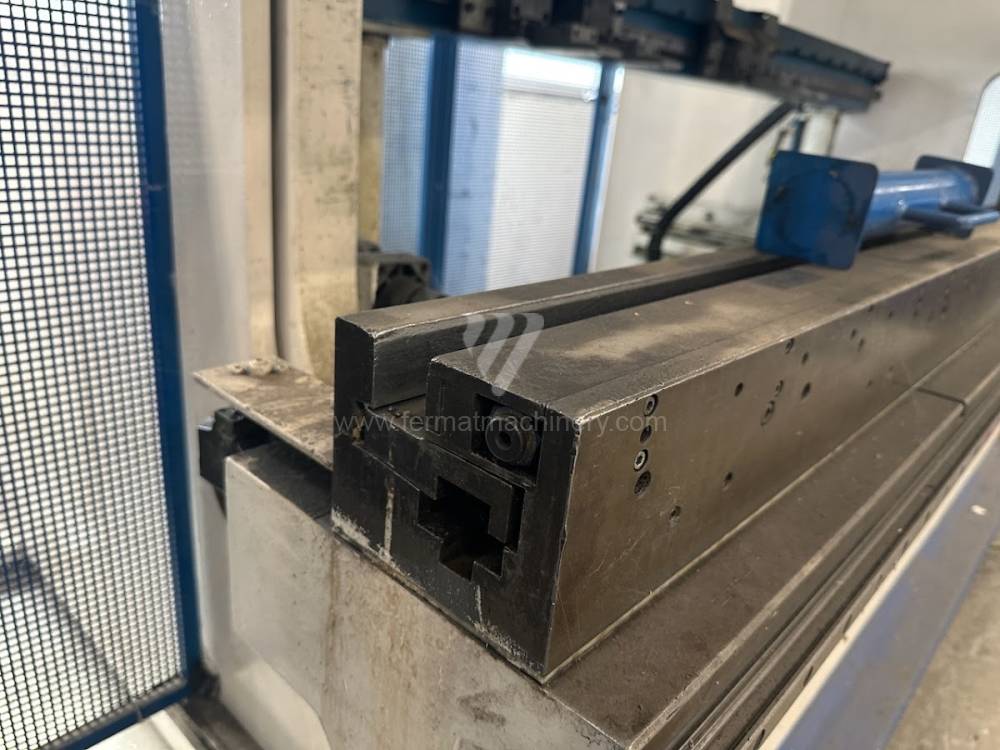
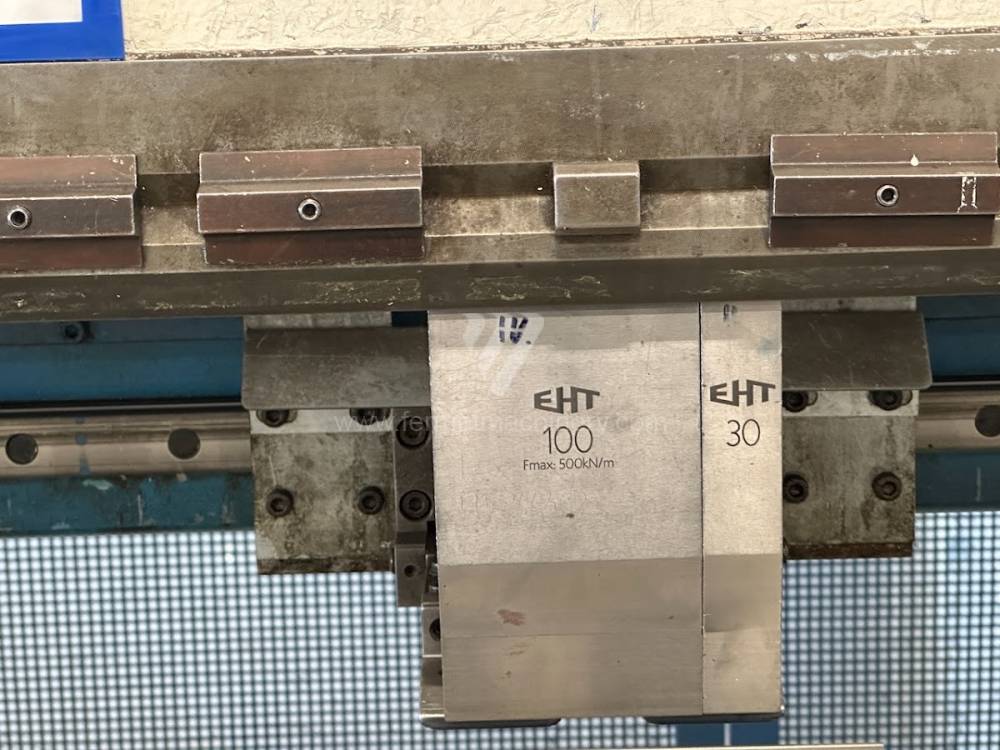
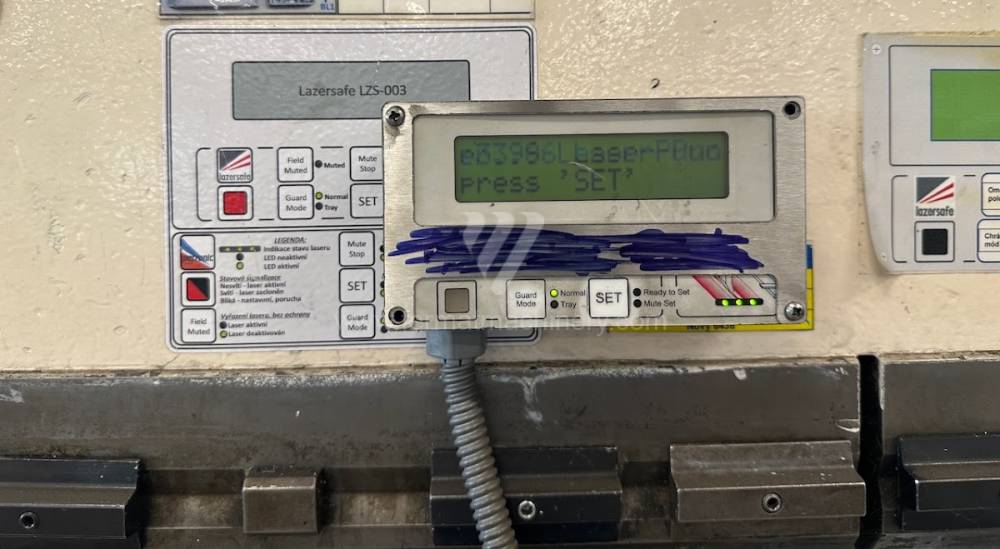
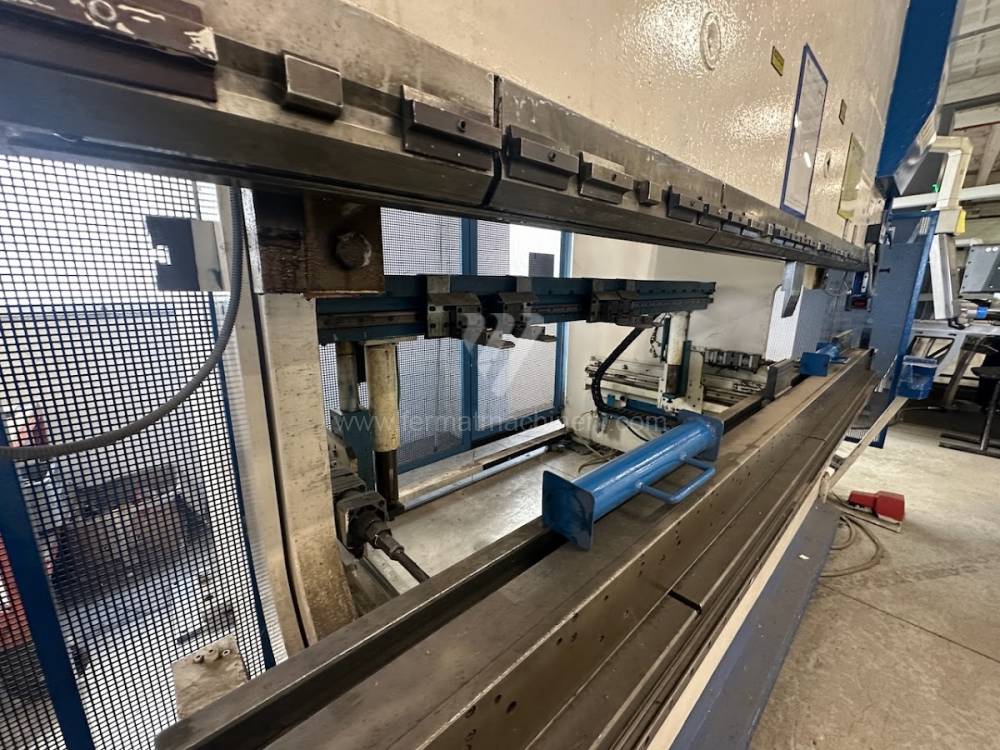
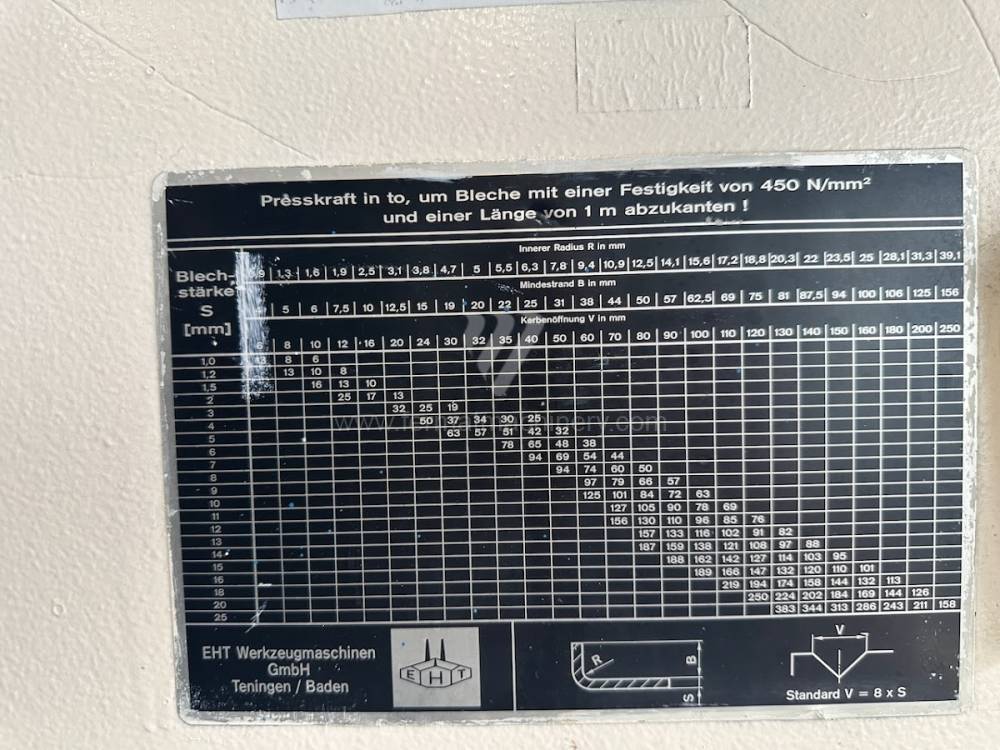
An fabricație:1996
Sistem de control Cybelec: ModEva 12S
Puterea de indoire: 200 t
Lungimea de indoire: 3050 mm
Numărul axelor acționate: 4
Compensația deformării inferioare: da
Tipul acționării presei: Hydraulický
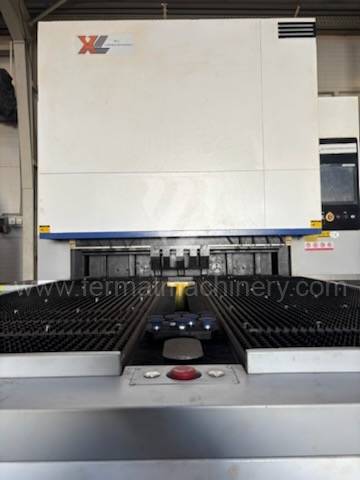
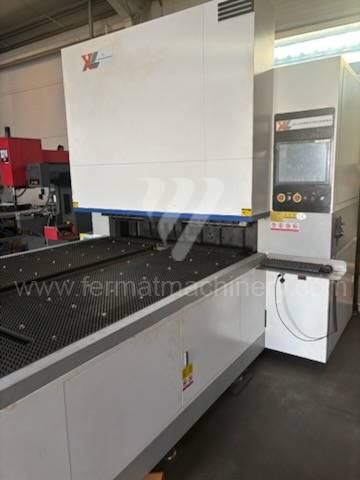
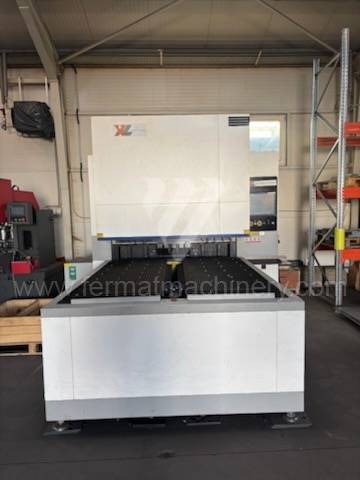
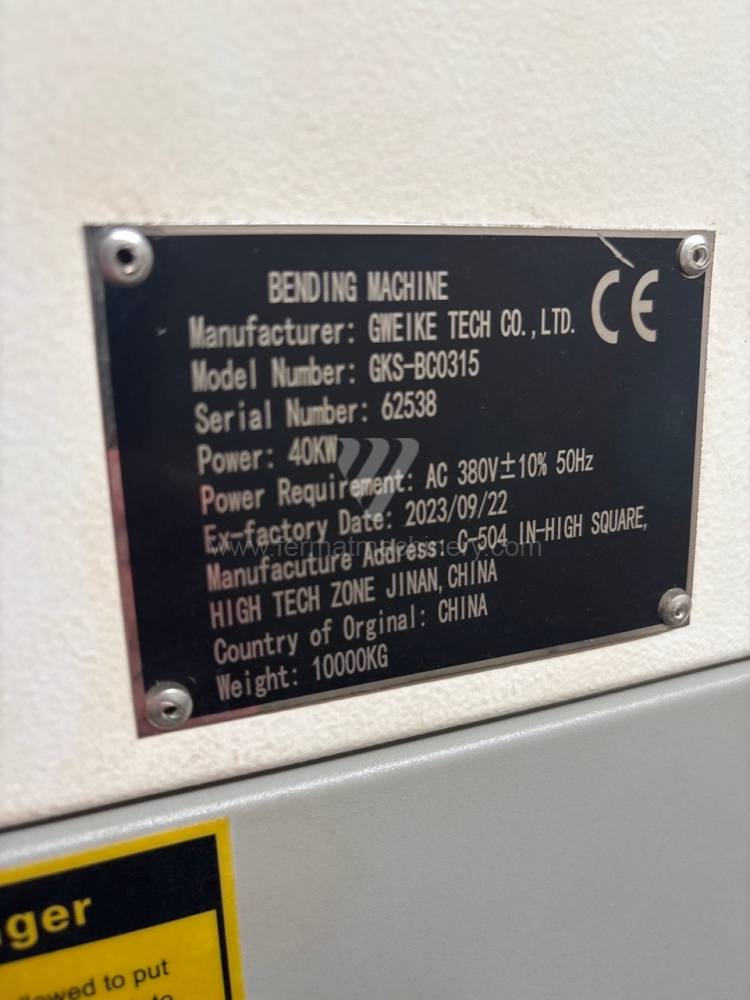
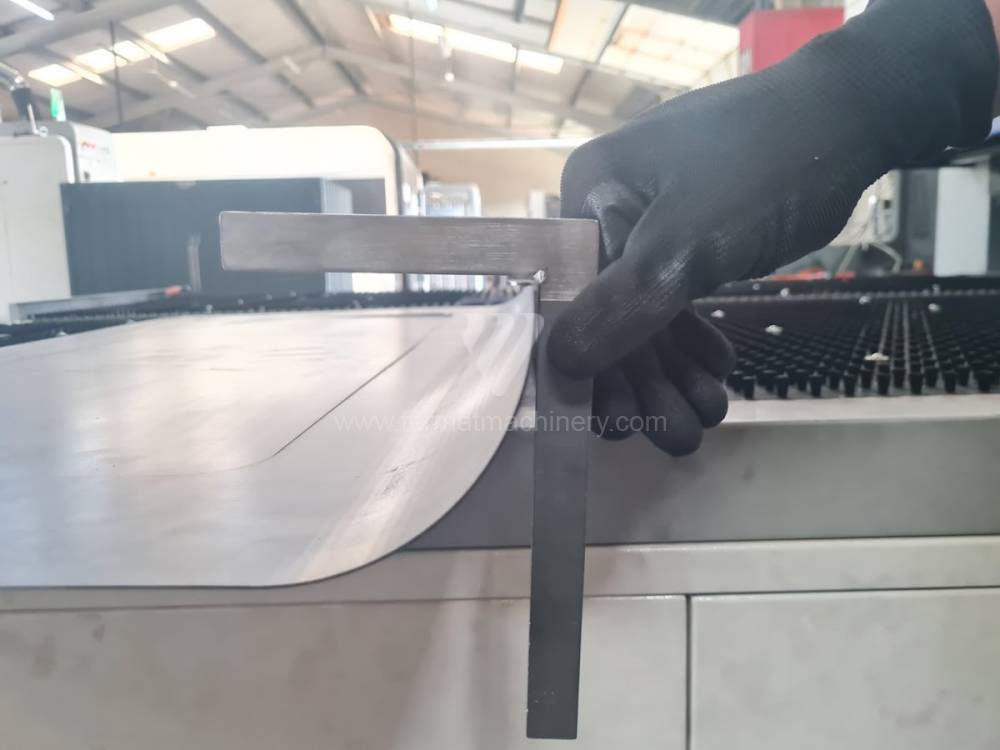
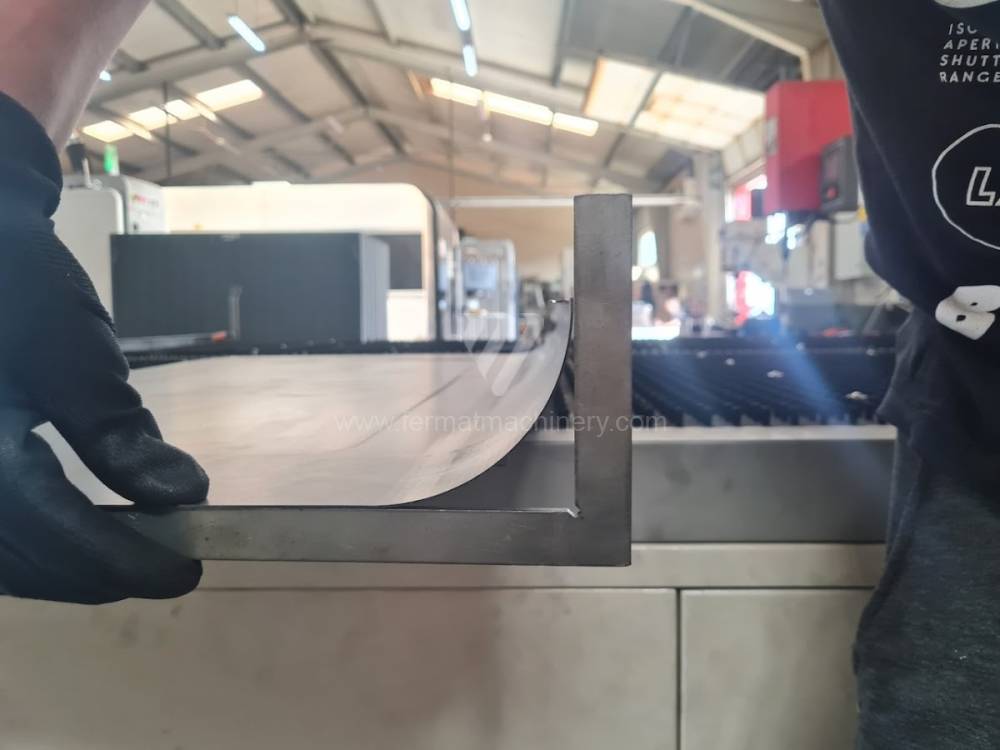
An fabricație:2023
Puterea de indoire: t
Lungimea de indoire: 1500 mm
Numărul axelor acționate:
Compensația deformării inferioare:
Tipul acționării presei:
Geutatea mașinii: 10000 kg
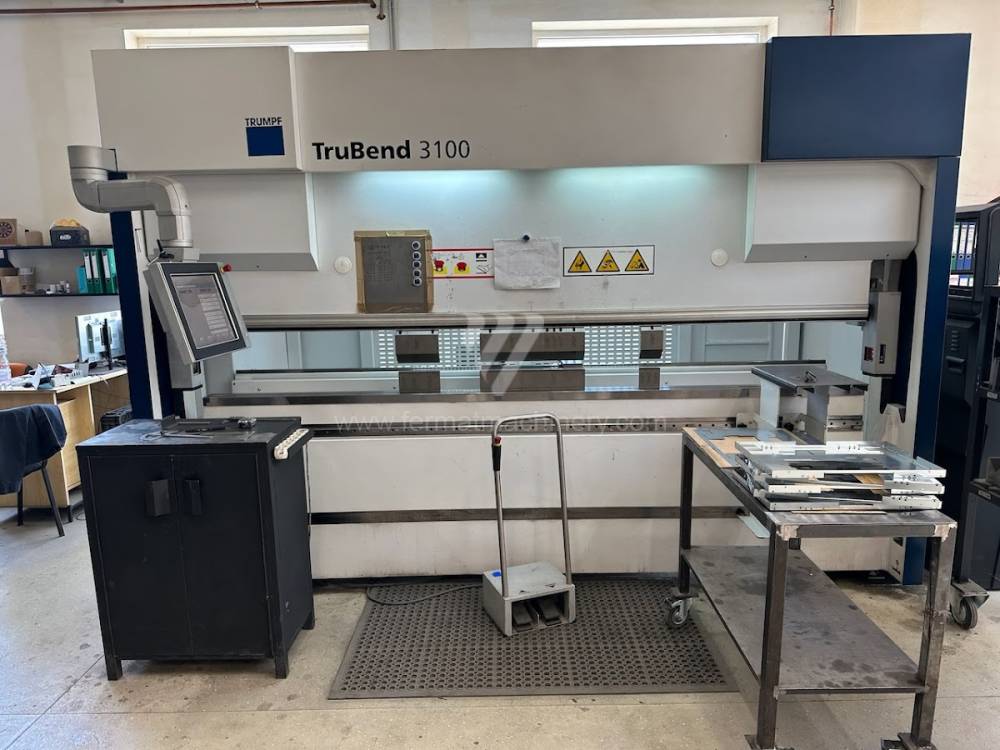
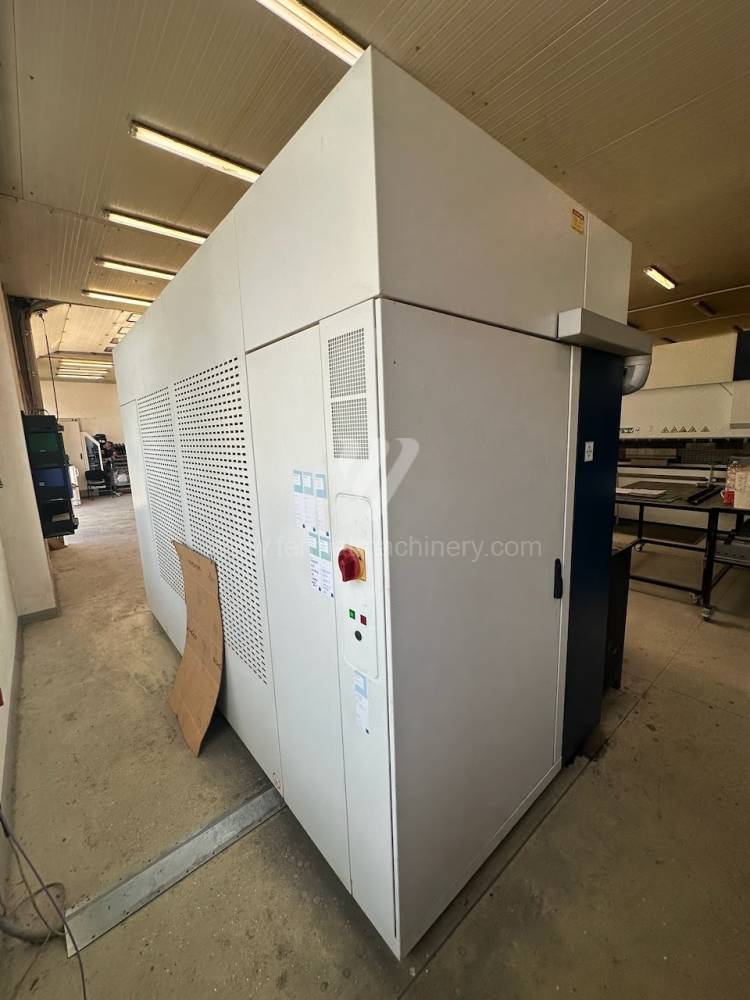
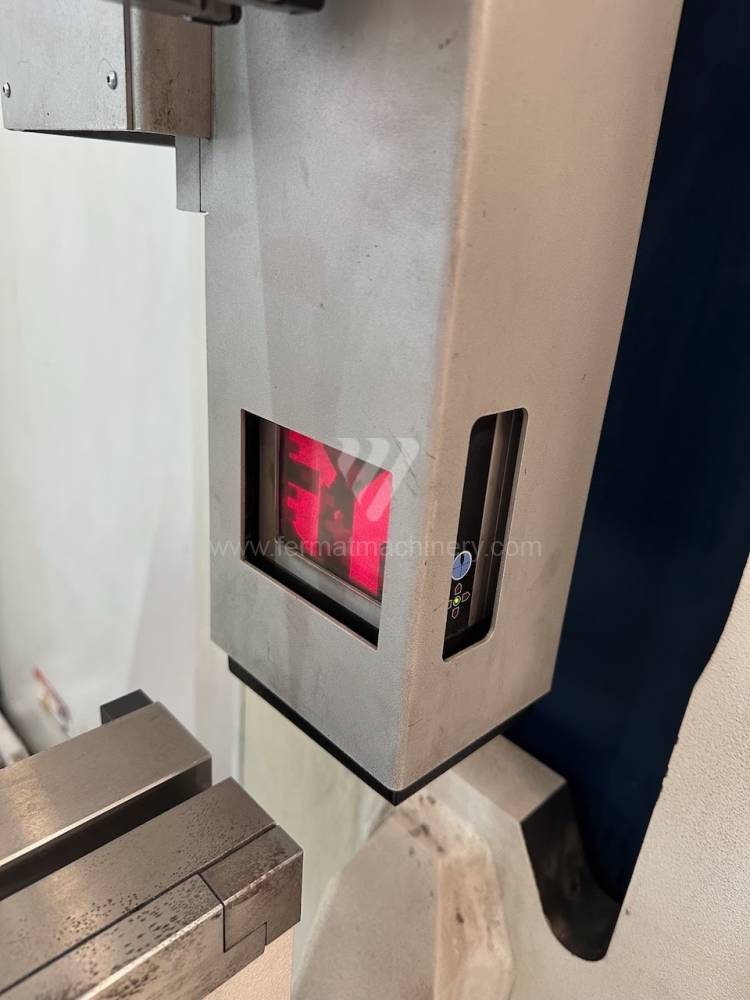
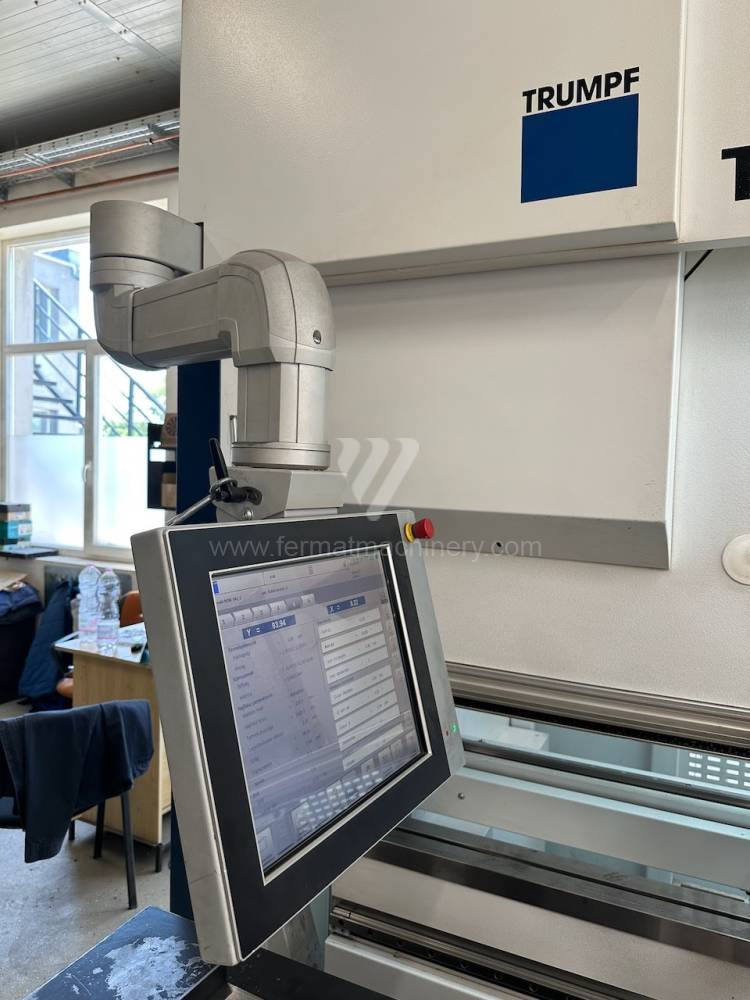
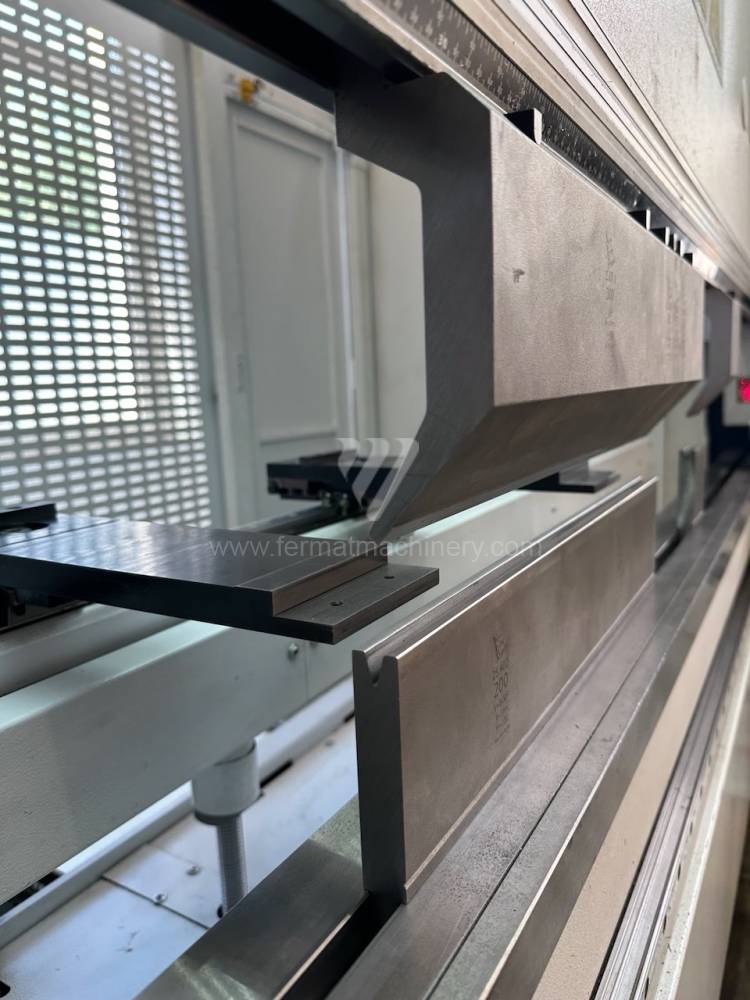
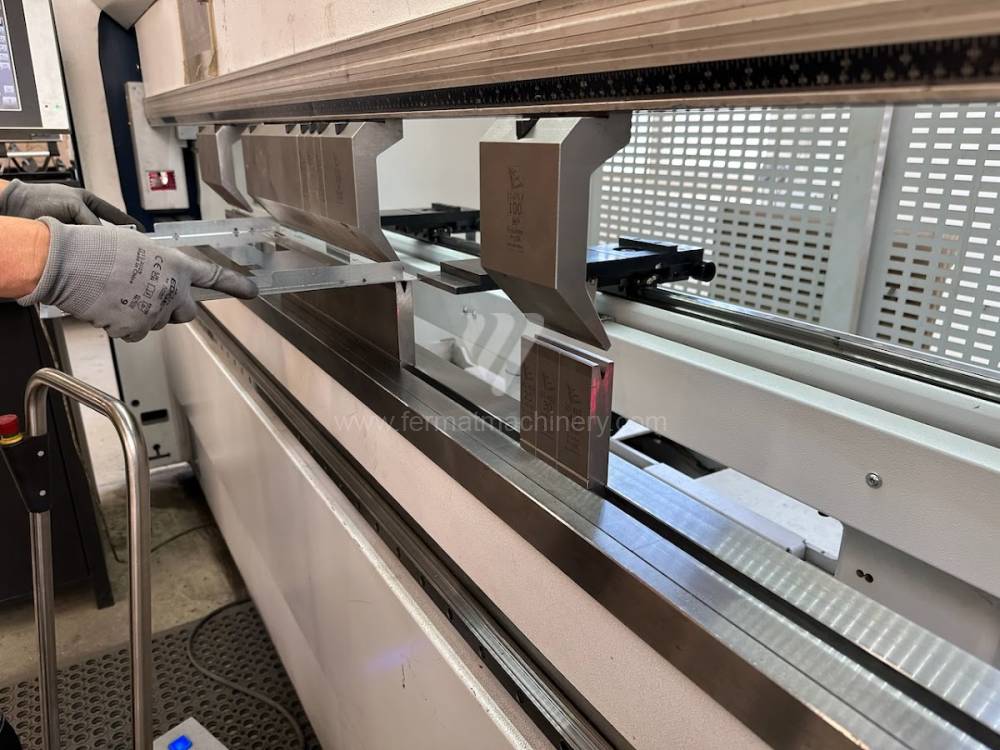
An fabricație:2016
Puterea de indoire: 100 t
Lungimea de indoire: 3060 mm
Numărul axelor acționate: 6
Compensația deformării inferioare: da
Tipul acționării presei: Hydraulický
Pasajul între coloane: 3384 mm
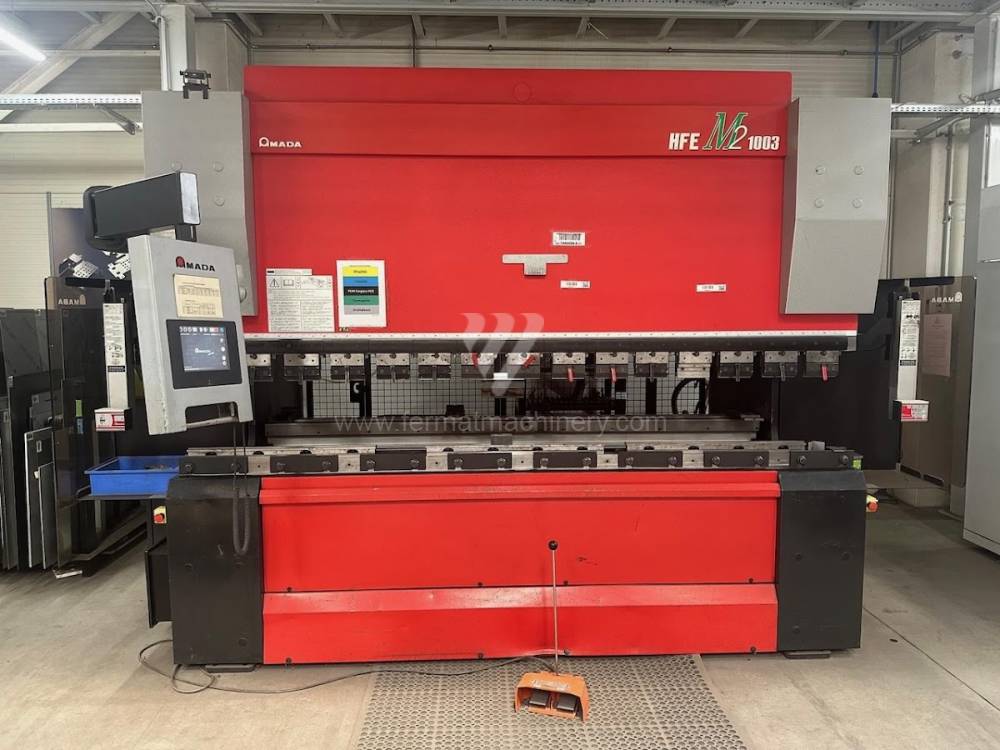
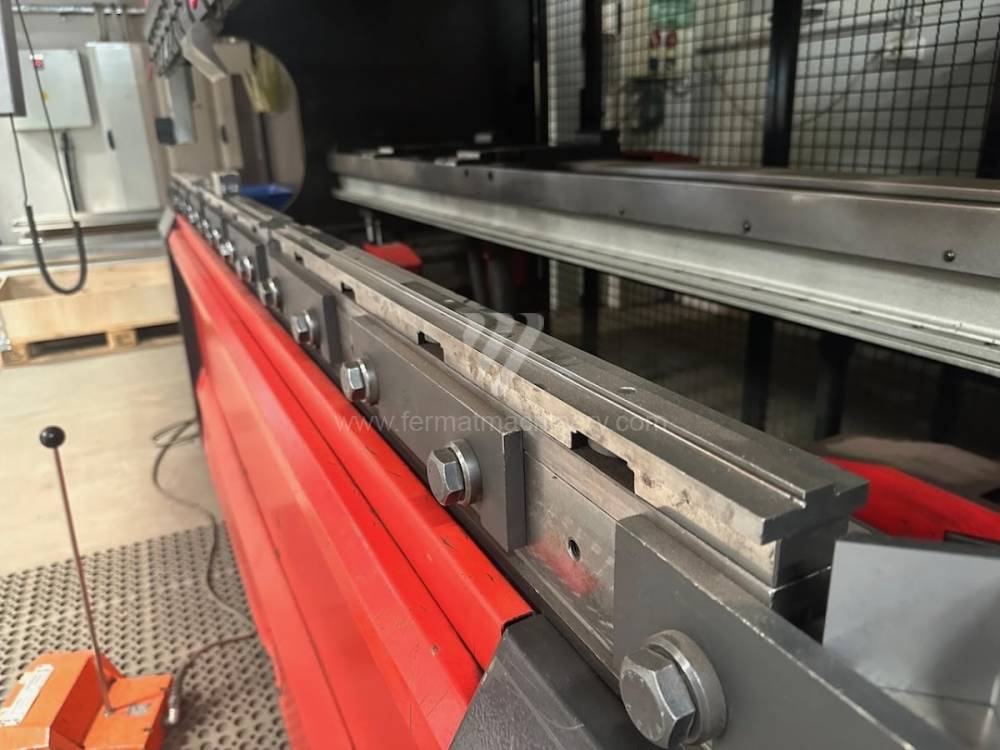
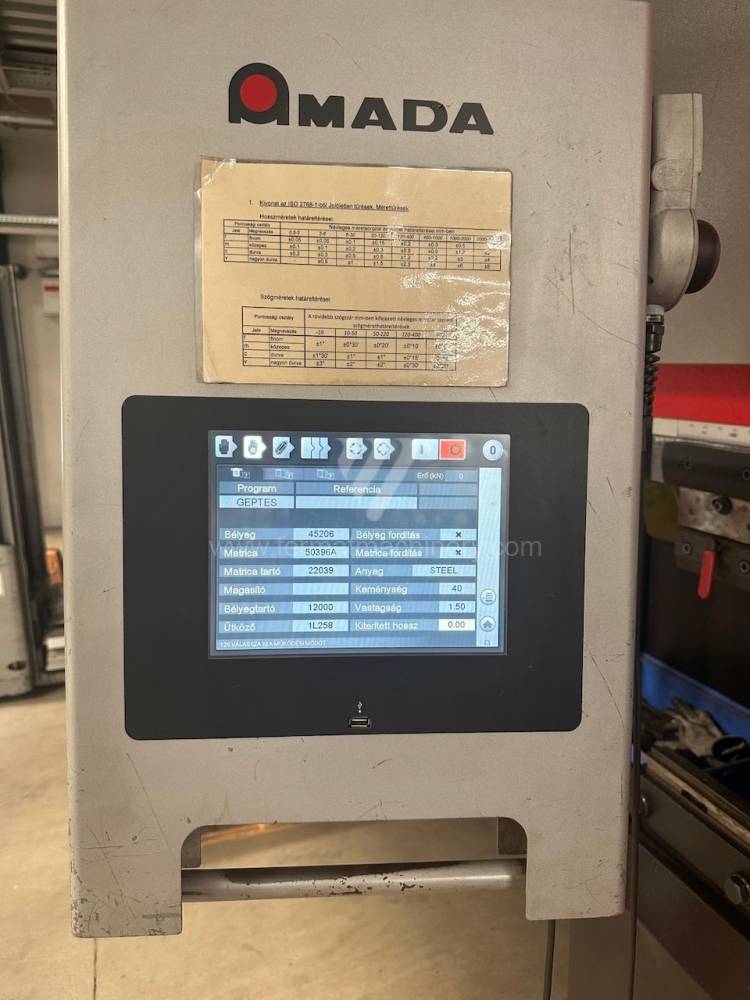
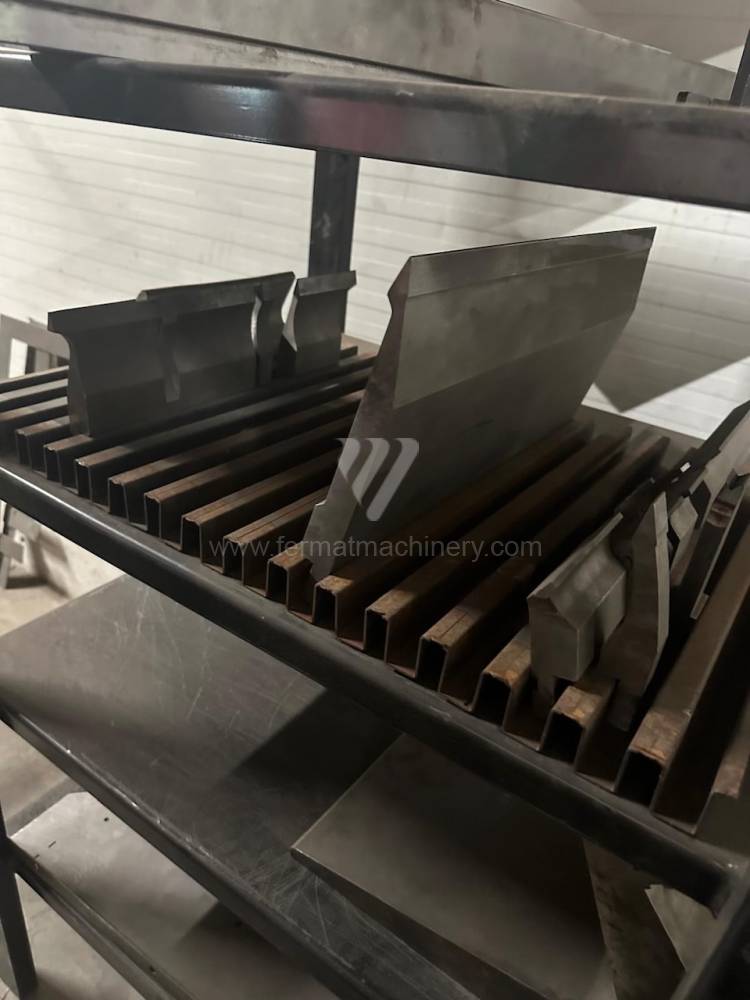
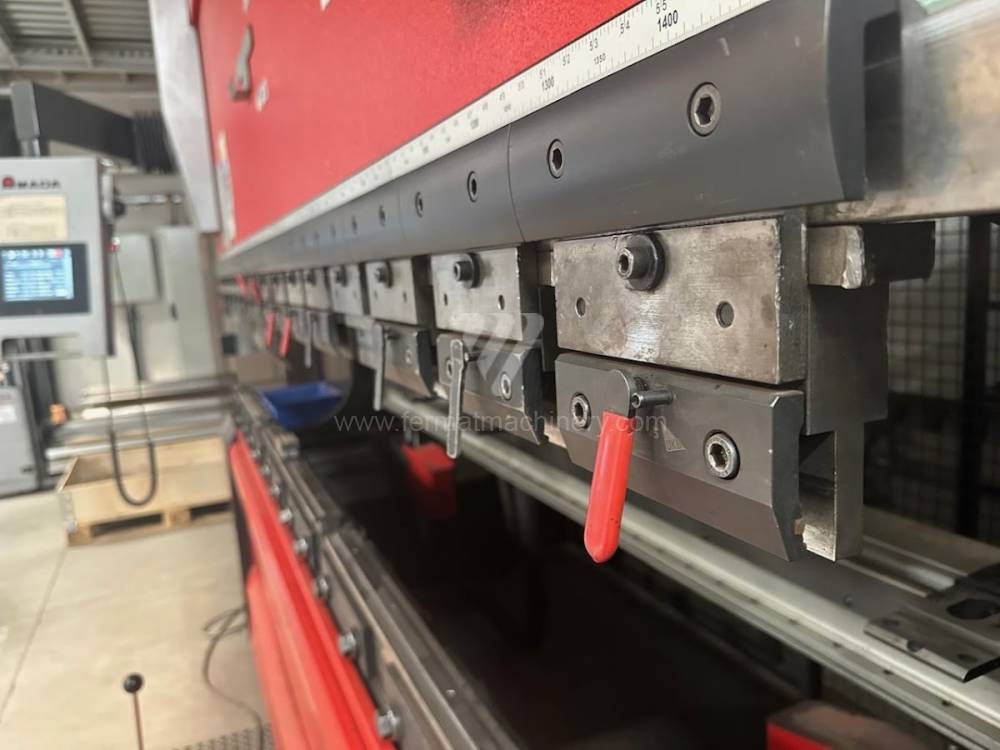
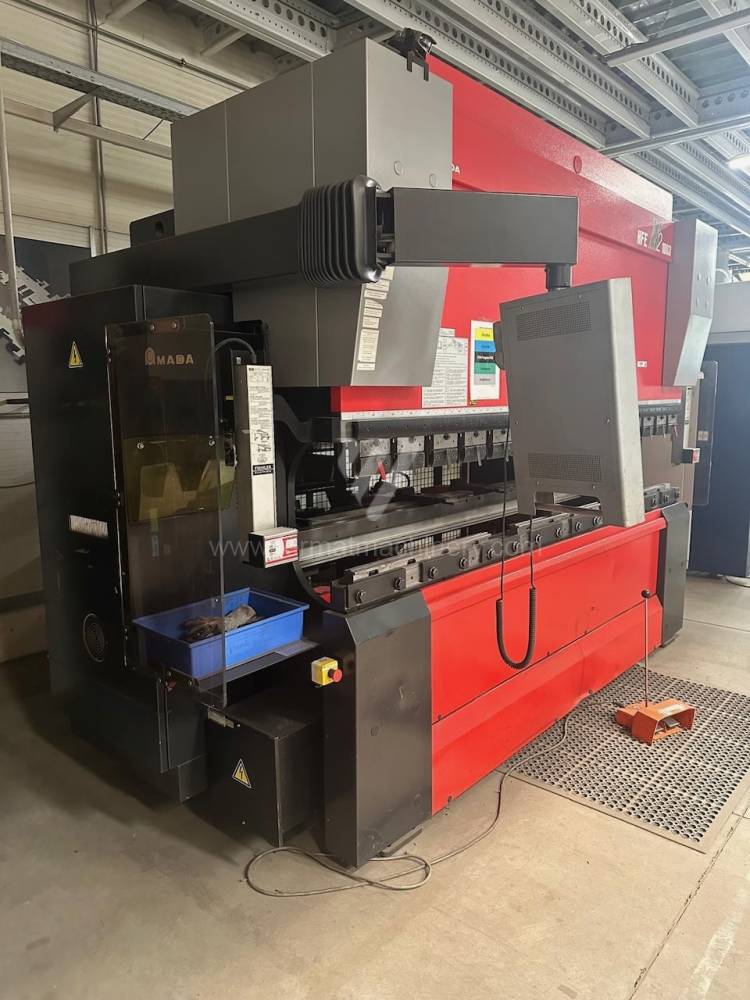
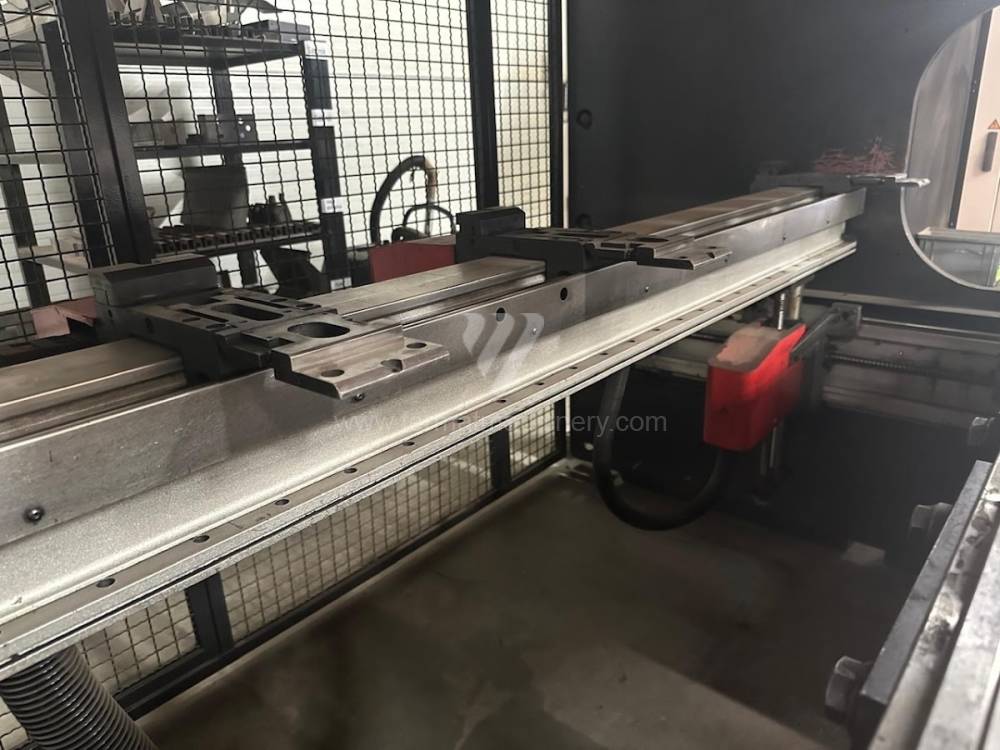
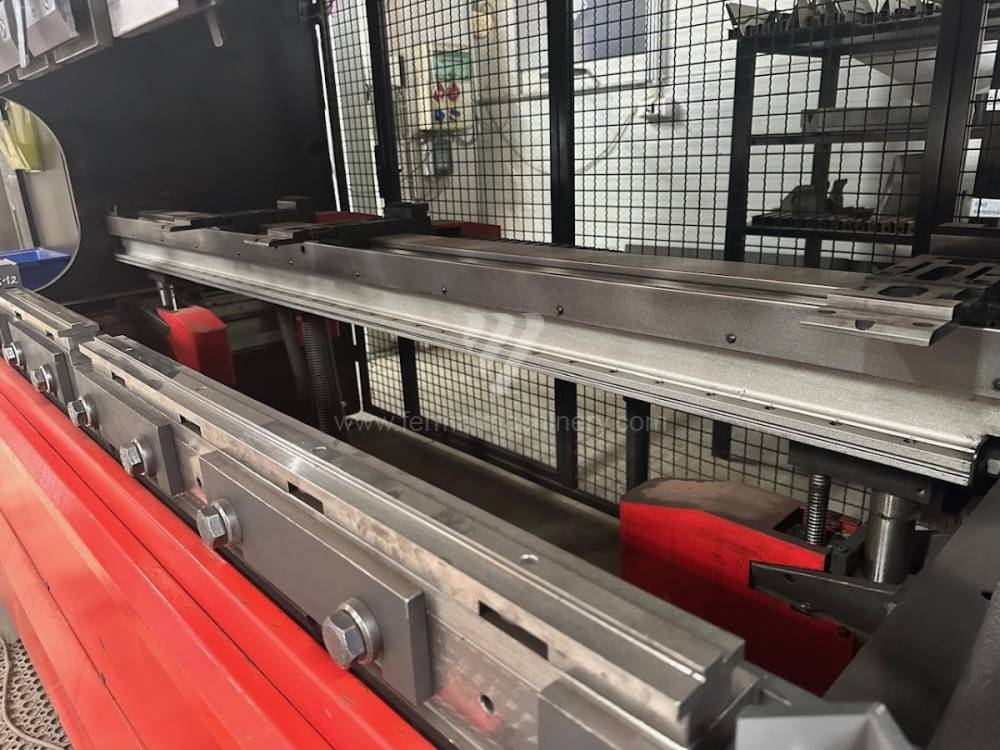
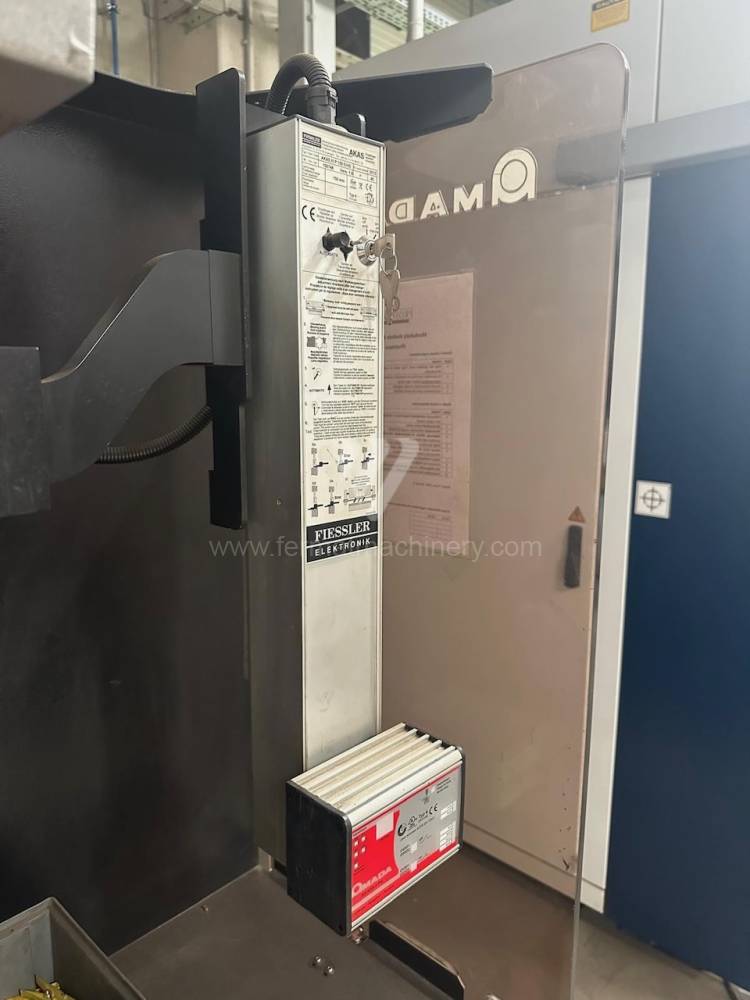
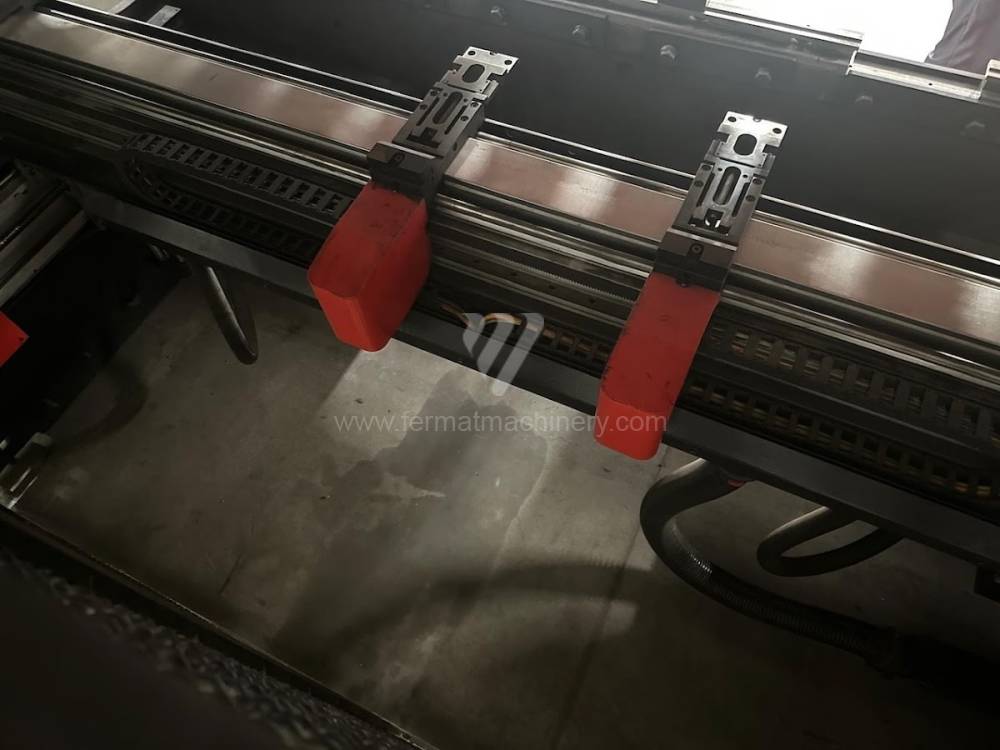
An fabricație:2013
Sistem de control Amada:
Puterea de indoire: 100 t
Lungimea de indoire: 3110 mm
Numărul axelor acționate: 8
Compensația deformării inferioare: da
Tipul acționării presei: Hydraulický
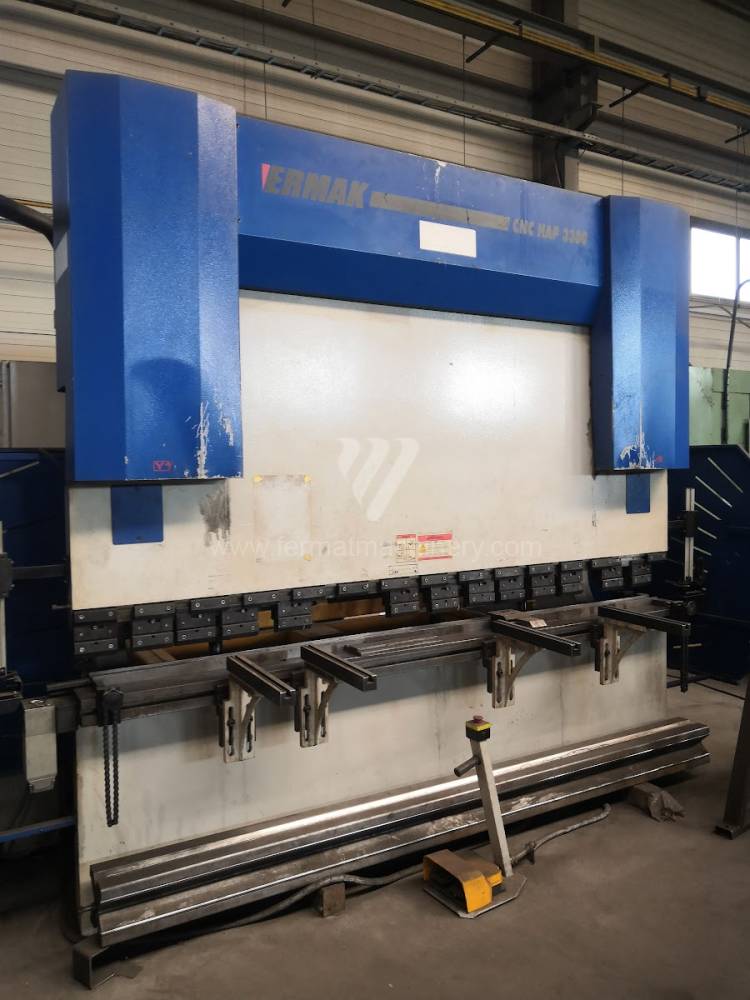

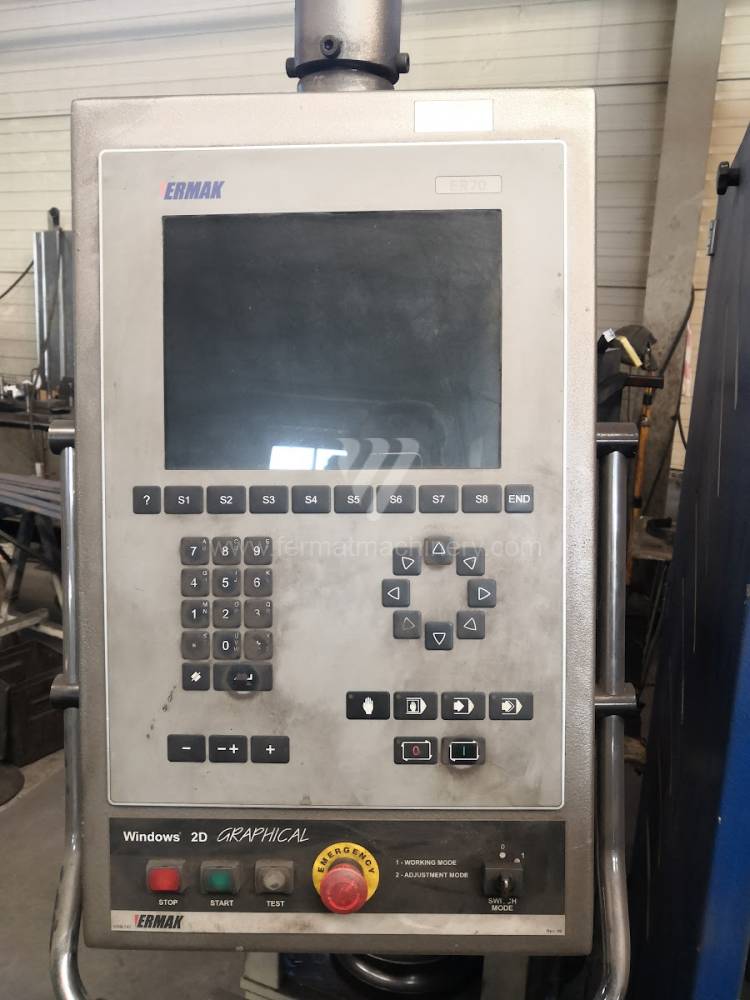
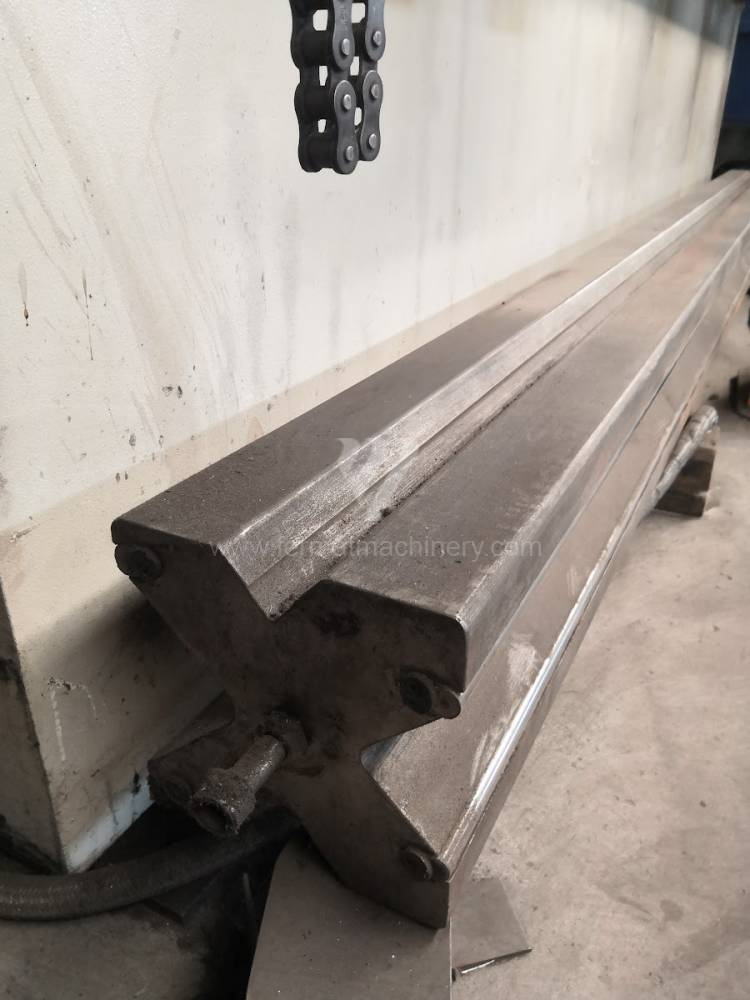
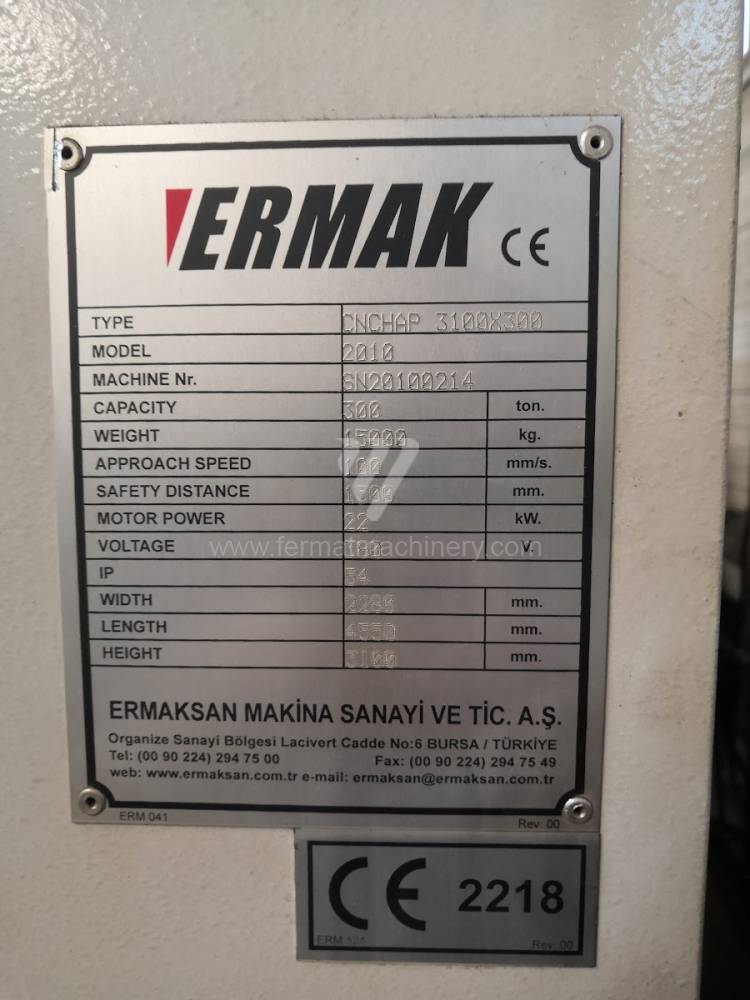
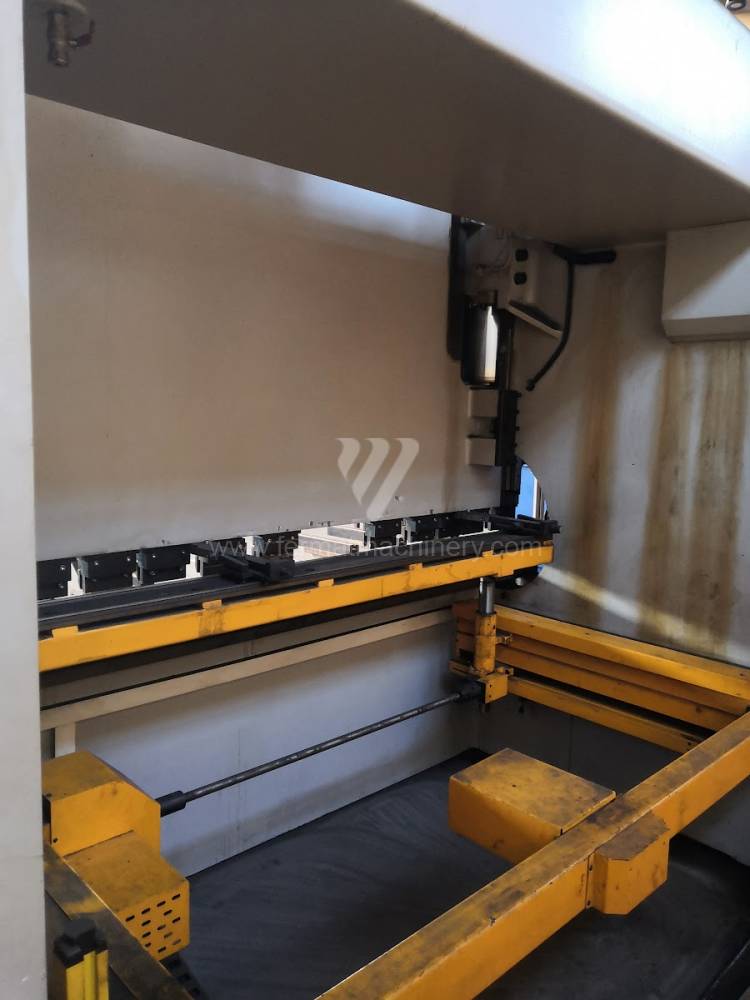
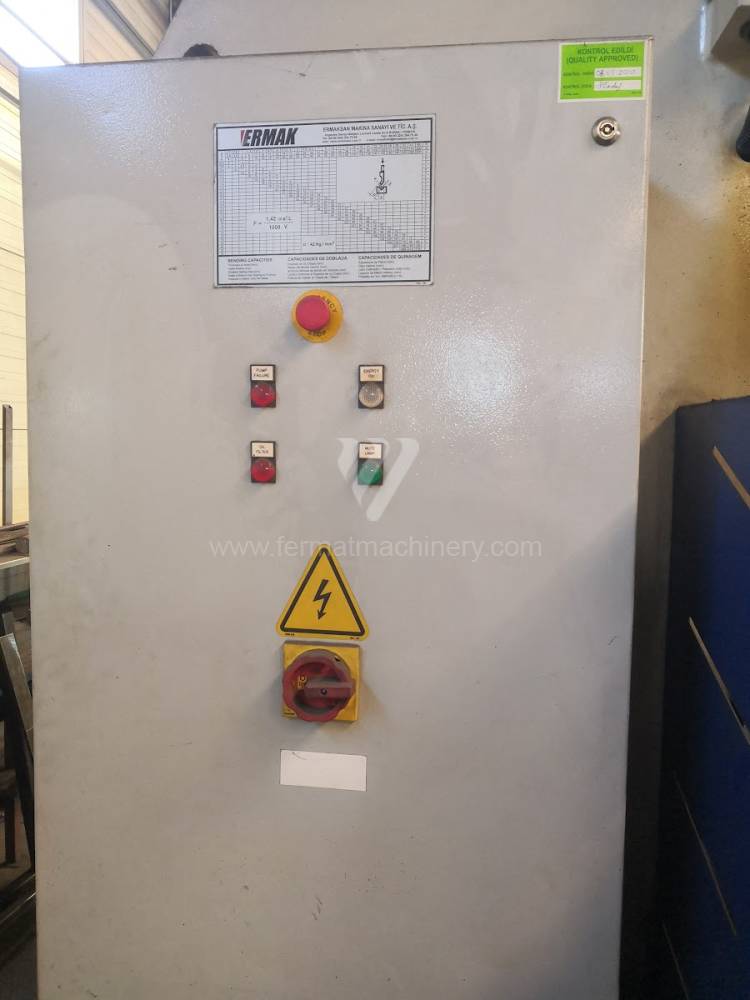
An fabricație:2010
Sistem de control Ermaksan:
Puterea de indoire: 300 t
Lungimea de indoire: 3100 mm
Numărul axelor acționate: 4
Compensația deformării inferioare: nu
Tipul acționării presei: Hydraulický
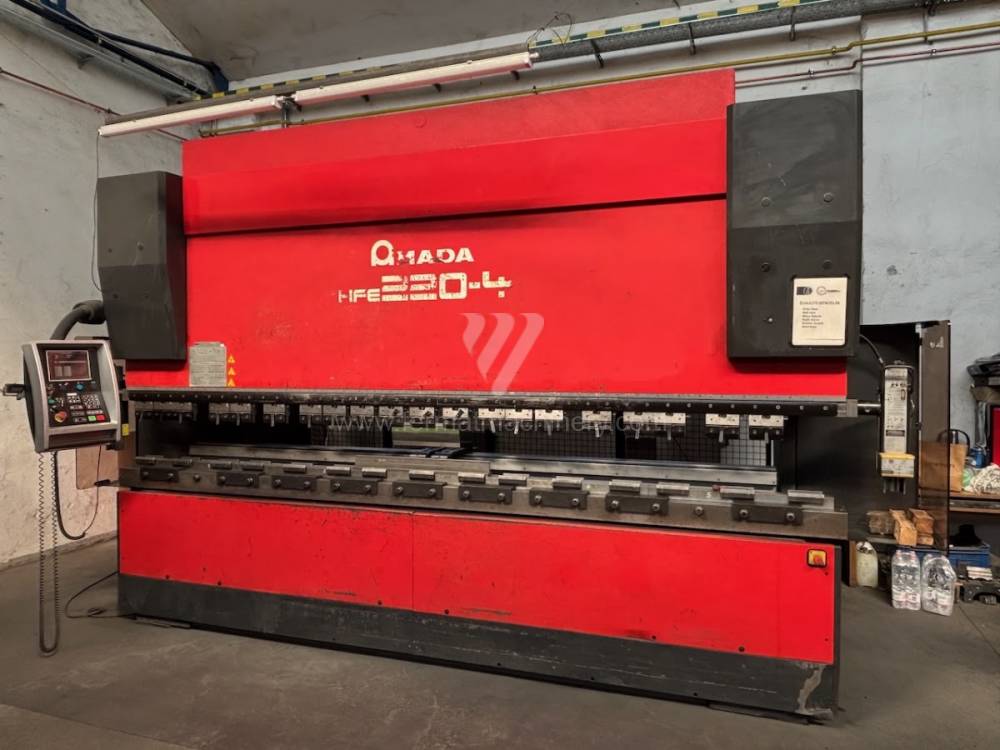
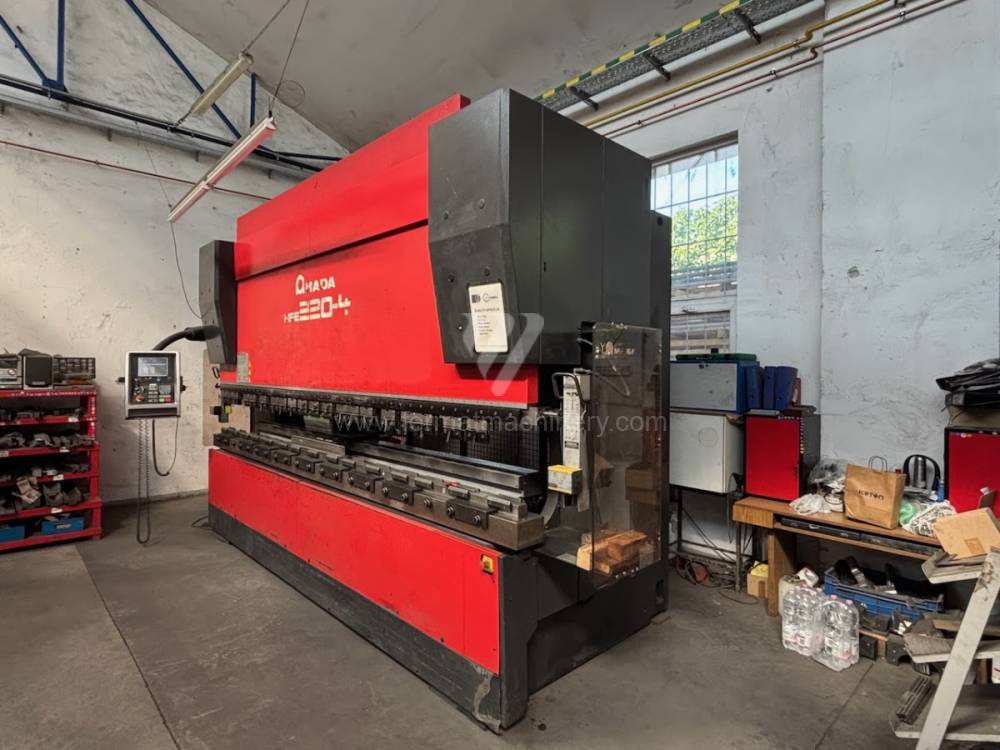
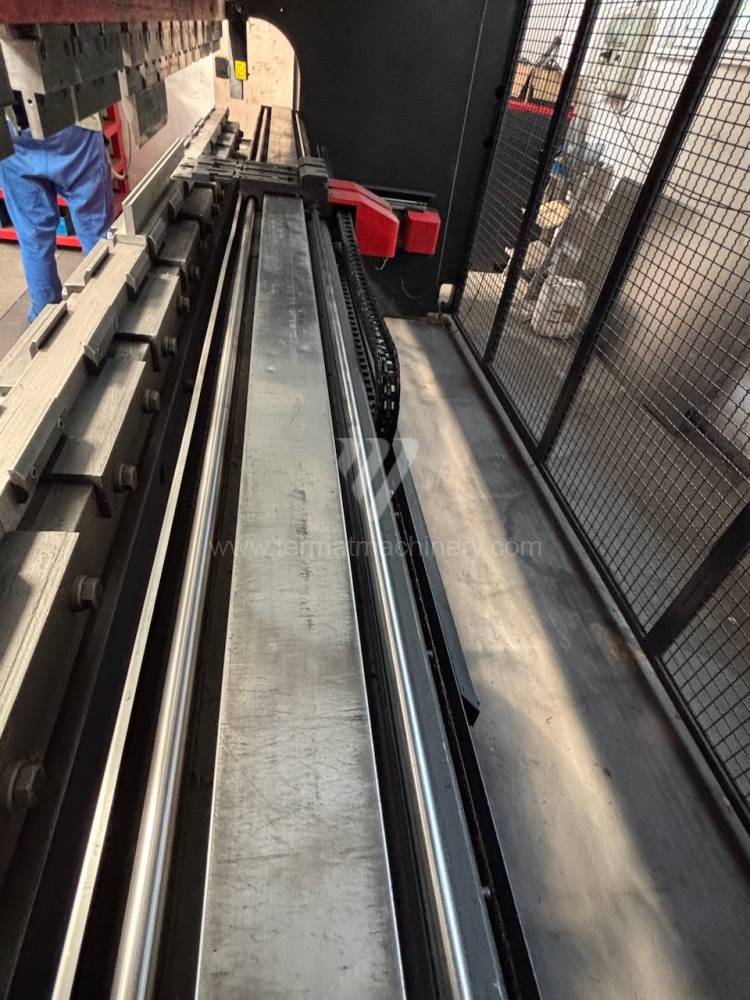
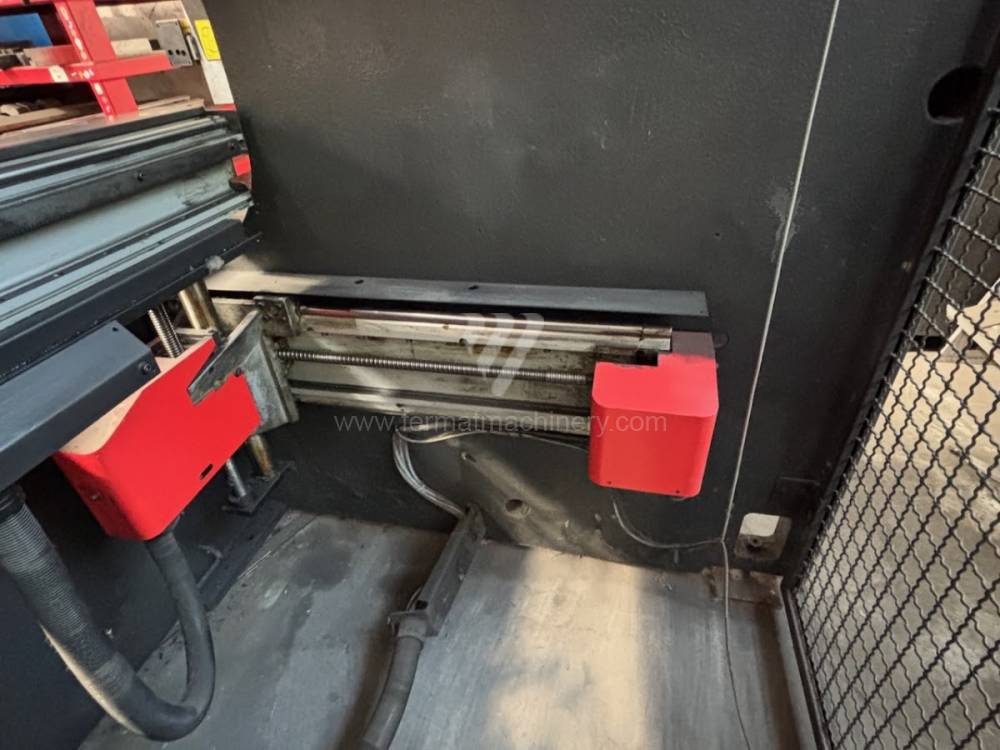
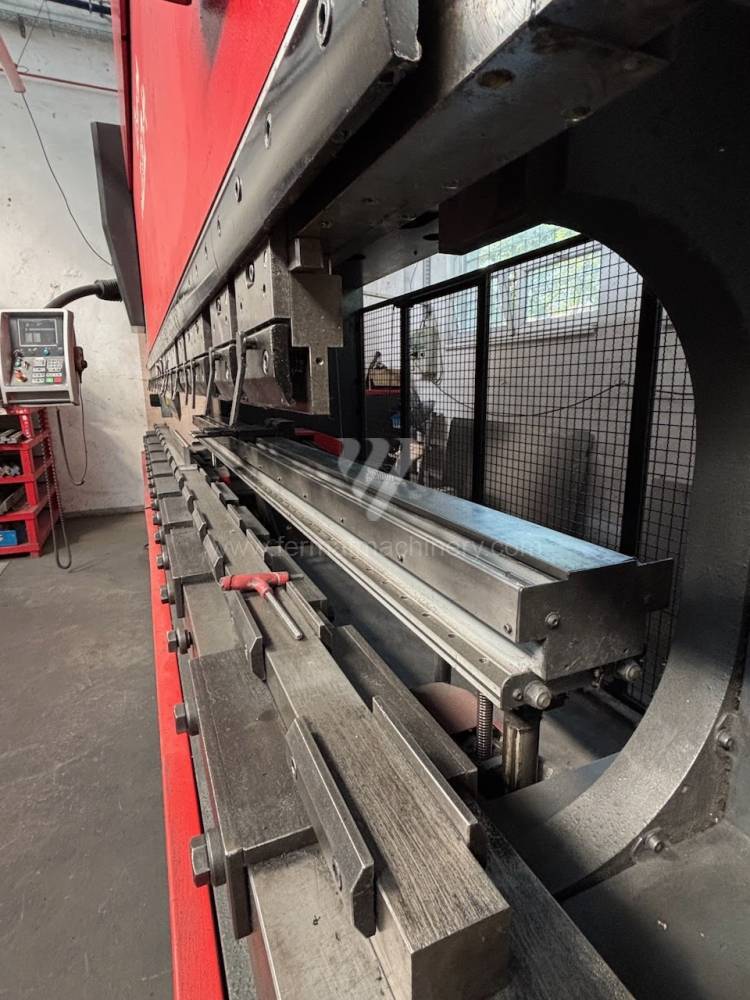
An fabricație:2008
Sistem de control Amada:
Puterea de indoire: 220 t
Lungimea de indoire: 4000 mm
Numărul axelor acționate: 6
Compensația deformării inferioare: da
Tipul acționării presei: Hydraulický
Forming machines used for processing (bending) of sheet metal. These machines are currently replaced by bending machines, because they are hydraulically driven and can work with greater pressures and lengths of bent parts.
During this kind of material processing , there is no waste and semi-finished products are used. It is also possible to bend very small workpieces of very small radius.
Different types of punches and dies are used here as tools. These tools can be of different shapes and lengths. To clamp these tools mechanical or hydraulic clamping is used. Laser inspection can be used for maximum tool accuracy. Mechanical systems are used to drive the press, with an electric motor driving a system of pulleys and belts. Or a hydraulic one, which drives the hydraulic unit via an electric motor and the latter moves the ram through the pressure of the cylinders.
The rear stop is very important for a press brake. It ensures the correct positioning of the workpiece in the machine. Semi finished product is pressed against the thumb, which is on the stop and ensures the correct position with respect to the tool. The rear stop is controlled by a CNC system and it moves to precise positions according to the program. Machine can operate in up to 6 axes.
X - along which the stop moves forward and backward
Z - along which the stop moves to the left or to right
R - along which the stop moves up and down
Another important function of press brakes is cambering. It is a process when the the long parts are bended the resistance of the material to the upper tool, elastic deformation of the part of the ram with the punch occurs. This can be prevented by underlying the matrix in the central part, grooves on the edges of the working table or automatic system.
Today, press brakes are controlled by a computer systems. Based on the entered values (material, tools, length, etc…) calculates the production process, the movement of the stops or the bending force. Afterwards the machine can work in three following modes .
Press brakes are designed with different types of drivers such as machines with manual control, mechanical or hydraulic driver. Each has its advantages and disadvantages. Furthermore, it is possible to divide press brakes according to their construction into segmental, tandem and combined.
Most popular manufacturers are TRUMPF, DURMA, SAFAN DARLEY, BYSTRONIC, GASPARINI, Haco, Beyeler, Promecam, Hämmerle.
Currently, the most widely used and manufactured are hydraulic press brakes, which are CNC controlled.Top machines are from following manufacturers: Trumpf, Amada, Bystronic. These manufacturers use either their own CNC system for control or universal ones such as Delem, Cybelec, ESA.. These machines achieve a high level of automation of the operating cycles and therefore the maximum use of their capabilities. Of course press brakes from these top manufacturers are very expensive to purchase.